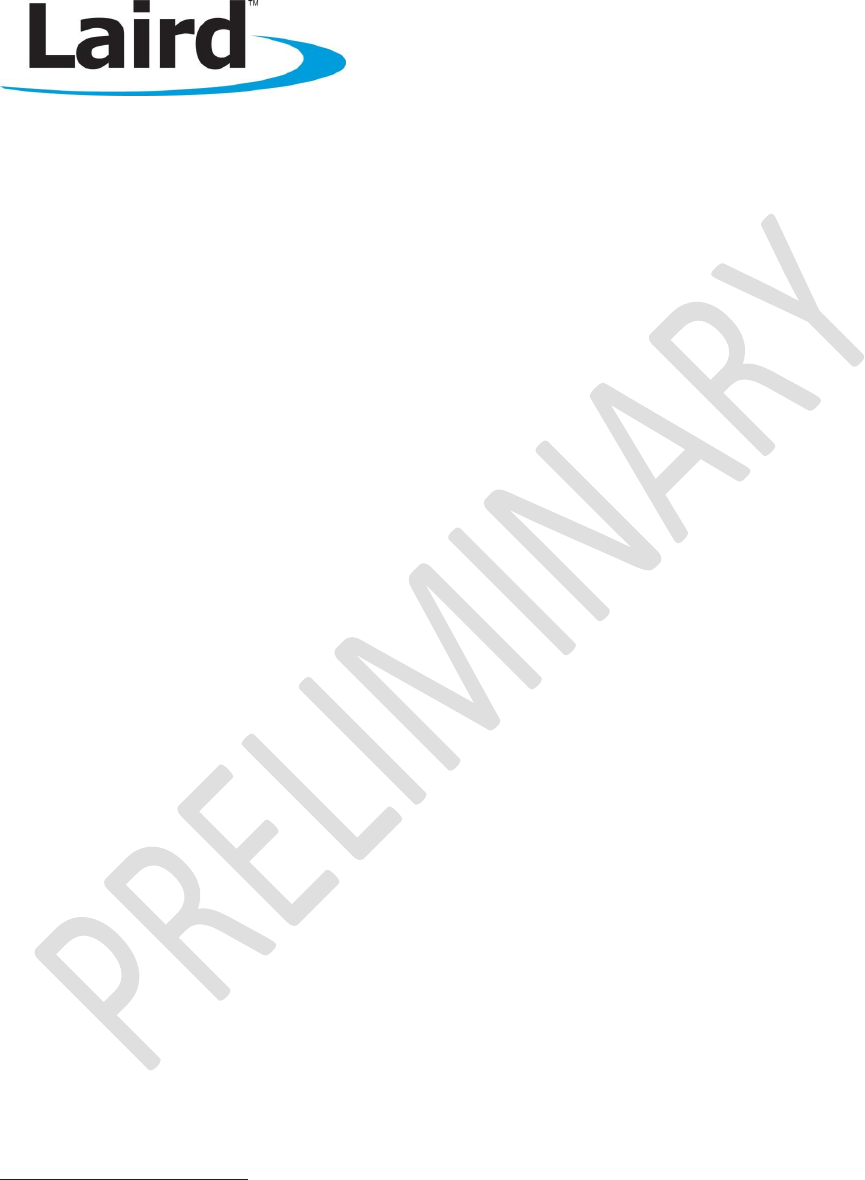Laird Connectivity BT700 Class 1 Bluetooth Data Module User Manual BT730 series
Laird Technologies Class 1 Bluetooth Data Module BT730 series
Contents
- 1. user manual (BT730 series)
- 2. user manual (BT740 series)
user manual (BT730 series)
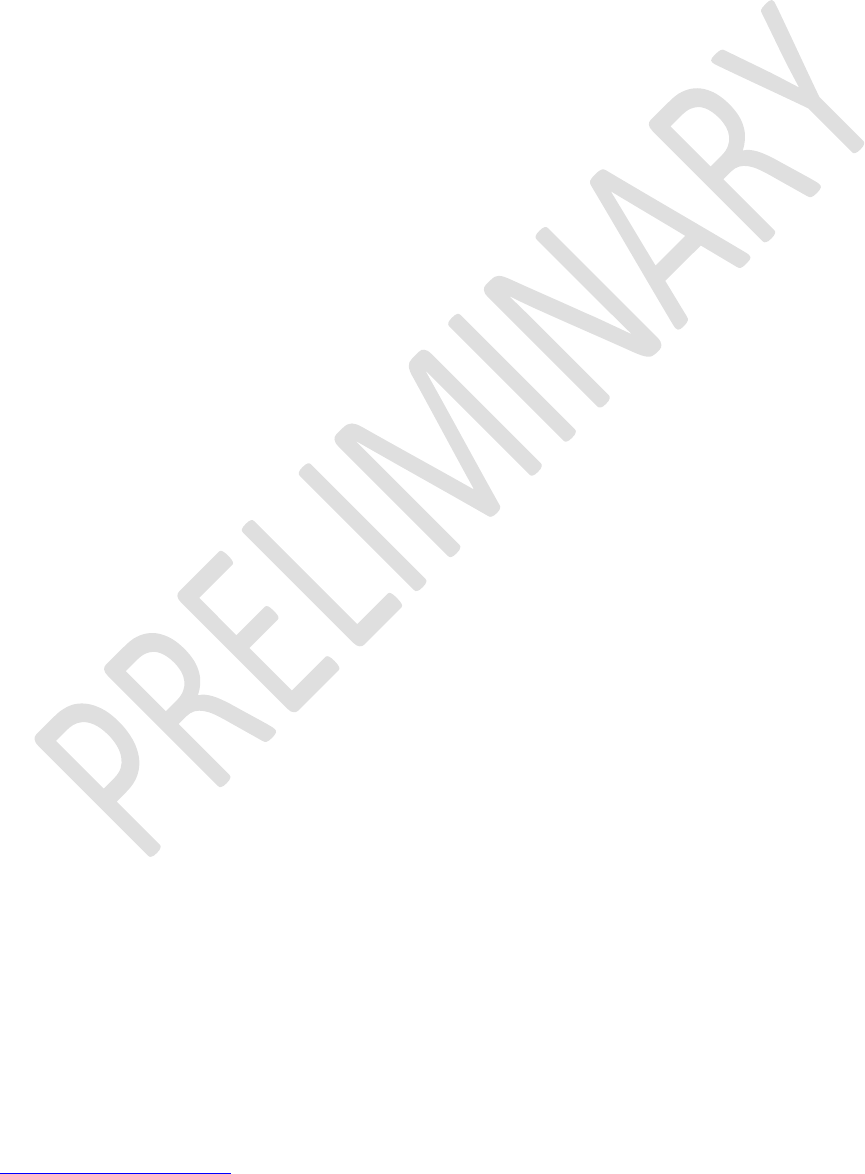
Class 1 Bluetooth v2.0 Module
User’s Guide
Americas: +1-800-492-2320 Option 2
Europe: +44-1628-858-940
Hong Kong: +852-2923-0610
www.lairdtech.com/bluetooth
2
CONN-GUIDE-BT730_v0.9
REVISION HISTORY
Revision
Revision Date
Description
Version 0.7
07/03/13
Prelim for KP
Version 0.8
10/04/13
Updated Mechanical Drawing – Pad Definitions
Version 0.9
01/05/13
Clean Up and DW Regulatory Updates
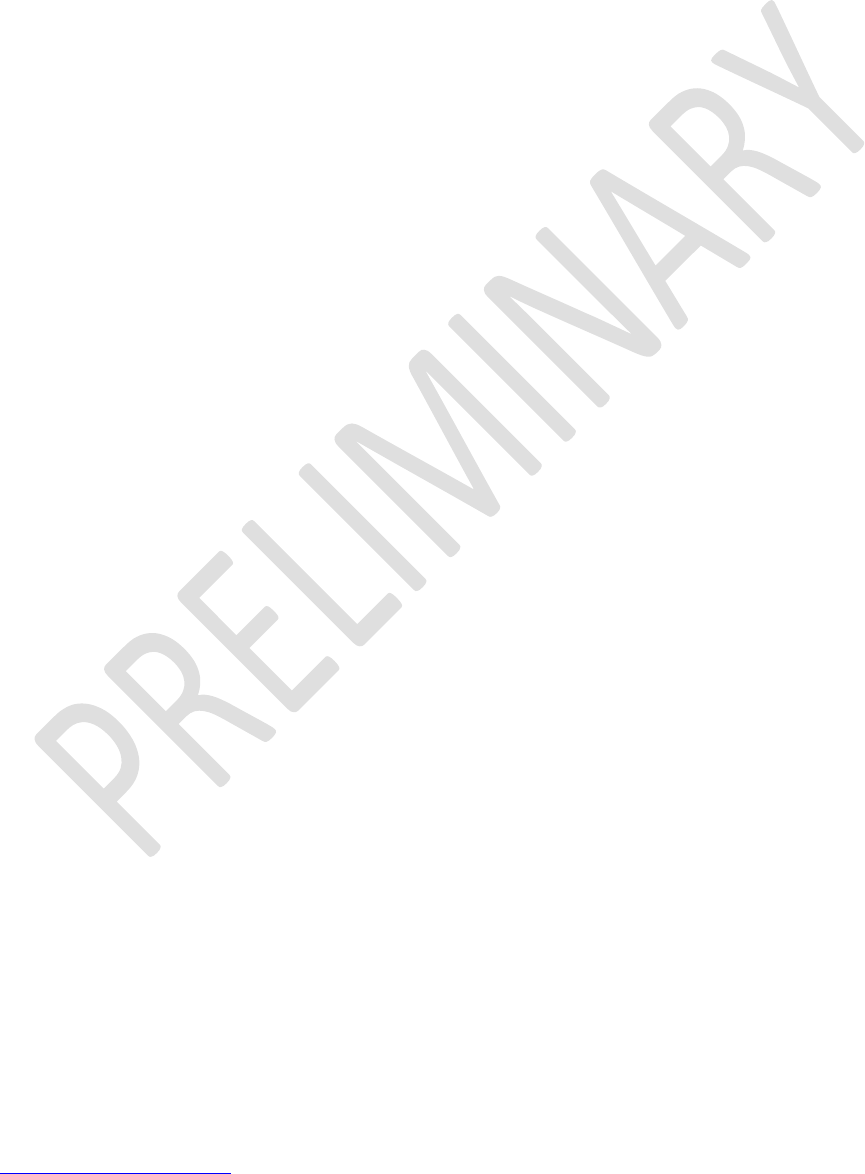
Class 1 Bluetooth v2.0 Module
User’s Guide
Americas: +1-800-492-2320 Option 2
Europe: +44-1628-858-940
Hong Kong: +852-2923-0610
www.lairdtech.com/bluetooth
3
CONN-GUIDE-BT730_v0.9
TABLE OF CONTENTS
Revision History ............................................................................................................................................. 2
Table of Contents .......................................................................................................................................... 3
1. Overview and Key Features.................................................................................................................... 5
Features & Benefits ................................................................................................................................................... 5
2. Specifications .......................................................................................................................................... 6
2.1 Detailed Specifications ............................................................................................................................ 6
3. Hardware Specifications ......................................................................................................................... 8
3.1 Pin Definitions ......................................................................................................................................... 8
3.2 Electrical Specifications ......................................................................................................................... 11
4. IO CHARACTERISTICS ....................................................................................................................... 14
4.1 Power Consumption .............................................................................................................................. 14
4.2 Typical Current Consumption in mA ..................................................................................................... 14
5. Functional Description .......................................................................................................................... 15
5.1 UART Interface ...................................................................................................................................... 15
5.2 SPI Bus ................................................................................................................................................... 16
5.3 PCM Interface ........................................................................................................................................ 16
5.4 General Purpose I/O and ADC ............................................................................................................... 17
6. AT Command Set Reference ................................................................................................................ 17
6.1 Introduction........................................................................................................................................... 17
6.2 Assumptions .......................................................................................................................................... 18
6.3 Commands ............................................................................................................................................ 18
6.4 Unsolicited Responses ........................................................................................................................... 50
6.5 Incoming Connections ........................................................................................................................... 51
6.6 Dropping Connections ........................................................................................................................... 51
6.7 Pairing and Trusted Devices .................................................................................................................. 52
6.8 Error Responses ..................................................................................................................................... 53
6.9 Factory Default Mode ........................................................................................................................... 54
6.10 Miscellaneous Features ......................................................................................................................... 54
6.11 Disclaimers ............................................................................................................................................ 55
6.12 Data Sheet Status .................................................................................................................................. 56
6.13 Changes between release ..................................................................................................................... 56
7. PCM CODEC Interface ......................................................................................................................... 56
7.1 Compatible Codec Chips ........................................................................................................................ 56
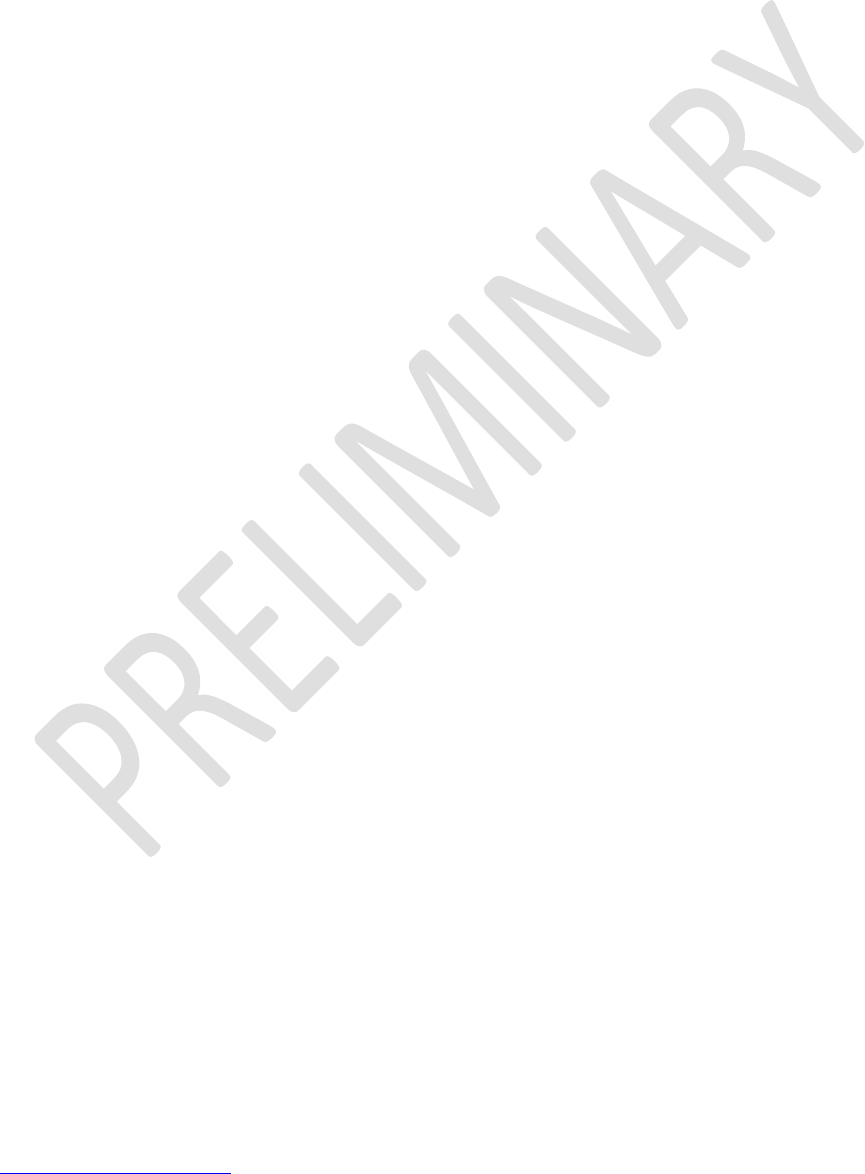
Class 1 Bluetooth v2.0 Module
User’s Guide
Americas: +1-800-492-2320 Option 2
Europe: +44-1628-858-940
Hong Kong: +852-2923-0610
www.lairdtech.com/bluetooth
4
CONN-GUIDE-BT730_v0.9
8. FTP Client Profile Commands .............................................................................................................. 57
8.1 Generic Notes and Guidance ................................................................................................................. 57
8.2 FTP related AT Commands .................................................................................................................... 58
8.3 FTP related Subcommands .................................................................................................................... 58
8.4 FTP-Related Subresponses .................................................................................................................... 61
8.5 FTP line multiplexing commands ........................................................................................................... 64
8.6 Message Sequence Charts ..................................................................................................................... 64
9. OBEX Profile Commands ..................................................................................................................... 78
9.1 Generic Notes and Guidance ................................................................................................................. 78
9.2 OBEX Push related AT Commands ......................................................................................................... 79
9.3 OBEX Push related Subcommands ........................................................................................................ 79
9.4 OBEX Push Related Subresponses ......................................................................................................... 80
9.5 OBEX Push Line Multiplexing Commands.............................................................................................. 82
9.6 Message Sequence Charts ..................................................................................................................... 83
10. Application Note for Surface Mount Modules ....................................................................................... 87
10.1 Introduction........................................................................................................................................... 87
10.2 Shipping ................................................................................................................................................. 87
10.3 Reflow Parameters ................................................................................................................................ 88
11. FCC Regulatory Statements ................................................................................................................. 89
11.1 Power Exposure Information ................................................................................................................ 89
11.2 OEM Responsibilities ............................................................................................................................. 90
12. EU DECLARATIONS OF CONFORMITY ............................................................................................. 93
12.1 BT730-SA ............................................................................................................................................... 93
12.2 BT730-SC ............................................................................................................................................... 94
13. Mechanical Details ................................................................................................................................ 96
BT730-SC Mechanical Details ................................................................................................ 錯誤! 尚未定義書籤。
BT730-SA Mechanical Details .................................................................................................................................. 96
BT730 Pad Definitions – Mechanical Drawing ........................................................................................................ 97
14. ORDERING INFORMATION ................................................................................................................ 97
14.1 General Comments................................................................................................................................ 97
15. Bluetooth SIG Approvals ....................................................................................................................... 98
15.1 Additional Assistance ............................................................................................................................ 98
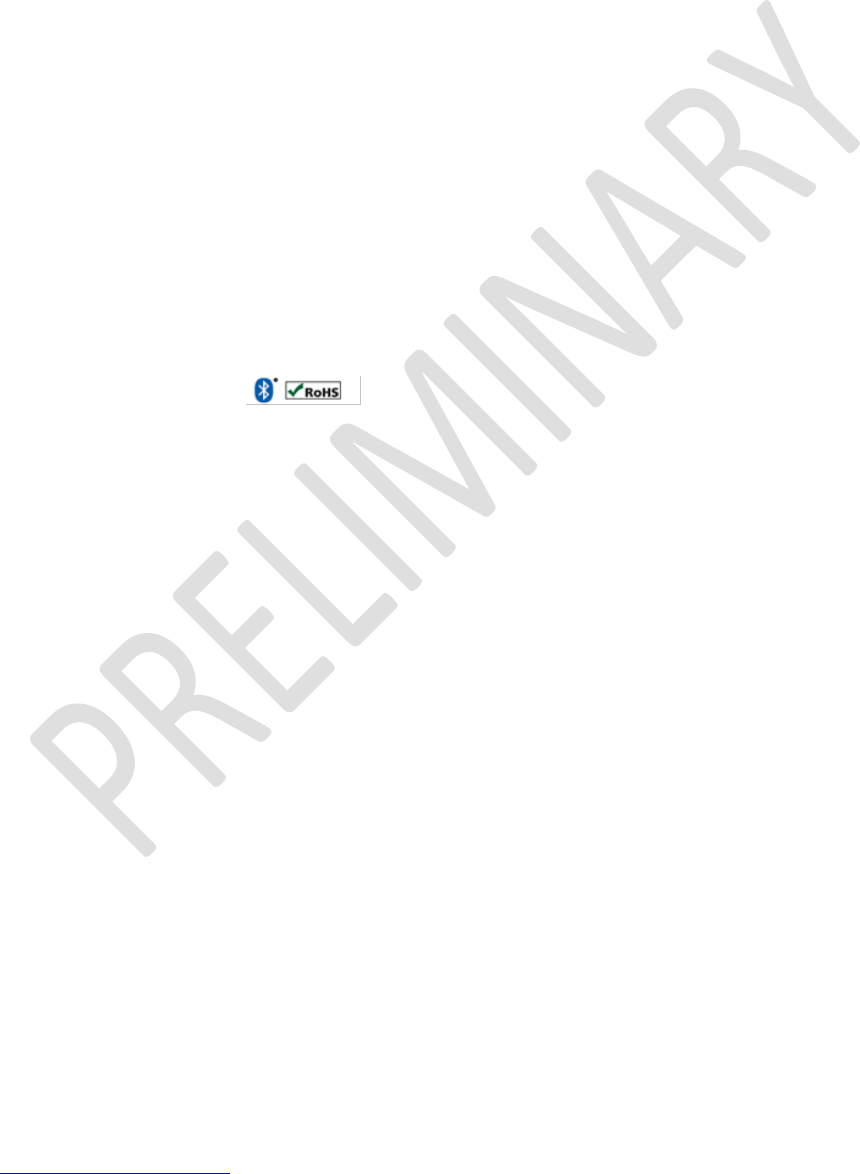
Class 1 Bluetooth v2.0 Module
User’s Guide
Americas: +1-800-492-2320 Option 2
Europe: +44-1628-858-940
Hong Kong: +852-2923-0610
www.lairdtech.com/bluetooth
5
CONN-GUIDE-BT730_v0.9
1. OVERVIEW AND KEY FEATURES
Every BT730 series Bluetooth®
module from Laird Technologies is designed to add robust, long-range
Bluetooth data connectivity to any device. Based on the market-leading Cambridge Silicon Radio (CSR)
BC04 chipset, BT730 modules provide exceptionally low power consumption with outstanding Class 1
range via 18 dBm of transmit power. A broad range of Bluetooth profiles and other vital features make
BT730 modules superior to other Bluetooth modules.
With a compact footprint of 15.29 x 28.71 mm, the modules deliver maximum range with minimum size.
Another integration advantage is the inclusion of a complete Bluetooth v2.0 protocol stack with support for
multi-point connections and numerous Bluetooth profiles including Serial Port Profile (SPP), Dial Up
Networking (DUN), OBEX Client, FTP Client plus partial support for Headset (HSP) and HandsFree
(HFP). BT730 modules are fully qualified as Bluetooth end products, enabling designers to integrate the
modules in devices without the need for further Bluetooth qualification.
An integrated AT command processor interfaces to the host system over a serial port using an extensive
range of AT commands. The AT command set abstracts the Bluetooth protocol from the host application,
saving many months of programming and integration time. It provides extremely short integration times
for data oriented Bluetooth applications.
The included firmware provides programming support for multi-point applications that use up to three
simultaneous data connections to and from the robust BT730 module. A low-cost developer’s kit makes it
easy for an OEM to integrate the module and guarantees the fastest route to prototype and then mass
production.
Features & Benefits
Application Areas
Bluetooth v2.0 + EDR
External or internal antennas
Comprehensive AT command set
Bluetooth EPL
Compact footprint
Class 1 output - 18dBm
UART interface with GPIO,
PCM, and ADC lines
Industrial temperature range
Field proven firmware used on
BTM40x and BISM II product ranges
Medical devices
ePOS terminals
Automotive diagnostic equipment
Barcode scanners
Industrial cable replacement
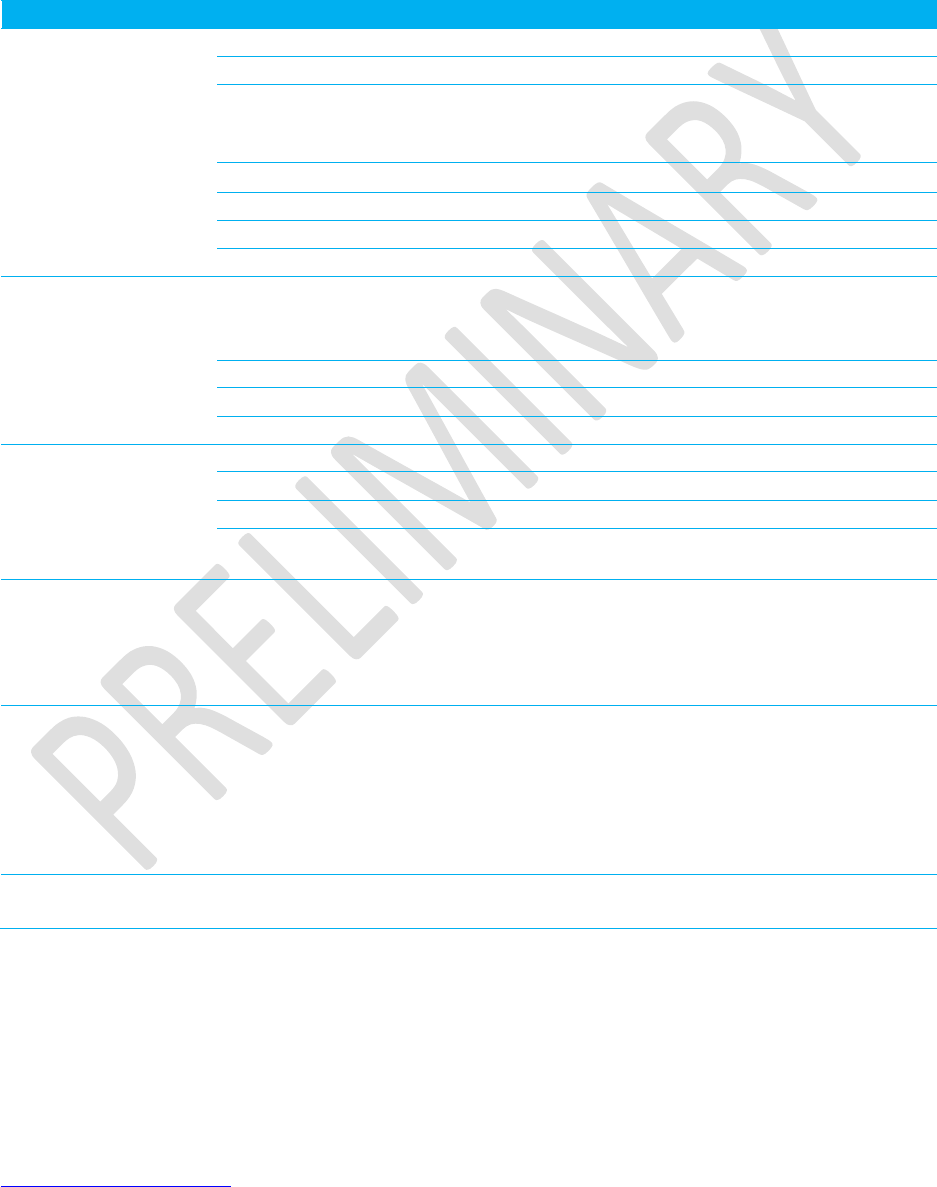
Class 1 Bluetooth v2.0 Module
User’s Guide
Americas: +1-800-492-2320 Option 2
Europe: +44-1628-858-940
Hong Kong: +852-2923-0610
www.lairdtech.com/bluetooth
6
CONN-GUIDE-BT730_v0.9
2. SPECIFICATIONS
2.1 Detailed Specifications
Table 2-1: Detailed specifications
Categories
Feature
Implementation
Wireless
Specification
Bluetooth®
V2.0 + EDR
Frequency
2.402 - 2.480 GHz
Max Transmit Power
Class 1
18 dBm from integrated antenna
18 dBm at UFL antenna connector
Receive Sensitivity
Better than -87 dBm (at 25°C)
Range
>1000m
Data Rates
Up to 2.1 Mbps (over the air)
UART Data Transfer Rate
Circa 300 kbps
Host Interface
UART
TX, RX, DCD, RI, DTR, DSR, CTS, RTS1
Default 9600, n,8, 1
From 1,200 to 921,600 bps
GPIO
8 configurable lines
ADC
2 lines, 8 bit resolution
PCM
4 lines – see Audio section
Profiles
SPP
Serial Port Profile
DUN
Dial Up Networking
OBEX Client & FTP Client
Object Exchange & File Transfer Client Profiles
HFP & HSP (Audio
Gateway)
Hands Free & Headset
Command
Interfaces
Operation Modes
Firmware Upgrade
AT Command Set
Multi-Point API - 3 simultaneous connections
Firmware Upgrade over UART
Audio
Support
SCO Channels
PCM Interface
3 x PCM Channels @ 64 kpbs
SCO and eSCO
Configurable as master or slave
8 bit A-law
8 bit µ-law
13 bit linear
PCM Clock available when in slave mode
Supply Voltage
Supply
3.0 – 5.0 V
On-board regulators and brown-out detection
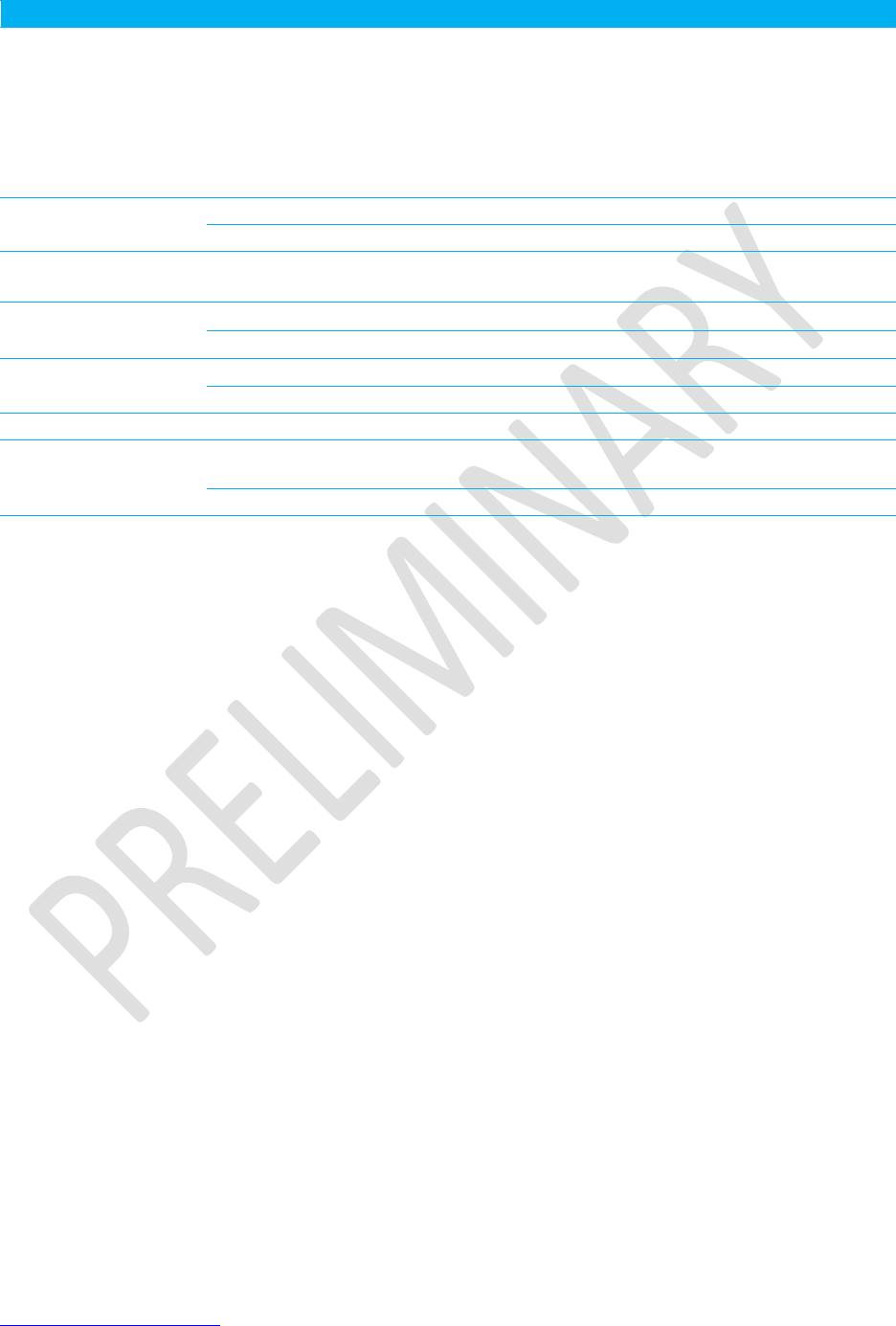
Class 1 Bluetooth v2.0 Module
User’s Guide
Americas: +1-800-492-2320 Option 2
Europe: +44-1628-858-940
Hong Kong: +852-2923-0610
www.lairdtech.com/bluetooth
7
CONN-GUIDE-BT730_v0.9
Categories
Feature
Implementation
Power Consumption
Various Modes –
Typical values
Idle Mode – TBC
Discoverable –TBC
Inquiry Mode – TBC
Connecting Mode – TBC
Connected Mode (No Data Transfer) – TBC
Connected Mode (Max Data Transfer) – TBC
Sniff Mode – TBC
Antenna Options
Internal
Multilayer ceramic - BT730-SA
External
Connection via u.FL - BT730-SC
Physical
Dimensions
Weight
15.29 mm x 28.71 mm x 2.5 mm
1.5 g
Environmental
Operating
-40°C to +85°C
Storage
-40°C to +85°C
Miscellaneous
Lead Free
Lead-free and RoHS compliant
Warranty
1 Year
Development Tools
Development Kit
Development kit DVK-BT730 and software tools
Approvals
Bluetooth®
End Product Listing (EPL)
(to be completed)
FCC / IC / CE
All BT730 Series (to be completed)
1. DSR, DTR, RI and DCD are configurable either as GPIO or as modem control lines.
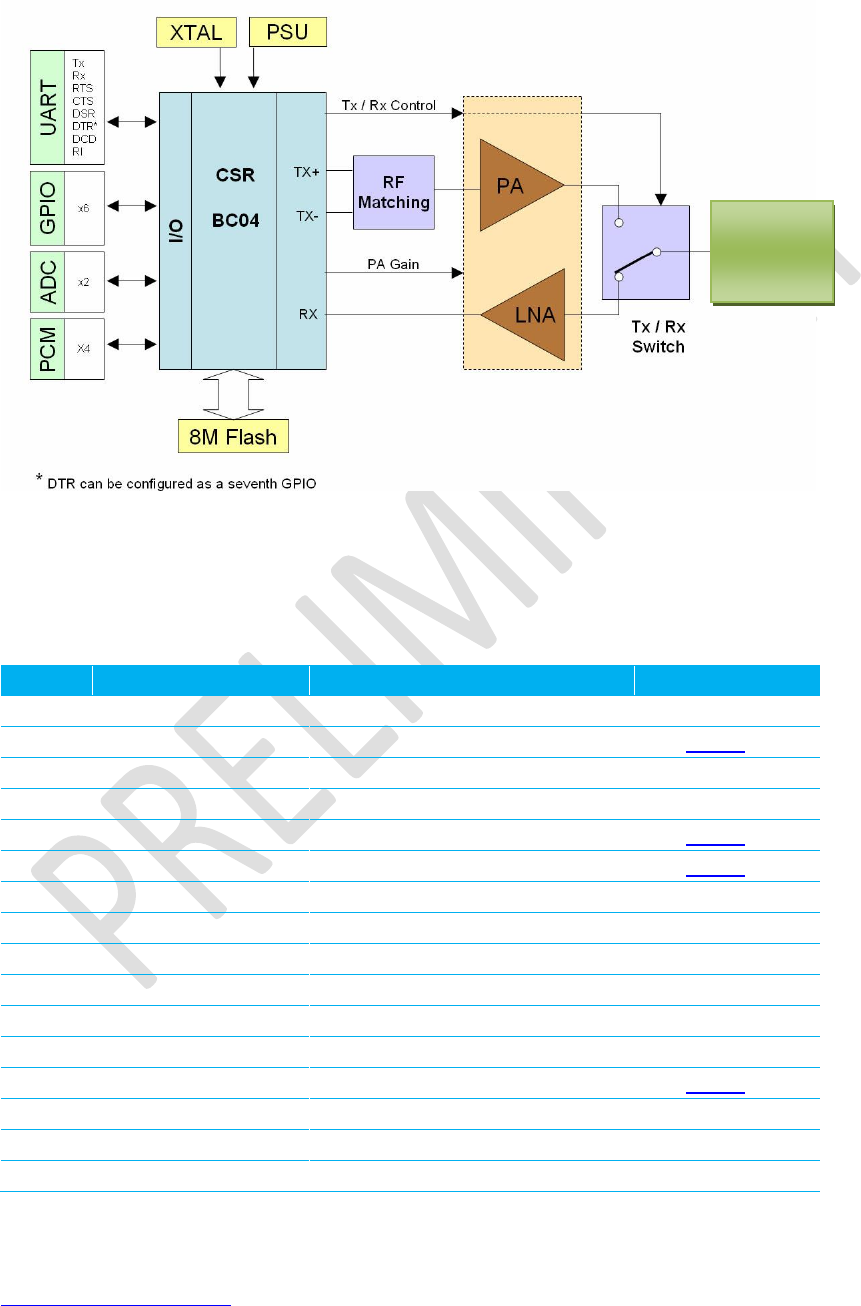
Class 1 Bluetooth v2.0 Module
User’s Guide
Americas: +1-800-492-2320 Option 2
Europe: +44-1628-858-940
Hong Kong: +852-2923-0610
www.lairdtech.com/bluetooth
8
CONN-GUIDE-BT730_v0.9
3. HARDWARE SPECIFICATIONS
Figure 1: Functional Block Diagram
3.1 Pin Definitions
Table 3-1: Pin definitions
Pin
Signal
Description
Comment
1
GND
2
SPI_MOSI
SPI bus serial I/P
See Note 2
3
GPIO6
I/O for host
4
GPIO7
I/O for host
5
RESET
Module reset I/P
See Note 4
6
SPI_CLK
SPI bus clock I/P
See Note 2
7
PCM_CLK
PCM clock I/P
8
PCM_SYNC
PCM sync I/P
9
PCM_IN
PCM data I/P
10
PCM_OUT
PCM Data O/P
11
VCC_5VIN
3.0 V < VIN < 5.0 V
12
GND
13
VCC_3V3
3.3 V Monitor
See Note 5
14
Analogue 1
1.8 V max
15
GND
16
UART_DSR
UART_DSR I/P
Ceramic Chip
Antenna
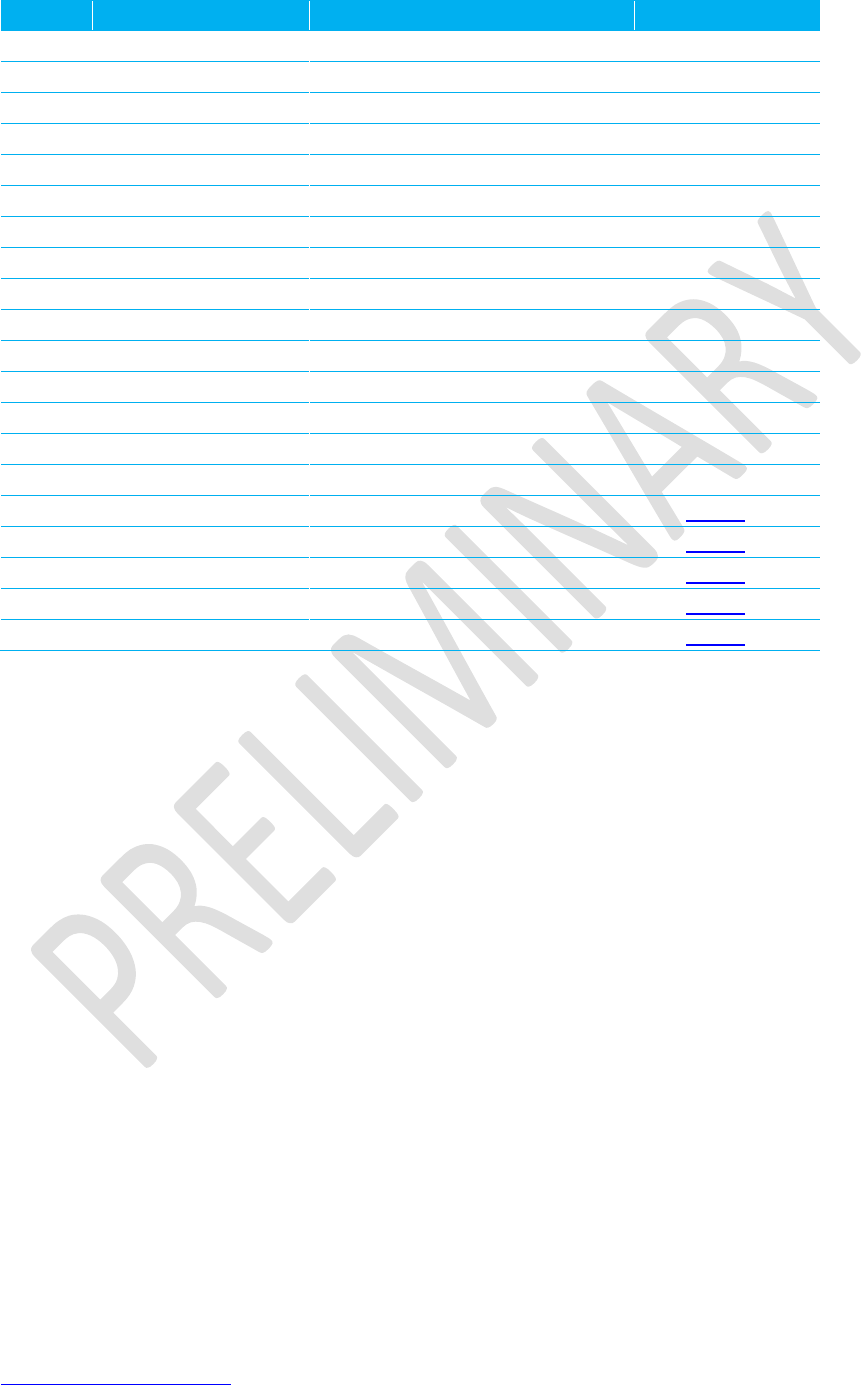
Class 1 Bluetooth v2.0 Module
User’s Guide
Americas: +1-800-492-2320 Option 2
Europe: +44-1628-858-940
Hong Kong: +852-2923-0610
www.lairdtech.com/bluetooth
9
CONN-GUIDE-BT730_v0.9
Pin
Signal
Description
Comment
17
UART_DCD
UART_DCD I/P or O/ P
18
GPIO_9
I/O for host
19
GPIO_8
I/O for host
20
GND
21
Analogue 00
1.8 V max
22
UART_RX
Receive data I/P
23
UART_TX
Transmit data O/P
24
UART_RTS
Request to Send O/P
25
UART_CTS
Clear to Send I/P
26
USB_D+
Not used for AT module variants
27
USB_D-
Not used for AT module variants
28
UART_RI
Ring Input or Output
29
GPIO_3/UART_DTR
I/O for host/UART_DTR
30
GPIO_5
I/O for host
31
GPIO_4
I/O for host
32
SPI_CSB
SPI bus chip select I/P
See Note 2
33
SPI_MISO
SPI bus serial O/P
See Note 2
34
GND
Only on uFL version
See Note 3
35
RF_OUT
Only on uFL version
See Note 3
36
GND
Only on uFL version
See Note 3
Notes:
1. Unused pins may have internal connections and must not be connected.
2. Pins 2, 6, 32, and 33 (SPI related) are only for Laird internal production purposes.
3. Pins 34 - 36 are only for uFL connector version of module – BT730-SC
4. Power-on-reset (power cycling and brown out consideration) – The reset circuitry within the
BT730 module incorporates a brown-out detector; this may simplify power supply design. The
BT730 reset line is an active low. Input debounced so must be low for more than 5 ms to cause a
reset. Upon the application of power, the Power On Reset circuit built into the module ensures
that the unit starts correctly. There is no need for an external power reset monitor.
5. Power Supply Consideration – The power supply for the module should be a single voltage
source of VCC within the VCC_IN range of 3.0 V to 5.0 V. It must be able to provide sufficient
current in a transmit burst. This can rise to 200 mA. To limit dissipation it is recommended that
you use a voltage at the lower end of the range.
6. The module includes regulators to provide local 3.3 V. This rail is accessible on pin 13 for
monitoring purposes only. Under no circumstances should this pin be used to source current.
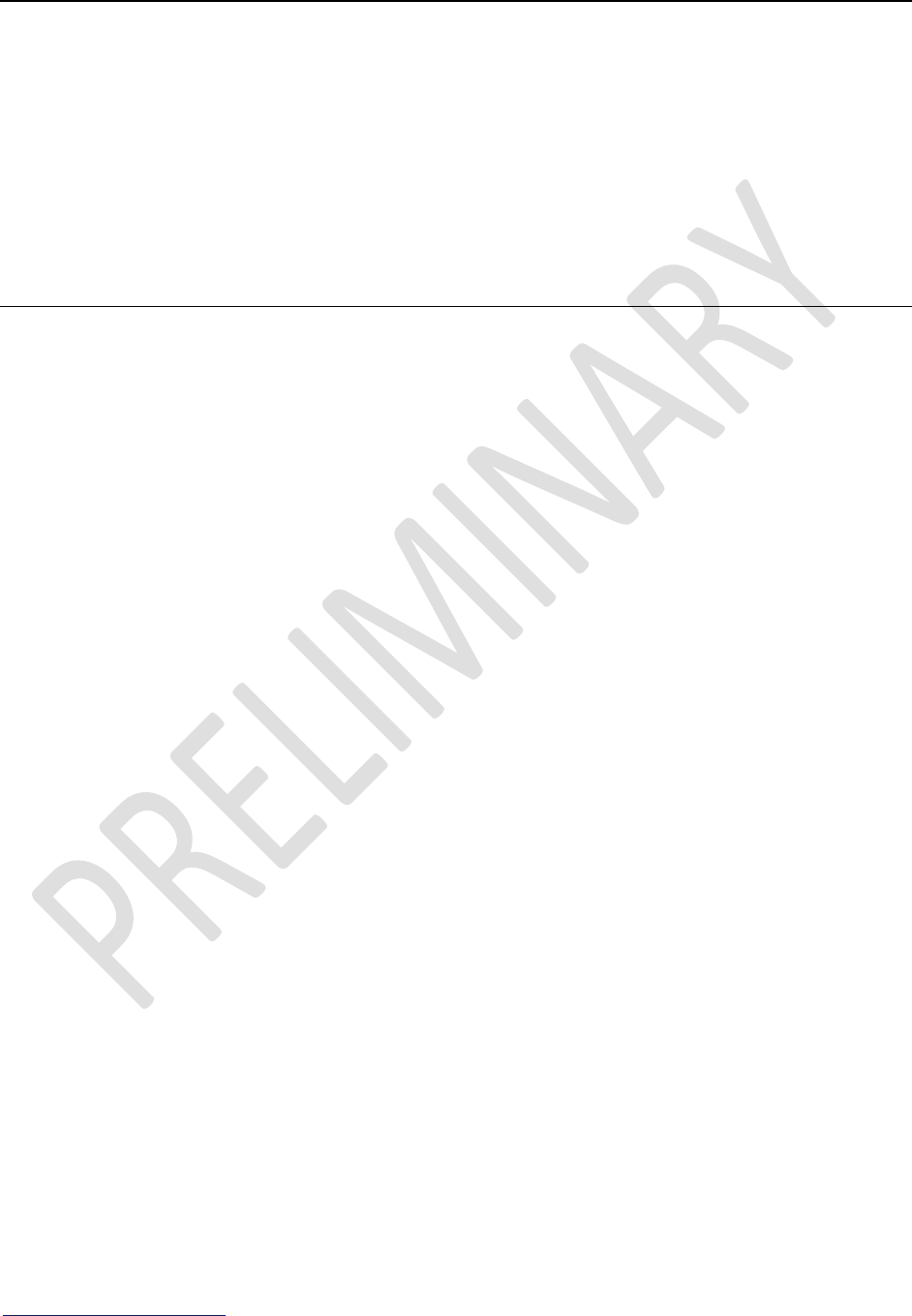
Class 1 Bluetooth v2.0 Module
User’s Guide
Americas: +1-800-492-2320 Option 2
Europe: +44-1628-858-940
Hong Kong: +852-2923-0610
www.lairdtech.com/bluetooth
10
CONN-GUIDE-BT730_v0.9
COMPATIBILITY NOTE FOR LEGACY DEVICES
If Reset compatibility is required with BTM402 and BTM404: Reset logic must be inverted (on the host
PCB), by using suitable BJT (MMBT3904) with collector connected to Reset pin BT730 module pin 5. A
fixed 10k Ohm pull down resistor to ground (BJT input) then ensures that the BT730 module is out of
reset for the condition when host has yet to control the reset line.
Add a 10k pull-up to the host PCB on the UART_RX, otherwise the module will remain in deep sleep if
not driven to high.
Add a 10k pull-down to the host PCB on the UART_CTS that if it is not connected (which we do not
recommend) then the default state for UART_CTS input will be asserted which means can send data out
of UART_TX line.
PIO lines can be configured through software to be either inputs or outputs with weak or strong pull-ups
or pull-downs. At reset, all PIO lines are configured as inputs with weak pull-downs.
UART_RX, UART_TX, UART_CTS, UART_RTS, UART_RI, UART_DCD, and UART_DSR are all 3.3 V
level logic. For example, when RX and TX are idle they will be sitting at 3.3 V. Conversely, for
handshaking pins CTS, RTS, RI, DCD, and DSR, a 0 V is treated as an assertion.
Pin 28 (UART_RI) is active low. It is normally 3.3 V. When a remote device initiates a connection, this pin
goes low. This means that when this pin is converted to RS232 voltage levels it will have the correct
voltage level for assertion.
Pin 17 (UART_DCD) is active low. It is normally 3.3 V. When a connection is live, this pin is low. This
means that when this pin is converted to RS232 voltage levels it will have the correct voltage level for
assertion.
Pin 16 (UART_DSR) is an input, with active low logic. It should be connected to the DTR output of the
host. When the BTM730 module is in high speed mode (see definition for S Register 507), this pin should
be asserted by the host to ensure that the connection is maintained. A deassertion means that the
connection should be dropped or an online command mode is being requested.
Pin 13 (VCC_3V3 monitor) may only be used for monitoring purposes. It must not be used as a current
source.
The GPIO pins can be accessed using S Registers 623 to 629.
GPIO3 is also used for DTR output (active low).See S Register 552 and553.
Analogue 0 and 1 should not exceed 1.8 V and S Registers 701 and 702 are used to access them.
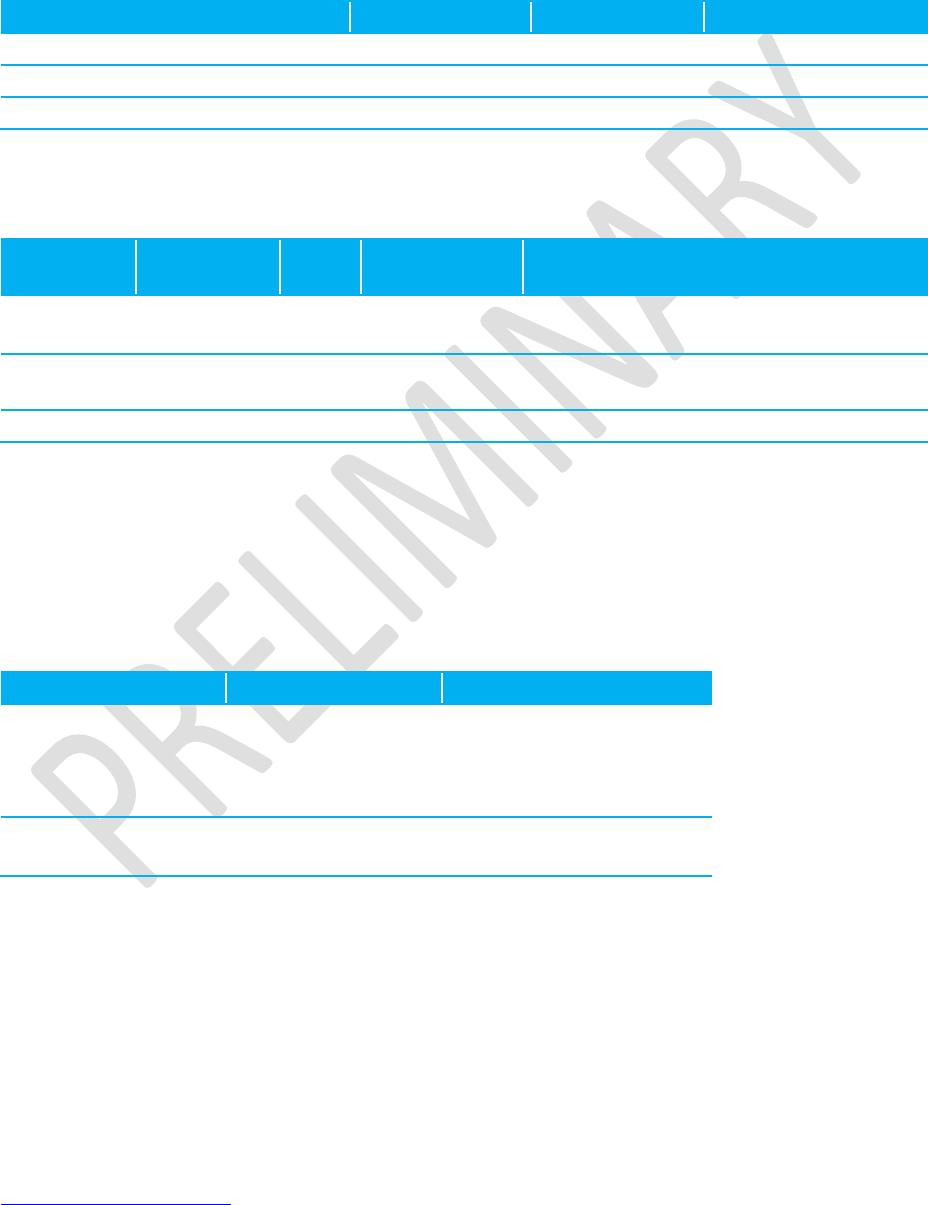
Class 1 Bluetooth v2.0 Module
User’s Guide
Americas: +1-800-492-2320 Option 2
Europe: +44-1628-858-940
Hong Kong: +852-2923-0610
www.lairdtech.com/bluetooth
11
CONN-GUIDE-BT730_v0.9
3.2 Electrical Specifications
3.2.1 Absolute Maximum ratings
Absolute maximum ratings for supply voltage and voltages on digital and analogue pins of the module are
listed below; exceeding these values will cause permanent damage.
Parameter
Min
Max
Unit
Peak current of power supply
0
200
mA
Voltage at digital pins
-0.4
3.7
V
Voltage at POWER pin
2.9 *
6.0
V
3.2.2 Recommended Operating Parameters
3.2.2.1 Power Supply
Signal
Name
Pin No
I/O
Voltage level
Comments
VCC_VIN
11
I
3.0 V to 5.0 V *
Typ 3.3 V
Ityp = TBC mA?
GND
1, 12, 15,
20, 34, 36
6 Ground terminals to be attached in
parallel
VCC_3V3
13
O
3.3 V typical
For monitoring only. No current source
Note:
VCC_3V3 refers to internal voltage generated by the LDO inside the module which is typically 3.3V.
Internal LDO drop is 0.2V. So to achieve 3.3V for VCC_3V3 requires VCC_IN of 3.5V. IO voltage levels
follows VCC_3V3.
3.2.2.2 Signal Levels for Interface, PCM, SPI and GPIO
Signal Type
Signal level
Signal level @ 0mA load
Input
VILmin= -0.4V
VILmax=0.8V
VIHmin=2.3V
VIHmax=3.7V
Output
VOLmax=0.2V
VOHmin=3.1V
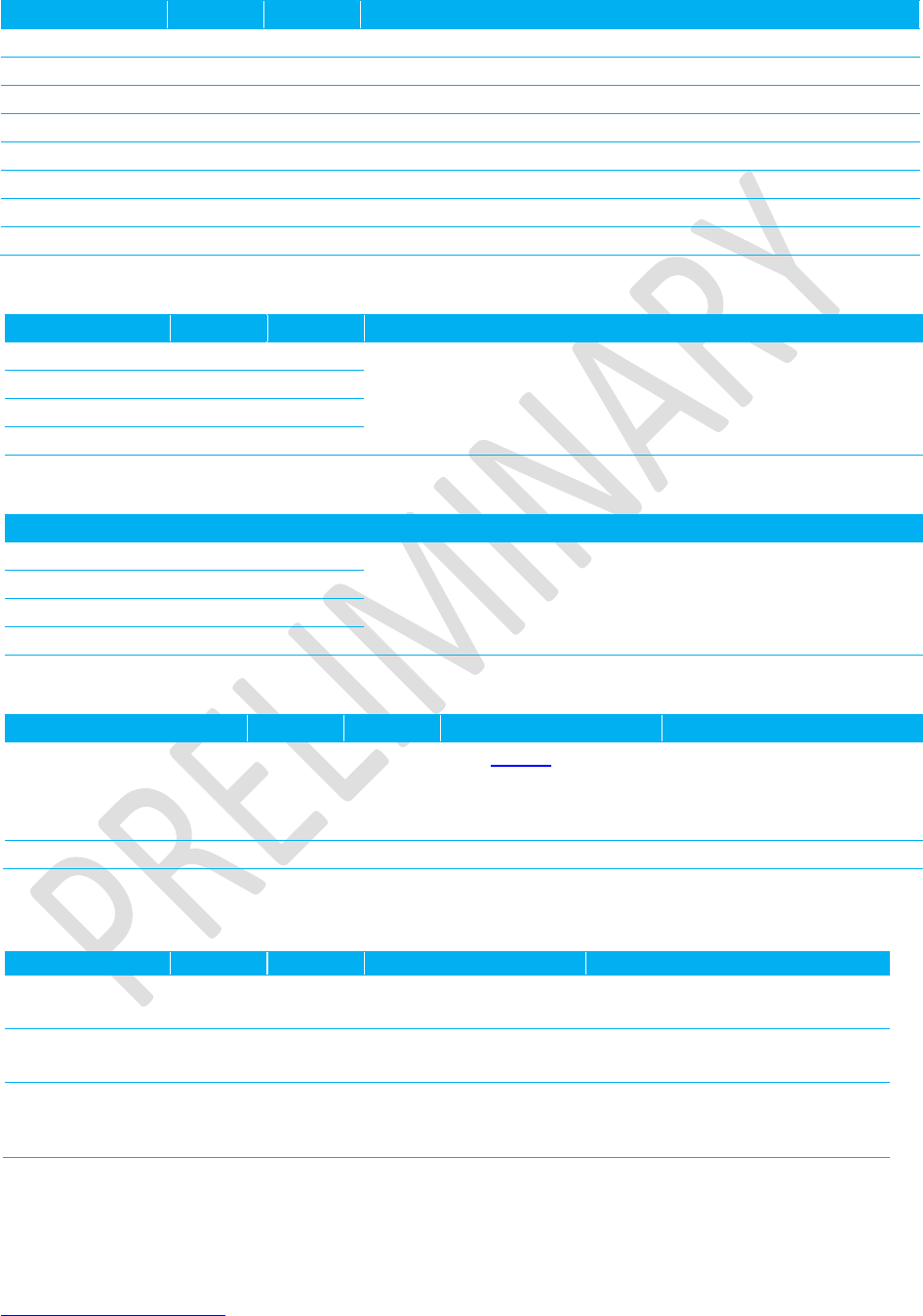
Class 1 Bluetooth v2.0 Module
User’s Guide
Americas: +1-800-492-2320 Option 2
Europe: +44-1628-858-940
Hong Kong: +852-2923-0610
www.lairdtech.com/bluetooth
12
CONN-GUIDE-BT730_v0.9
3.2.2.3 RS-232 Interface
Signal Name
Pin No
I/O
Comments
UART_TX
23
O
UART_RX
22
I
UART_CTS
25
I
UART_RTS
24
O
UART_DSR
16
I
UART_DTR
29
O
Shared with GPIO3
UART_RI
28
I or O
Direction may be programmed.
UART_DCD
17
I or O
Direction may be programmed.
SPI Bus
Signal Name
Pin No
I/O
Comments
SPI_MOSI
2
I
INTERNAL USE ONLY - Used to reprogram Flash in Laird
production.
SPI_MISO
33
O
SPI_CSB
32
I
SPI_CLK
6
I
3.2.2.4 PCM Interface
Signal Name
Pin No
I/O
Comments
PCM_CLK
7
I or O
If unused keep pins open.
PCM output signals are tri-stated when there is not an active
SCO or eSCO connection.
PCM_IN
9
I
PCM_SYNC
8
I or O
PCM_OUT
10
O
3.2.2.5 General Purpose I/O and ADC
Signal Name
Pin No
I/O
Signal level
Comments
GPIO_3 - 9
3, 4, 16,
17, 18,
19, 29,
30, 31
I or O
See 3.2.2.2
Analogue0, Analogue1
14, 21
I
Range 0 – 1.8 V
8 bit
3.2.2.6 Miscellaneous
Signal Name
Pin No
I/O
Signal level
Comments
USB D-
27
I
VILmax =0.3vdd_usb
VIHmin =0.7vdd_usb
Normally inactive. Pull to GND
through 10kΩ.
USB D+
26
I
VILmax =0.3vdd_usb
VIHmin =0.7vdd_usb
Normally inactive. Pull to GND
through 10kΩ.
RESET
5
I
VILmax=1.0V
VIHmin=2.3V
Active LOW. The Reset input
contains a 10kΩ pull-up resistor
(internal to module).
Terminology:
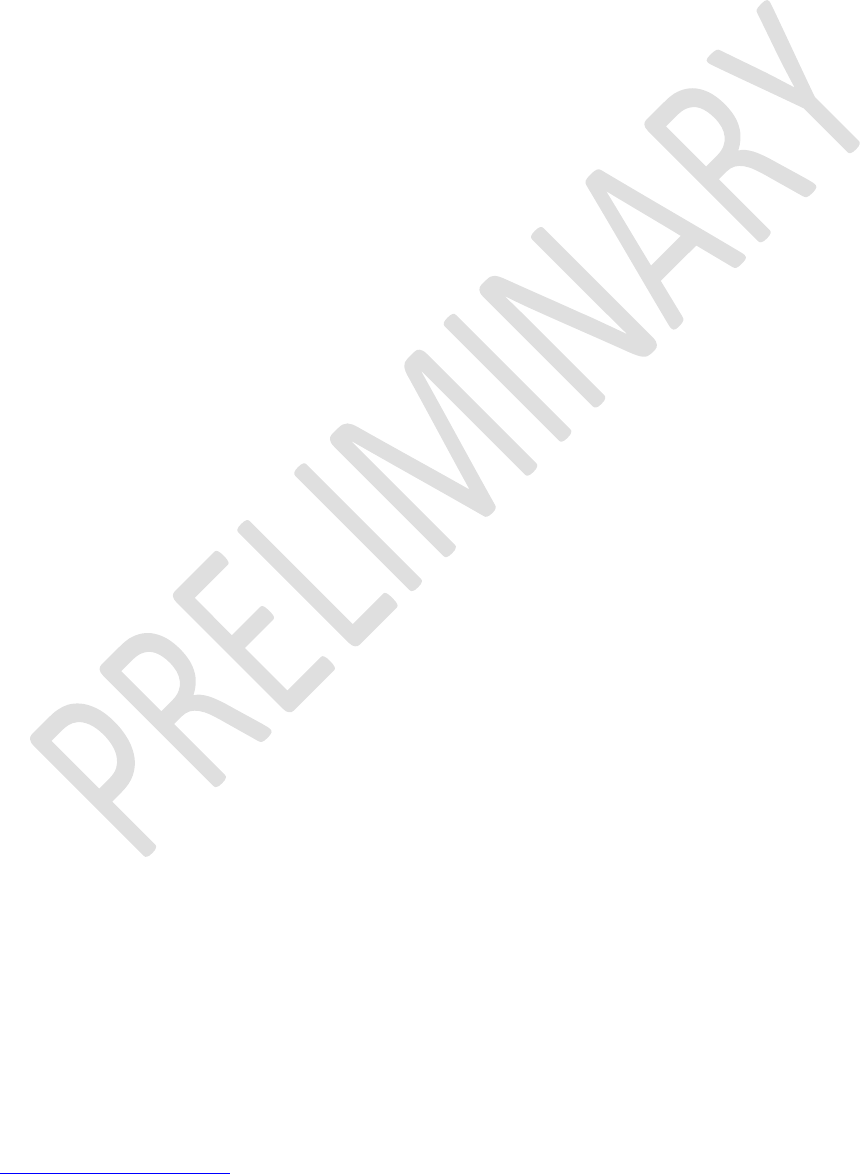
Class 1 Bluetooth v2.0 Module
User’s Guide
Americas: +1-800-492-2320 Option 2
Europe: +44-1628-858-940
Hong Kong: +852-2923-0610
www.lairdtech.com/bluetooth
13
CONN-GUIDE-BT730_v0.9
USB Signal Levels.vdd_usb refers to the internal voltage generated by the LDO regulator on the module,
which is typically 3.3 V. Hence 0.3vdd_usb and 0.7vdd_usb correspond to 1.0 V to 2.3 V. To achieve
3.3V for vdd_usb requires VCC_IN of 3.5V. USB IO voltage levels follows VCC_3V3. For correct USB
operation, would require vdd_usb on 3.1V which requires of VCC_IN of ~3.3V (0.2V LDO drop).
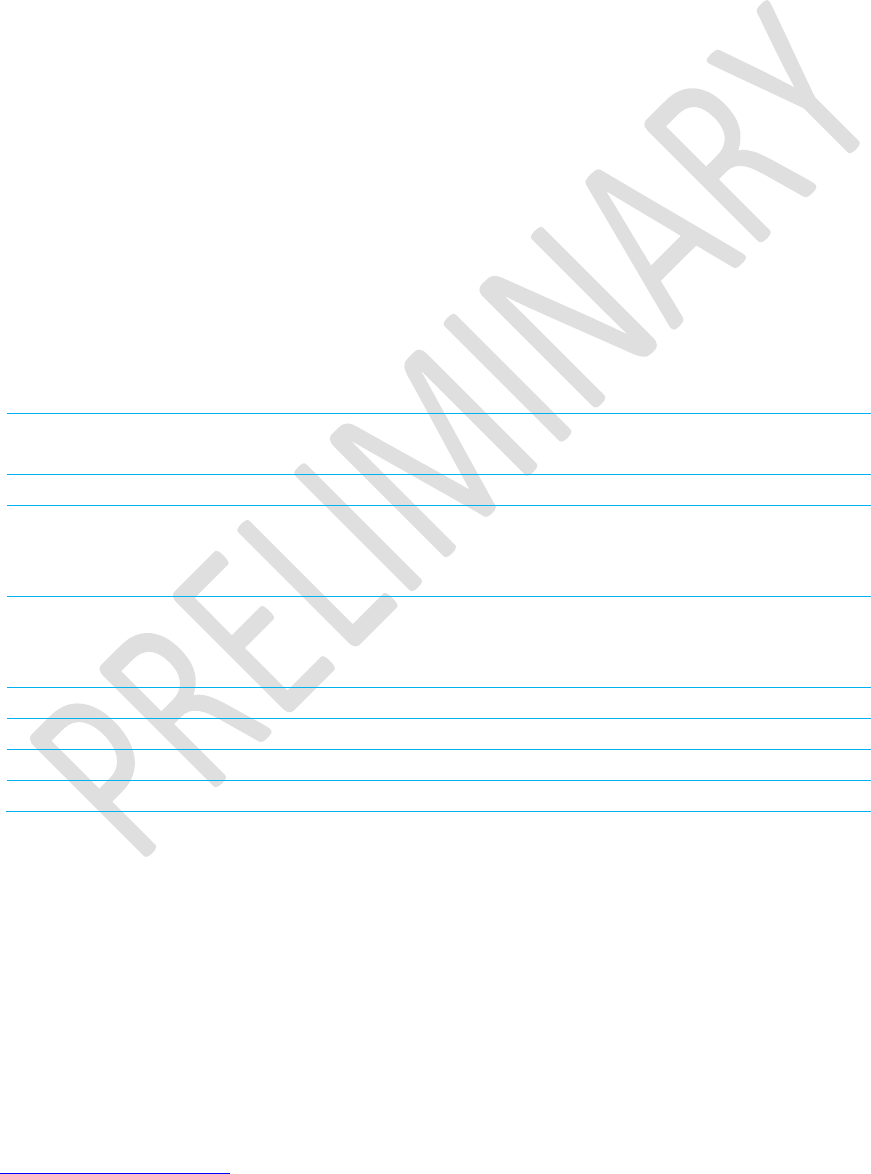
Class 1 Bluetooth v2.0 Module
User’s Guide
Americas: +1-800-492-2320 Option 2
Europe: +44-1628-858-940
Hong Kong: +852-2923-0610
www.lairdtech.com/bluetooth
14
CONN-GUIDE-BT730_v0.9
4. IO CHARACTERISTICS
4.1 Power Consumption
The current drain from the VCC power input line is dependent on various factors. The three most
significant factors are the voltage level at VCC, UART baud rate, and the operating mode. The hardware
specification for the module allows for a voltage range of 3.0 to 5.0 at VCC. The unit includes a linear
regulator and tests have shown that there is no significant difference in current draw when VCC changes
within the operating limits. Tests have shown that where power dissipation is an issue, it is best to keep
VCC at the lower end of the range.
The UART baud rate has a bearing on power dissipation because as is normal for digital electronics, the
power requirements increase linearly with increasing clocking frequencies. Because of this, higher baud
rates result in a higher current drain. Finally, the significant operating modes are: idle, waiting for a
connection, inquiring, initiating a connection, sniff, and connected. With connected mode, it is also
relevant to differentiate between no data being transferred and when data is being transferred at the
maximum rate possible. The AT command set document describes how to configure the module for
optimal power performance.
4.2 Typical Current Consumption in mA
Table 4-2: Current Consumption
VCC = 3.8V, Baudrate = 9600bps
Range = >1 meters
Typical Current (mA)
Idle Mode, S512=1
TBC
Wait for Connection Or Discoverable Mode,
AT+BTP
S508=S510=640, S509=S511=320
TBC
Wait for Connection Or Discoverable Mode,
AT+BTP
S508=S510=1000, S509=S511=11
TBC
Inquiry Mode, AT+BTIN
TBC
Connecting Mode (ATDxxx)
TBC
Connected Mode (No Data Transfer)
TBC
Connected Mode (Max Data Transfer)
TBC
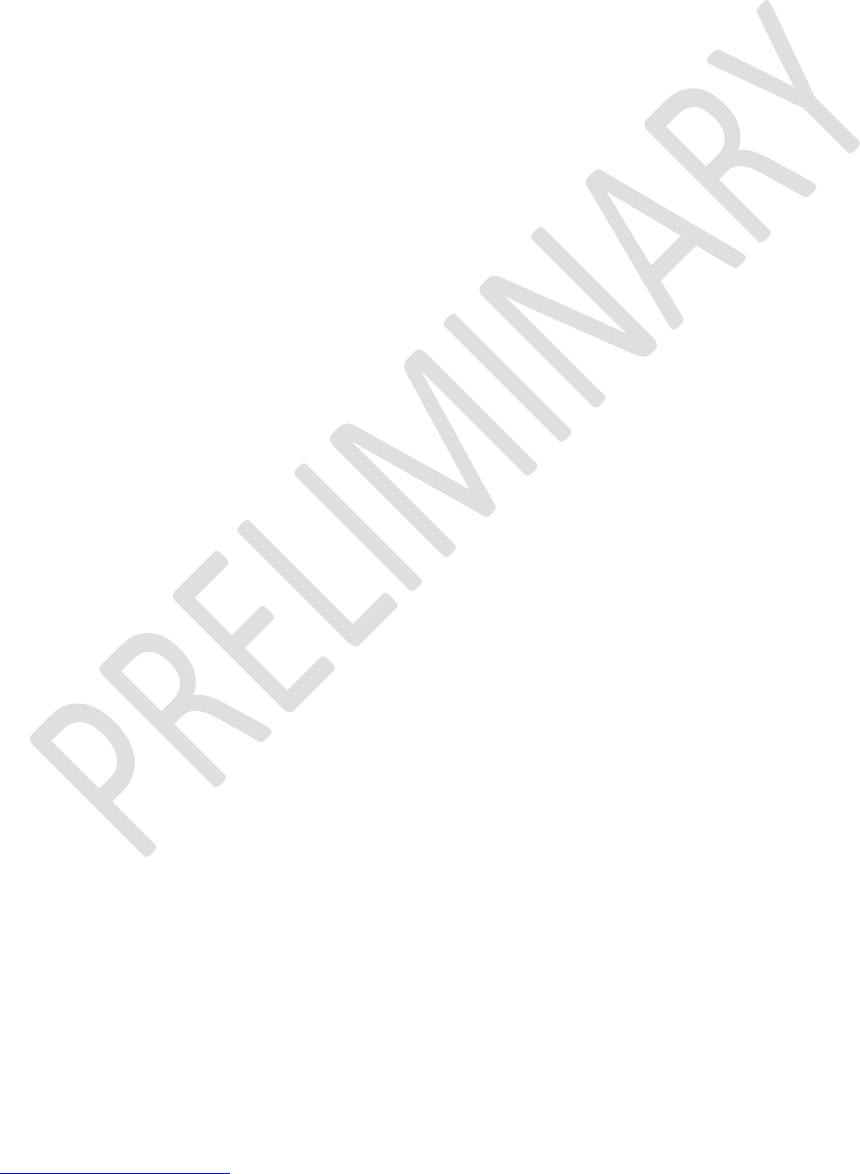
Class 1 Bluetooth v2.0 Module
User’s Guide
Americas: +1-800-492-2320 Option 2
Europe: +44-1628-858-940
Hong Kong: +852-2923-0610
www.lairdtech.com/bluetooth
15
CONN-GUIDE-BT730_v0.9
5. FUNCTIONAL DESCRIPTION
The BT730 Bluetooth module is a self-contained Bluetooth product and requires only power to implement
full Bluetooth communication. The integrated, high performance antenna, together with the RF and base-
band circuitry provides the Bluetooth wireless link and the UART interface provides a connection to the
host system.
The variety of interfaces and the AT command set allow the BT730 module to be used for a wide number
of long range wireless applications, from simple cable replacement to complex multipoint applications,
where multiple radio links are active at the same time.
The complexity and flexibility of configuration are made simple for the design engineer by the integration
of an extremely comprehensive set of AT commands, supplemented with a range of “S” registers which
are used for non-volatile storage of system parameters.
To provide the widest scope for integration a range of different physical host interfaces are provided.
5.1 UART Interface
UART_TX, UART_RX, UART_RTS, and UART_CTS form a conventional asynchronous serial data port
with handshaking. The interface is designed to operate correctly when connected to other UART devices
such as the 16550A. The signalling levels are nominal 0 V and 3.3 V and are inverted with respect to the
signalling on an RS232 cable. The interface is programmable over a variety of bitrates; no, even, or odd
parity; stop bit and hardware flow control. The default condition on power-up is pre-assigned in the
external flash. Two-way hardware flow control is implemented by UART_RTS and UART_CTS.
UART_RTS is an output and is active low. UART_CTS is an input and is active low.
These signals operate according to normal industry convention. UART_RX, UART_TX, UART_CTS,
UART_RTS, UART_RI, UART_DCD, and UART_DSR are all 3.3 V level logic. For example, when RX
and TX are idle they sit at 3.3 V. Conversely for handshaking pins CTS, RTS, RI, DCD, and DSR, a 0 V is
treated as an assertion.
By writing different values to the relevant S register the UART_RI can be continuously polled to detect
incoming communication. The UART_RI signal serves to indicate incoming calls.
UART_DSR is an active low input. It should be connected to DTR output of the host. When the module is
running in high speed mode (see definition for S Reg 507), this pin should be asserted by the host to
ensure connection is maintained. A de-assertion means that the connection should be dropped or an
online command mode is being requested.
The module communicates with the customer application using the following signals:
Port /TXD of the application sends data to the module’s UART_RX signal line
Port /RXD of the application receives data from the module’s UART_TX signal line
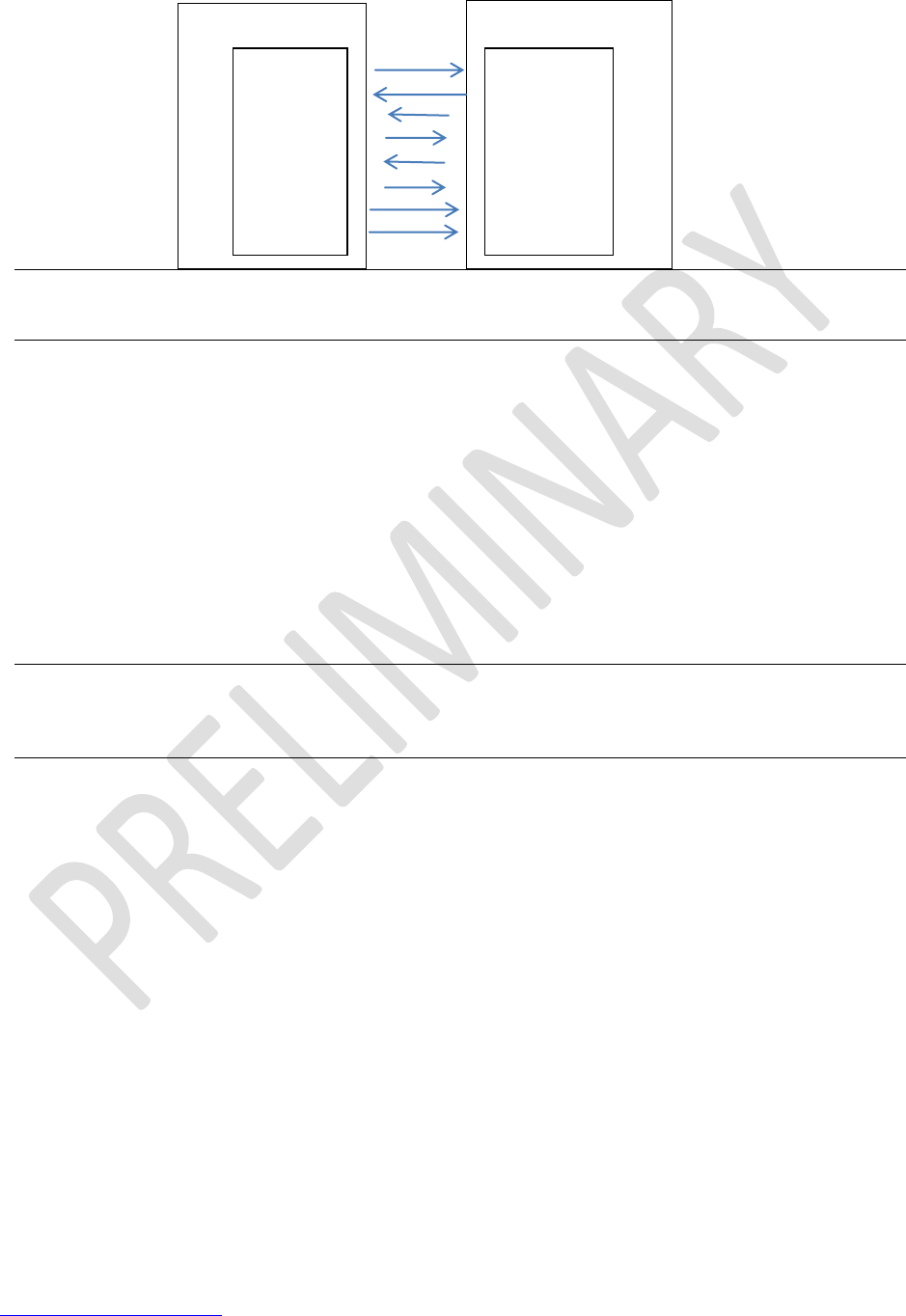
Class 1 Bluetooth v2.0 Module
User’s Guide
Americas: +1-800-492-2320 Option 2
Europe: +44-1628-858-940
Hong Kong: +852-2923-0610
www.lairdtech.com/bluetooth
16
CONN-GUIDE-BT730_v0.9
Note: The serial module output is at 3.3 V CMOS logic levels. Level conversion must be added
to interface with an RS-232 level compliant interface.
Some serial implementations link CTS and RTS to remove the need for handshaking. Laird does not
recommend linking CTS and RTS other than for testing and prototyping. If these pins are linked and the
host sends data at the point that the BT740 deasserts its RTS signal, then there is a significant risk that
internal receive buffers will overflow; this could lead to an internal processor crash. This also leads to a
drop in connection and may require a power cycle to reset the module. Laird recommends that the correct
CTS/RTS handshaking protocol be followed for proper operation.
5.2 SPI Bus
The module is a slave device that uses terminals SPI_MOSI, SPI_MISO, SPI_CLK, and SPI_CSB. This
interface is used for program firmware updates at the factory. Laird supplies a PC-based utility to allow a
firmware upgrade over the UART port. It is highly recommended that customers use this method for
updating firmware.
Note: The designer should be aware that no security protection is built into the hardware or
firmware associated with this port, so the terminals should not be permanently connected
in a PC application.
5.3 PCM Interface
PCM_OUT, PCM_IN, PCM_CLK, and PCM_SYNC carry up to three bi-directional channels of voice data,
each at 8 k samples/s. The format of the PCM samples can be 8-bit A-law, 8-bit μ-law, 13-bit linear, or16-
bit linear. The PCM_CLK and PCM_SYNC terminals can be configured as inputs or outputs, depending
on whether the module is the master or slave of the PCM interface. Please contact a Laird FAE for further
details.
The module is compatible with the Motorola SSI TM interface and interfaces directly to PCM audio
devices including the following:
5.3.1 Compatible Codec Chips
OKI 7702 single channel A-law and μ-law CODEC
Winbond W681360 13 bit linear CODEC
UART_TX
UART_RX
UART_CTS
UART_RTS
UART_DSR
UART_DTR
UART_RI
UART_DCD
BT730
Application - Host
/RXD
/TXD
/RTS
/CTS
/DTR
/DSR
/RING
/DCD
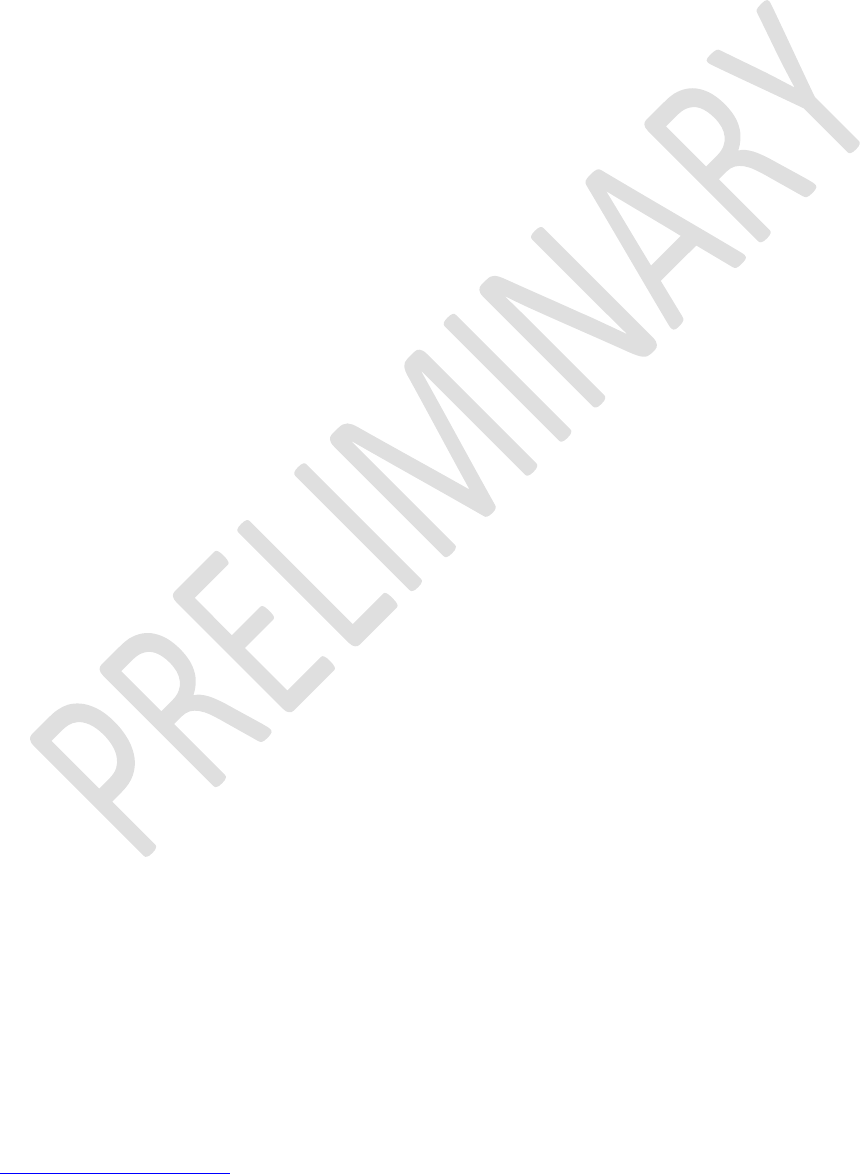
Class 1 Bluetooth v2.0 Module
User’s Guide
Americas: +1-800-492-2320 Option 2
Europe: +44-1628-858-940
Hong Kong: +852-2923-0610
www.lairdtech.com/bluetooth
17
CONN-GUIDE-BT730_v0.9
5.4 General Purpose I/O and ADC
5.4.1 GPIO
Seven lines of programmable bi-directional input/outputs (I/O) are provided that can be accessed either
via the UART port, or Over The Air (OTA) from a second Bluetooth unit. These can be used as data
inputs or to control external equipment. By using these in OTA mode, a BT730 module can be used for
control and data acquisition without the need for any additional host processor. Each of the GPIO[3:9]
ports can be independently configured to be either an input or output. A selection of ports can be
accessed synchronously.
The ports are powered from VCC. The mode of these lines can be configured and the lines are accessed
via S Registers 623 to 629.
5.4.2 ADC
The BT730 provides access to two 8-bit ADCs (Analogue 0 and 1). These provide an input range of 0 mV
to 1,800 mV, which can be read using the S registers 701 and 702.
Suitable external scaling and over-voltage protection should be incorporated in your design. The module
provides five samples per second at the UART with a baud rate of 115,200 or above.
6. AT COMMAND SET REFERENCE
6.1 Introduction
This document describes the protocol used to control and configure the following Laird Technologies
Bluetooth devices:
BT730-SA
BT730-SC
The protocol is similar to the industry standard Hayes AT protocol used in telephony modems which is
appropriate for cable replacement scenarios, as both types of devices are connection oriented. The
telephony commands have been extended to make the Laird device perform the two core actions of a
Bluetooth device, which is make/break a connection and Inquiry. Other AT commands are also provided
to perform ancillary functions, such as pairing, trusted device database management, and S register
maintenance.
Similar to telephony modems, the Laird device powers up in an unconnected state and only responds via
the serial interface. In this state, the Laird device does not respond to Bluetooth inquiries. Then, just like
controlling a modem, the host can issue AT commands which map to various Bluetooth activities. The
command set is extensive enough to allow a host to make connections which are authenticated and/or
encrypted or not authenticated and/or encrypted or any combination of these. Commands can be saved,
so that on a subsequent power-up the device is discoverable or automatically connects.
The device has a serial interface which can be configured for baud rates from 1200 up to 921600 and an
RF communications end point. The latter has a concept of connected and unconnected modes and the
former has a concept of command and data modes. This leads to the matrix of states shown in Table 6-1.
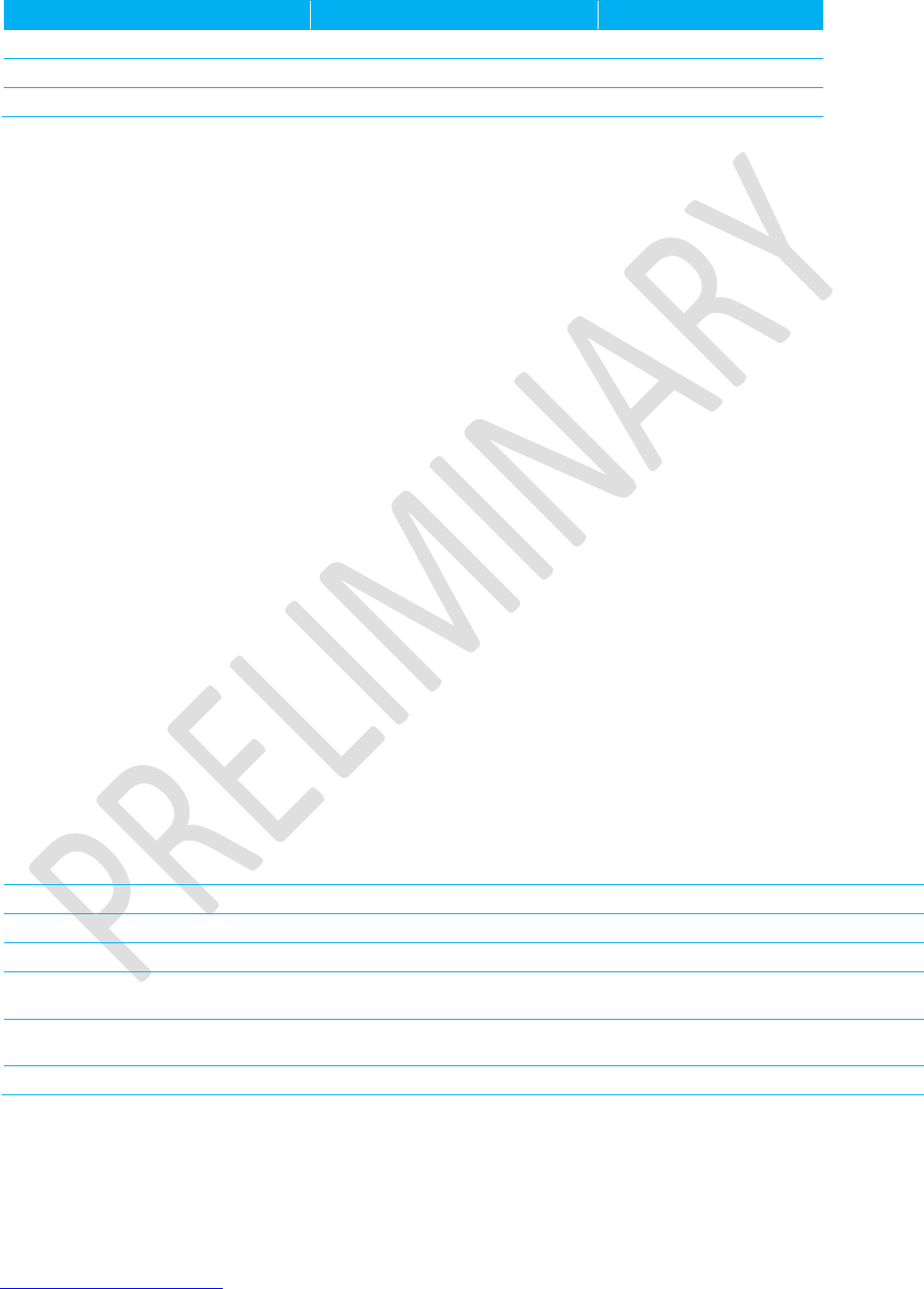
Class 1 Bluetooth v2.0 Module
User’s Guide
Americas: +1-800-492-2320 Option 2
Europe: +44-1628-858-940
Hong Kong: +852-2923-0610
www.lairdtech.com/bluetooth
18
CONN-GUIDE-BT730_v0.9
Table 6-1: Matrix of mode states
RF Unconnected
RF Connected
Local Command Mode
OK
OK
Remote Command Mode
ILLEGAL
OK
Data Mode
ILLEGAL
OK
The following combinations do not make sense and are ignored:
Data and RF Unconnected Mode
Remote Command and RF Unconnected Mode
Navigation between these states occurs using the AT commands which are described in detail in
subsequent sections.
6.2 Assumptions
The CSR (Cambridge Silicon Radio) BC04 chipset in Laird devices is memory resource limited. Therefore
it is not proposed that there be full implementation of the AT protocol as seen in modems. The claim
made for this device is that it has a protocol similar to an AT modem. In fact, the protocol is so similar that
existing source code written for modems can be used with very little modification with a Laird device.
The following assumptions are made:
All commands are terminated by the carriage return character 0x0D, which is represented by the
string <cr> in descriptions below this cannot be changed.
All responses from the Laird device have carriage return and linefeed characters preceding and
appending the response. These dual character sequences have the values 0x0D and 0x0A
respectively and shall be represented by the string <cr,lf>.
All Bluetooth addresses are represented by a fixed 12 digit hexadecimal string, case insensitive.
All Bluetooth Device Class codes are represented by a fixed six digit hexadecimal string, case
insensitive.
All new Bluetooth specific commands are identified by the string +BTx, where x is generally a
mnemonic of the intended functionality.
6.3 Commands
This section describes all available AT commands. Many commands require mandatory parameters and
some take optional parameters. These parameters are integer values, strings, Bluetooth addresses, or
device classes. The following convention is used when describing the various AT commands.
<bd_addr>
A 12 character Bluetooth address consisting of ASCII characters ‘0’ to ‘9’, ‘A’ to ‘F’ and ‘a’ to ‘f’.
<devclass>
A 6 character Bluetooth device class consisting of ASCII characters ‘0’ to ‘9’, ‘A’ to ‘F’ and ‘a’ to ‘f’.
n
A positive integer value.
m
An integer value (positive or negative) which can be entered as a decimal value or in hexadecimal if
preceded by the ‘$’ character. E.g. the value 1234 can also be entered as $4D2
<string>
A string delimited by double quotes. E.g. "Hello World". The " character MUST be supplied as
delimiters.
<uuid>
A 4 character UUID number consisting of ASCII characters ‘0’ to ‘9’, ‘A’ to ‘F’ and ‘a’ to ‘f’.
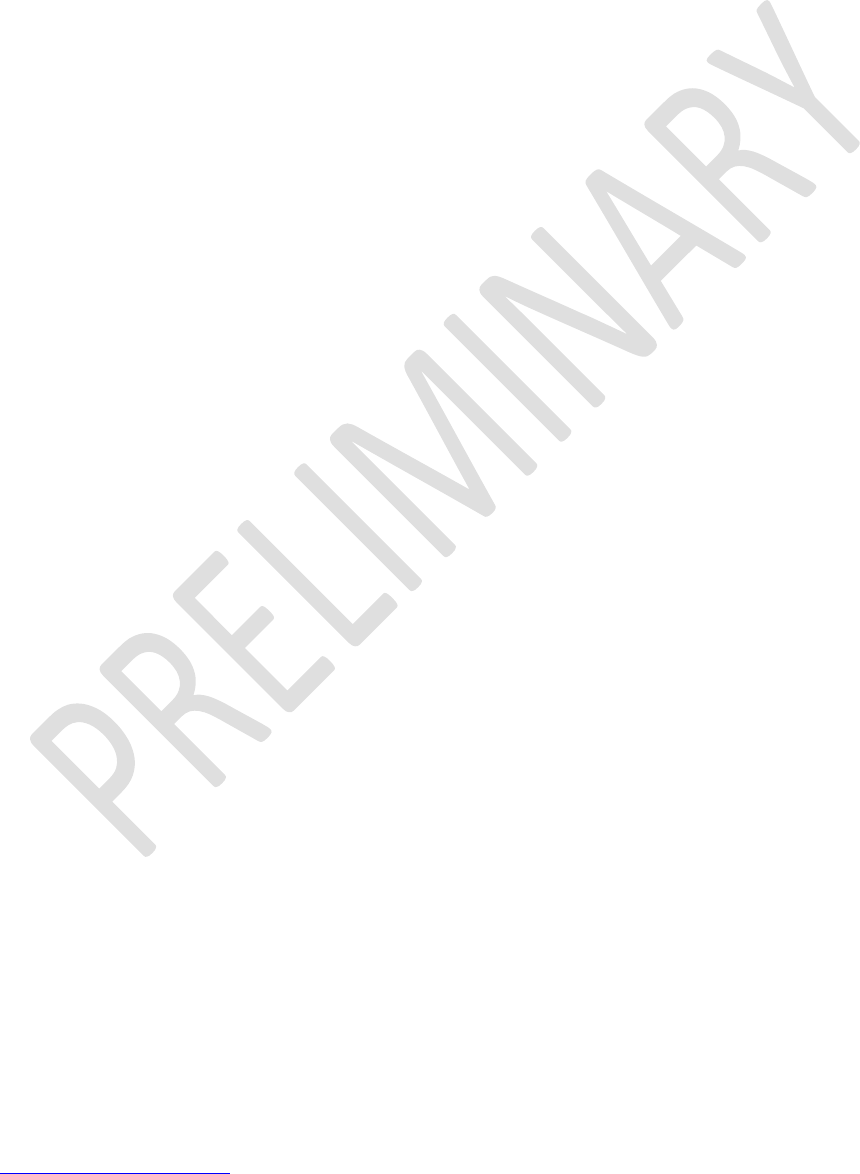
Class 1 Bluetooth v2.0 Module
User’s Guide
Americas: +1-800-492-2320 Option 2
Europe: +44-1628-858-940
Hong Kong: +852-2923-0610
www.lairdtech.com/bluetooth
19
CONN-GUIDE-BT730_v0.9
6.3.1 ^^^{Enter Local Command Mode}
When in data and connected mode, the host can force the device into a command and connected mode
so that AT commands can be issued to the device. The character in this escape sequence is specified in
the S2 register, therefore it can be changed. In addition, the escape sequence guard time is specified by
S Register 12. By default the guard time is set to 100 milliseconds. Refer to Section 6.6: Dropping
Connections for more information.
In modems this escape sequence is usually “+++”. “^^^” is specified to avoid confusion when the module
is providing access to a modem.
Response:<cr,lf>OK<cr,lf>
6.3.1 !!!{Enter Remote Command Mode}
When in data and connected mode, the host can force the remote device into a command and connected
mode so that AT commands can be issued to the device remotely. The escape sequence guard time is
specified by S Register 12 and is the same as per the ^^^ escape sequence. By default the guard time is
set to 100 milliseconds. The remote device issues ATO as normal to return to data mode. (Refer to 2.2.12)
For this command to be effective, S Register 536 must be set to 1.
Response:<cr,lf>OK<cr,lf>
6.3.2 AT
Used to check the module is available.
Response:<cr,lf>OK<cr,lf>
6.3.3 ATA{Answer Call}
Accept an incoming connection, which is indicated by the unsolicited string
<cr,lf>RING 123456789012<cr,lf> every second. 123456789012 is the Bluetooth address of the
connecting device.
Response: <cr,lf>CONNECT 123456789012<cr,lf>
6.3.4 ATD<U><Y><bd_addr>,<uuid> {Make Outgoing Connection}
Make a connection to a device with Bluetooth address <bd_addr> and profile <uuid>. The <uuid> is an
optional parameter which specifies the UUID of the profile server to attach to; if not supplied, then the
default UUID from S Register 101 is used. Because this is a Laird device which utilises the RFCOMM
layer as described in the Bluetooth specification, it implies that only profiles based on RFCOMM can be
accessed.
If <U> is not specified, then authentication is as per register 500, otherwise the connection will be
authenticated.
If <Y> is not specified, then encryption is as per register 501, otherwise the connection will have
encryption enabled.
The timeout is specified by S register 505.
Response: <cr,lf>CONNECT 123456789012<cr,lf>
Or <cr,lf>NO CARRIER<cr,lf>
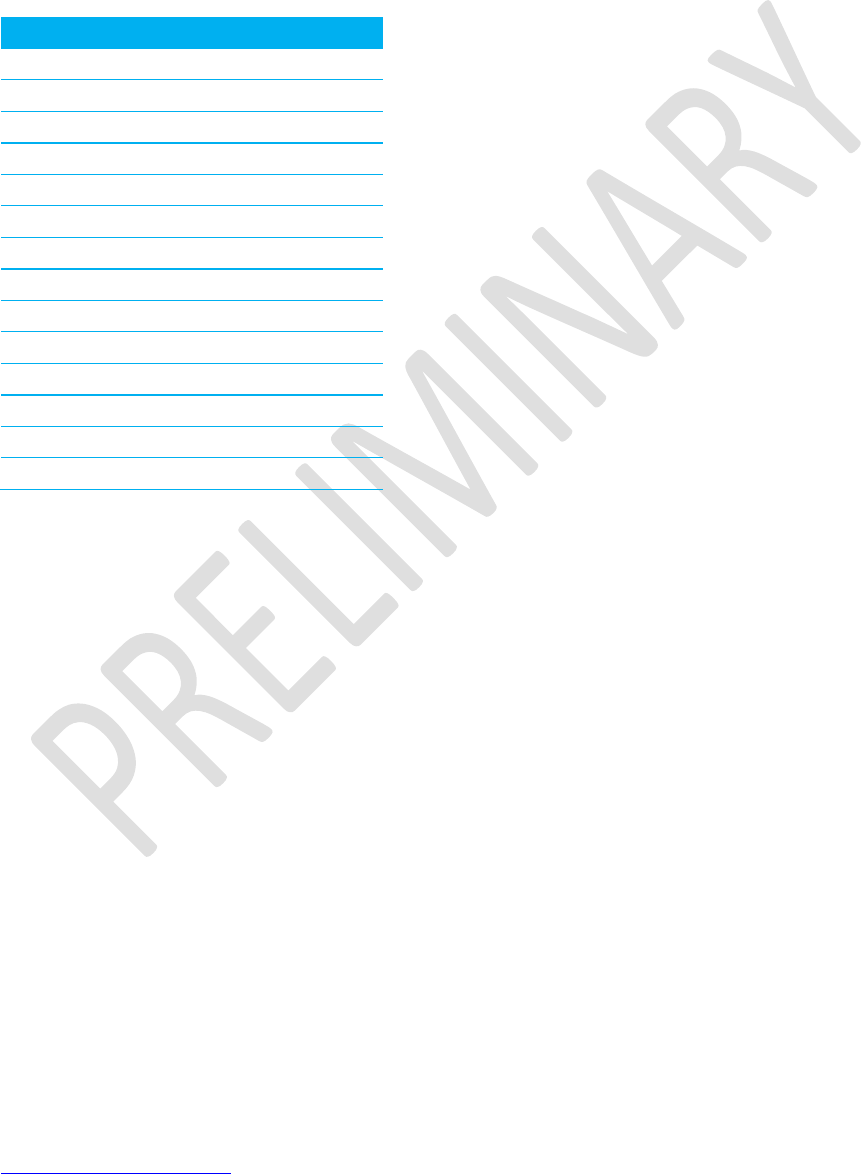
Class 1 Bluetooth v2.0 Module
User’s Guide
Americas: +1-800-492-2320 Option 2
Europe: +44-1628-858-940
Hong Kong: +852-2923-0610
www.lairdtech.com/bluetooth
20
CONN-GUIDE-BT730_v0.9
Due to a known issue in the Bluetooth RFCOMM stack, it is not possible to make more than 65525
outgoing connections. Therefore if that number is exceeded, then the connection attempt fails with the
following response:
Response: <cr,lf>CALL LIMIT<cr,lf>
Or <cr,lf>NO CARRIER<cr,lf>
In that case, issuing an ATZ to reset the device resets the count to zero and allows more connections.
The following RFCOMM based UUIDs are defined in the Bluetooth specification:
Profile Name
UUID
Serial Port
1101
LAN Access Using PPP
1102
Dialup Networking
1103
IrMC Sync
1104
OBEX Object Push
1105
OBEX File Transfer
1106
IrMC Sync Command
1107
Headset
1108
Cordless Telephony
1109
Intercom
1110
Fax
1111
Audio Gateway
1112
WAP
1113
WAP_CLIENT
1114
6.3.5 ATD<U><Y><bd_addr>,<ServiceName>{Make Connection}
Make a connection to device with Bluetooth address <bd_addr> and profile specified via S Reg 101 AND
which has a service name starting with the string <ServiceName>. The service name parameter is a
string delimited by “.
If <U> is not specified, then authentication is as per register 500, otherwise the connection is
authenticated.
If <Y> is not specified, then encryption is as per register 501, otherwise the connection has encryption
enabled.
The timeout is specified by S register 505.
Response: <cr,lf>CONNECT 123456789012<cr,lf>
Or <cr,lf>NO CARRIER<cr,lf>
6.3.6 ATD<U><Y>L{Remake Connection}
Make a connection with the same device and service as that specified in the most recent ATD command.
The <UY> modifiers are optional. An error is returned if the ‘L’ modifier is specified as well as a Bluetooth
address.
If both ‘L’ and ‘R’ modifiers are specified then an error is returned.

Class 1 Bluetooth v2.0 Module
User’s Guide
Americas: +1-800-492-2320 Option 2
Europe: +44-1628-858-940
Hong Kong: +852-2923-0610
www.lairdtech.com/bluetooth
21
CONN-GUIDE-BT730_v0.9
Response: <cr,lf>CONNECT 123456789012 AE<cr,lf>
Or <cr,lf>NO CARRIER<cr,lf>
6.3.7 ATD<U><Y>R{Make Connection to peer specified in AT+BTR}
Make a connection with the device address specified in the most recent AT+BTR command. The service
is as specified in S Register 101. The <UY> modifiers are optional. An error is returned if the ‘R’ modifier
is specified as well as a Bluetooth address.
If both ‘R’ and ‘L’ modifiers are specified then an error is returned.
Response: <cr,lf>CONNECT 123456789012 AE<cr,lf>
Or <cr,lf>NO CARRIER<cr,lf>
6.3.8 ATEn{Enable/Disable Echo}
This command enables or disables the echo of characters to the screen. A valid parameter value is
written to S Register 506.
E0
Disable echo.
E1
Enable echo.
All other values of n generate an error.
Response: <cr,lf>OK<cr,lf>
Or <cr,lf>ERROR nn<cr,lf>
6.3.9 ATH{Drop Connection}
Drop an existing connection or reject an incoming connection indicated by unsolicited RING messages.
Response: <cr,lf>NO CARRIER<cr,lf>
6.3.10 ATIn{Information}
This returns the following information about the Laird device.
I0
The product name/variant.
I1
The CSR firmware build number.
I2
The Laird firmware build number. For internal use only.
I3
The Laird firmware revision.
I4
A 12 digit hexadecimal number corresponding to the Bluetooth address of the Laird device.
I5
The manufacturer of this device.
I6
The maximum size of trusted device database.
I7
The manufacturer of the Bluetooth chipset.
I8
The chipset format.
I9
0 if not in a connect state and 1 if in a connect state.
I11
The reason why a “NO CARRIER” resulted in the most recent attempt at making an outgoing
connection. Where the response values are as follows:
0 = No prior connection

Class 1 Bluetooth v2.0 Module
User’s Guide
Americas: +1-800-492-2320 Option 2
Europe: +44-1628-858-940
Hong Kong: +852-2923-0610
www.lairdtech.com/bluetooth
22
CONN-GUIDE-BT730_v0.9
1 = Connection timeout
2 = Connection attempt cancelled
3 = Normal disconnection
4 = Peer device has refused connection
5 = Service profile <uuid> requested not available on remote device
6 = Connection has failed
32 = ATH was entered
33 = Incoming connection aborted because too many rings
34 = Unexpected incoming connection
35 = Invalid address
36 = DSR is not asserted
37 = Call limit of 65531 connections has been reached
38 = Pairing in progress
39 = No link key
40 = Invalid link key
255 = Unknown reason
I12
The last ERROR response number.
I13
The Sniff status is returned as follows:
Response:<cr,lf>a:b,c,d,e<cr,lf>OK<cr,lf>
Where ‘a’ = 0 when not online and 1 when online and Sniff has been enabled, ‘b’ is the Sniff
Attempt parameter, ‘c’ is the Sniff timeout parameter, ‘d’ is the minimum sniff interval and ‘e’
is the maximum sniff interval. All parameters ‘b’, ’c’, ’d’ and ‘e’ are given as Bluetooth slots
which are 625 microseconds long converted from values of S Registers 561, 562, 563, and
564 respectively.
I14
The current boot mode (only for firmware 1.18.0 and newer)
I15
The maximum length of an AT command, including the terminating carriage return (only for
firmware 1.6.10 and newer).
I16
The size of AT command input buffer.
I20
Returns the number of bytes pending to be sent in the RF buffer when a connection is up.
I33
Version number of Multipoint application
Note: ATI is provided for compatibility in multipoint mode; other AT commands are not
available.
I42
State information. Where the response values are as follows:
13 = Not Open
14 = Open Idle
15 = Ringing
16 = Online Command
172 to 177 = waiting for connectable and/or discoverable where the lowest significant digit
equates to the value stored in S Register 512 or 555.
Note: When n=16, ATI9 returns 1.
I101
The RSSI value in dBm. If a connection does NOT exist then a value of -32786 is returned.
A value of 0 means the RSSI is within the golden range; because this is a very large band,
RSSI is not always a useful indicator. Use ATI111 instead which returns the bit error rate.
I111
Returns LinkQual which in the CSR chipset is defined as BER (bit error rate). This returns a
value which is the number of bits in error out of 1 million. Hence a value of 0 is best, and
larger values are worse. A value approaching 1000 (BER = 0.1%) is an indication that the
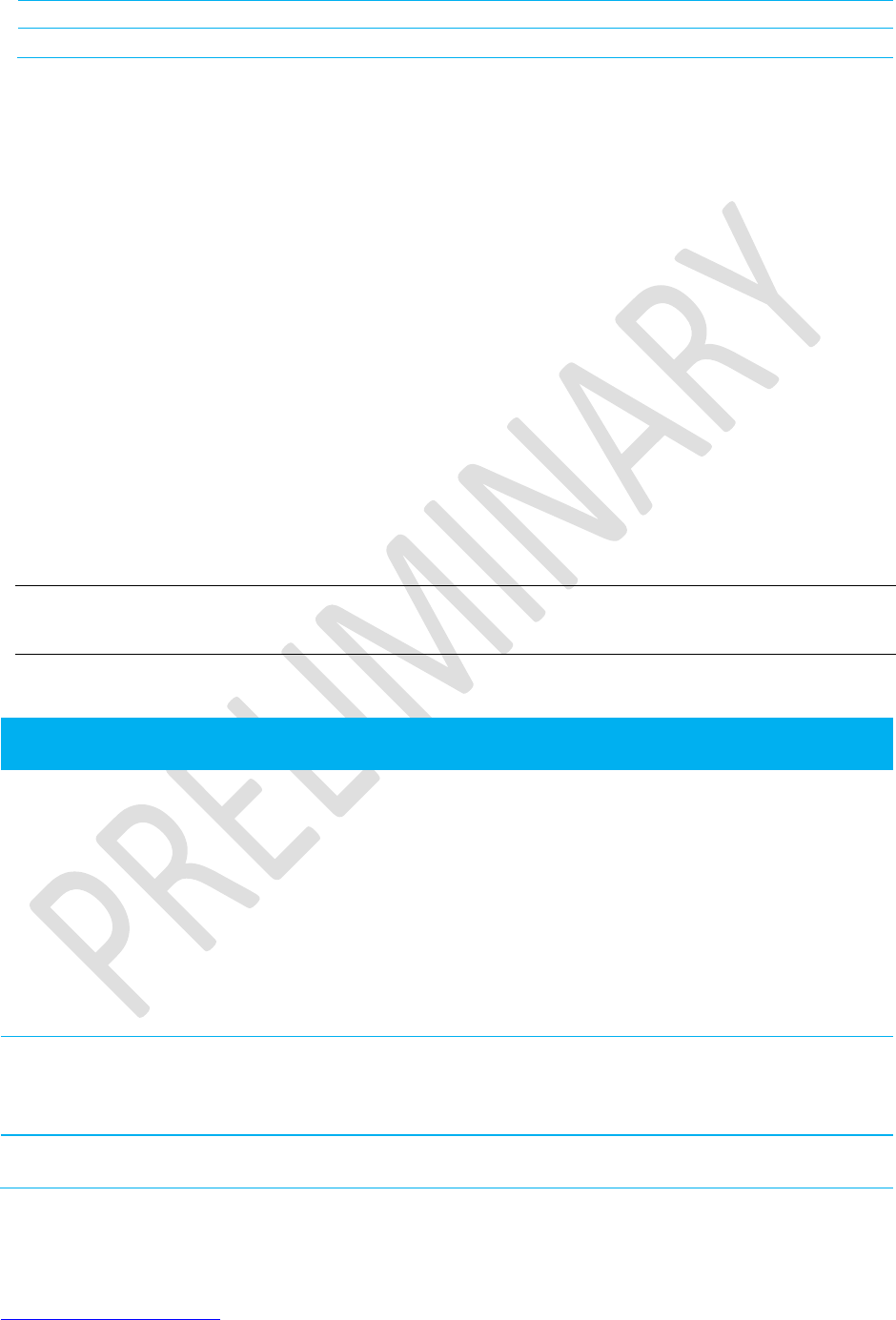
Class 1 Bluetooth v2.0 Module
User’s Guide
Americas: +1-800-492-2320 Option 2
Europe: +44-1628-858-940
Hong Kong: +852-2923-0610
www.lairdtech.com/bluetooth
23
CONN-GUIDE-BT730_v0.9
link is bad and a large number of Bluetooth packets are being lost.
I333
Returns extended firmware version number.
For recognised values of n. All other values of n generate an error.
Response: <cr,lf>As Appropriate<cr,lf>OK<cr,lf>
Or <cr,lf>ERRORnn<cr,lf>
6.3.11 ATO{Enter Data Mode}(letter ‘o’)
Return to data mode. Assume that the module is in data mode after OK is received. Responds with an
error if there is no Bluetooth connection.
Response: <cr,lf>CONNECT 123456789012<cr,lf>
Or <cr,lf>ERRORnn<cr,lf>
6.3.12 ATSn=m{Set S Register}
As with modems, the Laird Bluetooth module employs a concept of registers which are used to store
parameters (such as escape sequence character and inquiry delay time) as listed in detail below.
The value part ‘m’ can be entered as decimal or hexadecimal. A hexadecimal value is specified via a ‘$’
leading character. For example, $1234 is a hexadecimal number.
When S register values are changed, the changes are not stored in non-volatile memory until the AT&W
command is used.
Note: AT&W does not affect S registers 520 to 525 or 1000 to 1010 as they are updated in non-
volatile memory when the command is received.
Table 6-2: S Registers
Reg.
#
Defaul
t
Range
Comment
S0
1
-1..15
Number of RING indication before automatically answering an
incoming connection. A value of 0 disables autoanswer. If -1, then
autoanswer on one RING and do NOT send RING/CONNECT
response to the host. This emulates a serial cable replacement
situation.
Setting values >/= 0, resets S Register 504 to 0 and <0 forces 504 to
1.
If S0 <> 0 and S100 <> 0 then S0 must be < S100. If a value is
entered which violates this rule, then ERROR 29 is sent in response.
If S504 =1 then this register will return -1, regardless of the actual
value stored in non-volatile memory.
S2
0x5E
0x20..0x7E
Escape sequence character. It is not ‘+’ by default as a Bluetooth
serial link can be used to connect to a mobile phone which exposes
an AT command set, which in turn uses ‘+’ as default. So if both used
‘+’ there is confusion. 0x5e is the character ‘^’.
S12
100
40..5000
Escape sequence guard time in milliseconds, with a granularity of 20
ms. New values are rounded down to the nearest multiple of 20 ms.
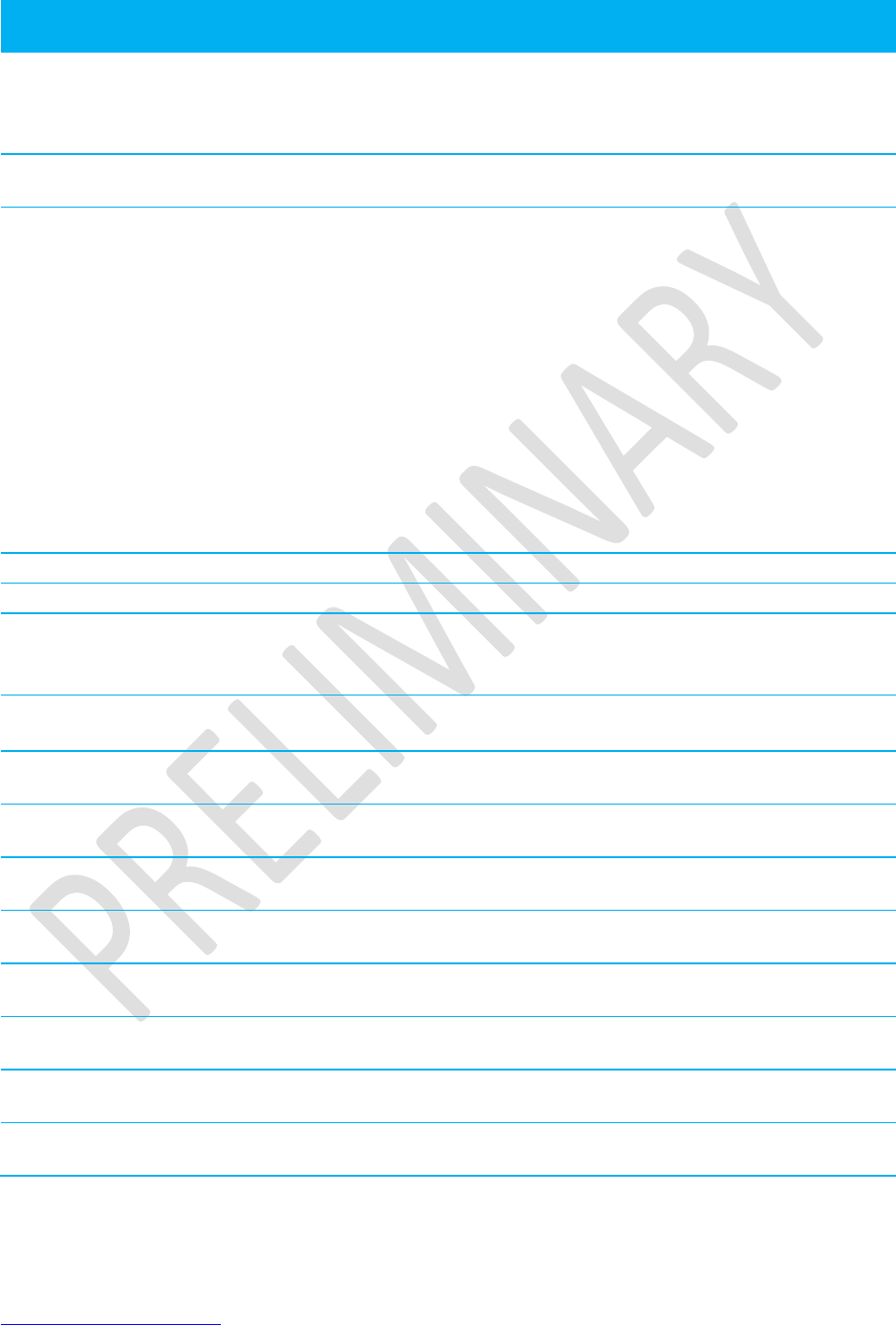
Class 1 Bluetooth v2.0 Module
User’s Guide
Americas: +1-800-492-2320 Option 2
Europe: +44-1628-858-940
Hong Kong: +852-2923-0610
www.lairdtech.com/bluetooth
24
CONN-GUIDE-BT730_v0.9
Reg.
#
Defaul
t
Range
Comment
S100
15
0..15
Number of RING indications before an auto disconnection is initiated.
A value of 0 disables this feature.
If S0 <> 0 and S100 <> 0 then S0 must be < S100. If a value is
entered which violates this rule, then ERROR 29 is sent in response.
S101
$1101
0..$ffff
UUID of default SPP based profile when not specified explicitly in the
ATD command.
S102
1
1..$7F
Defines a set of bits masks for enabling profile servers. Values can
be ORed.
1 is Serial Port Profile
2 is Headset ( S Reg 580 allows remote volume control bit to
be adjusted)
4 is DUN
8 is Audio Gateway (Headset)
16 is Handsfree (S Reg 581 allows supported feature field to be
adjusted)
32 is OBEX FTP
64 is Audio Gateway (Handsfree)
It is recommended that, due to memory resource issues, no more
than two profiles are activated at the same time.
S103
1
1..7
Boot mode on cold boot.
S126
?
0 .. 0xFFFF
Primer for changing to Multipoint mode
S127
?
0 .. 0xFFFF
0x100 for AT mode
0x200 for Multipoint mode
Other values are reserved
S400
0
0..1
Piodeamon.
1 = Hostless Audio gateway Operation
S401
1000
100..5000
In Hostless Audio Gateway Operation – GPIO4 flash period while
inquiring
S402
0
0..100
In Hostless Audio Gateway Operation – GPIO4 flash duty cycle while
inquiring
S403
1000
100..5000
In Hostless Audio Gateway Operation – GPIO4 flash period when
there is an ACL connection only to the headset
S404
0
0..100
In Hostless Audio Gateway Operation – GPIO4 flash duty cycle when
there is an ACL connection only to the headset
S405
1000
100..5000
In Hostless Audio Gateway Operation – GPIO4 flash period when
there is an ACL and SCO connection to the headset
S406
0
0..100
In Hostless Audio Gateway Operation – GPIO4 flash duty cycle when
there is an ACL and SCO connection to the headset
S407
0
0..1
In Hostless Audio Gateway Operation – ‘Lift-Hook’ output follows
SCO state
S408
0
0..1
In Hostless Audio Gateway Operation – if set to 1 then delete trusted
device database when inquiry is initiated to look for headsets
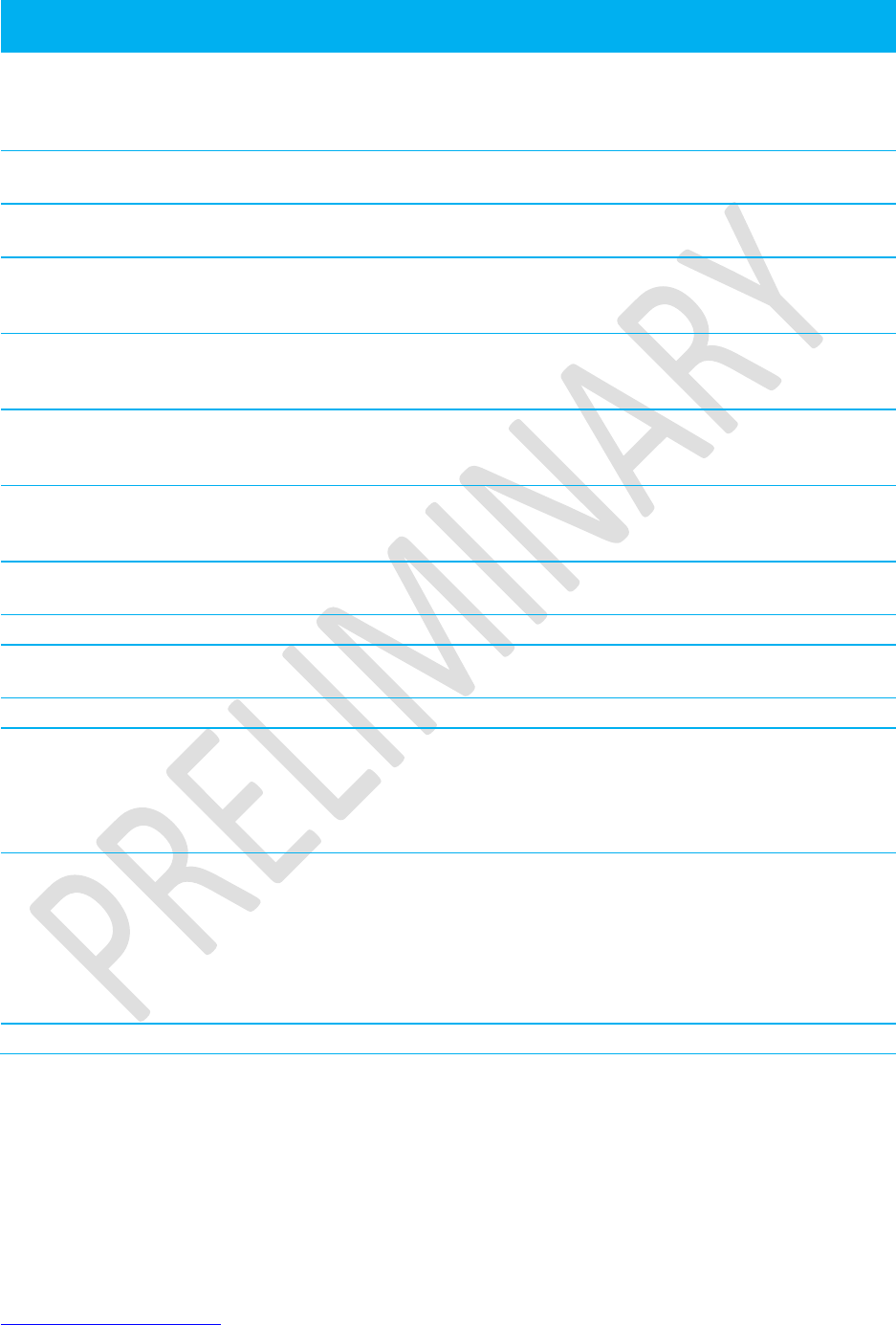
Class 1 Bluetooth v2.0 Module
User’s Guide
Americas: +1-800-492-2320 Option 2
Europe: +44-1628-858-940
Hong Kong: +852-2923-0610
www.lairdtech.com/bluetooth
25
CONN-GUIDE-BT730_v0.9
Reg.
#
Defaul
t
Range
Comment
S409
0
0..1
In Hostless Audio Gateway Operation – when inquiring and pairing,
use the device class code of the response to classify which UUID to
connect to the headset when initiating a Bluetooth connection from
the gateway
S410
0
0..1
In AudioGatewayHostless mode, if set to 1, AG”” async responses
will be forced out from the UART – good for debugging
S411
500
4000
In AudioGatewayHostless mode, Short press duration in milliseconds.
500 msec granularity
S412
500
4000
In AudioGatewayHostless mode, component of medium press
duration in milliseconds. 500 msec granularity. Actual duration is this
value plus S411
S413
500
4000
In AudioGatewayHostless mode, component of long press duration in
milliseconds. 500 msec granularity. Actual duration is this value plus
S412 plus S411
S414
30
240
In AudioGatewayHostless mode, the inquiry to search for headsets is
aborted after this amount of time, in seconds. The granularity is 30
seconds.
S420
0
1
If this is set, then the module maintains a seconds counter. Use
ATI420 to read the count value. It is basically the time the module has
been powered up in seconds.
S500
0
0..1
Authentication for outgoing connections. Set to 1 to enable
authentication.
S501
0
0..1
Encryption for outgoing connections. Set to 1 to enable encryption.
S502
0
0..1
Authentication for incoming connections. Set to 1 to enable
authentication.
S503
0
0..1
Encryption for incoming connections. Set to 1 to enable encryption.
S504
0
0..1
Setting to 1 forces S0 to -1 and suppresses messages arising from
connections or pairing. E.g. CONNECT, NO CARRIER, RING, PAIR
etc.
Suppressing connection-based messaged allows the Laird device to
be configured in cable replacement mode.
S505
10
2..120
Minimum delay before abandoning connection attempt as a master.
Referenced by ATD. In units of seconds. See S Registers 530 and
543.
Please note that as disconnection time can vary, this register only
guarantees the minimum delay. Note that for invalid addresses
specified in the ATD command, the “NO CARRIER” response is
immediate. See S register 560 for specifying disconnect max timeout.
S506
1
0..1
Enable/Disable echoes. The ATEn command also affects this.
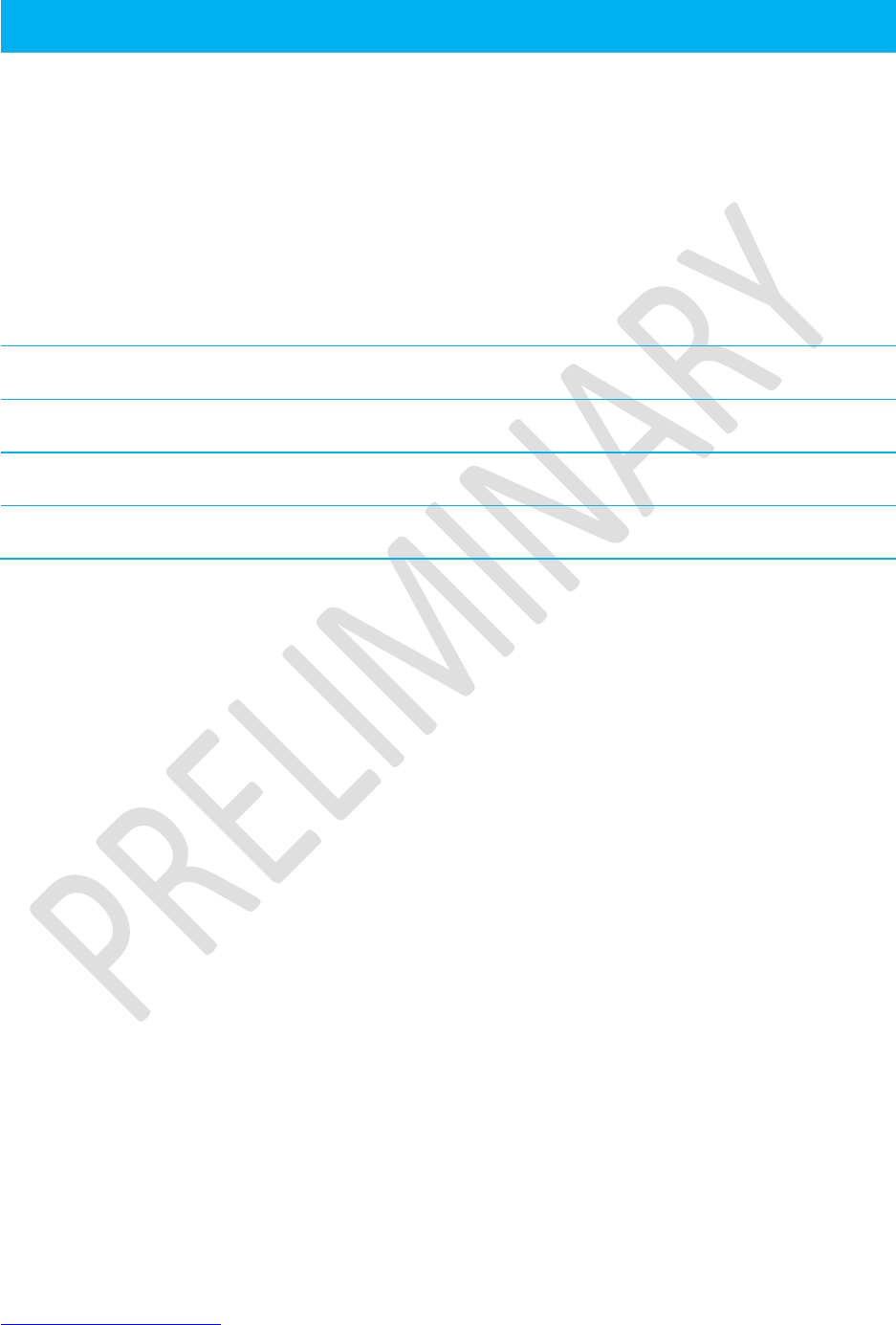
Class 1 Bluetooth v2.0 Module
User’s Guide
Americas: +1-800-492-2320 Option 2
Europe: +44-1628-858-940
Hong Kong: +852-2923-0610
www.lairdtech.com/bluetooth
26
CONN-GUIDE-BT730_v0.9
Reg.
#
Defaul
t
Range
Comment
S507
0
0..2
When set to 0, a connection can be dropped using ^^^ escape
sequence only and the state of DSR line is ignored.
When set to 1, a connection can be dropped using EITHER the ^^^
escape sequence OR the DSR handshaking line. When set to 2, a
connection can only dropped using a deassertion of DSR. Mode 2
provides for the highest data transfer rate.
If the status of the DSR line is to be conveyed to the remote device
as a low bandwidth signal then this register MUST be set to 0,
otherwise a deassertion of DSR will be seen as a request to drop the
Bluetooth connection.
This register affects S Register 536 – see details of 536.
For the Go blue Activator variant this can only be set to 0.
S508
640
10..2550
Page Scan Interval in milliseconds. Minimum is 11.25 ms so 10/11
ms gives 11.25ms.
S509
320
10..2550
Page Scan Window in milliseconds. Minimum is 11.25 ms so 10/11
ms gives 11.25 ms.
S510
640
10..2550
Inquiry Scan Interval in milliseconds. Minimum is 11.25 ms so 10/11
ms gives 11.25ms.
S511
320
10..2550
Inquiry Scan Window in milliseconds. Minimum is 11.25 ms so 10/11
ms gives 11.25 ms.
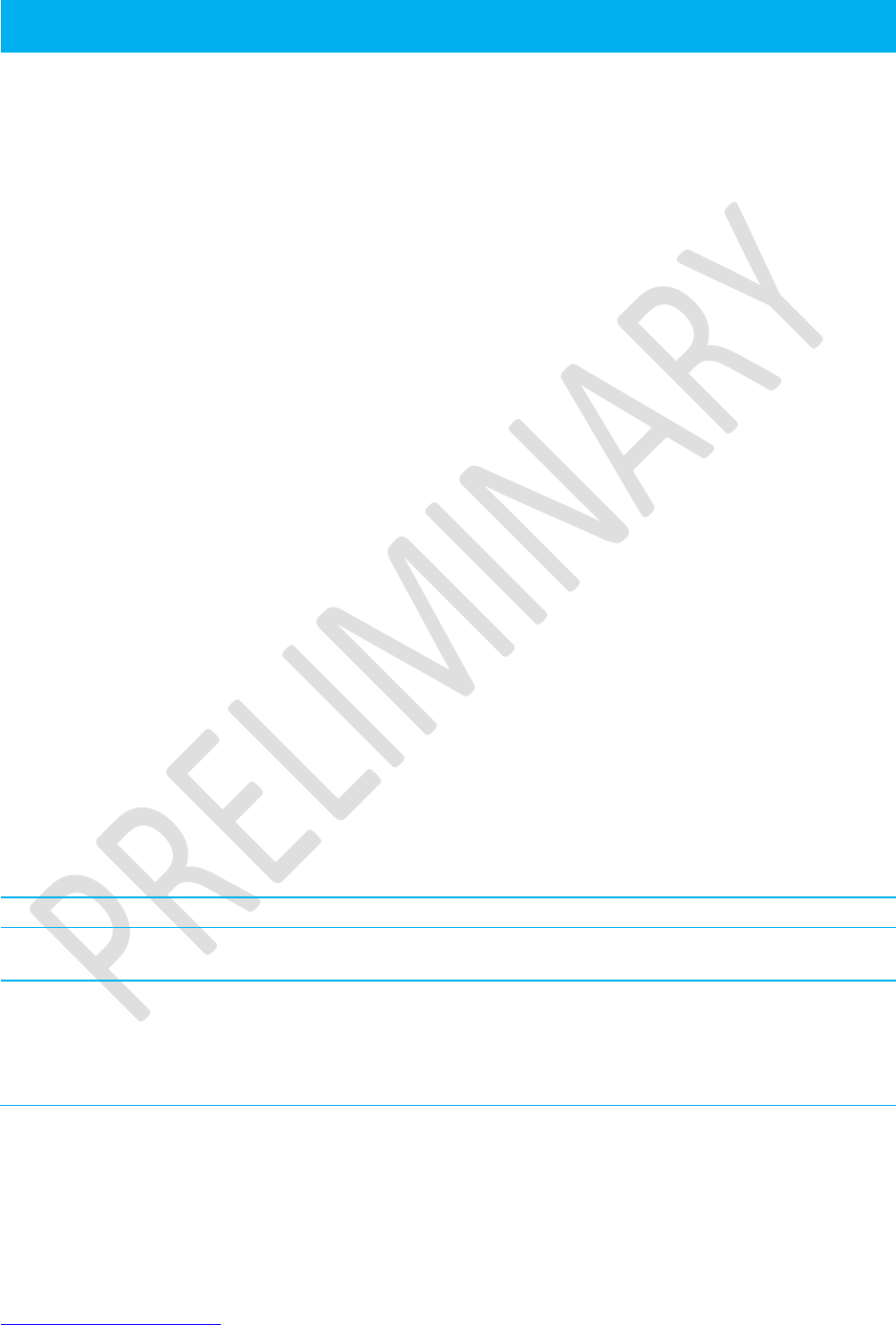
Class 1 Bluetooth v2.0 Module
User’s Guide
Americas: +1-800-492-2320 Option 2
Europe: +44-1628-858-940
Hong Kong: +852-2923-0610
www.lairdtech.com/bluetooth
27
CONN-GUIDE-BT730_v0.9
Reg.
#
Defaul
t
Range
Comment
S512
1
0..7
Specify power up state.
When set to 0, AT+BTO is required to open the device for Bluetooth
activity.
When set to 1, it proceeds to a state as if AT+BTO was entered.
When set to 2, it is discoverable only, similar to issuing AT+BTQ.
When set to 3, it is connectable but not discoverable e.g. AT+BTG
When set to 4, it is connectable and discoverable e.g. AT+BTP.
When set to 5, it is like 2, but all UART RX traffic is discarded in
absence of a connection while DSR is asserted. If DSR is not
asserted, then it behaves exactly as per mode 2.
When set to 6, it is like 3, but all UART RX traffic is discarded in
absence of a connection while DSR is asserted. If DSR is not
asserted, then it behaves exactly as per mode 3.
When set to 7, it is like 4, but all UART RX traffic is discarded in
absence of a connection while DSR is asserted. If DSR is not
asserted, then it behaves exactly as per mode 4.
Note: By implication, a change to this can only be seen after a
power cycle AND if AT&W is actioned prior to the power
cycle.
If S Reg 554 is non-zero and this register is between 2 and 7
inclusive, then the value of S554 specifies the time in seconds that
the device will remain in the specified mode after power up. On
timeout, the device falls back to the mode specified in S Register 555.
In modes 5, 6, and 7, when all RX activity is ignored, only the special
command (capitalised) AT+BT&BISM& terminated by a <cr> forces
the module temporarily back into modes 2,3 and 4 respectively.
In some firmware builds, S Registers 565 to 569 inclusive are visible,
which allows the start-up mode to depend on the state of RI line
(Setting S Reg 565 forces the RI pin to be configured as an input).
For this feature to be active, S Reg 565 should be set to 1. In that
case, on start-up, if RI is asserted, then the start-up mode is defined
by S Reg 566 and if deasserted then S Reg 567.
S513
1
0..1
Pairing Authentication, 1 = Enable
S514
10
1..60
Pairing Timeout in seconds. This includes the time a host takes to
supply the PIN number when PIN? messages are indicated.
S515
0x001
F00
0..
0xFFFFFF
Default Device Class Code to be used with AT+BTO when it is not
explicitly specified. When queried, the value is always printed as a
hexadecimal number.
To change the device class of the module, after AT+BTO, use the
command AT+BTC.
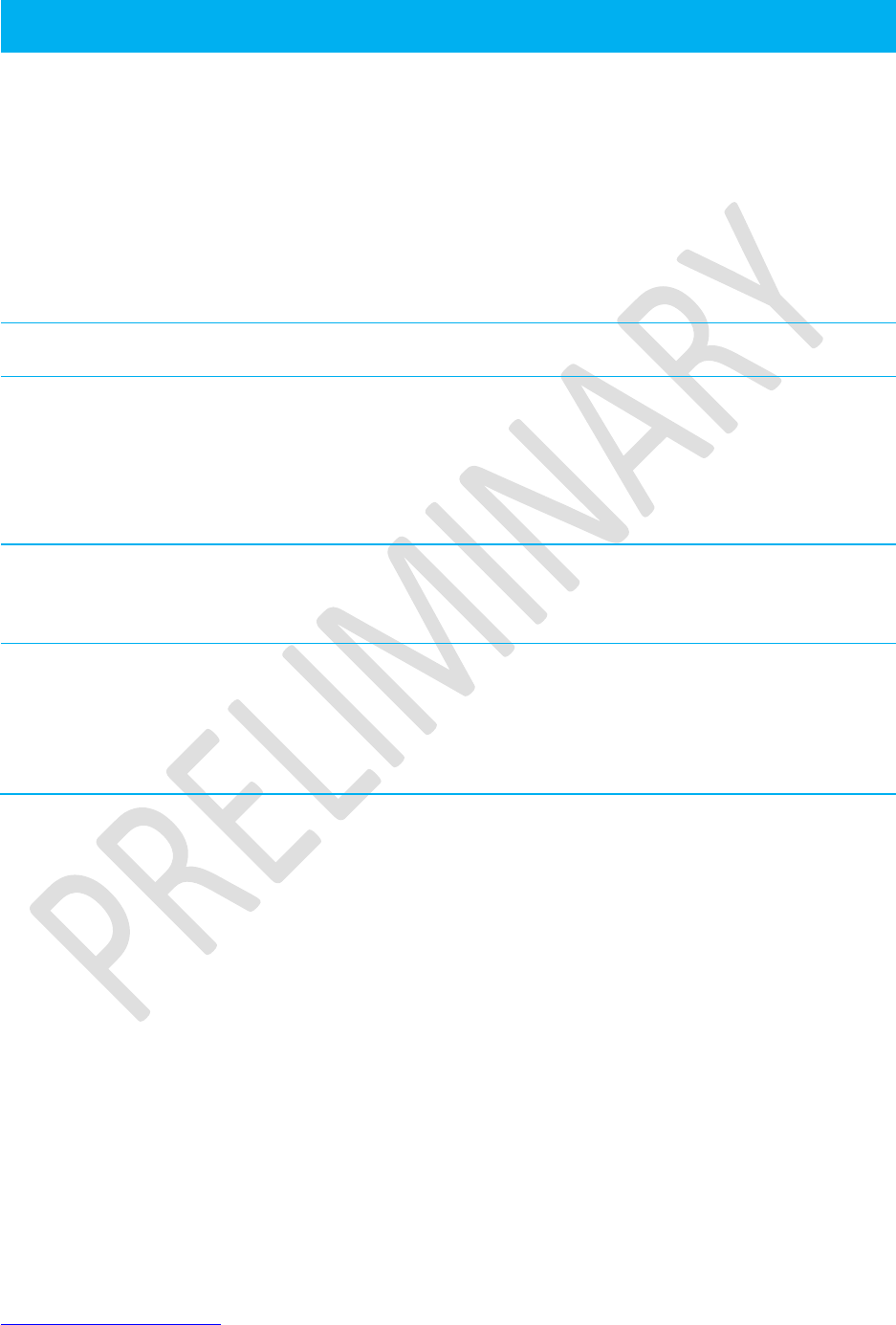
Class 1 Bluetooth v2.0 Module
User’s Guide
Americas: +1-800-492-2320 Option 2
Europe: +44-1628-858-940
Hong Kong: +852-2923-0610
www.lairdtech.com/bluetooth
28
CONN-GUIDE-BT730_v0.9
Reg.
#
Defaul
t
Range
Comment
S516
0x000
000
0..0x2FFFF
FF
Default Device Class filter to be used with AT+BTI when it is not
explicitly specified. When queried the value is always printed as a hex
number.
The seventh most significant digit, can be 0, 1, or 2, and is used to
specify the type of device class filter.
When 0, it specifies no filtering.
When 1, it specifies an AND mask and all 24 bits are relevant
When 2, it specifies a filter to look for devices with matching major
device class which occupies a 5 bit field from bits 8 to 12 inclusive
(assuming numbering starts at bit 0). All other 19 bits MUST be set to
0.
S517
20
2..61
Inquiry Length in units of seconds. This parameter is referenced by
the AT+BTI command
S518
8
0..255
Maximum number of responses from an inquiry request. This
parameter is reference by the AT+BTI command. If this number is set
too high, then AT+BTI will return ERROR 27. For a particular
firmware revision, determine the effective maximum value by trial and
error. That is, set to a high value, send AT+BTI and if ERROR 27 is
returned, then retry with a smaller value. This effective max value
remains unchanged for that particular firmware build.
S519
500
100..3000
When S507>0, and in a connection, DSR can be used to change
from data to command state by deasserting the DSR line for less than
the time specified in this register. This value is rounded down to the
nearest 100 ms.
S520
TBC
1200..1152
00
Change to a standard baud rate. The effect is immediate and the OK
is sent at the new baud rate. Only one of the following baud rates are
accepted: 1200, 2400, 4800, 9600, 19200, 28800, 38400, 57600,
115200.
If S register 525=1, then the maximum baud rate is limited to 115200.
See S Register 526 for further information.
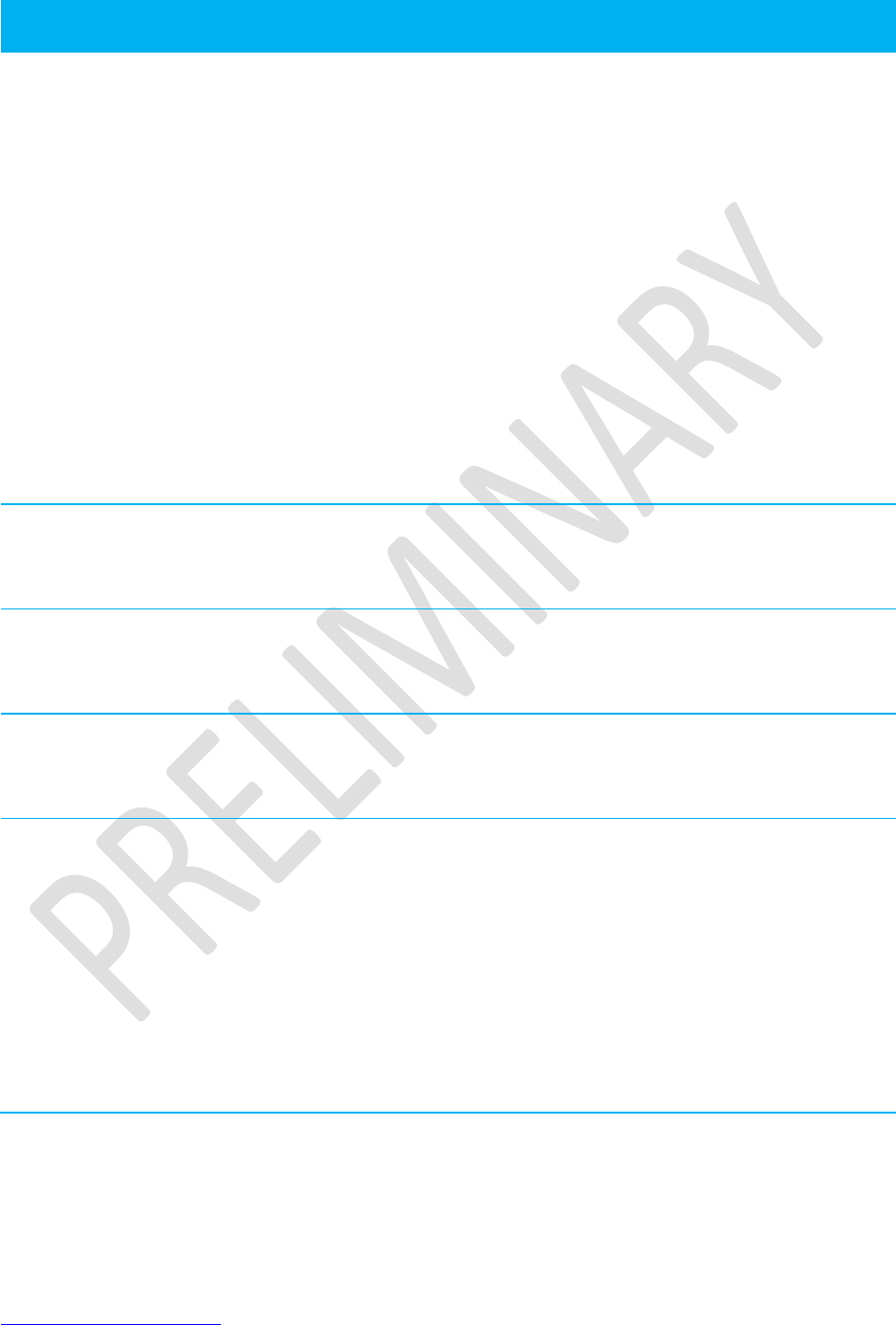
Class 1 Bluetooth v2.0 Module
User’s Guide
Americas: +1-800-492-2320 Option 2
Europe: +44-1628-858-940
Hong Kong: +852-2923-0610
www.lairdtech.com/bluetooth
29
CONN-GUIDE-BT730_v0.9
Reg.
#
Defaul
t
Range
Comment
S521
TBC
1200..9216
00
Change baud rate to non-standard value. Laird modules support any
baud rate. The only limitation is the integer arithmetic involved, which
may adjust the applied rate slightly. If the internally computed baud
rate is more than 2% offset from the desired input value, then an
ERROR is returned and the old baud rate prevails. To inspect the
actual baud rate, do ATS521?
S521 should only be used for non-standard baud rates. For standard
baud rates use S520.
The effect is immediate and the OK is sent at the new baud rate.
If S Register 525=1, then the max baud rate is limited to 115200
In the event that a non-standard baud rate is requested, it is entirely
possible that the host is not capable of generating such a baud rate.
In this case the Laird Technologies device cannot be communicated
with. If this happens, there is a procedure to recover from this
situation which is described in section titled “Factory Default Mode”
The default is 9600 for the Laird module and 115200 for other Laird
devices.
See S Register 526for further information.
S522
1
1
1 = CTS/RTS hardware handshaking enabled
For the Go blue Activator variant of the module this register is read
only.
See S Register 526 for further information.
S523
1
1..2
Number of Stop bits
For the Go blue Activator variant of the module this register is read
only.
See S Register 526 for further information.
S524
0
0..2
Parity. 0=None, 1=Odd, 2=Even
For the Go blue Activator variant of the module this register is read
only.
See S Register 526 for further information.
S525
0
0..1
Apply multiplier of 8 to baud rate internally. This is set to 0 (disabled)
by default for the Laird Technologies Module/RS-232
Adaptor/Universal RS-232 Adaptor, and set to 1 (enabled) by default
for the Laird Technologies PC Card.
It is required in the PC Card because the UART chip on the PC Card
is driven by a 14.7456MHZ crystal instead of 1.8432MHz. This means
that when a host asks for a baud rate, in reality it gets a baud rate
which is 8 times faster.
If S Register 521 > 115200 then this register cannot be set to 1.
For the Go blue Activator variant of the module this register is read
only.
See S Register 526 for further information.
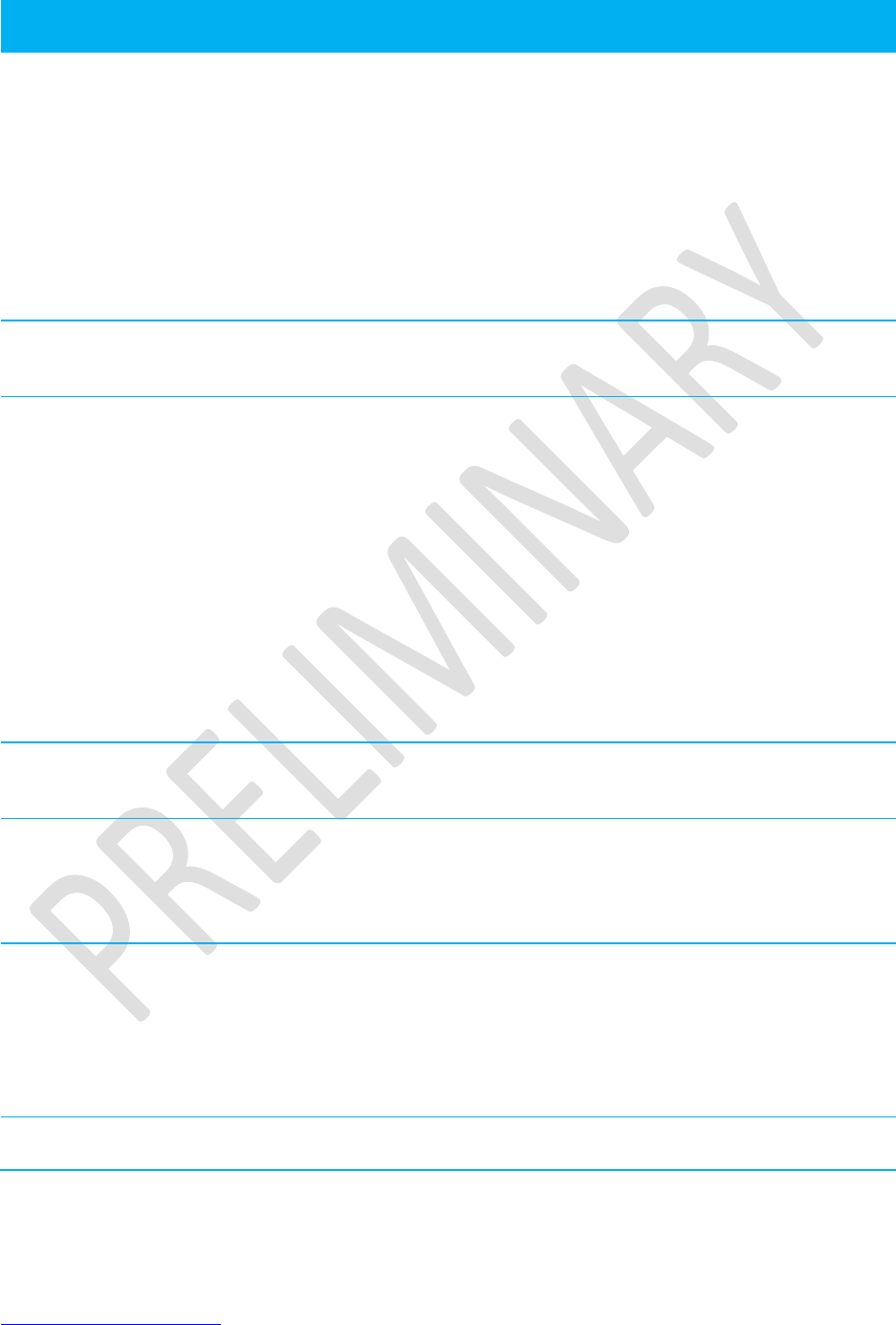
Class 1 Bluetooth v2.0 Module
User’s Guide
Americas: +1-800-492-2320 Option 2
Europe: +44-1628-858-940
Hong Kong: +852-2923-0610
www.lairdtech.com/bluetooth
30
CONN-GUIDE-BT730_v0.9
Reg.
#
Defaul
t
Range
Comment
S526
3
1..3
This register specifies a two bit mask used to qualify how S Registers
520 to 525 are actioned.
When bit 0 is 1, the new comms parameter affects the UART
immediately.
When bit 1 is 1, the new comms parameter is stored in non-volatile
memory.
For example, to change comms parameters but have them come into
effect only after subsequent power cycles, set this register to 2.
Likewise, for an immediate effect that does not persist over a power
cycle, set the value to 1. This must be set before the baud rate
change.
S530
1000
100..15000
Reconnect delay when configured as master in pure-cable-
replacement mode. This value is rounded down to the nearest 100
ms. See S Register 505 and 543.
S531
0
0..5
Specifies the mode on connection establishment.
0 = Normal. Data is exchanged between UART and RF
1 = LOCAL_COMMAND. UART input is parsed by the AT interpreter
and RF data is discarded
2 = REMOTE_COMMAND. RF input is parsed by the AT interpreter
and UART data is discarded. If S Reg 536 is not 1 then this register
cannot be set to 2 and an ERROR is returned
3=LOCAL_COMMAND. UART input is parsed by the AT interpreter
and incoming RF data is sent to the host using the RX<string>
asynchronous response.
4=LOCAL_COMMAND and on the RF side, the GPIO is automatically
sent when there is a change in input. See Section 9.5 for more
details.
5=DEAMON mode
S532
0
0..7
If non zero, then on every connection, a SCO channel (audio) is
initiated. Bit 0 for HV1, Bit1 for HV2, and Bit2 for HV3. When the
connection is lost, the SCO channel also disappears.
S533
1
0..2
If set to 1, then GPIO5 follows RI state; if set to 2, it follows the state
of DSR and if 0 it is not driven and GPIO5 is available as a user I/O.
This register may not be effective immediately after changing the
value. It must be saved to non-volatile memory using AT&W and will
operate as expected after an ATZ or a power cycle.
S534
1
0..2
When set to 0, GPIO4 is available as user I/O
If set to 1 then right LED follows DCD state. If set to 2 then the LED
behaves as per setting 1; but in addition, when not in a connection, if
the device is connectable or discoverable, then the LED blinks.
This register may not be effective immediately after changing the
value. It must be saved to non-volatile store using AT&W and will
operate as expected after an ATZ or a power cycle.
S535
20
0..41
Link Supervision Timeout. If units go out of range, then a NO
CARRIER message is sent to the host after the time specified here
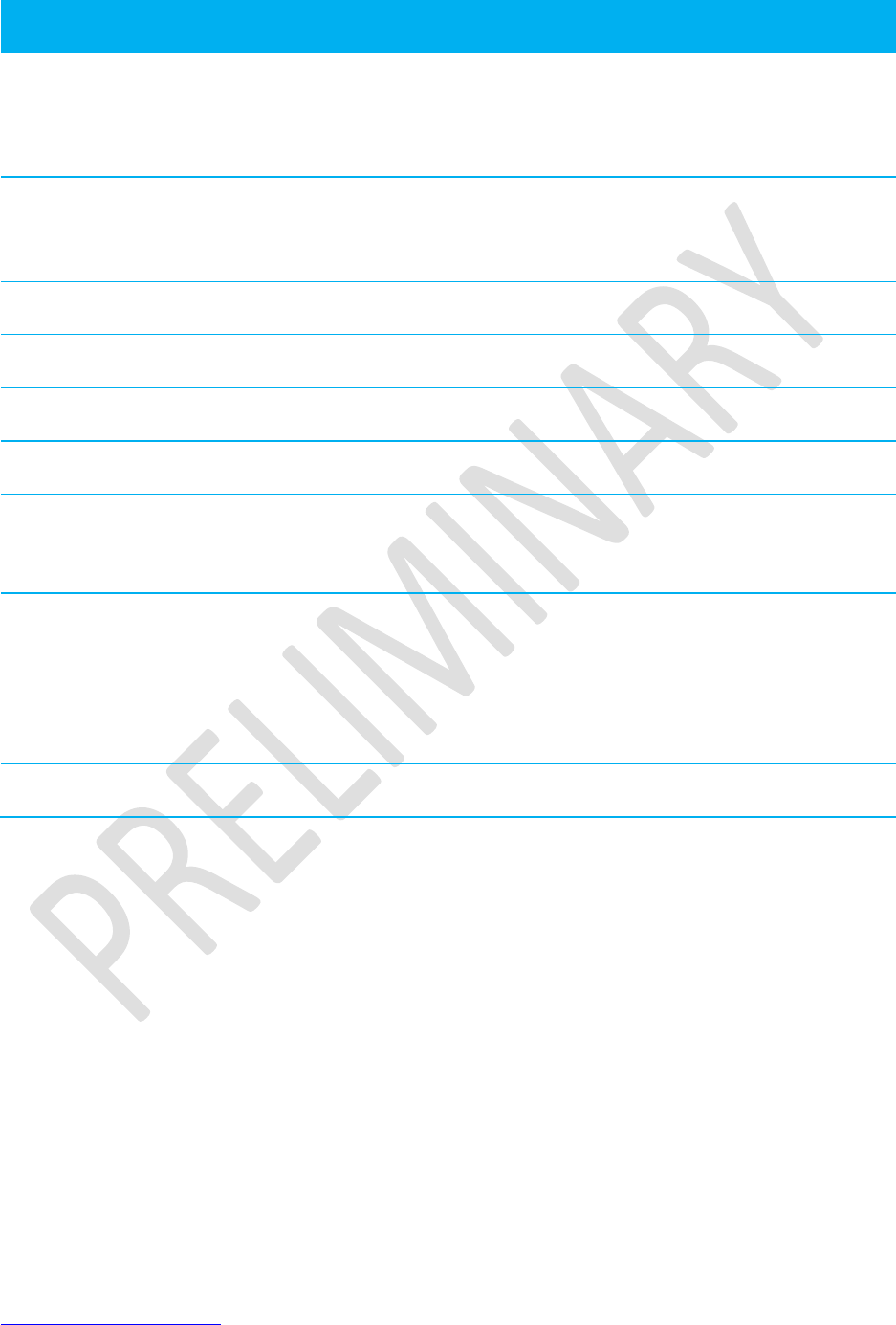
Class 1 Bluetooth v2.0 Module
User’s Guide
Americas: +1-800-492-2320 Option 2
Europe: +44-1628-858-940
Hong Kong: +852-2923-0610
www.lairdtech.com/bluetooth
31
CONN-GUIDE-BT730_v0.9
Reg.
#
Defaul
t
Range
Comment
S536
0
0..1
When set to 1, a remote device can capture the AT parser of this unit
by it sending this module an escape “!!!” sequence. The inter
character timing is set via S Register 12.
If S Register 507 is >/= 2, then reading this register always returns 0
and writing 1 results in ERROR 33.
S537
X
X..X
This register is no longer available – See 551,552, and 553 instead.
It only exists in firmware version 1.1.12 to 1.1.47
The functionality it controlled is now defined by registers 551,552,
and 553
S538
0
0..1
If 1, then when a successful pairing occurs, it is automatically saved
in the trusted device database, if the database has room to store it.
S539
0
0..1
When set to 1, in idle mode (S512=1), UART Rx characters are
discarded if DSR is deasserted.
S540
0
0 48..127
Sets the MTU in L2CAP configuration negotiations. The value of 0 is
a special value which means that the current value should remain.
S541
TBC
TBC
This sets the power level in dBm when inquiring or paging. Reading
this register returns the value stored in non-volatile memory.
S542
TBC
TBC
As per S541, however reading this register returns the current power
level as set in the base band. The read can be different from
S541because the actual power is set using a lookup table and the
base band rounds down to the nearest value in the table.
S543
0
0..1
If this is set to 1, then incoming pairing attempts are accepted (if a pin
code has been pre-entered using AT+BTK) while in the wait phase of
auto connect cycle initiated by the AT+BTR command. In addition to
accepting pairing attempts, if the pairing is successful, then the new
device is automatically set as the peer address for automatic
connections (as if an explicit AT+BTR command was entered).
See S Register 505 and 530.
S544
1
0..1
Configure the UART for either low latency or maximum throughput. A
setting of 1 gives maximum throughput.
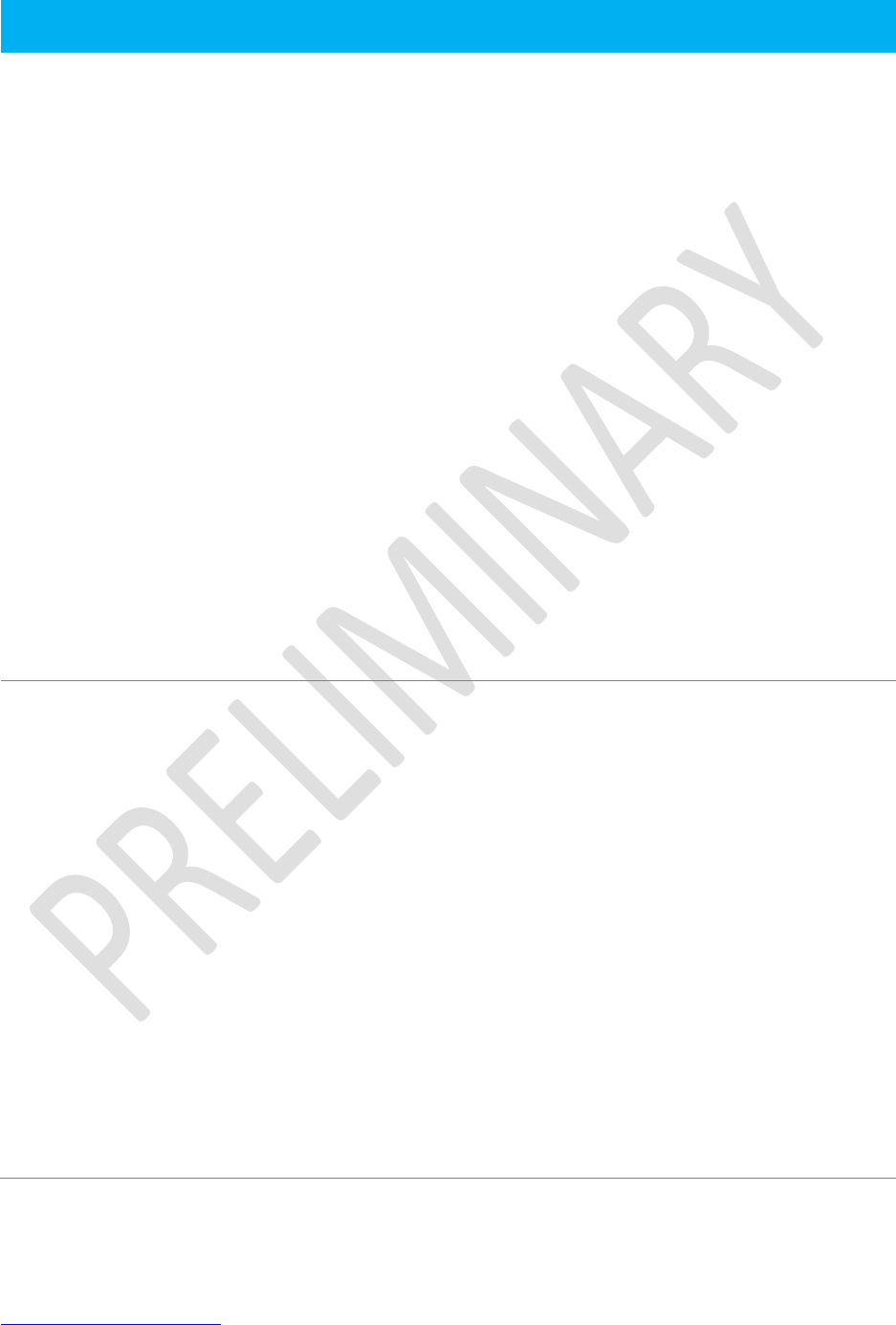
Class 1 Bluetooth v2.0 Module
User’s Guide
Americas: +1-800-492-2320 Option 2
Europe: +44-1628-858-940
Hong Kong: +852-2923-0610
www.lairdtech.com/bluetooth
32
CONN-GUIDE-BT730_v0.9
Reg.
#
Defaul
t
Range
Comment
S551
0x321
1
0xFFFF
This register specifies in each 4 bit nibble, how the outgoing modem
status bits to the remote peer gets its value. Bluetooth allows for
RTR, RTC, DV, and IC bits to be exchanged over an RFCOMM
connection.
Nibble 0..3 specifies the source for RTC
4..7 specifies the source for RTR
8..11 specifies the source for DV (i.e. DCD)
12..15 specifies the source for IC (i.e. RI)
Each nibble can take the following value:
0 – Always set to 0
1 – Always set to 1
2 – If DCD (pin 8 on module connector) is output then always 1
If DCD is input then 1 if DCD is asserted otherwise 0
3 – If RI (pin 6) is output then always 0
If RI is input then 1 if RI is asserted otherwise 0
If DSR (pin 10) is asserted then 1 otherwise 0
In the event that a nibble specifies DSR as the source of its state, be
aware that if S Register 507 is anything other than 0, a de-assertion
of DSR causes the Bluetooth connection to be dropped.
If bits 0..3 and 4..7 are set to 0, then some Bluetooth devices will use
that as a signal to stop sending any data back. For example, Nokia
6310 stops responding.
If this register is changed while in command and connected mode,
then on going back online using the ATO command, a fresh signal is
sent to the peer to update the bits.
S552
0x012
2
0x0FFF
This register specifies in each 4 bit nibble, how the DTR, DCD, RI
output pins are controlled when in a Bluetooth connection
Nibble 0..3 specifies the source for DTR
4..7 specifies the source for DCD
8..11 specifies the source for RI
Each nibble can take the following value:
0 – Do NOT touch the I/O
1 – Always deassert
2 – Always assert
3 – If RTC bit in CONTROL_IND is 1 then assert otherwise
deassert
4 – If RTR bit in CONTROL_IND is 1 then assert otherwise
deassert
5 – If DV bit in CONTROL_IND is 1 then assert otherwise
deassert
6 – If IC bit in CONTROL_IND is 1 then assert otherwise deassert
If this register is changed while in command and connected mode,
then on going back online using the ATO command, the modem
output lines are refreshed.
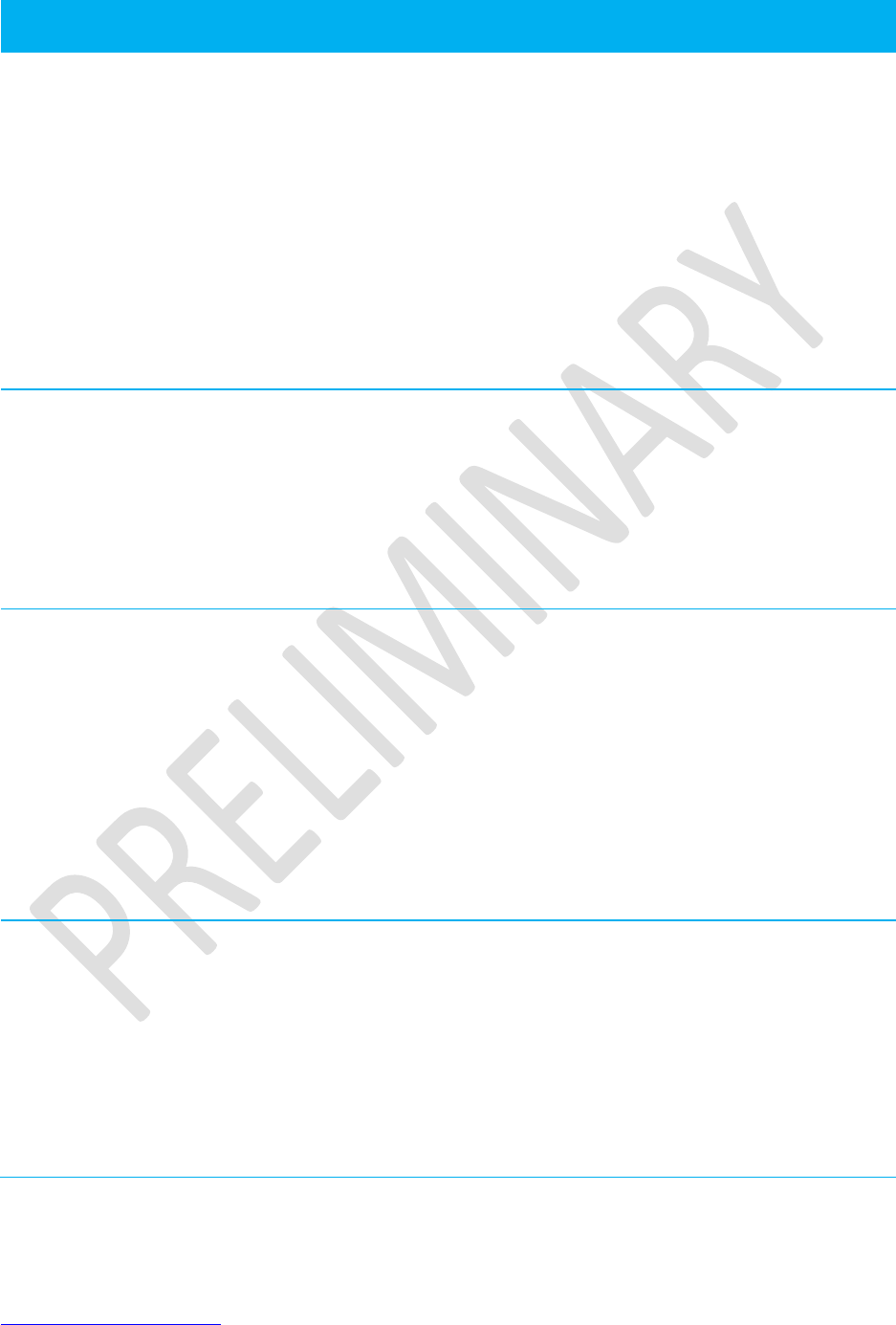
Class 1 Bluetooth v2.0 Module
User’s Guide
Americas: +1-800-492-2320 Option 2
Europe: +44-1628-858-940
Hong Kong: +852-2923-0610
www.lairdtech.com/bluetooth
33
CONN-GUIDE-BT730_v0.9
Reg.
#
Defaul
t
Range
Comment
S553
0x020
1
0x0FFF
This register specifies in each 4 bit nibble, how the DTR,DCD,RI
output pins are controlled when NOT in a Bluetooth connection
Nibble 0..3 specifies the source for DTR
4..7 specifies the source for DCD
8..11 specifies the source for RI
In addition it also refers to S Register 552 to see if the relevant pin is
an input or not to be touched. If the nibble in 552 is 0, then the
relevant pin is an input.
Each nibble can take the following value:
0 – Always deassert
1 – Always assert
2 – Assert if RING is being sent to the host
The default for the Universal RS-232 Adaptor is $0200.
S554
0
0..900
If S Register 512 >/=2 and </=7 then this register specifies a time in
seconds for which the device stays in the S512 mode after power up
or reset. On timeout, it aborts the discoverable and/or connectable
and falls back into S512=1 mode, when it is deaf and dumb.
Note: If AT+BTR has been used to specify a peer device, then on
reverting to mode 1, it attempts to make a connection to that
peer device.
A power cycle, reset via BREAK or ATZ is required to see the effects
of change.
S555
1
1..7
If S Register 554 is nonzero, then after the post reset window expires,
the mode reverts to the mode specified in this register. This allows,
for example, the device to be discoverable and connectable on power
up (mode 4 or 7) and on window timer expiry to revert to connectable
only (mode 3 or 6).
A power cycle, reset via BREAK or ATZ is required to see effects of a
change.
In some firmware builds, S Registers 565 to 569 (inclusive) are
visible, which allows the start-up mode to depend on the state of RI
line (Setting S Reg 565 forces the RI pin to be configured as an
input). For this feature to be active, S Reg 565 should be set to 1. In
that case, on start-up, if RI is asserted, then the start-up mode is
defined by S Reg 568 and if deasserted then S Reg 569.
S556
0
0..3
Allows GPIO or ADC values to be read via the minor class field in an
inquiry response.
When this value is non-zero, bits2 to 7 contain information as follow:
1 – ADC1
2 – ADC2
3 – GPIO1 to GPIO6
Set to 0 to disable this feature.
This allows i/o information to be conveyed without a connection.
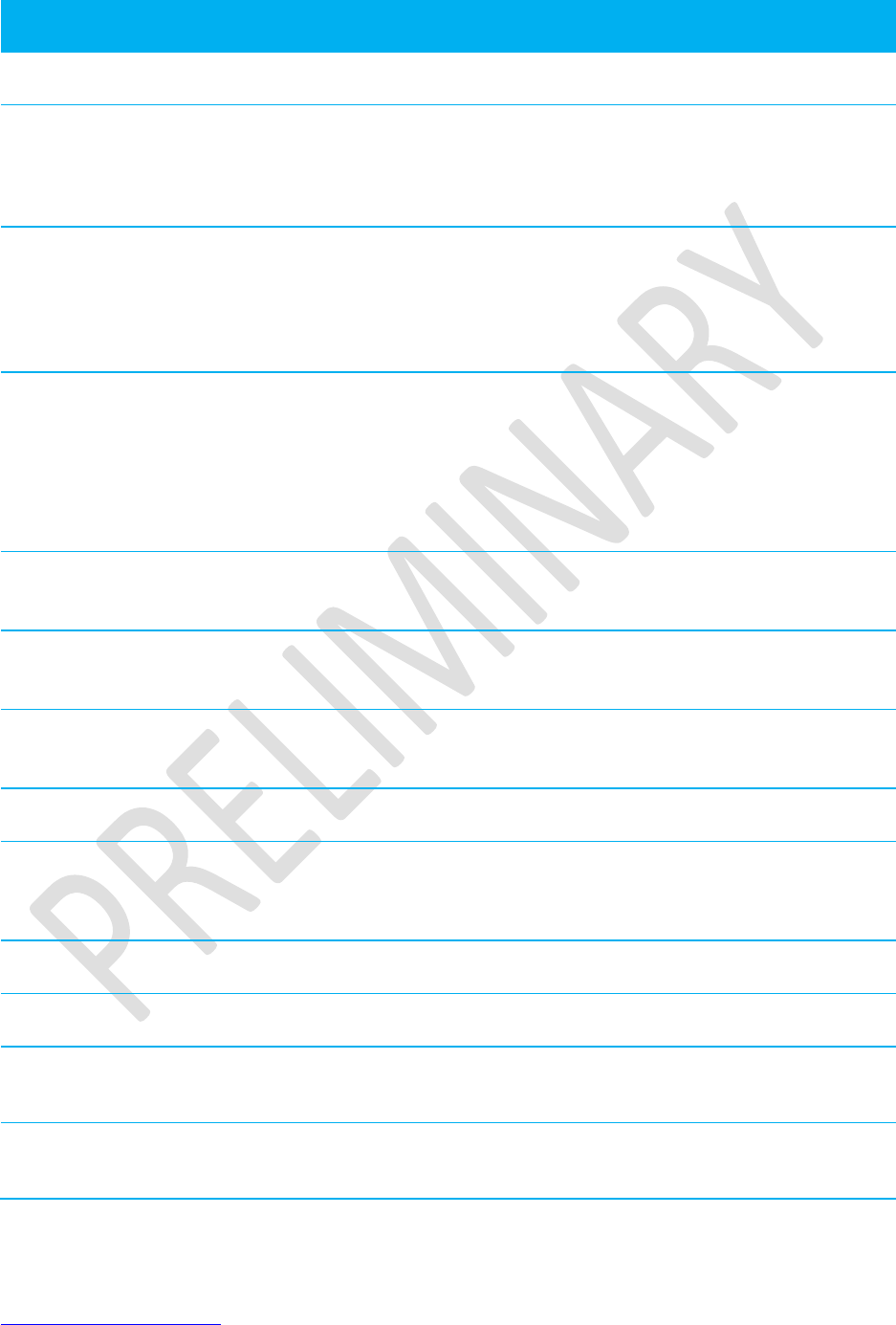
Class 1 Bluetooth v2.0 Module
User’s Guide
Americas: +1-800-492-2320 Option 2
Europe: +44-1628-858-940
Hong Kong: +852-2923-0610
www.lairdtech.com/bluetooth
34
CONN-GUIDE-BT730_v0.9
Reg.
#
Defaul
t
Range
Comment
S557
32
4..900
Specified in seconds, the update interval for the feature enabled via S
Reg 556
S558
0
0..1
When 1, the following responses; “RING”, “NO CARRIER”, and
“CONNECT” are replaced by “BTIN”, “BTDOWN”, and “BTUP”
respectively. This eliminates ambiguity when the module has a
Bluetooth connection to an AT modem which also gives these
responses.
S559
0
0..3
This specifies a mask.
When Bit 0 is 1, the response word “ERROR“ is replaced by “BTERR”
and “OK” is replaced by “ok”.
When Bit 1 is 1, then error responses do not include the error
number; instead the error number can be retrieved using ATI12.
S560
15
15..120
Disconnect timeout in seconds. This timer specifies how long to wait
for confirmation (from the peer device and/or the underlying stack)
that the connection has been successfully torn down. There can be
instances where a confirmation does not arrive; in this case this timer
is used to ‘close off’ the procedure and put the state machine back
into a proper mode for new operations.
Time is specified with 15 seconds intervals.
S561
0
0..1000
Sniff Attempt Time in units of milliseconds. 0 means disable.
See section “Power Consumption and Reset” in the user guide for
more details.
S562
0
0..1000
Sniff timeout Time in units of milliseconds. 0 means disable.
See section “Power Consumption and Reset” in the user guide for
more details.
S563
0
0..1000
Sniff Minimum Interval in units of milliseconds. 0 means disable.
See section “Power Consumption and Reset” in the user guide for
more details.
S564
0
0..1000
Sniff Maximum Interval in units of milliseconds. See section “Power
Consumption and Reset” in the user guide for more details.
S565
0
1
If set to 1, RI (Ring Indicate) line is configured as an input and forces
the start-up mode (S Reg 512)and post-timeout on Start-up mode (S
Reg 555) to be dependent on the state of RI. The RI conditional
modes are defined by S Regs 566 to 569 inclusive.
S566
1
7
If S565=1 and RI is asserted then this is the mode in which the
device starts up.
S567
1
7
If S565=1 and RI is deasserted then this is the mode in which the
device starts.
S568
1
7
If S565=1 and RI is asserted then this is the mode the device
assumes after the post-start-up timeout defined in S Reg 554 instead
of the mode defined in S Reg 555.
S569
1
7
If S565=1 and RI is deasserted then this is the mode the device
assumes after the post-start-up timeout defined in S Reg 554 instead
of the mode defined in S Reg 555.
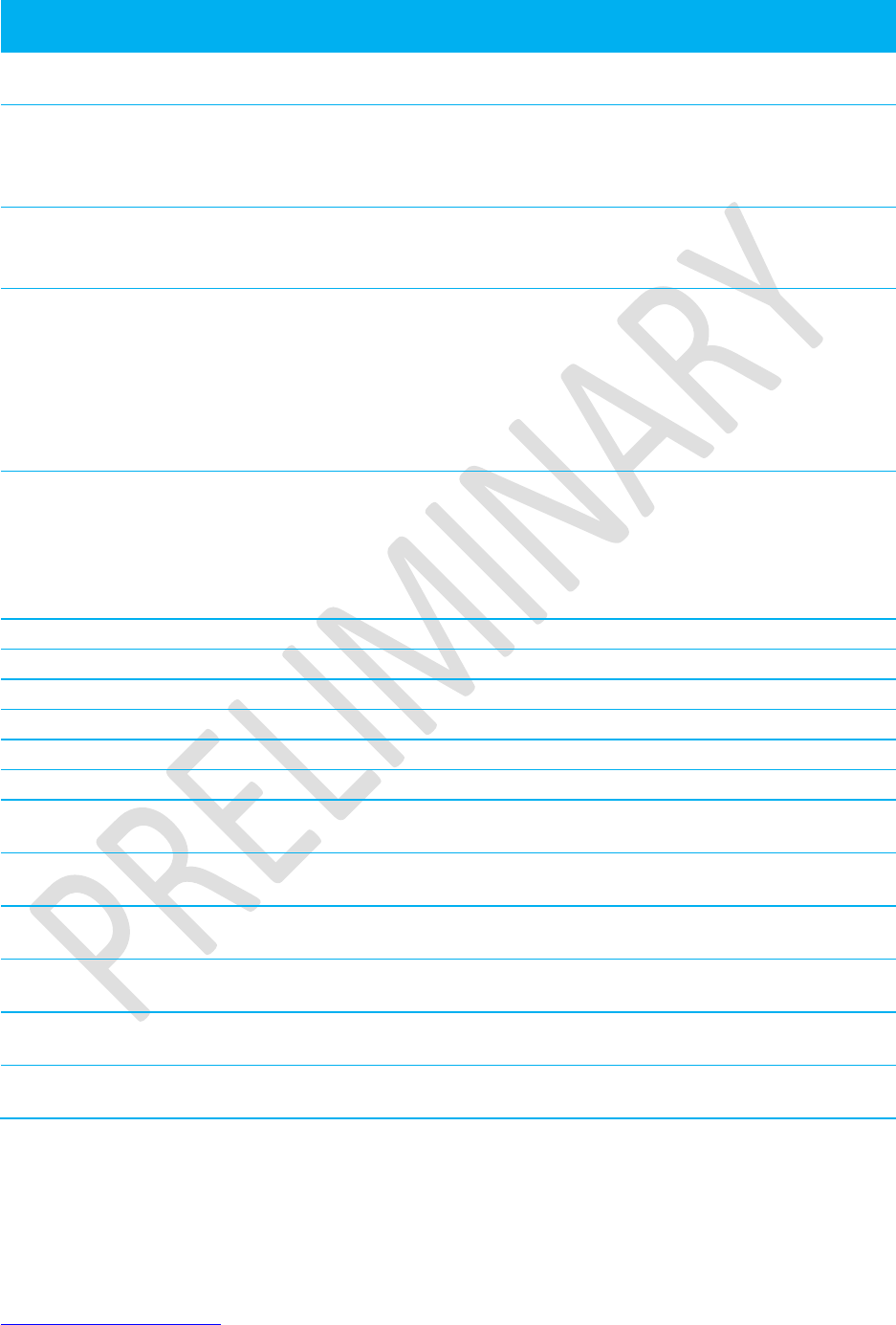
Class 1 Bluetooth v2.0 Module
User’s Guide
Americas: +1-800-492-2320 Option 2
Europe: +44-1628-858-940
Hong Kong: +852-2923-0610
www.lairdtech.com/bluetooth
35
CONN-GUIDE-BT730_v0.9
Reg.
#
Defaul
t
Range
Comment
S580
0
0..1
Remote volume control feature for Headset profile when ATS102
enables headset profile.
S581
0
0..63
Lowest 6 bits of the supported features field for Handsfree profile
when ATS102 enables handsfree profile.
See also S Reg 594 which allows the HandsFree profile version
number to be selected.
S582
0
0..1
FTP Related:
0 = BodyLen in PUT obex packet = 0
1 = BodyLen in PUT obex packet = 1
S583
0xB
0 .. 0x1F
This specifies the initial state of the following modem control lines
sent to the peer
Bit 0 – RTC (DTR/DSR)
Bit 1 – RTR (RTS/CTS)
Bit 2 – IC (Ring Indicate RI)
Bit 3 – DV (DCD)
Bit 4 – FC (Reserved)
S584
0
0..1
Enable/Disable eSCO
When changing the unit returns ERROR 14, it implies the device is
either in a connection or waiting for a connection and the new value
cannot be accepted. For the former, drop the connection, issue the
command AT+BTX, and then set the new value and issue (for the
latter) the command AT+BTX prior to setting the register.
S585
0
0..9
GPIO pin set to 0 to disable the feature.
S586
1000
100..5000
Pulse period in milliseconds (rounded down to nearest multiple of 50).
S587
0
0..100
Duty cycle in percentage (rounded to the nearest multiple of four).
S588
0
0..1
After a disconnection, there is a cold reset.
S589
8
0..F
Codec output gain.
S590
1
0..3
Codec input gain.
S591
0
0..1FF
Default GPIO output states when not in a connection. This is used
when virtual digital I/O cable replacement mode is in operation.
S592
0
0..1
Set this to 1 to reduce the trusted device database to one record
when autosaving of pairing is enabled via S Reg 538.
S593
0
0..1
Automatically append last six digits of local Bluetooth address to the
friendly name which was set via AT+BTN or AT+BTF.
S594
0
0..1
Set handsfree profile version in sdp record. Set to 0 for 1.1 and to 1
for 1.5.
S595
1
0..1
Set handsfree gateway profile version in sdp record. Set to 0 for 1.1
and to 1 for 1.5.
S596
0
1..1FF
Audio Gateway features to be advertised in SDP record. See
handsfree profile specification for exact bit mapping.

Class 1 Bluetooth v2.0 Module
User’s Guide
Americas: +1-800-492-2320 Option 2
Europe: +44-1628-858-940
Hong Kong: +852-2923-0610
www.lairdtech.com/bluetooth
36
CONN-GUIDE-BT730_v0.9
Reg.
#
Defaul
t
Range
Comment
S597
0
0..2
Audio Gateway mode:
0 – SDP record advert only
1 – Hosted operation
3 – Hostless operation
See Audio Gateway specific documentation for more details.
S598
0
0..1
In hostless audio gateway serviced mode, if this is 1, then incoming
voice calls are reflected to bonded headset.
S599
0
0..2
SCO control for hostless gateway operation.
0 – Normal
1 – As early as possible
2 – Leave SCO to be controlled by headset
S600
?
0..65535
Number of times this module has gone through a reset cycle. This
feature is enabled by S Reg 601.
Writing any value to this register initialises it to a certain value.
S601
0
0..1
If this is 1, then on reset S Reg 600 value is incremented.
S610
0
0..7FFF
Set direction of digital I/O lines. This is a mask made up of 5 bits.
Setting a bit to 1 makes that I/O line an output. GPIO1 is bit 0, GPIO2
is bit 1, up to bit 8 for GPIO9.
S611
0
1
Set to 1 to invert the logic of GPIO outputs. For example, ATS621=1
sets the output pin to low and vice versa.
S620
n/a
0..31
Read/Write to all eight digital lines in one atomic step. The value is
returned as a four digit hexadecimal value with trailing 0s.
S621
n/a
0..1
Read/Write to GPIO1.
S622
n/a
0..1
Read/Write to GPIO2.
S623
n/a
0..1
Read/Write to GPIO3.
S624
n/a
0..1
Read/Write to GPIO4.
S625
n/a
0..1
Read/Write to GPIO5.
S626
n/a
0..1
Read/Write to GPIO6.
S627
n/a
0..1
Read/Write to GPIO7.
S628
n/a
0..1
Read/Write to GPIO8.
S629
n/a
0..1
Read/Write to GPIO9.
S631
n/a
0..65535
When GPIO1 is configured as an input, low to high transitions are
counted. There is no software debouncing. External RC circuit may
be required.
The counter wraps to 0 when it overflows beyond 65535.
S632
n/a
0..65535
When GPIO2 is configured as an input, low to high transitions are
counted. There is no software debouncing. External RC circuit may
be required.
The counter wraps to 0 when it overflows beyond 65535.
S641
n/a
0..65535
As per 631, but the action of reading the value resets the count to 0.
S642
n/a
0..65535
As per 632, but the action of reading the value resets the count to 0.
S701
n/a
0..65535
Read to Analogue Line 0, when reading value is returned in decimal.
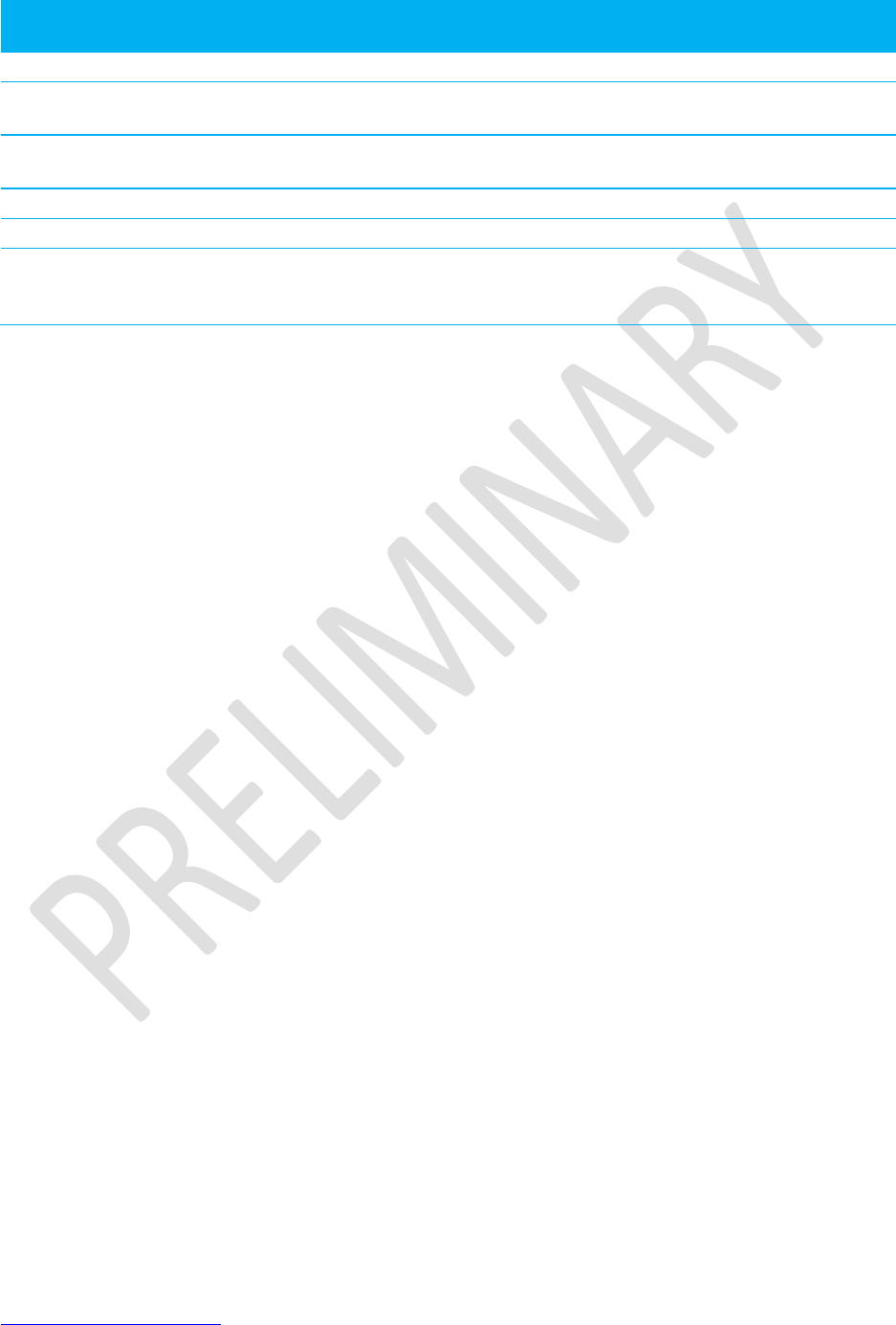
Class 1 Bluetooth v2.0 Module
User’s Guide
Americas: +1-800-492-2320 Option 2
Europe: +44-1628-858-940
Hong Kong: +852-2923-0610
www.lairdtech.com/bluetooth
37
CONN-GUIDE-BT730_v0.9
Reg.
#
Defaul
t
Range
Comment
S702
n/a
0..65535
Read to Analogue Line 1, when reading value is returned in decimal.
S711
n/a
0000..FFFF
Read to Analogue Line 0, when reading value is returned in
hexadecimal.
S712
n/a
0000..FFFF
Read to Analogue Line 1, when reading value is returned in
hexadecimal.
S721
0
0
Set direction of Analogue Line 0.
S722
0
0
Set direction of Analogue Line 1.
S1001
to
S1010
0.. 2^32
Ten General Purpose 32 bit Registers for use by host. These are
stored in non-volatile memory.
6.3.13 ATSn?{Read S Register Value}
This returns the current value of register n.
For recognised values of n:
Response: <cr,lf>As Appropriate<cr,lf>OK<cr,lf>
For unrecognised values of n:
Response: <cr,lf>ERROR nn<cr,lf>
6.3.14 ATSn=?{Read S Register – Valid Range}
This returns the valid range of values for register n.
For recognised values of n:
Response: <cr,lf>Sn:(nnnn..mmmm)<cr,lf>OK<cr,lf>
For unrecognised values of n:
Response: <cr,lf>ERRORnn<cr,lf>
6.3.15 ATX<string>{Send Data in Local Command and Connected Mode}
This command is used to send data to the remote device when in local command and connected mode.
The parameter <string> is any string not more than 24 characters long. If a non-visual character is to be
sent, then insert the escape sequence \hh where hh are two hexadecimal digits. The 3 character
sequence \hh is converted into a single byte before transmission to the peer.
Response: <cr,lf>OK<cr,lf>
6.3.16 ATY<string>{Send Data in Local Command and Connected Mode}
This command is similar to ATX in syntax and functionality, except that the string is only copied to the
output RF buffer. Only when an empty string is presented are all pending data in the output RF buffer
flushed out.
The parameter <string> is any string not more than 24 characters long. If a non-visual character is to be
sent then insert the escape sequence \hh where hh are two hexadecimal digits. The three character
sequence \hh is converted into a single byte before transmission to the peer.
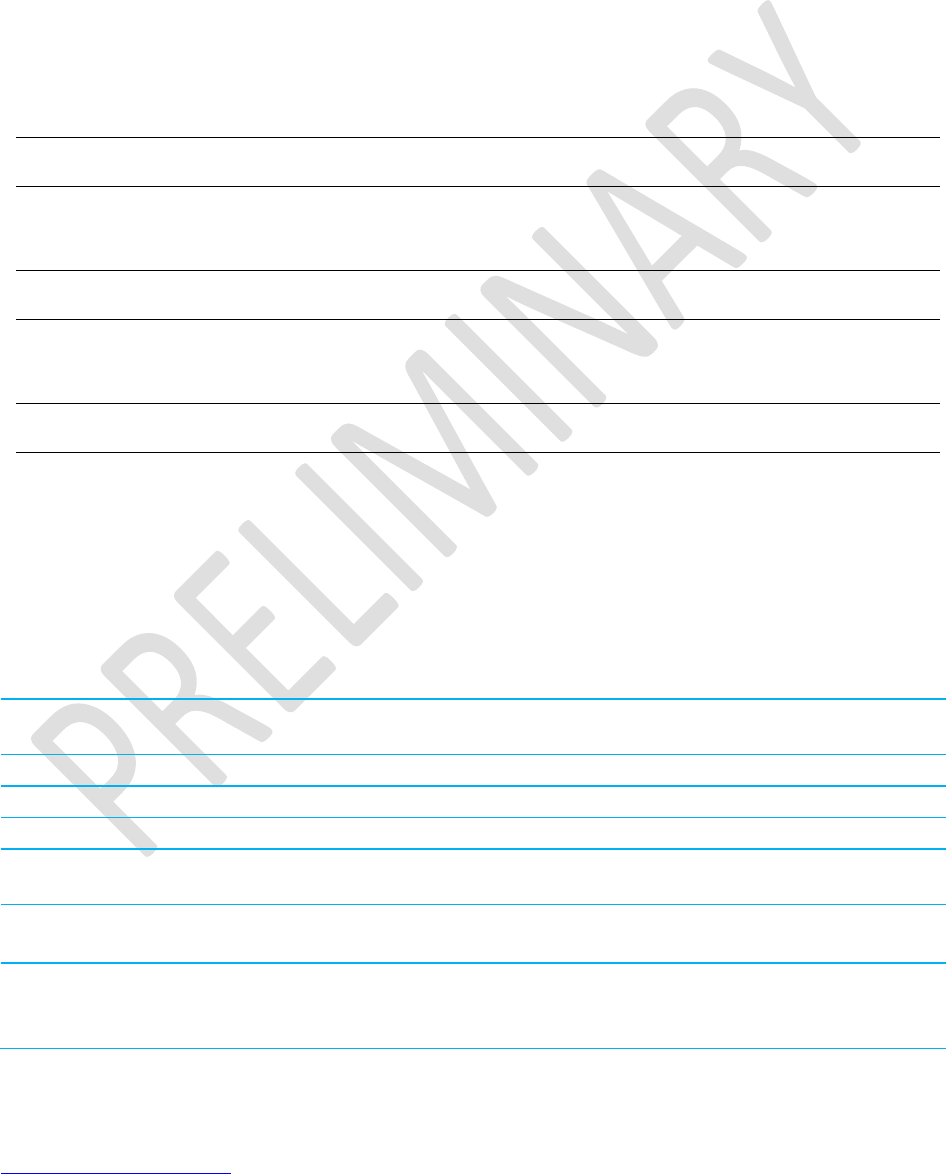
Class 1 Bluetooth v2.0 Module
User’s Guide
Americas: +1-800-492-2320 Option 2
Europe: +44-1628-858-940
Hong Kong: +852-2923-0610
www.lairdtech.com/bluetooth
38
CONN-GUIDE-BT730_v0.9
Response: <cr,lf>OK<cr,lf>
6.3.17 ATZ<n>{Hardware Reset and emerge into mode ‘n’}
Forces the device through a hardware reset which means it eventually comes alive in the local command
and unconnected mode. This allows changes to the PS store to take effect. Prior to version 2.7.0, allow
for approximately two seconds for the device to once again start responding to AT commands. The best
way to determine if the device is alive is to keep sending it AT<cr> until it responds with an OK response.
After version 2.7.0, it is safe to communicate after receiving an OK.
The optional parameter <n> is only available for firmware 2.7.0 and newer and is a value in the range 0 to
7 (up to version 7.18.0). After version 9.18.6, valid values are 0 to 4 (inclusive).
ATZ and ATZ0 signify reset and emerge into the current mode (see command ATI14 TBC). ATZ1 to ATZ4
instructs the module to reset and then emerge into the appropriate boot mode.
Note: S Reg 103 specifies the boot mode from cold.
For firmware prior to v2.7.0:
Response: <cr,lf>OK<cr,lf>
Note: OK is returned before the RESET.
For firmware v2.7.0 and newer:
Response: <cr,lf>OK<cr,lf>
Note: OK is returned after the RESET.
6.3.18 AT&Fn{Set S Register Defaults}
This command only works when the device is in local command and unconnected mode. Depending on
the value of ‘n’, it installs S Register values appropriate for various power modes, ranging from minimum
power consumption to maximum.
See Table 6-3 for the legal values of ‘n’. All other values of n generate a syntax error response. If ‘n’ is not
specified, then a default value of 0 is assumed where the baud rate is NOT changed.
Table 6-3: Legal values of 'n"
&F0
(Default)
Medium power consumption, UART baud rate unchanged, Left LED off, Right LED =
DCD
&F1
Minimum power consumption, UART baud rate set to 9600, Left and Right LED off
&F2
Minimum power consumption, UART baud rate set to 38400, Left and Right LED off
&F3
Minimum power consumption, UART baud rate set to 115200, Left and Right LED off
&F4
Medium power consumption, UART baud rate set to 115200, Left LED off, Right LED =
DCD
&F5
Maximum power consumption, UART baud rate set to 115200,
Left LED=DSR, Right LED = DCD
&F6
Maximum power consumption, UART baud rate set to 115200,
Left LED=DSR, Right LED = DCD
Explicitly set higher baud rates using ATS521=n
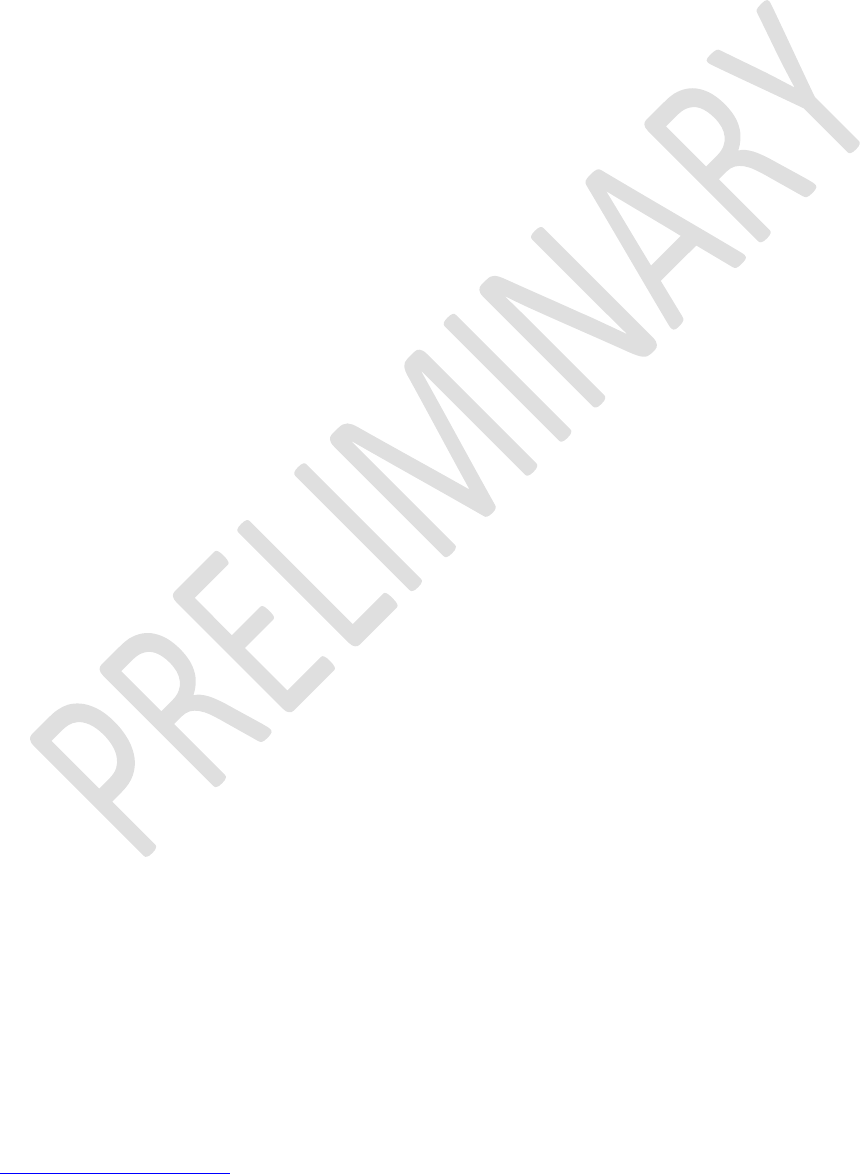
Class 1 Bluetooth v2.0 Module
User’s Guide
Americas: +1-800-492-2320 Option 2
Europe: +44-1628-858-940
Hong Kong: +852-2923-0610
www.lairdtech.com/bluetooth
39
CONN-GUIDE-BT730_v0.9
Refer to the “Power Consumption” chapter in the relevant Laird device user guide for more detailed
information of power usage.
The new values are NOT updated in non-volatile memory until the AT&W command is sent to the Laird
device.
Response: <cr,lf>OK<cr,lf>
Or
Response: <cr,lf>ERROR nn<cr,lf>
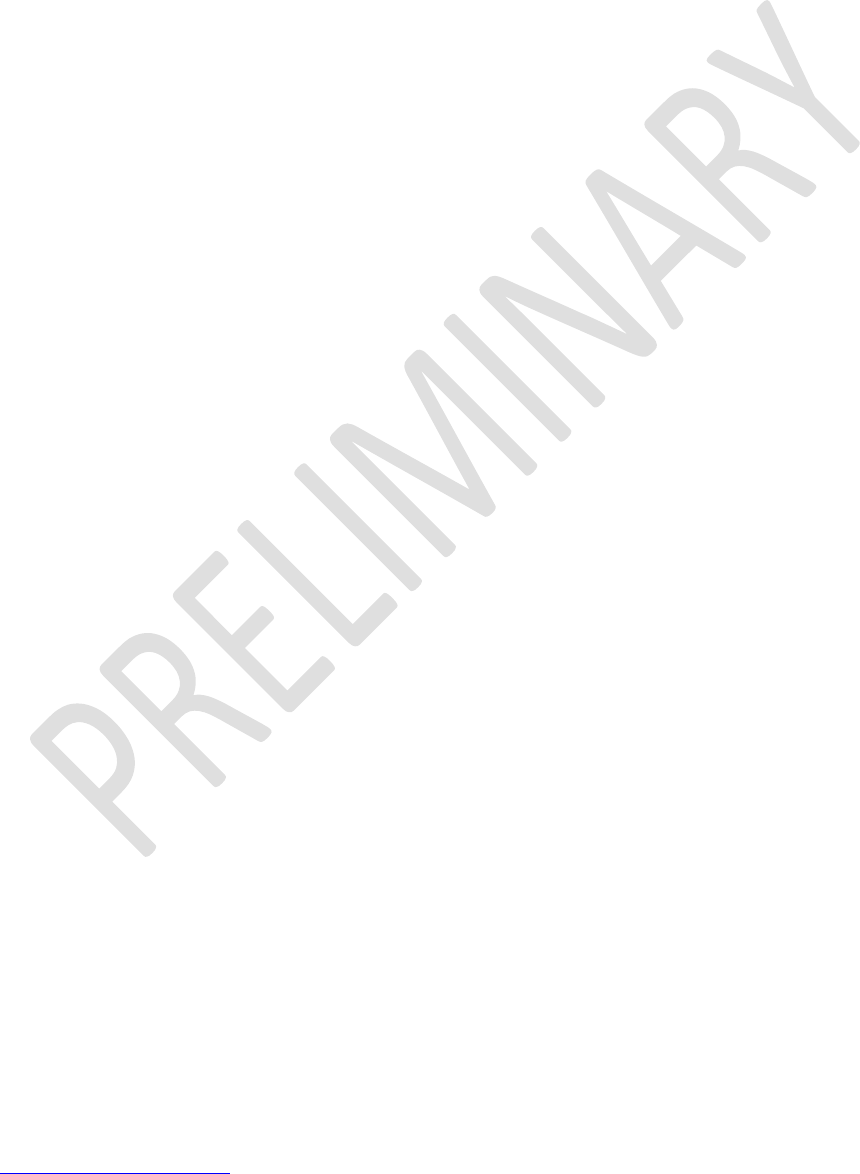
Class 1 Bluetooth v2.0 Module
User’s Guide
Americas: +1-800-492-2320 Option 2
Europe: +44-1628-858-940
Hong Kong: +852-2923-0610
www.lairdtech.com/bluetooth
40
CONN-GUIDE-BT730_v0.9
6.3.19 AT&F*{Clear Non-volatile Memory}
The AT&F* variant of the command installs values in S registers as per command AT&F4 and then all
other user parameters in non-volatile memory are erased. This means that the trusted device database is
cleared, as well as parameters related to the following commands: AT+BTR, AT+BTN, AT+BTS.
Response: <cr,lf>OK<cr,lf>
Or
Response: <cr,lf>ERROR nn<cr,lf>
6.3.20 AT&F+{Clear Non-volatile Memory}
This command erases all user parameters in non-volatile memory except S Registers 520 to 525. This
means that the trusted device database is cleared, and so are parameters related to the following
commands:- AT+BTR, AT+BTN, AT+BTS.
Response: <cr,lf>OK<cr,lf>
Or
Response: <cr,lf>ERROR nn<cr,lf>
6.3.21 AT&W{Write S Registers to Non-volatile Memory}
Writes current S Register values to non-volatile memory so that they are retained over a power cycle.
Response: <cr,lf>OK<cr,lf>
Or
Response: <cr,lf>ERROR nn<cr,lf>
6.3.22 AT+BTAn{Control Audio Channel}
Once a Bluetooth connection is active, and assuming the peer device is a Laird device, this command is
used to start/stop a SCO channel which connects the PCM interfaces of the two peer devices. If a codec
is attached to the PCM pins, then 2-way audio can be established.
+BTA0
Switch off the channel.
+BTA1
Switch on the channel.
On receipt of the command, the following response immediately follows.
Response: <cr,lf>OK<cr,lf>
The lower layers then go through the process of setting up the SCO channel. Once a SCO link is
established, the following response is asynchronously sent to the host.
Response: <cr,lf>AUDIO ON<cr,lf>
Or if the SCO failed to be established.
Response: <cr,lf>AUDIO FAIL<cr,lf>
On the peer device, the host will asynchronously get ….
Response: <cr,lf>AUDIO ON<cr,lf>
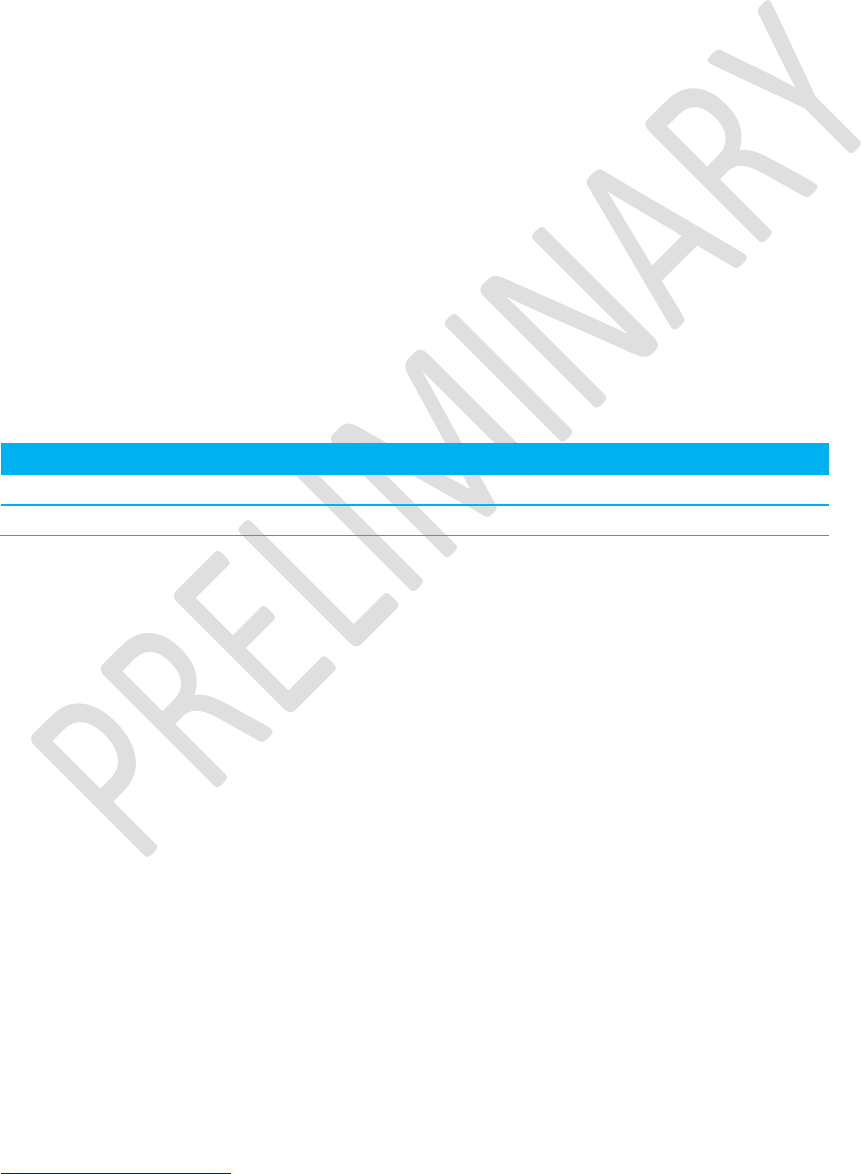
Class 1 Bluetooth v2.0 Module
User’s Guide
Americas: +1-800-492-2320 Option 2
Europe: +44-1628-858-940
Hong Kong: +852-2923-0610
www.lairdtech.com/bluetooth
41
CONN-GUIDE-BT730_v0.9
6.3.23 AT+BTC<devclass>{Set Device Class Code}
This command is used to set the device class code which is sent in subsequent inquiry responses. It can
be read back using the AT+BTC? command as described below.
<devclass> is a six digit hexadecimal number derived as per section “1.2 The Class of Device/Service
Field” of the Bluetooth specification “Bluetooth Assigned Numbers”.
The 24 bits are made of the following four fields (bit 0 corresponds to the least significant bit):
Bits 0-1:
Format Type. This field currently only has a value of 00 (i.e. format type
1).
Bits 2-7:
These 6 bits define the Minor Device Class and the value is interpreted
differently based on the Major Device class stored in the next 5 bits.
Bits 8-12:
These 5 bits define the Major Device Class as per Table 1.3 in “Bluetooth
Assigned Numbers”.
Bits 13-23:
This is an 11 bit field used as a mask to define the Major Service Class,
as per Table 1.2 in “Bluetooth Assigned Number”.
Laird devices do not map to any predefined Major Service Class or Major Device Class. The default
devclass as shipped is 001F00 which means no Major Service Class and “Unclassified” Major Device
class.
Table 6-4 shows examples of device class codes.
Table 6-4: Device class codes
Code (Hex)
Name
Major Service
Major Device
Minor Device
001F00
Unclassified
None
Unclassified
n/a
200404
Headset
Audio
Audio
Headset
Response: <cr,lf>OK<cr,lf>
Or for an invalid <devclass> value (usually a value which is not six hexadecimal characters long).
Response: <cr,lf>ERROR 08<cr,lf>
6.3.24 AT+BTC?{Read Device Class Code}
This command is used to read the current device class code.
Response: <cr,lf>123456<cr,lf>OK<cr,lf>
6.3.25 AT+BTD<bd_addr>{Remove Trusted Device}
This command is used to remove the specified device from the list of trusted devices in the non-volatile
database. If the device is not in the database, the response is still OK.
Response: <cr,lf>OK<cr,lf>
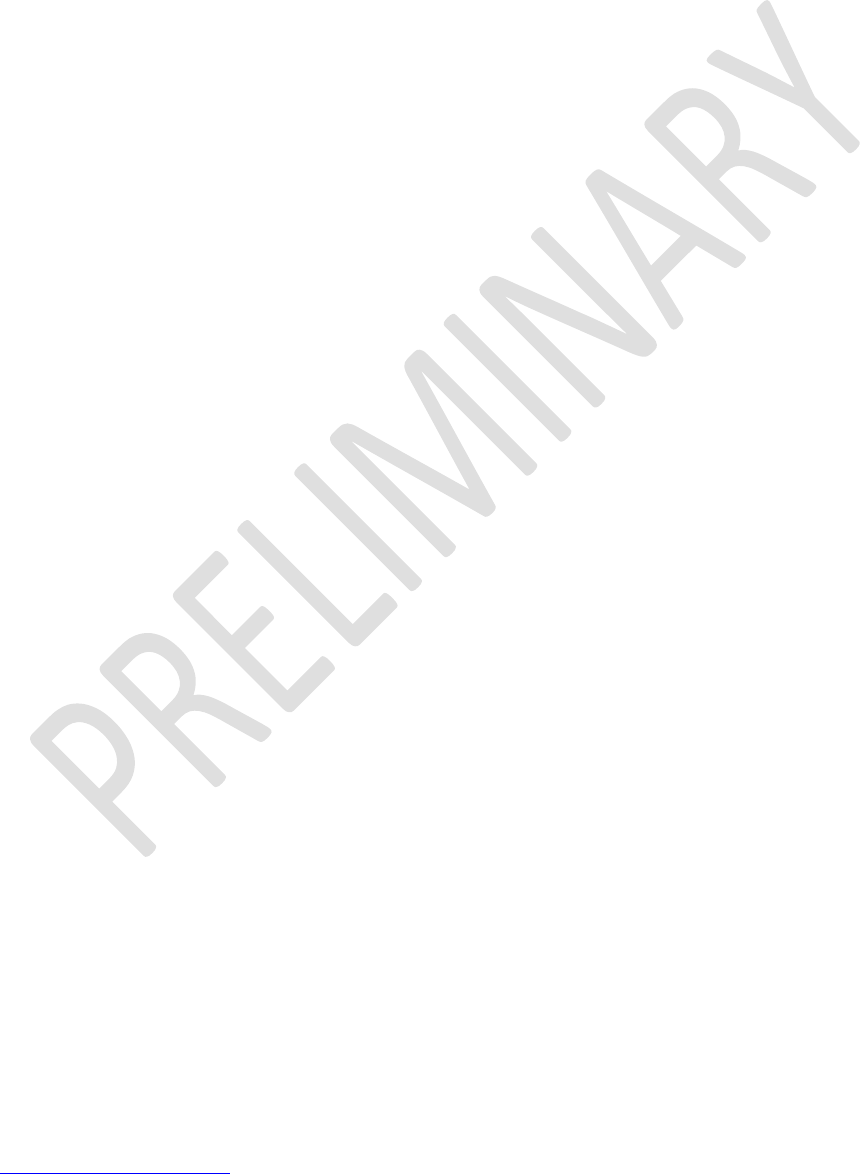
Class 1 Bluetooth v2.0 Module
User’s Guide
Americas: +1-800-492-2320 Option 2
Europe: +44-1628-858-940
Hong Kong: +852-2923-0610
www.lairdtech.com/bluetooth
42
CONN-GUIDE-BT730_v0.9
6.3.26 AT+BTD*{Remove All Trusted Devices}
WARNING: This command is used to remove all devices from the list of trusted devices in the non-
volatile database. The software does not ask for confirmation.
WARNING: If you make an authenticated connection, the link key gets cached in the underlying stack. If
you subsequently delete the key using AT+BTD* and immediately request an authenticated
connection to the same device, then the connection will be established. To ensure this does
not happen, either send ATZ after the AT+BTD* OR send AT+BTD<bd_addr> for each item
in the trusted device database.
Response: <cr,lf>OK<cr,lf>
6.3.27 AT+BTF=<string>{Set Friendly Name}
This sets the friendly name of this device as seen by other devices.
Response: <cr,lf>OK<cr,lf>
6.3.28 AT+BTF<bd_addr>{Get Remote Friendly Name}
This command gets the remote friendly name of the specified peer.
Response: <cr,lf><bd_addr>,”Friendly Name”
<cr,lf>OK<cr,lf>
6.3.29 AT+BTG<bd_addr>{Enable Cautious Page Scanning ONLY}
Enable page scanning and wait for a connection from device with Bluetooth address <bd_addr>. If the
specified address is 000000000000 then incoming connections are accepted from any device (like
AT+BTP without an address). Inquiry Scans are disabled.
This command also has variants which allow authentication and encryption to be explicitly specified. For
example:
AT+BTGU123456789012
AT+BTGY123456789012
AT+BTGUY123456789012
AT+BTGYU123456789012
Response: <cr,lf>OK<cr,lf>
6.3.30 AT+BTG{Enable Promiscuous Page Scanning ONLY}
Enable page scanning only and wait for a connection from any device. Inquiry scans are disabled.
Authentication and encryption is as per S registers 502 and 503.
Response: <cr,lf>OK<cr,lf>
6.3.31 AT+BTGU{Enable Promiscuous Page Scanning ONLY}
Enable page scanning only and wait for a connection from any device. Inquiry scans are disabled.
Authentication is enabled and encryption is disabled.
Response: <cr,lf>OK<cr,lf>
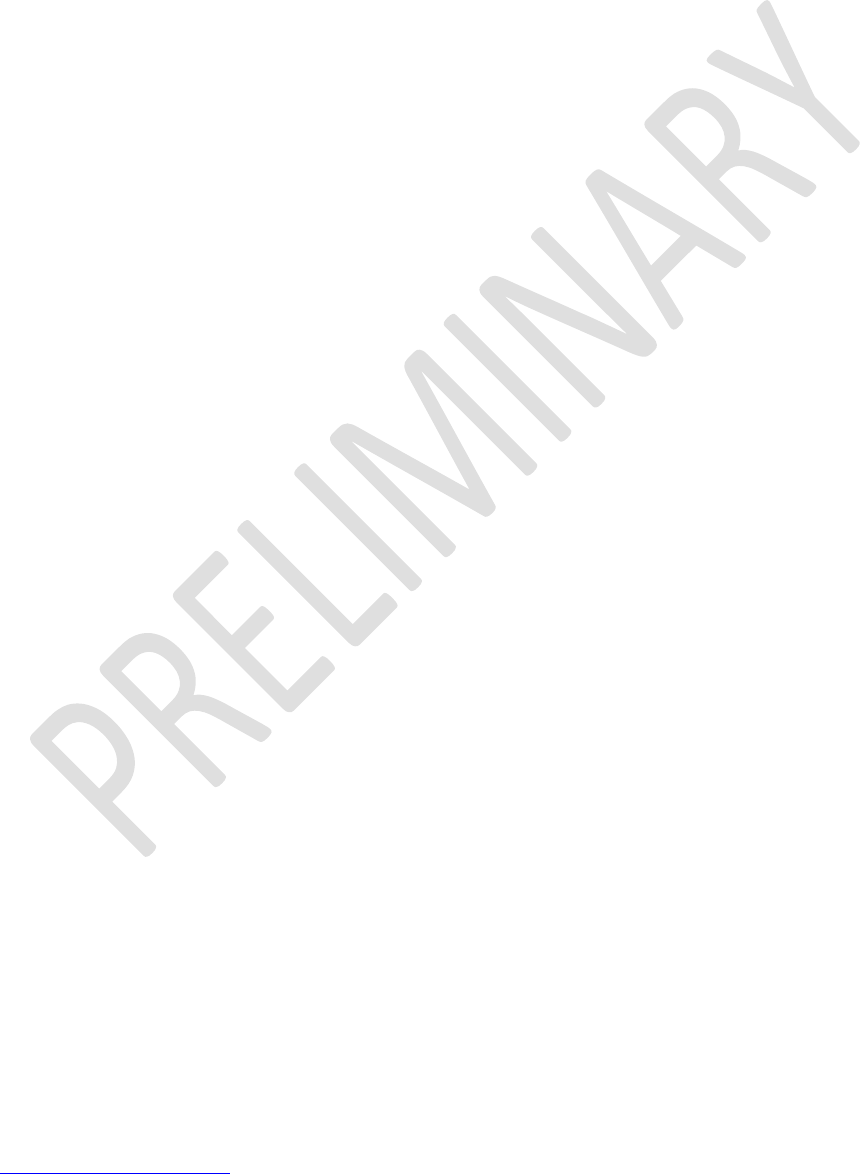
Class 1 Bluetooth v2.0 Module
User’s Guide
Americas: +1-800-492-2320 Option 2
Europe: +44-1628-858-940
Hong Kong: +852-2923-0610
www.lairdtech.com/bluetooth
43
CONN-GUIDE-BT730_v0.9
6.3.32 AT+BTGY{Enable Promiscuous Page Scanning ONLY}
Enable page scanning only and wait for a connection from any device. Inquiry scans disabled.
Authentication is disabled and encryption is enabled.
Response: <cr,lf>OK<cr,lf>
6.3.33 AT+BTGUY{Enable Promiscuous Page Scanning ONLY}
Enable page scanning only and wait for a connection from any device. Inquiry scans are disabled.
Authentication and encryption are both enabled. The order of U and Y is not significant.
Response: <cr,lf>OK<cr,lf>
6.3.34 AT+BTI<devclass>{Inquire}
This makes the device perform an inquiry for device class code for delay milliseconds and max number
of unique responses, where delay is specified by S register 517 and max is specified by S register 518.
The <devclass> is an optional parameter where the value specifies either a six digit device class code or
a two digit major device class. If it is not specified, the value is taken from S register 516.
When <devclass> is six hexadecimal characters long, it specifies an AND mask which is used to filter
inquiry responses. When <devclass> is two hexadecimal characters long, it forces the inquiry to filter
responses to devices that match their major device class code to this value (can only be in the range 00
to 1F).
Response: <cr,lf>12346789012
<cr,lf>12345678914
<cr,lf>OK<cr,lf>
If the module is waiting for an incoming connection, (entered via AT+BTP, AT+BTG, AT+BTQ), then it
responds with ERROR 14. To perform the inquiry, send AT+BTX to put the module back into idle mode.
Response: <cr,lf>ERROR 14<cr,lf>
6.3.35 ERROR RESPONSE
For a single inquiry request with the Bluetooth inquiry process, a device could respond many times. To
ensure that an address is sent to the host only once for a particular AT+BTI, an array of addresses is
created at the start of each AT+BTI and is filled as responses come in. This array of addresses is stored
in dynamic memory and, if the memory allocation fails, the inquiry procedure is aborted. If that occurs, an
error response is sent to the host.
To clarify, a single AT+BTI never returns the same Bluetooth address more than once, but as long as the
responding device is active, all AT+BTI commands always return it.
Response: <cr,lf>ERROR 27<cr,lf>
6.3.36 AT+BTIV<devclass>{Inquire}
As per AT+BTI but the response includes the device class code for all inquiry responses. Refer to the
‘ERROR RESPONSE’ note in the description for AT+BTI<devclass>.
Response: <cr,lf>12346789012,123456
<cr,lf>12345678914,123456
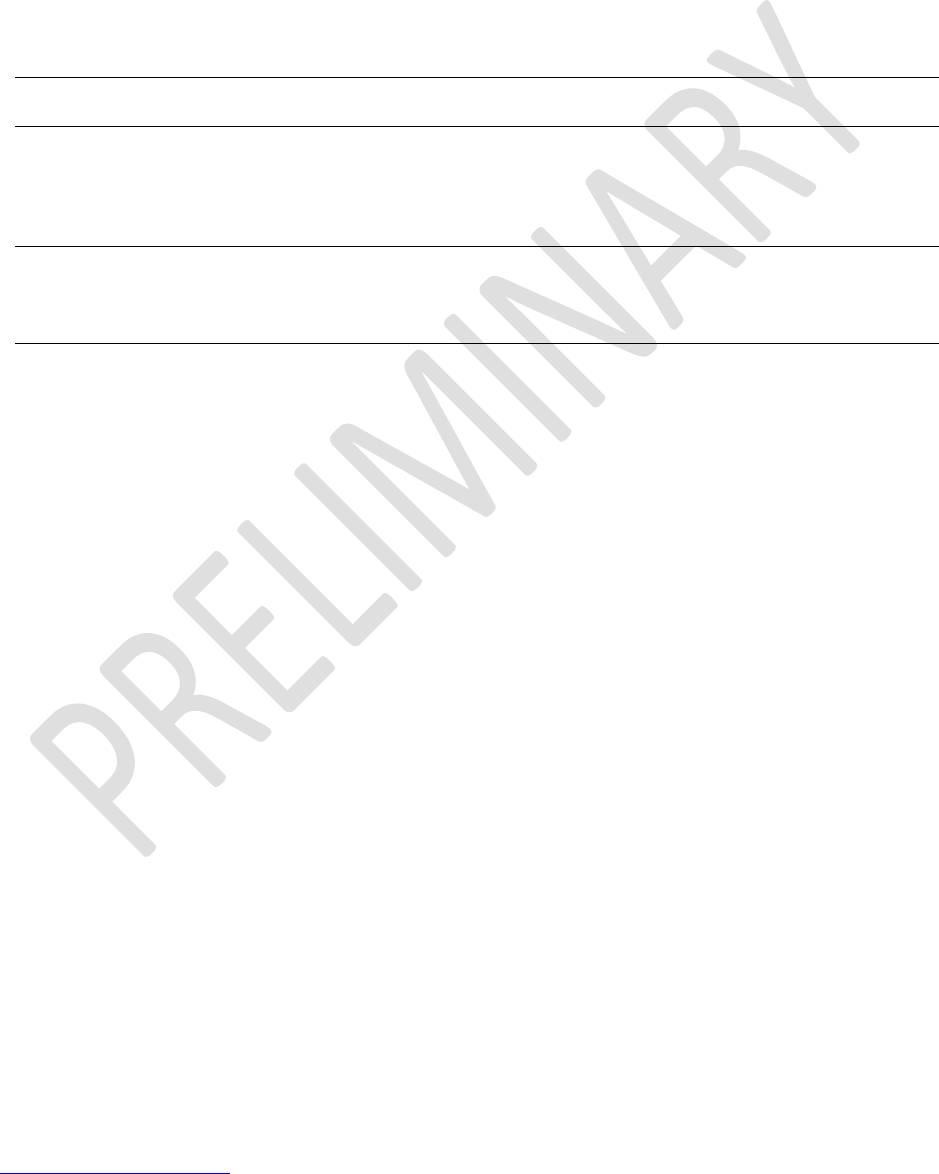
Class 1 Bluetooth v2.0 Module
User’s Guide
Americas: +1-800-492-2320 Option 2
Europe: +44-1628-858-940
Hong Kong: +852-2923-0610
www.lairdtech.com/bluetooth
44
CONN-GUIDE-BT730_v0.9
<cr,lf>OK<cr,lf>
6.3.37 AT+BTIN<devclass>{Inquire}
As per AT+BTI but the response includes the device class code and friendly name for all inquiry
responses. Please refer to the ‘ERROR ESPONSE’ note in the description for AT+BTI<devclass>. The
friendly name strings are in UTF-8 format as per the Bluetooth specification.
Response: <cr,lf>12346789012,123456,"TDK SYSTEMS AT DONGLE 1"
<cr,lf>12345678914,123456, “TDK SYSTEMS RS232"
<cr,lf>OK<cr,lf>
Note: Many releases of firmware return the product name as LAIRD TECHNOLOGIES, e.g.
Response: <cr,lf>12346789012,123456,"TDK SYSTEMS AT DONGLE 1"
<cr,lf>12345678914,123456, "TDK SYSTEMS RS232"
<cr,lf>OK<cr,lf>
Note: We strongly recommend that any software implementation that uses this command
should check for any of Laird, EZURIO, and TDK SYSTEMS to ensure backward and
forward compatibility.
6.3.38 AT+BTK=<string>{Set Passkey}
This command is used to provide a passkey when PIN? 12345678 indications are received
asynchronously. If a pairing is not in progress then the pin is written to non-volatile memory for future use.
Specifying an empty string deletes the key from the non-volatile memory.
The string length must be in the range 0 to 8, otherwise an error is returned.
Response: <cr,lf>OK<cr,lf>
6.3.39 AT+BTM<bd_addr>{Set Incoming Peer Address}
This command is used to store a peer address for incoming connections in non-volatile memory. A value
of 000000000000 has the special meaning of invalid peer address.
When S register 512 = 3, 4, 6, or 7 it waits for an incoming connection from the peer address specified. If
the peer address is not 000000000000, then it waits for a connection from the specified master, otherwise
it connects to anyone.
Response: <cr,lf>OK<cr,lf>
6.3.40 AT+BTM{Delete Incoming Peer Address}
This command is used to delete the peer address previously stored using AT+BTR<bd_addr>.
Response: <cr,lf>OK<cr,lf>
6.3.41 AT+BTM?{Read Incoming Peer Address}
This command is used to display the peer address stored in non-volatile memory, used to put the module
in pure cable replacement mode.
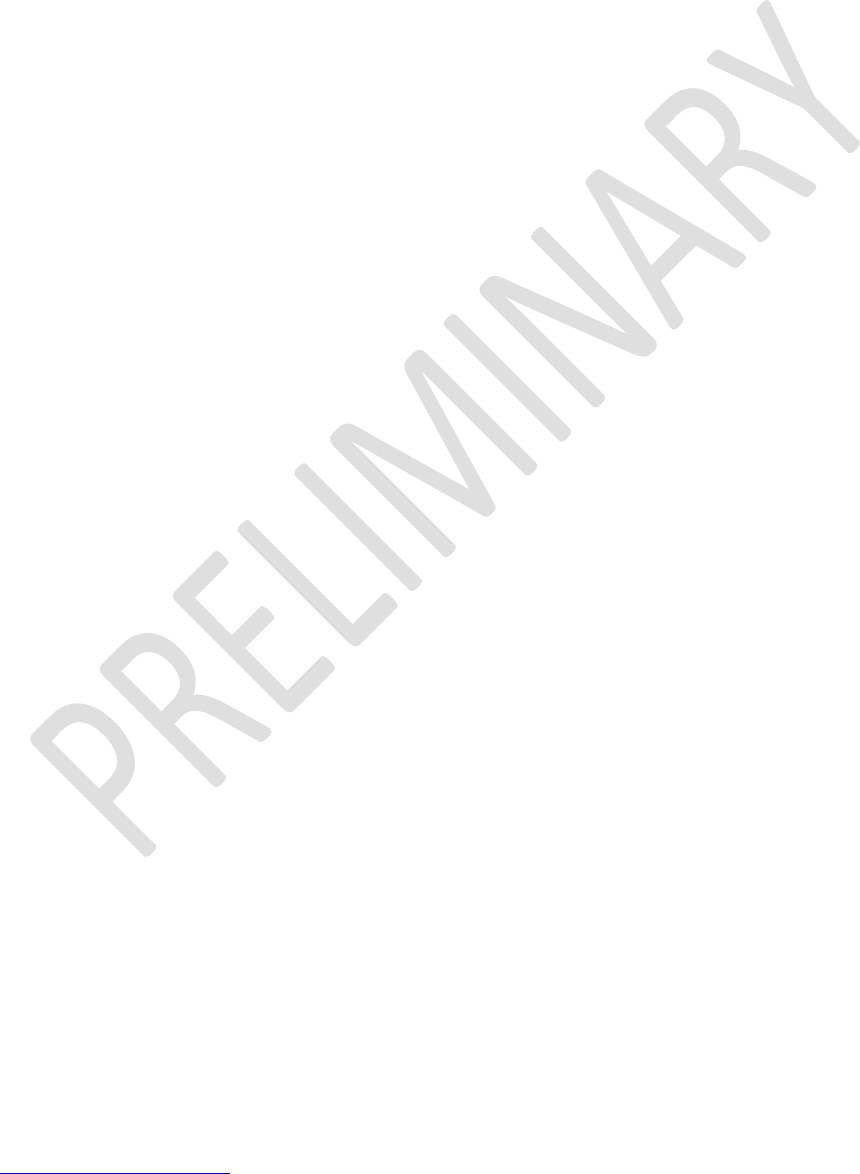
Class 1 Bluetooth v2.0 Module
User’s Guide
Americas: +1-800-492-2320 Option 2
Europe: +44-1628-858-940
Hong Kong: +852-2923-0610
www.lairdtech.com/bluetooth
45
CONN-GUIDE-BT730_v0.9
Response: <cr,lf>12346789012
<cr,lf>OK<cr,lf>
If the location is empty the response is as follows.
Response: <cr,lf>00000000000
<cr,lf>OK<cr,lf>
6.3.42 AT+BTN=<string>{Set Friendly Name in Non-volatile Memory}
This sets the default friendly name of this device as seen by other devices. It is stored in non-volatile
memory. Use AT+BTF to make the name visible to other devices. Use AT+BTN? To read it back. An
empty string (“”) deletes the string from non-volatile memory which forces use of the default name.
Response: <cr,lf>OK<cr,lf>
6.3.43 AT+BTN?{Read Friendly Name from Non-volatile Memory}
Read the default friendly name from non-volatile memory.
Response: <cr,lf>"My FriendlyName"<cr,lf>
<cr,lf>OK<cr,lf>
6.3.44 AT+BTO<devclass>{Open and make Unit Detectable}
After power up and ATZ, this command is sent to ensure that the RFCOMM is initialised and opened and
the service name as specified in AT+BTN is exposed via the SDP registry.
The <devclass> value specifies an optional fixed length hexadecimal device class code. If it is not
specified, then the device class code is taken from S Register 515.
For this command to be effective, S Register 512 must be set to zero.
Response: <cr,lf>OK<cr,lf>
6.3.45 AT+BTP<bd_addr>{Enable Cautious Page/Inquiry Scanning}
Enable page scanning and wait for a connection from device with Bluetooth address <bd_addr>. If the
specified address is 000000000000 then incoming connections are accepted from any device, is as per
AT+BTP without an address. Inquiry scanning is also enabled.
This command also has variants which allow authentication and encryption to be explicitly specified. For
example:
AT+BTPU123456789012
AT+BTPY123456789012
AT+BTPUY123456789012
AT+BTPYU123456789012
Response: <cr,lf>OK<cr,lf>
6.3.46 AT+BTP{Enable Promiscuous Page/Inquiry Scanning}
Enable page scanning and wait for a connection from any device. Inquiry scanning is also enabled.
Authentication and encryption is as per S registers 502 and 503.
Response: <cr,lf>OK<cr,lf>
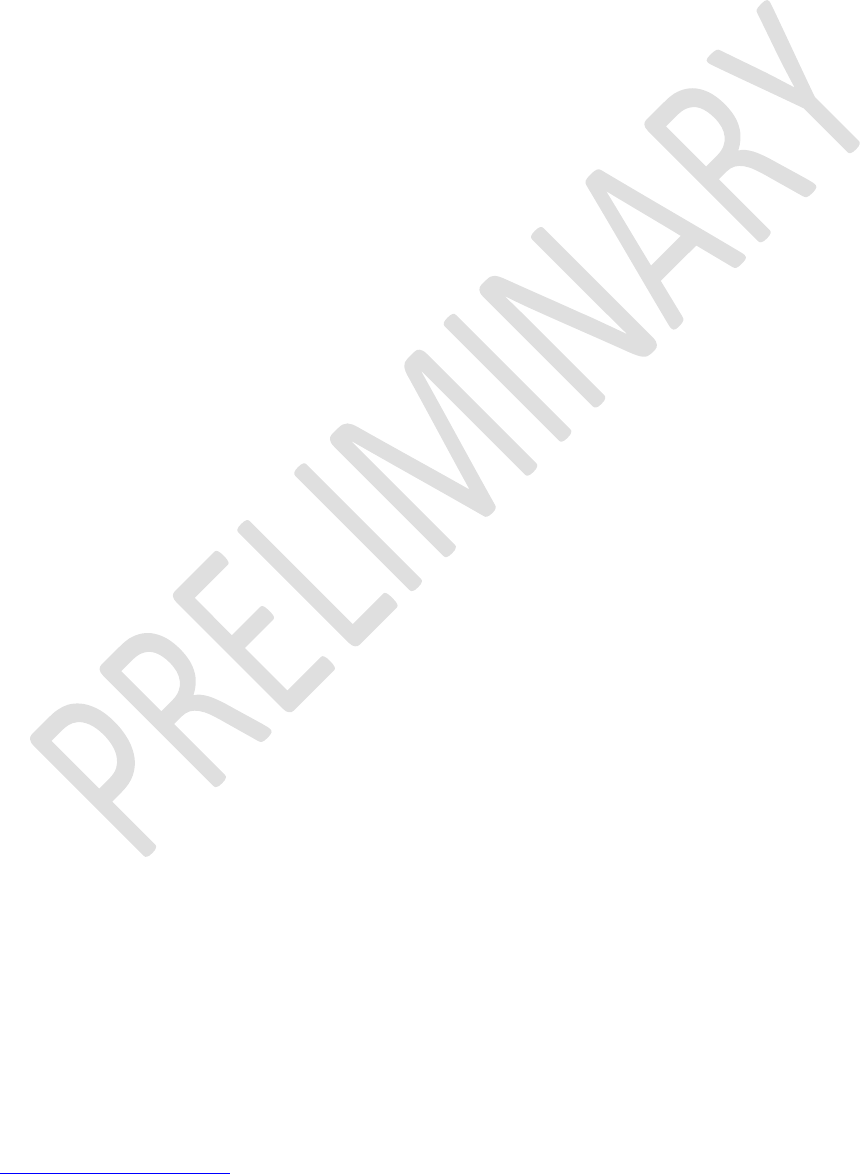
Class 1 Bluetooth v2.0 Module
User’s Guide
Americas: +1-800-492-2320 Option 2
Europe: +44-1628-858-940
Hong Kong: +852-2923-0610
www.lairdtech.com/bluetooth
46
CONN-GUIDE-BT730_v0.9
6.3.47 AT+BTPU{Enable Promiscuous Page/Inquiry Scanning}
Enable page scanning and wait for a connection from any device. Inquiry scanning is also enabled.
Authentication is enabled and encryption is disabled.
Response: <cr,lf>OK<cr,lf>
6.3.48 AT+BTPY{Enable Promiscuous Page/Inquiry Scanning}
Enable page scanning and wait for a connection from any device. Inquiry scanning is also enabled.
Authentication is disabled and encryption is enabled.
Response: <cr,lf>OK<cr,lf>
6.3.49 AT+BTPUY{Enable Promiscuous Page/Inquiry Scanning}
Enable page scanning and wait for a connection from any device. Inquiry scanning is also enabled.
Authentication and encryption are both enabled. The order of U and Y is not significant.
Response: <cr,lf>OK<cr,lf>
6.3.50 AT+BTQ{Enable Inquiry Scans ONLY}
When inquiry scan is enabled, it implies that this device responds to inquiries from other devices. Use
AT+BTX to disable inquiries.
Response: <cr,lf>OK<cr,lf>
6.3.51 AT+BTR<bd_addr>{Set Outgoing Peer Address}
This command is used to store a peer address for outbound connections in non-volatile memory. A value
of 000000000000 has the special meaning of invalid peer address.
This command is used to set up a module in pure cable replacement mode.
If S register 512 = 1 and the peer address is not 000000000000, then it periodically (time specified via S
register 505) attempts to connect to the peer address specified. In this circumstance, all commands from
the host are buffered in the receive buffer until a Bluetooth connection is established with the peer device
and it then sends 0 the buffer across. This means that if the peer device is not in the vicinity and will
never be there, the device effectively becomes useless, as in this circumstance a host would want to get
attention of the AT parser to send it new commands – probably one to delete the peer device.
In this circumstance, a recovery is possible by one of two methods. The first method assumes that the
DTR from the host is connected to the DSR line of the module and the second method assumes that this
connection is absent. In the first method it is enough to deassert the DTR line from the host and that will
abort the autoconnect cycle. The second method is initiated by resetting the device and then ensuring
that the text string “AT+BT&BISM&<cr>” is sent (where <cr> is the carriage return character). There is
special code which looks out for this magic command and terminates the autoconnect cycle if it sees it
and confirms to the host of that fact by sending an “OK” response.
Response: <cr,lf>OK<cr,lf>
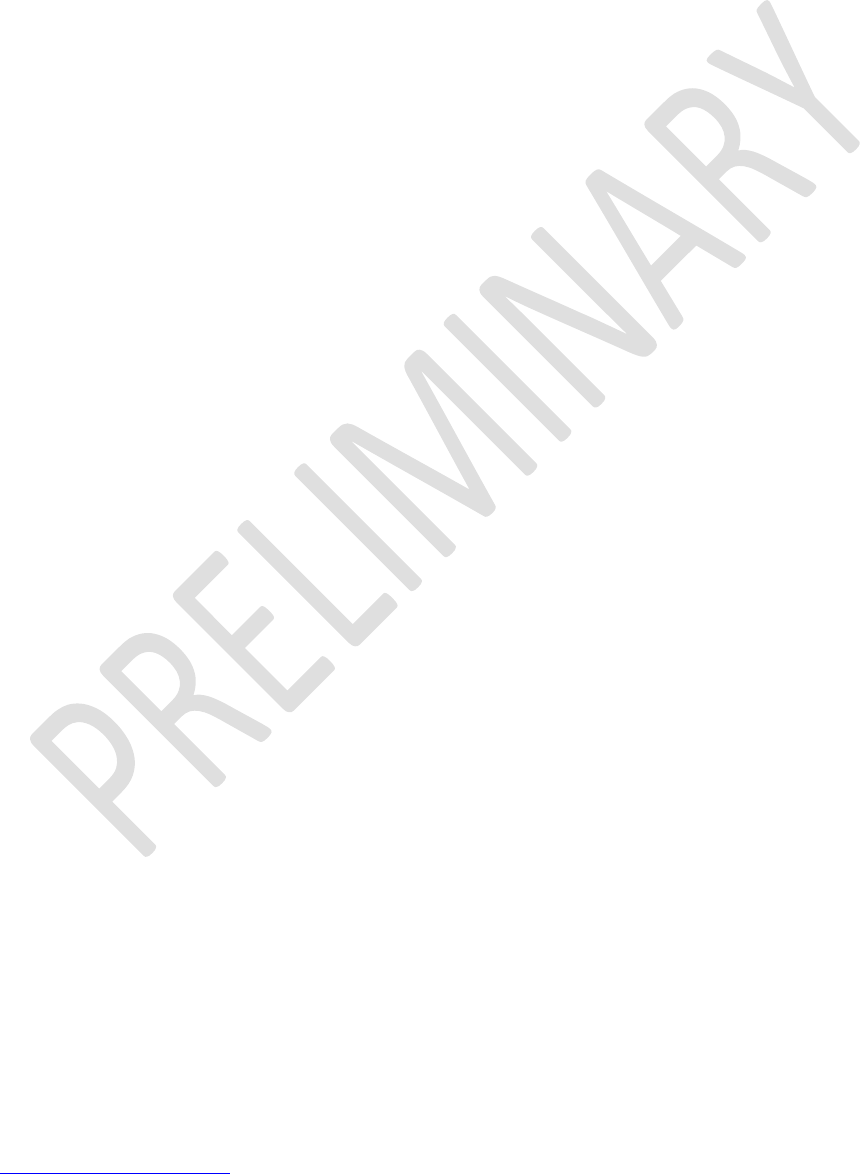
Class 1 Bluetooth v2.0 Module
User’s Guide
Americas: +1-800-492-2320 Option 2
Europe: +44-1628-858-940
Hong Kong: +852-2923-0610
www.lairdtech.com/bluetooth
47
CONN-GUIDE-BT730_v0.9
6.3.52 AT+BTR{Delete Outgoing Peer Address}
This command is used to delete the peer address previously stored using AT+BTR<bd_addr>.
Response: <cr,lf>OK<cr,lf>
6.3.53 AT+BTR?{Read Outgoing Peer Address}
This command is used to display the peer address stored in non-volatile memory, used to put the Laird
device in pure cable replacement mode.
Response: <cr,lf>12346789012
<cr,lf>OK<cr,lf>
If the location is empty the response is as follows.
Response: <cr,lf>00000000000
<cr,lf>OK<cr,lf>
6.3.54 AT+BTS=<string>{Set Service Name}
This writes the name to non-volatile memory. It is used after ATZ, power cycle, or AT+BTO if it has not
yet been issued. Use AT+BTS? to read it back from non-volatile memory. An empty string (“”) deletes the
string from non-volatile memory which forces the default service to be used.
Response: <cr,lf>OK<cr,lf>
If the service name cannot be set for any reason then an error response ERROR 11 is returned.
6.3.55 AT+BTS?{Read Service Name from Non-volatile Memory}
Reads the default service name from non-volatile memory.
Response: <cr,lf>"My ServiceName"<cr,lf>
<cr,lf>OK<cr,lf>
6.3.56 AT+BTT{Add Trusted Device}
This command is used to store the cached link key in the non-volatile database. If the database is full it
responds with an ERROR. If the device is already in the database, then the key is replaced.
If the link key cache is empty (a pairing has not been performed since the device was powered) then the
response is an ERROR.
Response: <cr,lf>OK<cr,lf>
Or
Response: <cr,lf>ERROR<cr,lf>
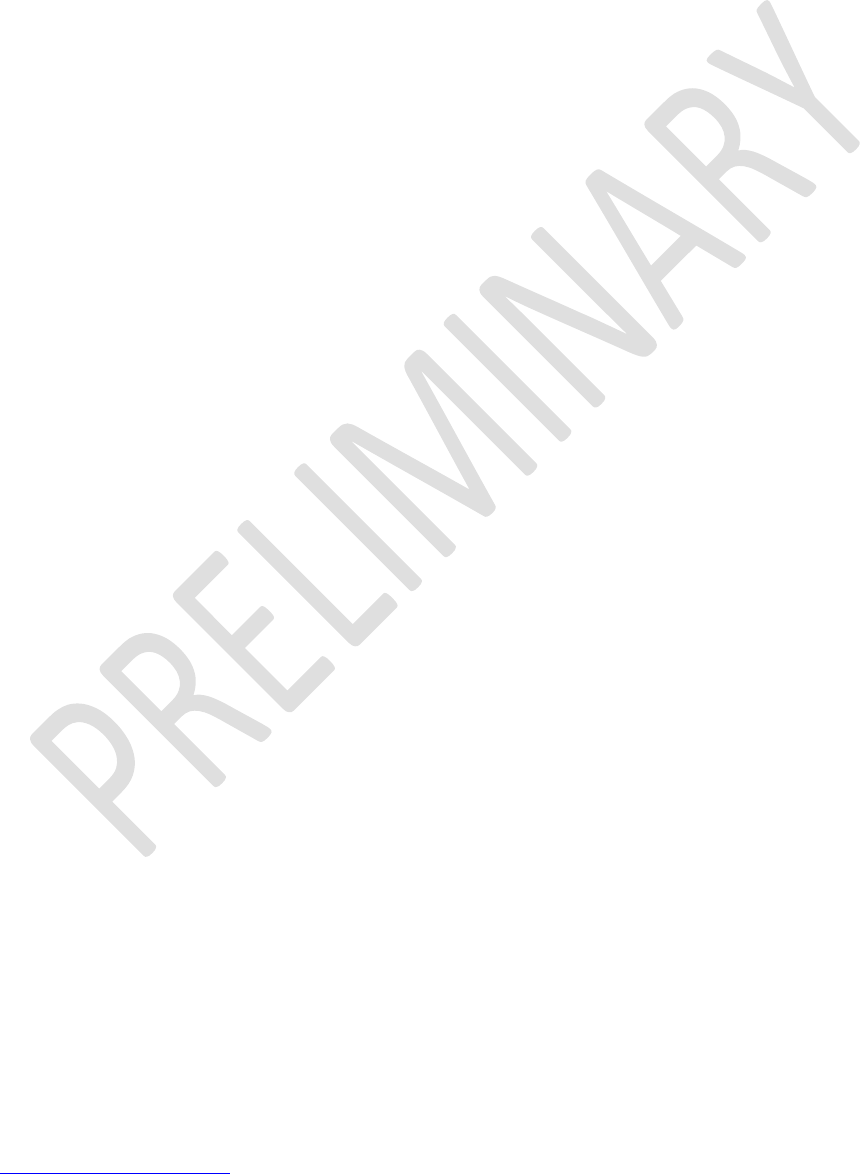
Class 1 Bluetooth v2.0 Module
User’s Guide
Americas: +1-800-492-2320 Option 2
Europe: +44-1628-858-940
Hong Kong: +852-2923-0610
www.lairdtech.com/bluetooth
48
CONN-GUIDE-BT730_v0.9
6.3.57 AT+BTT?{List Trusted Device}
This command is used to list the contents of the trusted device database. The link key is not displayed so
the response is as shown below. If the list is empty then just the OK response is sent otherwise an OK is
used to terminate the list. Use the command ATI6 to read the maximum size of the trusted device
database.
Response: <cr,lf>12346789012
<cr,lf>12345678913
<cr,lf>12345678914
<cr,lf>OK<cr,lf>
6.3.58 AT+BTV<U><Y><bd_addr>,<uuid>{SDP Query for Service }
This command is used to interrogate the SDP database of the peer device <bd_addr> for the service
<uuid>. It results in an ACL connection and then a SDP transaction.
If the <uuid> service is present then
Response: <cr,lf>0
<cr,lf>OK<cr,lf>
If the <uuid> service is not present then
Response: <cr,lf>1
<cr,lf>OK<cr,lf>
If the device <bd_addr> cannot be reached, or is in non-connectable mode then
Response: <cr,lf>2
<cr,lf>OK<cr,lf>
If the SDP database is corrupt or invalid then
Response: <cr,lf>3
<cr,lf>OK<cr,lf>
If the device is not in idle mode then
Response: <cr,lf>4
<cr,lf>OK<cr,lf>
and in this case, the command AT+BTX may put the device into the correct idle mode.
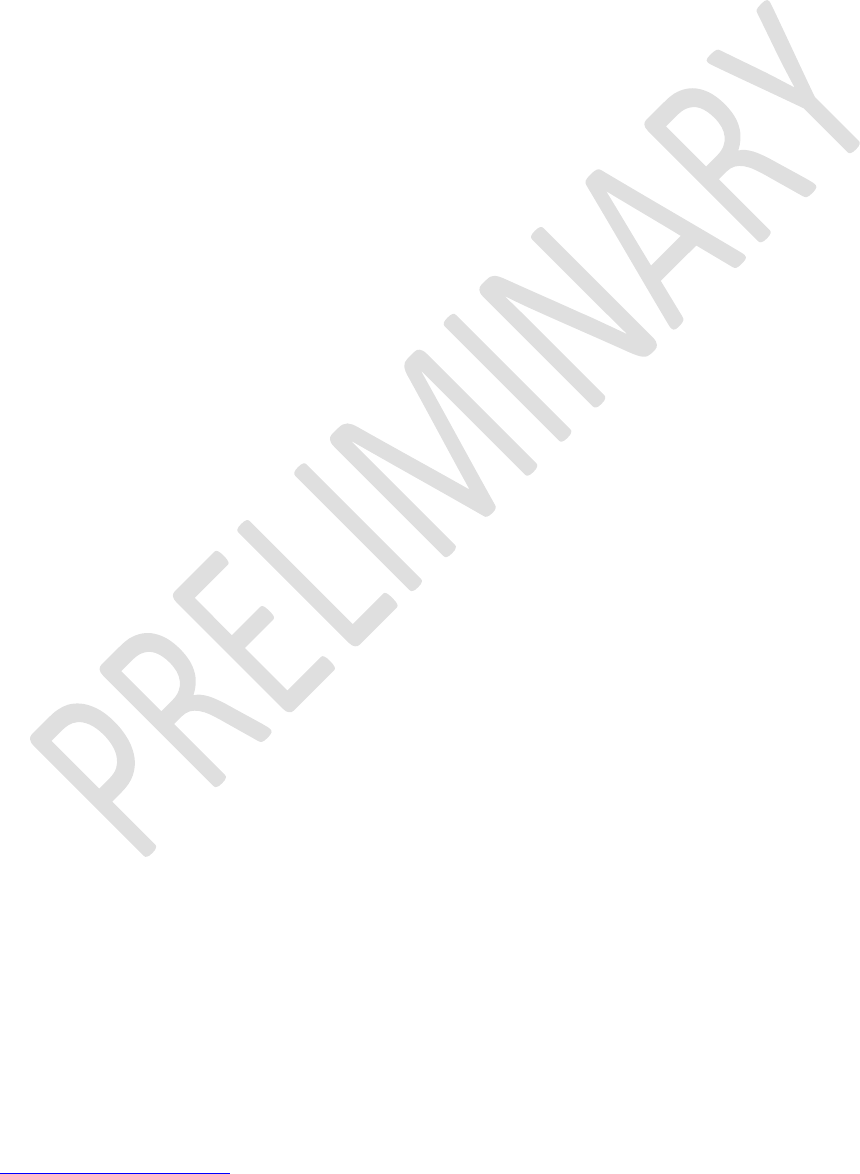
Class 1 Bluetooth v2.0 Module
User’s Guide
Americas: +1-800-492-2320 Option 2
Europe: +44-1628-858-940
Hong Kong: +852-2923-0610
www.lairdtech.com/bluetooth
49
CONN-GUIDE-BT730_v0.9
6.3.59 AT+BTW<bd_addr>{Initiate Pairing}
This initiates pairing with a device whose Bluetooth address is <bd_addr>. An OK response is sent and
when the PIN is required, asynchronous indications are sent to the host in the form PIN? <bd_addr>
where the address confirms the device with which the pairing is to be performed. To supply a PIN, use
the AT+BTK command.
For a successful pairing, the link key is stored in a volatile cache which is overwritten each time a new
pairing is initiated using this command. The link key can be stored in a non-volatile database within the
device. The list of trusted devices is managed using commands AT+BTT?, AT+BTT, and AT+BTD. The
AT+BTT? command produces a list of trusted Bluetooth addresses (link key is never displayed) and
AT+BTT is used to store the cached link key. The command AT+BTD123456789012 is used to remove
the specified device from the database.
The OK response is sent immediately upon receipt of the AT+BTW command. On pairing completion, an
unsolicited message is sent to the host which is in the form PAIR n <bd_addr>. See section 3.7 TBC for
more details.
If AT+BTI, AT+BTP, AT+BTG, AT+BTQ, or ATD is issued between the AT+BTW command and the
subsequence PAIR asynchronous response, then an ERROR response is sent to those commands as
the device is not in a mode from where such commands can be actioned.
Response: <cr,lf>OK<cr,lf>
6.3.60 AT+BTW?{List Cached Trusted Device}
This command is used to list the cached trusted device.
Response: <cr,lf>12346789012
<cr,lf>OK<cr,lf>
If the cache is empty the response is as follows.
Response: <cr,lf>OK<cr,lf>
6.3.61 AT+BTX{Disable Page/Inquiry Scanning}
Disable page/inquiry scanning. This means it is accept incoming connections or inquiry requests. In fact,
this negates the effect of AT+BTQ, AT+BTG and AT+BTP commands.
Response: <cr,lf>OK<cr,lf>
6.3.62 AT+AG<command><parm>{Audio gateway Control}
See audio gateway specific specification for more details.
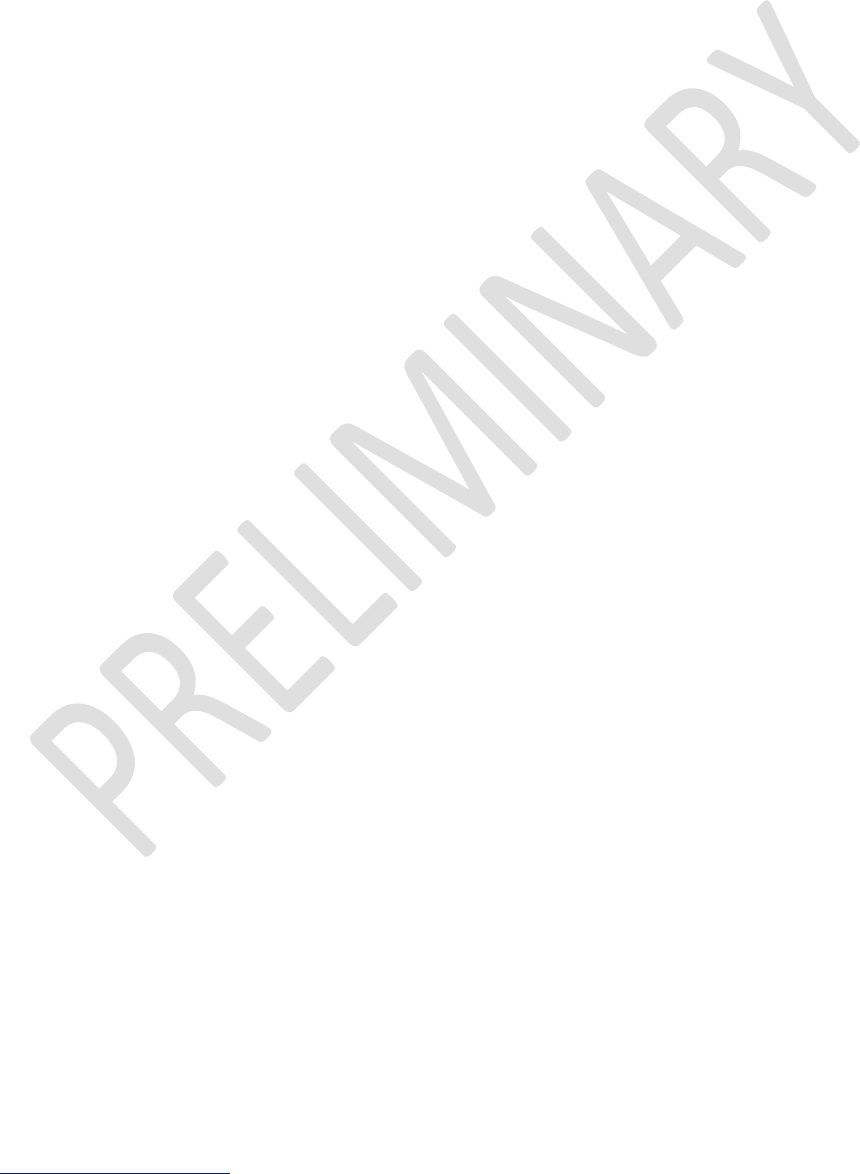
Class 1 Bluetooth v2.0 Module
User’s Guide
Americas: +1-800-492-2320 Option 2
Europe: +44-1628-858-940
Hong Kong: +852-2923-0610
www.lairdtech.com/bluetooth
50
CONN-GUIDE-BT730_v0.9
6.4 Unsolicited Responses
The ‘AT’ Protocol is a command/response type of protocol. This means that the Laird device will normally
only respond to AT commands.
Under special circumstances, unsolicited responses are sent to the host. They are described in the
following subsections.
6.4.1 RING
This string is sent to the host when a remote device is initiating a serial port connection. The fully qualified
string is in the form RING 012345678901 where 012345678901 is a 12 digit hexadecimal number which
corresponds to the remote device’s Bluetooth address. This response is sent to the host every two
seconds until the host either accepts the connection using the ATA command or rejects it using the ATH
command.
6.4.2 PIN?
This response is sent to the host during a pairing negotiation.
The fully qualified string is PIN? 012345678901 where 012345678901 is the Bluetooth address of the
peer device. In response, the host must supply a pin code which is entered using the AT+BTK command.
If the peer address does not supply the address in the message exchange, then the address is specified
as 000000000000 – and the paring will proceed as normal.
6.4.3 AUDIO ON
This response is sent to the host when a SCO channel has been established.
6.4.4 AUDIO OFF
This response is sent to the host when an existing SCO channel has been closed.
6.4.5 AUDIO FAIL
This response is sent to the host when a SCO channel setup fails.
6.4.6 ERROR 27
This response is sent to the host on power up if the firmware is unlicensed.
6.4.7 PAIR n <bd_addr>
This response is sent to the host on termination of a pairing process. If pairing was successful then ‘n’ = 0,
if a timeout occurred then ‘n’=1 and for all other unsuccessful outcomes the value is 2.
The parameter <bd_addr> is the address of the peer device if available.
6.4.8 PAIR 0 <bd_addr> MM
This response is sent to the host on termination of a successful pairing process. The optional MM is sent
only if S Register 538 is set to 1 to automatically save the link key. The value MM indicates the result of
the save operation and a value of 00 implies success, otherwise the value corresponds to an error code.
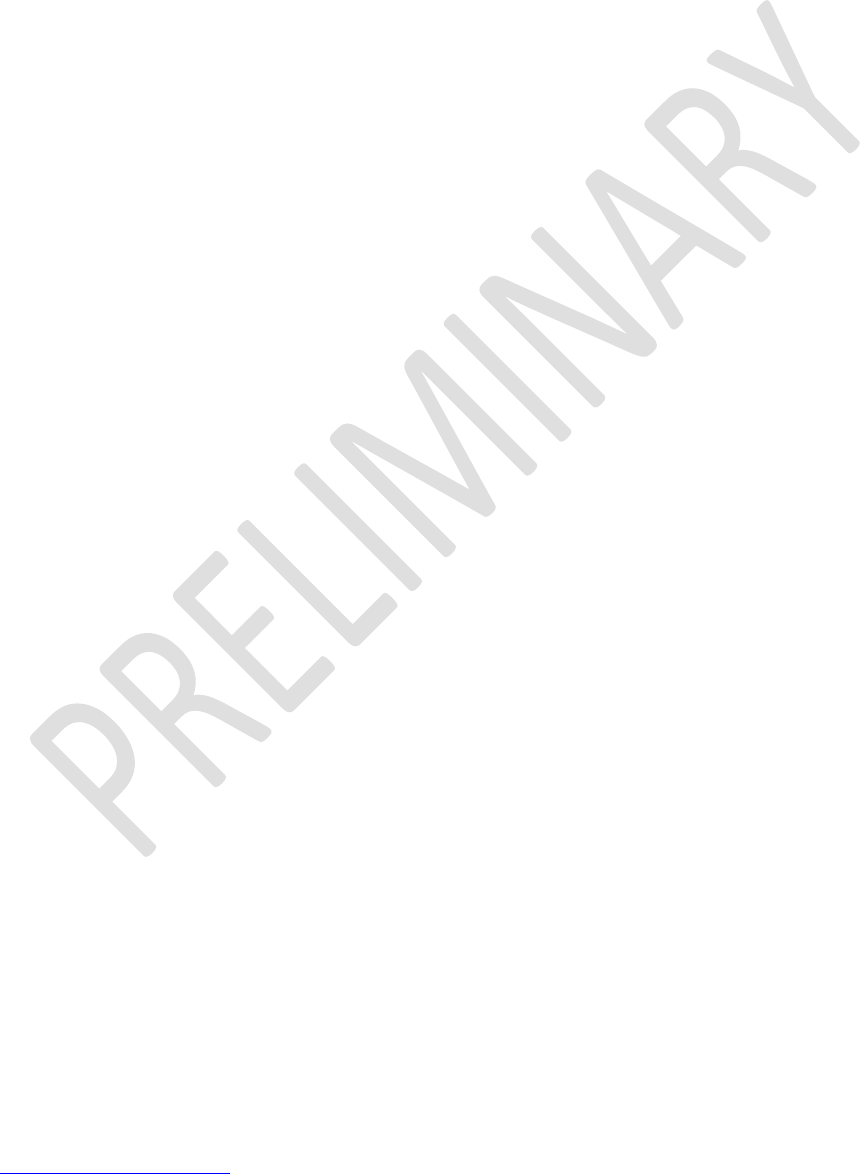
Class 1 Bluetooth v2.0 Module
User’s Guide
Americas: +1-800-492-2320 Option 2
Europe: +44-1628-858-940
Hong Kong: +852-2923-0610
www.lairdtech.com/bluetooth
51
CONN-GUIDE-BT730_v0.9
6.4.9 RX<string>
This response is sent to the host when the unit is in online-command mode and S Register 531 is set to 3
and data arrives from a peer.
If the data from the string contains non-visual characters (for example ASCII 0 to 31 and ASCII 128 to
255), then those characters are translated into a three character escape sequence starting with ‘\’. For
example the embedded <cr><lf> sequence would be sent as the six character string \0D\0A.
If the data contains the character ‘"’ then it is sent as \22.
If the data contains the character ‘\’ then it is sent as \5C
6.4.10 AG<string>
This response is sent to the host when a serviced audio gateway connection is in progress and the profile
requires some action from the host.
6.5 Incoming Connections
The Laird device can be configured using the AT+BTP or AT+BTG command so that it scans for incoming
connections from other Bluetooth devices. It can also be configured via S Register 512 to be in this mode
by default on power up.
When the lower layers detect an incoming call, a RING 123456789012 string is sent to the host every
second. The command ATA is used to accept the connection and ATH to reject it.
On connection, if the S0 Register is >=0 then confirmation to the host is in the form:
CONNECT 123456789012
CONNECT 123456789012 A
CONNECT 123456789012 E
CONNECT 123456789012 AE
(A = Authenticated connection; E = Encryption enabled)
When S0 register is -1, neither RING nor CONNECT is sent to the host and the connection is silently
accepted.
If the S 100 register is non-zero, then after the ring indications specified by this register have been sent to
the host, and the host has failed to accept or reject the incoming connection, then an automatic ‘hangup’
is initiated.
6.6 Dropping Connections
In a conventional telephony modem, a call is normally terminated by first sending a +++ character
sequence enveloped by an escape sequence guard time (of the order of 100 to 1000 milliseconds) to
enter local command and connected mode and then the ATH command.
Laird Bluetooth modules provide a variety of ways of dropping a connection. One method is similar to the
above, but instead a ^^^ character sequence is used; this eliminates ambiguity when a data call is in
progress via a mobile phone which was established using the mobile phone’s Bluetooth AT modem. The
second method involves the host dropping the DTR (DSR from the module’s viewpoint) handshaking line.
Being able to drop a connection using the escape sequence ^^^ has a severe penalty on data throughput.
In fact, the data rate is of the order of 85 kbps instead of about 200 kbps. To cater for this performance hit,
the device’s connection drop capability is configurable to be in one of two modes.
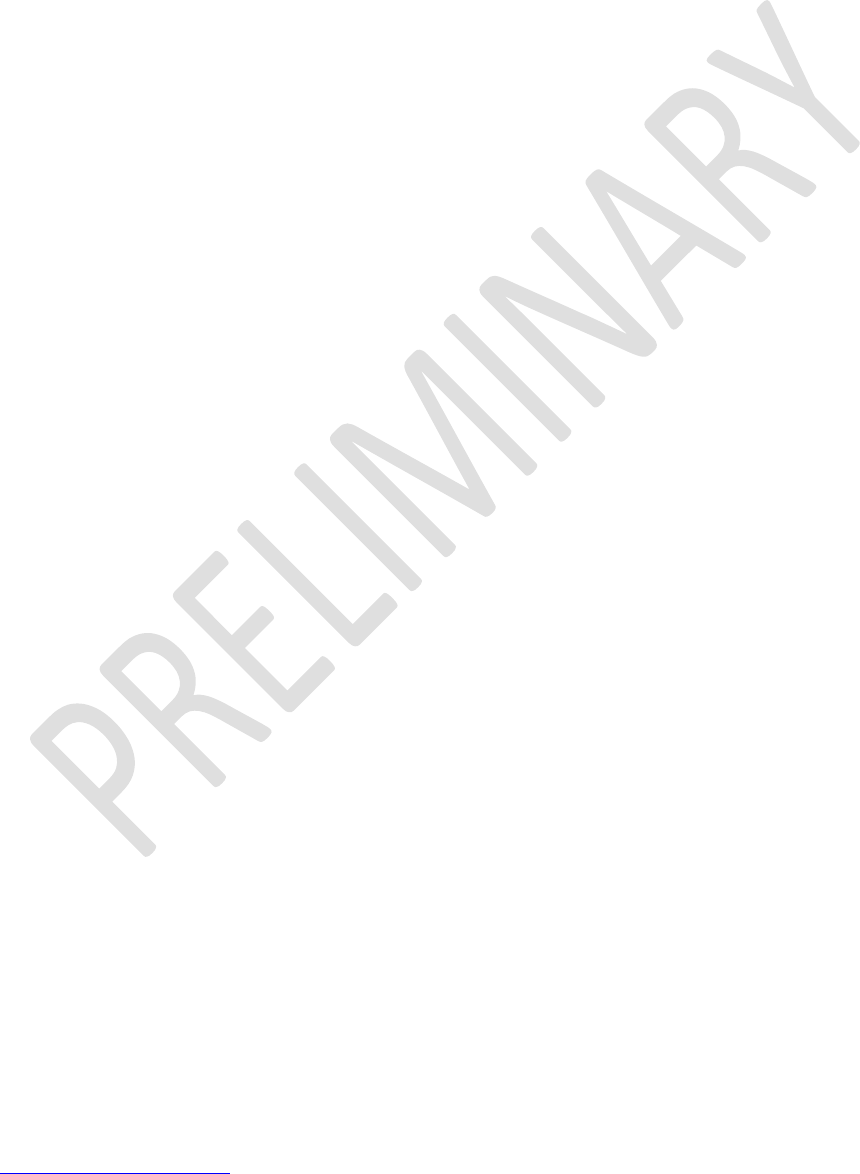
Class 1 Bluetooth v2.0 Module
User’s Guide
Americas: +1-800-492-2320 Option 2
Europe: +44-1628-858-940
Hong Kong: +852-2923-0610
www.lairdtech.com/bluetooth
52
CONN-GUIDE-BT730_v0.9
One mode allows for a connection to be dropped using either method; the other mode allows for a
connection drop using the DTR method only. By default, the device is in the former mode. This mode is
selected using the S507 register. See 錯誤! 找不到參照來源。 for more information on S Registers.
To reiterate, the escape sequence is as follows:
<Guard time><Esc Chr><Guard time><Esc Chr><Guard time><Esc Chr><Guard time>
Even when a file transfer is occurring and it happens to be full of <Esc Chr> characters, it is not going to
drop into command mode because, when transferring a file, it is going to occur as fast as possible; this
means that the inter character gap is going to be significantly shorter than the <Guard time>.
The <Esc Chr> character can be changed via the S2 register and the <Guard time> interval can be
specified via the S12 register.
6.7 Pairing and Trusted Devices
When authentication is enabled via S register 500 or when using the ‘u’ modifier in the ATD and AT+BTP
commands, a connection attempt requires a link key for the peer device. The link key can be obtained
prior to connection by invoking the AT+BTW and AT+BTK commands. A new link key can be obtained as
often as required and is stored in a volatile cache. At any time, this cached link key can be added to the
trusted devices database using the AT+BTT command. A trusted device can be deleted using the
AT+BTD command. To view a list of trusted device, issue the command AT+BTT?.
In addition, if S Register 538 is set to 1, then on a successful pairing, the link key is automatically
saved to the trusted device database. In that case, the asynchronous message PAIR 0 <bd_addr>
has an error code appended at the end to convey the result of the save operation.
When a connection attempt requires a link key, the trusted device database is searched automatically
and if one exists, it is provided without host interaction. If the link key is not present, then the connection
attempt is terminated and a NO CARRIER response is given to the ATD command.
A typical session to pair an Ericsson T68i (for example) to a serial module would be:
1. Make the T68i discoverable and send AT+BTI to the serial module. This results in inquiry
responses from all devices. Make a note of the Bluetooth address of the phone e.g. 123456789012.
2. On the T68i start pairing procedure by selecting “Phone accepts” in the relevant Bluetooth menu.
3. Send command AT+BTW123456789012 to the serial module.
4. Confirm that you get an OK response and then PIN? responds on a two second interval.
5. Enter a pin code on the phone (such as 12345768).
6. Enter the command AT+BTK=”12345678”.
The phone confirms success and likewise the serial module responds with OK.
7. On success, the serial module sends an unsolicited message in the form of PAIR 0 <bd_addr>.
8. Send AT+BTT to the serial module so that the pairing information is stored in the non-volatile
database.
9. Confirm that the link key has been stored by sending the command AT+BTT?. This results in a list
of all devices paired with the module.
If two Laird devices need to be paired, then it can be accomplished as follows:
To device 1 send ATI4, it responds with the local Bluetooth address (e.g., 123456789001).
To device 1 send AT+BTP. It becomes discoverable and connectable.
To device 2 send AT+BTW123456789001 and it responds with OK.
Both devices display PIN? asynchronous responses.
To both modules. send AT+BTK=”12345678”.
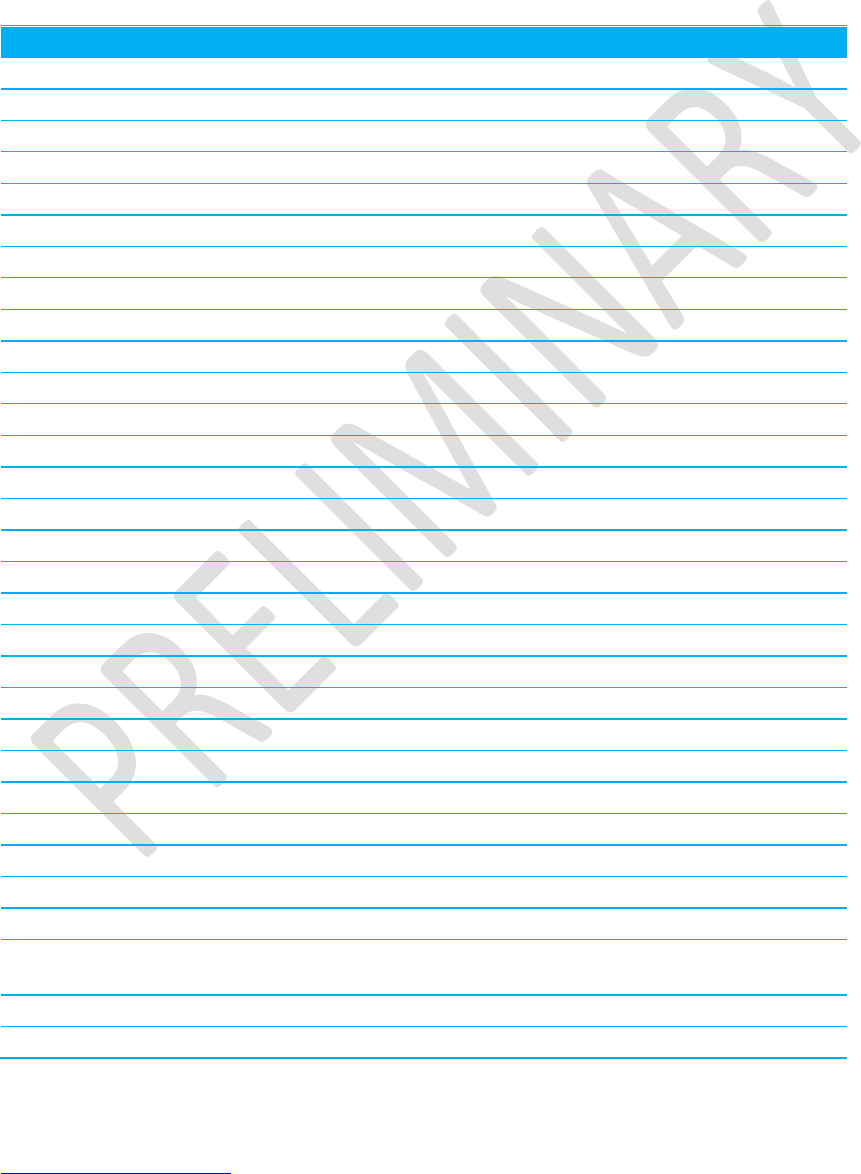
Class 1 Bluetooth v2.0 Module
User’s Guide
Americas: +1-800-492-2320 Option 2
Europe: +44-1628-858-940
Hong Kong: +852-2923-0610
www.lairdtech.com/bluetooth
53
CONN-GUIDE-BT730_v0.9
On success, the serial module sends an unsolicited message in the form of PAIR 0
<bd_addr>
The pairing link key is now in volatile memory; send AT+BTT to both.
The two units now have pairing information which will survive a power cycle.
6.8 Error Responses
All error responses from the Laird device are in the form <cr,lf>ERROR nn<cr,lf>, where nn is a number
in the range 00 to 99.
Error
Description
01
Register not recognised
02
Value for register is out of range
03
Incoming call not pending
04
No call to connect to. This error code has meaning for ATO only
05
Syntax error
06
Empty string
06
Device class could not be stored
08
Invalid Device Class code
09
Invalid Bluetooth address
10
Could not set Service or Friendly name
11
PS Store Write
12
PS Store Read
13
Not Idle
14
Incorrect mode
15
Already scanning
16
Pairing is already in progress
17
Not USED
18
Not USED
19
Not USED
20
Not safe to write to Non-volatile Store - Ongoing Bluetooth Connection
21
Link Key Cache is empty
22
Link Key Database is full
23
Malloc returned NULL - Resource Issue
24
Remote Address same as Local Address
25
Connection Setup Fail, DSR Not asserted
26
Unauthenticated licence
27
Max Responses (See S Register 518) too high. Memory allocation error
28
The length of Pin in AT+BTK is too long
29
Invalid Ring count specified for S Register 0 or 100. If S0<>0 and S100<>0 then
S0 must be < S100
30
ADC Error
31
Analogue Value cannot be read as it is set for output
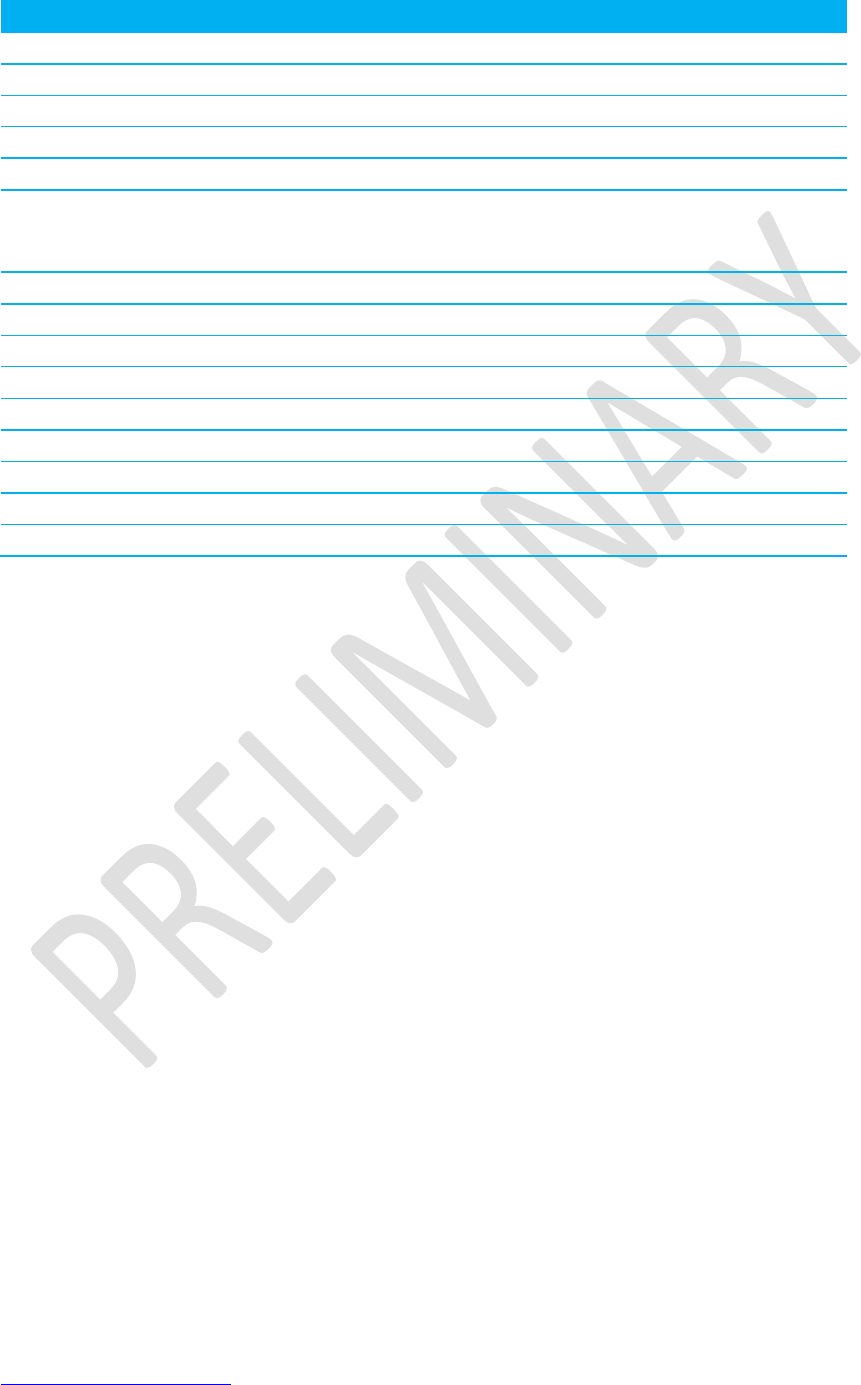
Class 1 Bluetooth v2.0 Module
User’s Guide
Americas: +1-800-492-2320 Option 2
Europe: +44-1628-858-940
Hong Kong: +852-2923-0610
www.lairdtech.com/bluetooth
54
CONN-GUIDE-BT730_v0.9
Error
Description
32
Analogue Value cannot be written as it is set for input
33
S Register value is invalid
34
Both L and R modifier cannot be specified in ATD command
35
Invalid Major Device class – valid value in range 0x00 to 0x1F inclusive
36
Pairing in progress – Command cannot be actioned – try again later
37
Invalid Sniff parameter specified.
E.g. new Attempt value greater than MinInterval. Solution is to first increase
MinInterval and re-enter the Attempt value.
38
Get Remote Friendly name Failed
39
Failed to change mode to Multipoint
40
7 Bit mode requires parity to be even or odd
41
Stream error
42
Stream pending
43
Unknown AG command
44
Busy try later
45
Not allowed – call waiting has not been enabled by peer or in hostless mode
46
GPIO line can’t be set as it has not been configured as an output
6.9 Factory Default Mode
Laird devices are capable of operating at a wide range of baud rates. S Registers 520 and 521 allow the
baud rate to be easily set. The baud rate clock generator in the Laird device is more versatile than one
available in a standard 16550 UART commonly available in PCs.
In fact, as long as the equation BAUDRATE * 0.004096 produces an integer value, there is 0% error in
clocking for that baud rate.
Because of this, it is possible to set a baud rate that a PC cannot cope with and, in that circumstance, it is
virtually impossible to communicate with it.
For this type of circumstance, the Laird device comes out of reset using 9600,N,8,1 comms settings for
exactly 750 milliseconds and then reverts to the comms parameters as per the S Registers.
If the host sends the string !<BISM>!<cr> where <cr> is the carriage return character within that 750 ms
period, then the module remains at 9600,N,8,1 and configures itself using factory default S Register
values.
6.10 Miscellaneous Features
This chapter describes various features which cannot be categorized appropriately.
6.10.1 RI dependent Start-up Mode
The UART_RI line can be configured as an input and on power its state can be used to force the device
into one of two modes. See description for S Registers 565 to 569 inclusive for more details.
For example, the feature could allow a device to make an outgoing connection if RI is in one state, and be
ready for an incoming connection in the other.
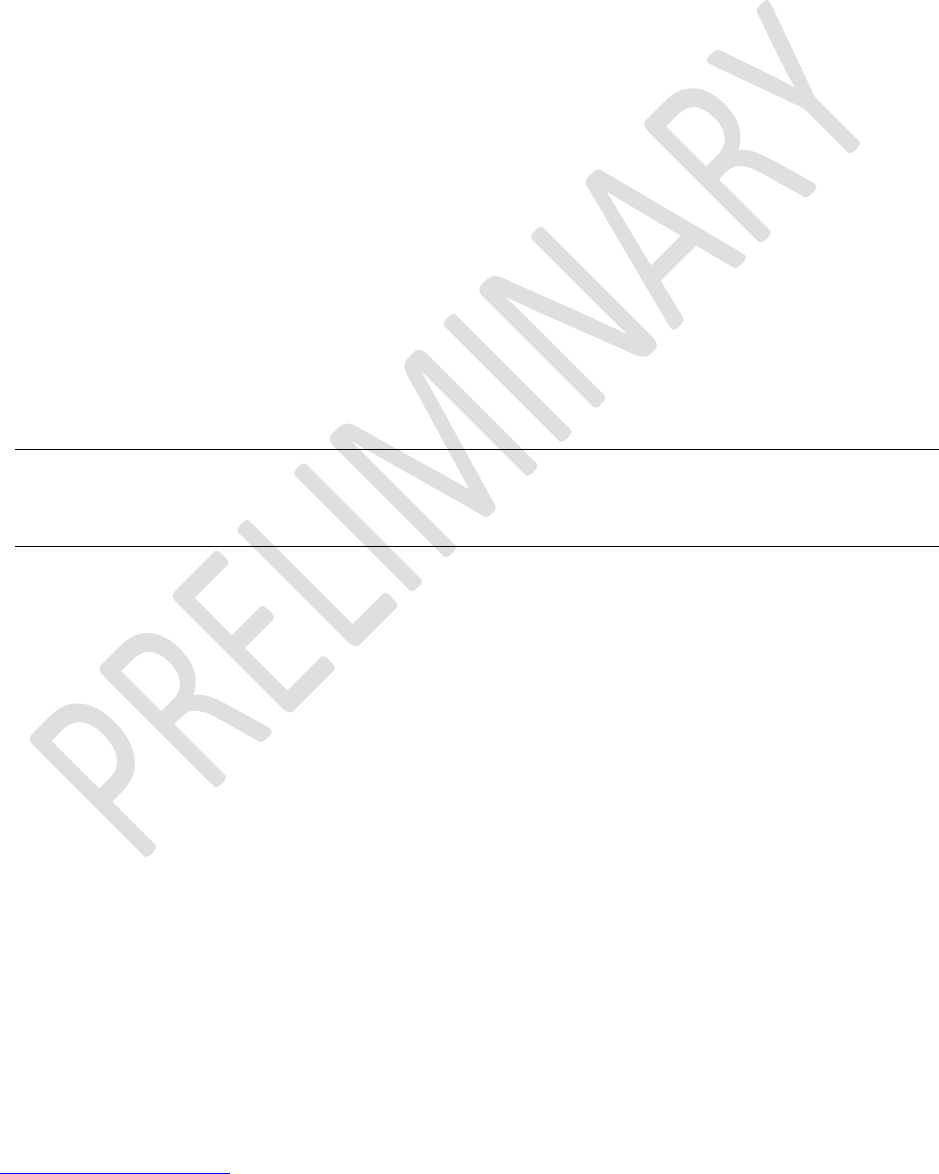
Class 1 Bluetooth v2.0 Module
User’s Guide
Americas: +1-800-492-2320 Option 2
Europe: +44-1628-858-940
Hong Kong: +852-2923-0610
www.lairdtech.com/bluetooth
55
CONN-GUIDE-BT730_v0.9
6.10.2 Pulse a GPIO pin
To flash a GPIO pin, set it as an output using S reg 610 and then use S reg 585 to 587 inclusive to set the
pin, period, and duty cycle respectively.
6.10.3 Flash LED on Connectable Mode
S reg 534 now takes a value up to two. A value of two configures it so that it blinks when the module is in
connectable mode.
6.10.4 Reset via BREAK
The module can be reset by sending a BREAK signal. A BREAK signal exists when the module’s
UART_RX input is in a non-idle state (0v) for more than 125 milliseconds.
6.10.5 Digital I/O Cable Replacement
The module has a number of general purpose digital I/O pins. The direction of these is specified via S
Reg 610.
When S Reg 531 is set to four at both ends of the connection, on connection, any changes in the states
of the inputs at one end are transmitted to the peer, which then reflects those states on the appropriate
I/O pins if they have been configured as outputs.
It is recommended that the value of S Reg 610 at one end be the complement of the other end. That way,
inputs at one end are mirrored at the other end and vice versa.
In addition S Reg 506 must be set to zero, which disables echoes.
Note: Due to inherent latency of Bluetooth transmission, expect the change of state to be
delayed. This value is typically 100 ms and can be much more if the quality of the link is
bad which results in many retries.
It is assumed that an audio channel is not active at any time.
6.10.6 Append Bluetooth Address to Friendly name
If S Reg 593 is set to one, then the last six hex digits of the Bluetooth address are automatically
appended to the friendly name. This allows multiple devices with the same name in a neighbourhood to
be differentiated.
6.11 Disclaimers
LAIRD WIRELESS PRODUCTS ARE NOT AUTHORISED FOR USE AS CRITICAL COMPONENTS IN
LIFE SUPPORT DEVICES OR SYSTEMS WITHOUT THE EXPRESS WRITTEN APPROVAL OF THE
MANAGING DIRECTOR OF LAIRD TECHNOLOGIES LTD.
The definitions used herein are:
a) Life support devices or systems are devices which (1) are intended for surgical implant into the
body, or (2) support or sustain life and whose failure to perform when properly used in
accordance with the instructions for use provided in the labelling can reasonably be expected to
result in a significant injury to the user.
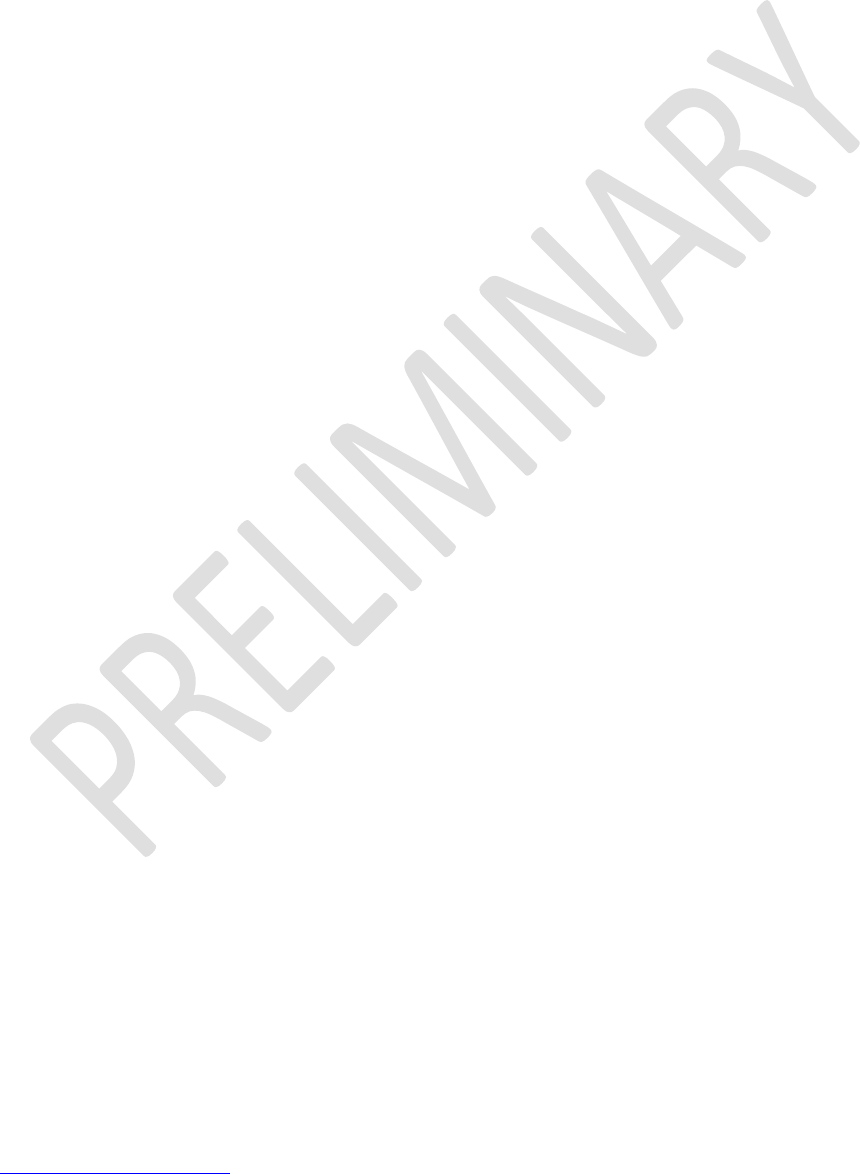
Class 1 Bluetooth v2.0 Module
User’s Guide
Americas: +1-800-492-2320 Option 2
Europe: +44-1628-858-940
Hong Kong: +852-2923-0610
www.lairdtech.com/bluetooth
56
CONN-GUIDE-BT730_v0.9
b) A critical component is any component of a life support device or system whose failure to perform
can be reasonably expected to cause the failure of the life support device or system, or to affect
its safety or effectiveness.
Laird Technologies does not assume responsibility for use of any of the circuitry described, no circuit
patent licenses are implied and Laird Technologies reserves the right at any time to change without notice
said circuitry and specifications.
6.12 Data Sheet Status
Laird reserves the right to change the specification without prior notice in order to improve the design and
supply the best possible product.
6.13 Changes between release
Although every effort is made to ensure compatibility, the functionality of some features has changed due
to the evolution of the Bluetooth chips and stack implementations. Users migrating between firmware
variants should check the following differences:
ATZ
AT+BTIN
Please check with Laird Technologies Ltd for the most recent data before initiating or completing a design.
7. PCM CODEC INTERFACE
PCM_OUT, PCM_IN, PCM_CLK, and PCM_SYNC carry up to three bi-directional channels of voice data,
each at 8ksamples/s. The format of the PCM samples can be 8-bit A-law, 8-bit μ-law, 13-bit linear, or 16-
bit linear. The PCM_CLK and PCM_SYNC terminals can be configured as inputs or outputs, depending
on whether the module is the master or slave of the PCM interface.
Contact a Laird FAE for further details.
The module is compatible with the Motorola SSI TM interface and interfaces directly to PCM audio
devices including the following:
7.1 Compatible Codec Chips
Winbond W61360 13-bit linear CODEC (Motorola MC145483 compatible)
OKI MSM7702 single channel A-law and μ-law CODEC
The default codec support is for the Winbond W61360.
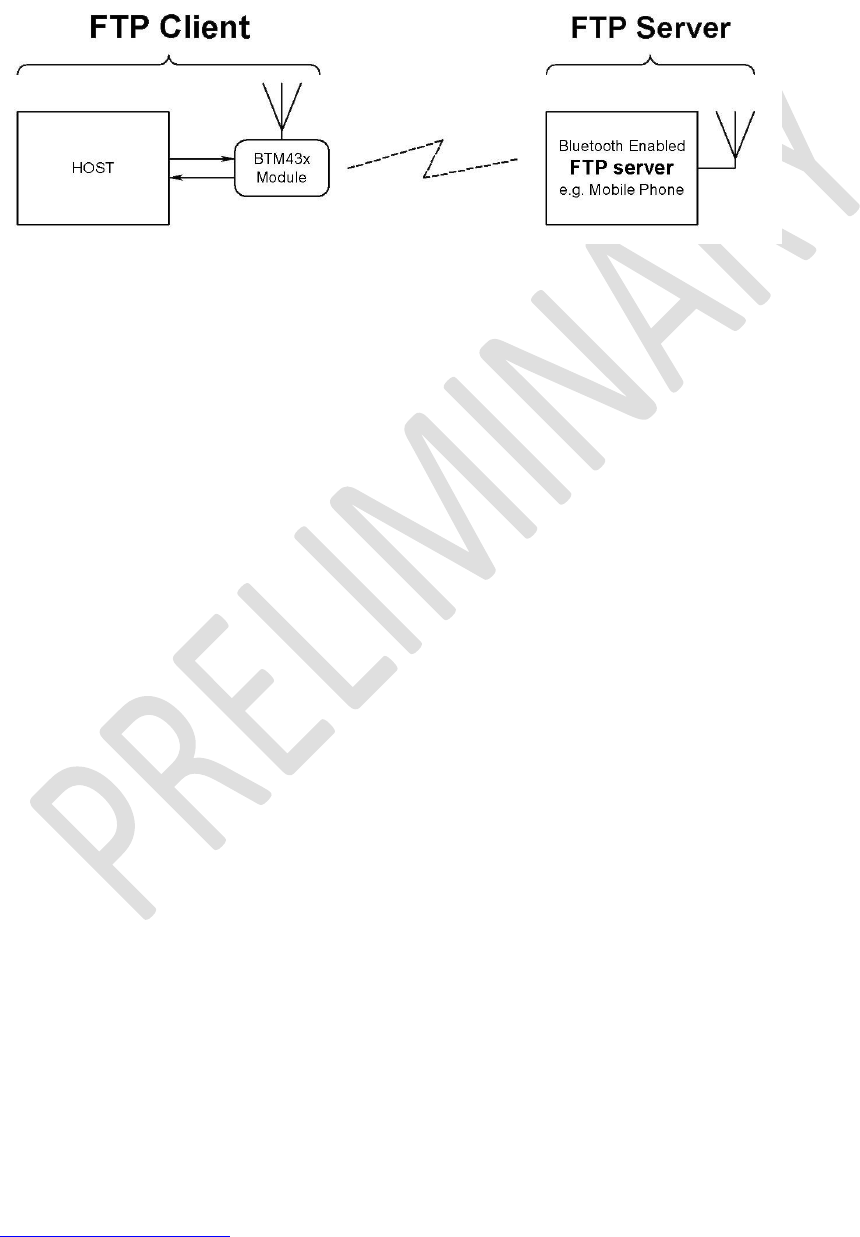
Class 1 Bluetooth v2.0 Module
User’s Guide
Americas: +1-800-492-2320 Option 2
Europe: +44-1628-858-940
Hong Kong: +852-2923-0610
www.lairdtech.com/bluetooth
57
CONN-GUIDE-BT730_v0.9
8. FTP CLIENT PROFILE COMMANDS
The FTP profile provides a capability allowing a host to act as an ‘ftp client’ to a peer device providing an
‘ftp server’ profile as shown in the diagram below.
Figure 2: FTP client and server
An FTP client capability implies the ability to send and receive files and also to manipulate file objects in
the remote device. The Bluetooth FTP server profile specification describes the profile as one built on
Obex Exchange (OBEX) which is in turn built on SPP.
The FTP implementation allows a host attached to the module to send and receive files and in addition to
manipulate files and folders.
The format used for describing this protocol is a series of message sequence charts with accompanying
notes as appropriate, which unambiguously convey how a host and the module shall interact to perform
the task.
8.1 Generic Notes and Guidance
In the message sequence charts the following abbreviations apply:
<filename> shall mean a string delimited by the “ character. For example, “hello.txt”.
<foldername> shall mean a string delimited by the “ character.
nnn shall be a decimal number with at least one digit.
The backspace character is not supported.
All FTP commands are case sensitive.
FTP commands shall not exceed 32 characters in total.
While an FTP session is open, the host shall not deassert the modules UART_CTS line
and conversely the host MUST always be ready to accept data.
When Unicode data is transmitted, it shall be assumed that the most significant byte is
transmitted first.
If an FTP command is expecting a Unicode string as a parameter and the host has an
ASCII string, the string shall be expanded with a 0 byte in the most significant position.
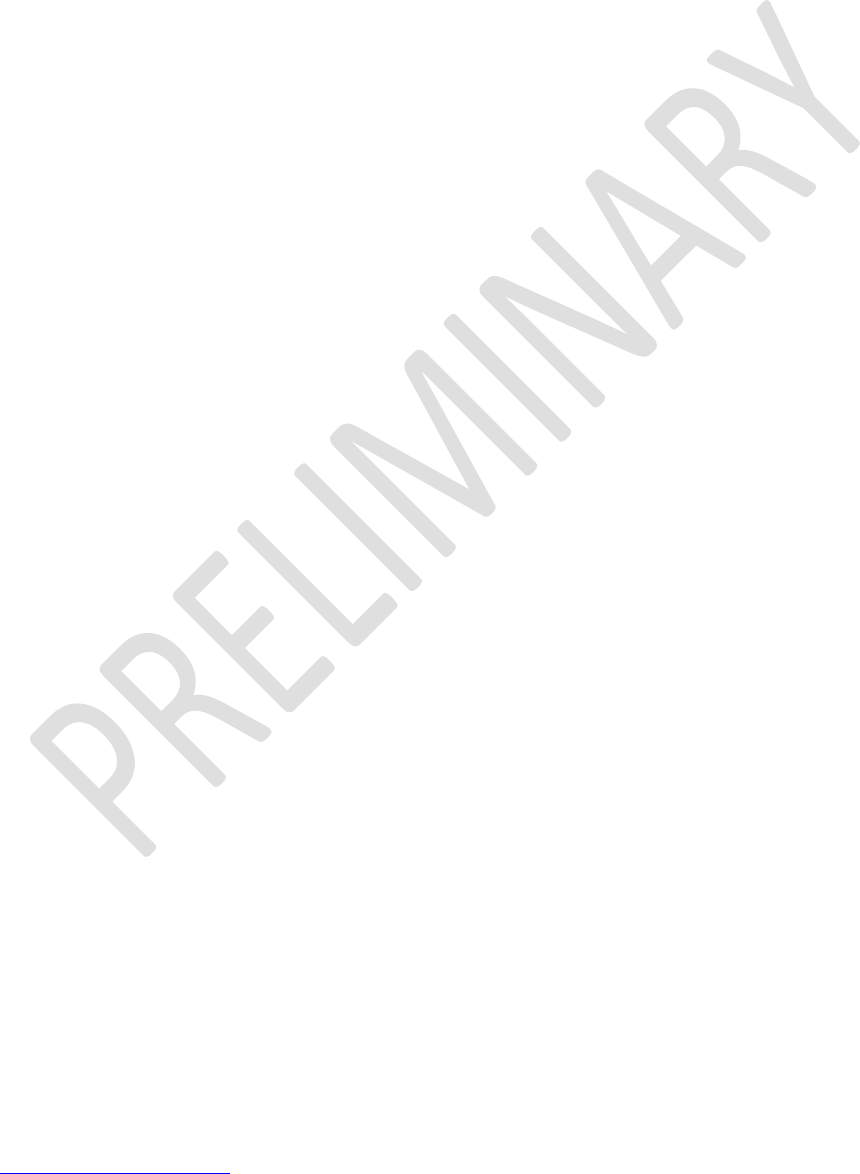
Class 1 Bluetooth v2.0 Module
User’s Guide
Americas: +1-800-492-2320 Option 2
Europe: +44-1628-858-940
Hong Kong: +852-2923-0610
www.lairdtech.com/bluetooth
58
CONN-GUIDE-BT730_v0.9
8.2 FTP related AT Commands
8.2.1 AT+FTP<bd_addr>
This command is used to establish a connection to an FTP server profile in a peer device
with Bluetooth address <bd_addr>.
When a connection is successfully established, the host assumes that the current
folder is the root folder. This root folder is always relative to the host. It is not necessarily the absolute root
folder of the host machine.
8.2.2 AT+OFT<bd_addr>
This command is used to establish a connection to an FTP server profile in a peer device with Bluetooth
address <bd_addr> and functions similarly to AT+FTP, but instead of the response being “\r\nNNN
FTP\r\n” it is “\r\nNNN OBX\r\n”, where NNN is a decimal number.
This capability of choosing the response type is to allow a host to cater generically a connection which is
either FTP or ObexPush.
8.2.3 ATSn=m
The following values of n are relevant to FTP operation: 582. A description of these values is given on
page 18 TBC.
8.3 FTP related Subcommands
This section describes FTP-related subcommands that the host can use to control the FTP session.
8.3.1 PUT <filename><length> (Send file)
This FTP subcommand is used to send a file to the FTP server.
The length of <filename> shall not exceed 24 characters.
The optional <length> value is inserted into the OBEX length header field. This is optional for FTP.
There is some ambiguity as to how the first OBEX PUT packet is formed with respect to the ‘Body’ header.
The OBEX specification does not prohibit the first ‘Body’ header to be empty; neither does it say that it
must not be empty. If the first body is not empty when sending a file to a Nokia 6820 phone then it seems
to confuse it. Because of this, Laird sends out an empty ‘Body’ header by default which is also what the
Windows PC based Widcomm Bluetooth stack sends.
To cater for future devices which require the first ‘Body’ header to be non-empty, a new
S Register 582 has been added to allow a host to have control over how the first body header is
constructed.
The new S register 582 takes values in the range 0 to 1. The default value is 0 which
implies that the first ‘Body’ header in the PUT OBEX packet is empty. A value of 1 forces that ‘Body’
header to have one byte of data – and in this case, when the module prompts the host for a length value
it shall respond accordingly.
Laird hopes that the default value of zero suffices for all occasions, but provides the control to modify the
packet as required.
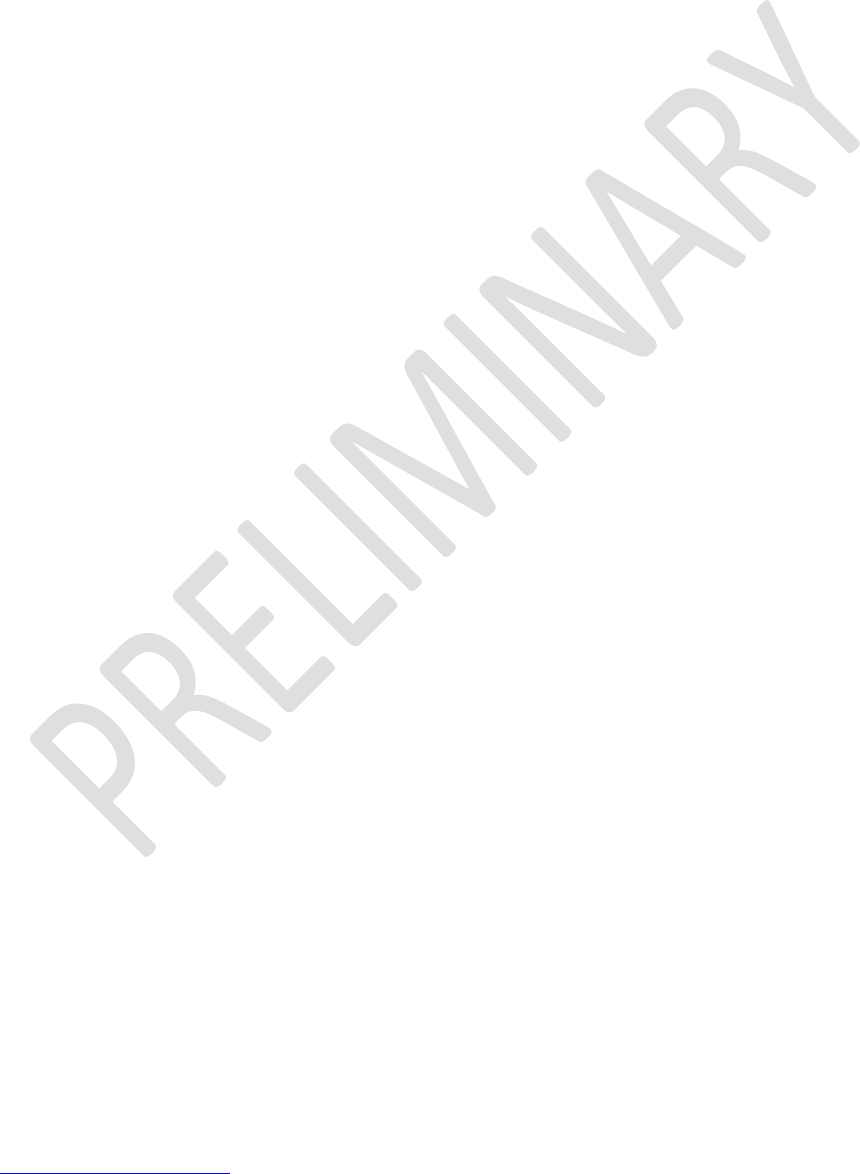
Class 1 Bluetooth v2.0 Module
User’s Guide
Americas: +1-800-492-2320 Option 2
Europe: +44-1628-858-940
Hong Kong: +852-2923-0610
www.lairdtech.com/bluetooth
59
CONN-GUIDE-BT730_v0.9
8.3.2 PUT –nnn<length>(Send file)
This FTP subcommand is used to send a file to the FTP server where the filename is in UNICODE text
and the filename is –nnn bytes long.
The optional <length> value is inserted into the OBEX length header field. This is optional for FTP.
See comment above TBC with regards to S Reg 582.
8.3.3 GET <filename>(Retrieve a file)
This FTP subcommand is used to retrieve a file from the FTP server.
The length of <filename> shall not exceed 24 characters.
8.3.4 GET -nnn(Retrieve a file)
This FTP subcommand is used to retrieve a file from the FTP server where the filename is in UNICODE
and the filename is –nnn bytes long.
8.3.5 DIR(Get folder listing)
This FTP subcommand is used to retrieve the folder listing.
The Bluetooth FTP specification requires a server to transmit a folder listing as a properly formed XML
document. In a properly formed document, the character ‘&’ is supposed to be escaped into a five
character string &. Testing shows that the Widcomm Bluetooth stack and the Microsoft Windows CE
Bluetooth stack do not comply with that requirement; they send the ‘&’ unescaped.
This means that if a folder contains filenames with ‘&’ characters, this results in a failed
parsing of the XML document and this command fails with the response “090 FTP”.
In this circumstance, the only way for the host to extract the folder listing from the server
is to request the folder listing in raw XML form. This is expedited using the DIR -RAW(Get folder listing,
XML document) command.
8.3.6 DIR -RAW(Get folder listing, XML document)
This FTP subcommand is used to retrieve the folder listing. In this variant, the OBEX response packet,
which is in ASCII XML format, is sent to the host verbatim.
WARNING: The Widcomm stack seems to append two null characters at the end of the XML document.
This means extra care if the host stores data as null terminated strings, because the final
“200 FTP” prompt appears corrupted when it is not.
8.3.7 MD <foldername>(Create a folder)
This FTP subcommand is used to create a subfolder. The length of <foldername> shall not exceed 24
characters.
8.3.8 MD -nnn(Create a folder)
This FTP subcommand is used to create a subfolder which is specified in Unicode.
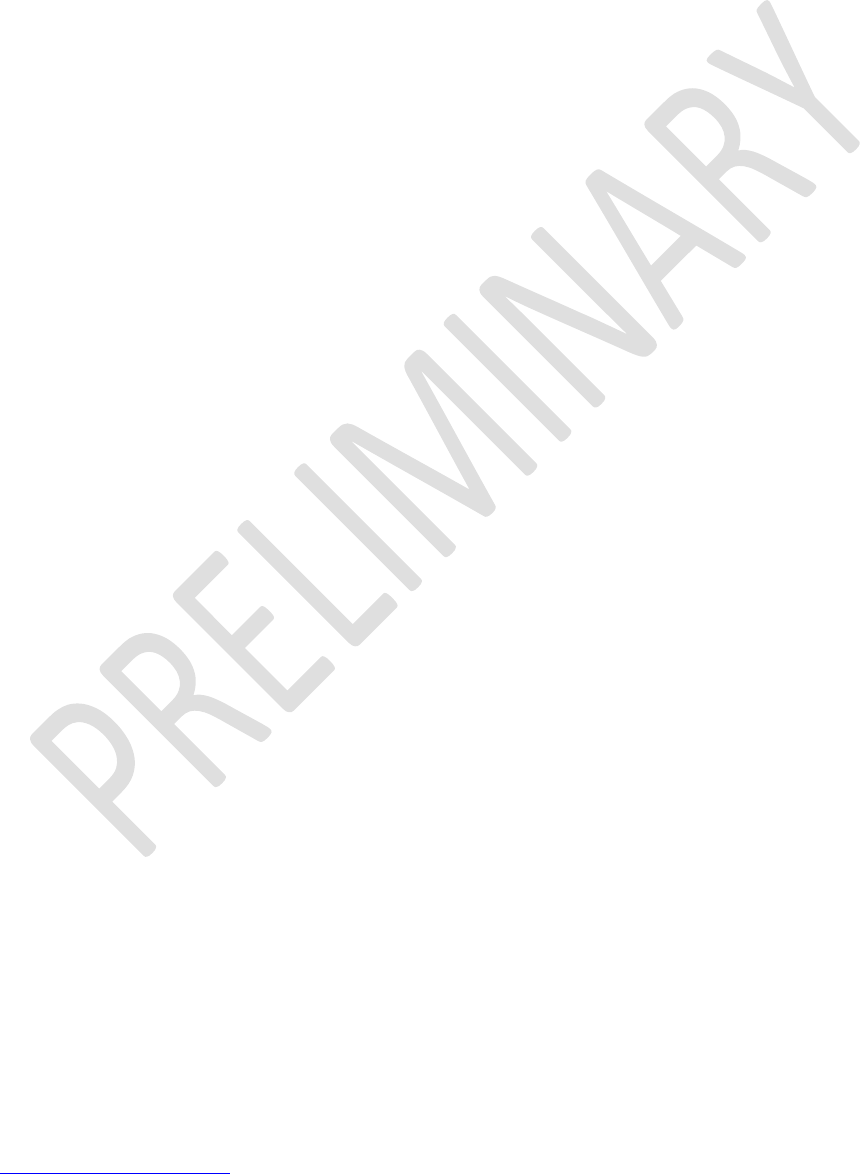
Class 1 Bluetooth v2.0 Module
User’s Guide
Americas: +1-800-492-2320 Option 2
Europe: +44-1628-858-940
Hong Kong: +852-2923-0610
www.lairdtech.com/bluetooth
60
CONN-GUIDE-BT730_v0.9
8.3.9 CD <foldername>(Change folder)
This FTP subcommand is used to navigate to the subfolder specified. The length of <foldername> shall
not exceed 24 characters.
8.3.10 CD -nnn(Change folder)
This FTP subcommand is used to navigate to the subfolder specified in Unicode.
8.3.11 CD \(Change folder to root)
This FTP subcommand is used to navigate to the root folder.
8.3.12 CD ..(Change folder to parent)
This FTP subcommand is used to navigate to the parent folder.
8.3.13 RD <foldername>(Delete a folder)
This FTP subcommand is used to delete the folder specified. Some FTP servers do not allow non-empty
folders to be deleted. In that case, an appropriate error response shall be returned to the host. The length
of <foldername> shall not exceed 24 characters.
8.3.14 RD -nnn(Delete a folder)
This FTP subcommand is used to delete the folder specified where the foldername is specified in Unicode.
8.3.15 DEL <filename>(Delete a file)
This FTP subcommand is used to delete the file specified.
8.3.16 DEL -nnn(Delete a file)
This FTP subcommand is used to delete the file specified where the filename is specified in Unicode.
8.3.17 ABORT(Abort current ftp command)
This FTP subcommand is used to abort a file transfer where appropriate. To abort a PUT session, send 0
when the module prompts for a length value.
8.3.18 QUIT (Terminate the FTP session)
This FTP subcommand is used to terminate the FTP session and also results in the Bluetooth connection
being terminated.
8.3.19 MAX(Max outgoing obex packet size)
This FTP subcommand is used to get the maximum OBEX packet size tolerated by server and can be
used by the host to optimize the data throughput.

Class 1 Bluetooth v2.0 Module
User’s Guide
Americas: +1-800-492-2320 Option 2
Europe: +44-1628-858-940
Hong Kong: +852-2923-0610
www.lairdtech.com/bluetooth
61
CONN-GUIDE-BT730_v0.9
8.4 FTP-Related Subresponses
All FTP-related sub responses sent from the module to the host SHALL be 11 characters long in the
format:
<cr><lf>nnn AAA<cr><lf>
The characters nnn shall be decimal digits ‘0’ to ‘9’, then there is a space character and finally a three
character word followed by <cr><lf>.
The <cr><lf> envelope plus the fixed length will hopefully make the parsing task in the host much simpler.
Values for ‘nnn’ are as specified for HTTP status codes, and reproduced from the OBEX specification
as follows:
OBEX Response
Code
HTTP Status Code
Definition
0x00to 0x0F
None
Reserved
0x10(0x90)
100
Continue
0x20(0xA0)
200
OK, Success
0x21(0xA1)
201
Created
0x22(0xA2)
202
Accepted
0x23(0xA3)
203
Non-Authoritative Information
0x24(0xA4)
204
No Content
0x25(0xA5)
205
Reset Content
0x26(0xA6)
206
Partial Content
0x30(0xB0)
300
Multiple Choices
0x31(0xB1)
301
Moved Permanently
0x32(0xB2)
302
Moved temporarily
0x33(0xB3)
303
See Other
0x34(0xB4)
304
Not modified
0x35(0xB5)
305
Use Proxy
0x40(0xC0)
400
Bad Request - server couldn’t understand request
0x41(0xC1)
401
Unauthorized
0x42(0xC2)
402
Payment required
0x43(0xC3)
403
Forbidden - operation is understood but refused
0x44(0xC4)
404
Not Found
0x45(0xC5)
405
Method not allowed
0x46(0xC6)
406
Not Acceptable
0x47(0xC7)
407
Proxy Authentication required
0x48(0xC8)
408
Request Time Out
0x49(0xC9)
409
Conflict
0x4A(0xCA)
410
Gone
0x4B(0xCB)
411
Length Required
0x4C(0xCC)
412
Precondition failed
0x4D(0xCD)
413
Requested entity too large
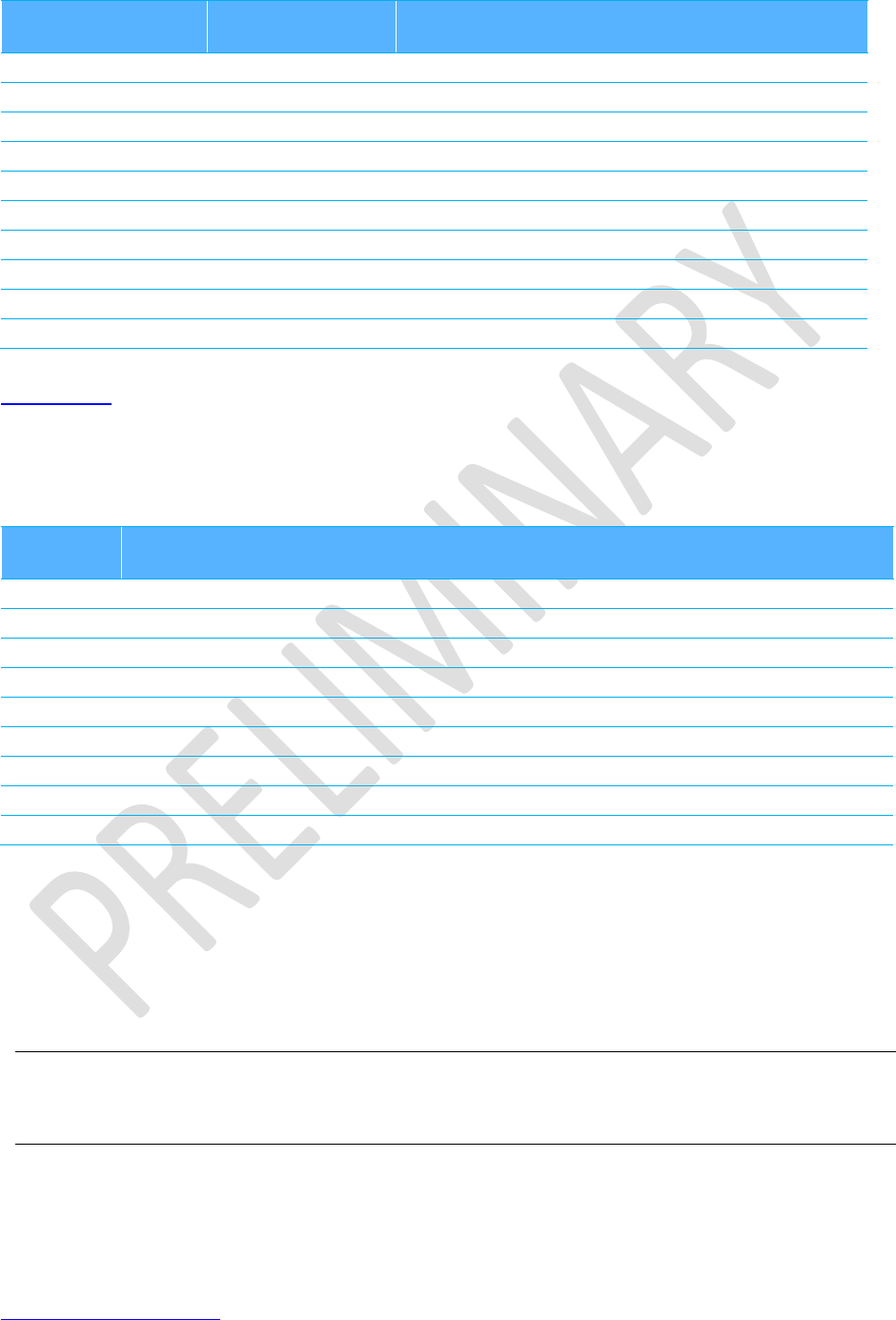
Class 1 Bluetooth v2.0 Module
User’s Guide
Americas: +1-800-492-2320 Option 2
Europe: +44-1628-858-940
Hong Kong: +852-2923-0610
www.lairdtech.com/bluetooth
62
CONN-GUIDE-BT730_v0.9
OBEX Response
Code
HTTP Status Code
Definition
0x4E(0xCE)
414
Request URL too large
0x4F(0xCF)
415
Unsupported media type
0x50(0xD0)
500
Internal Server Error
0x51(0xD1)
501
Not Implemented
0x52(0xD2)
502
Bad Gateway
0x53(0xD3)
503
Service Unavailable
0x54(0xD4)
504
Gateway Timeout
0x55(0xD5)
505
HTTP version not supported
0x60 (0xE0)
- - -
Database Full
0x61 (0xE1)
- - -
Database Locked
For more details of these values, refer to the irDA specification which can be freely downloaded from
www.irda.org.
In addition, values in the range 050 to 099 and 250 to 299 inclusive are specific to this Laird application
and are defined in Table 8-1.
Table 8-1: nnn Codes
Response
Code ‘nnn’
(Laird Technologies Specific)
Definition
050
Syntax Error / Command Unrecognized
051
Server sent unexpected information in obex packet
052
Obex connection fail, because it is unauthorized
053
Memory allocation failure (Please contact Laird Technologies with details)
055
Unicode File/Folder name length cannot be an odd value
056
Command not recognized
090
An XML parsing error occurred (while processing response to DIR command)
099
The Bluetooth connection has unexpected been dropped. (I.e., remote out of range etc.)
250
GET procedure was aborted
8.4.1 nnn FTP
This FTP response is used, when the connection was opened using AT+FTP, to convey the
outcome of a subcommand to the host where ‘nnn’ is a fixed three digit decimal number as defined in the
irDAspecification and map to HTTP status codes.
For example, a value of n=200 implies successful operation, any other value usually conveys an error as
described in the irDA specification (except the range 050 to 099 inclusive and 250 to299 inclusive).
Note: When a Bluetooth OBEX session is established, we will be specifying v1.0 in the header
packets by default as that is what the Widcomm stack seems to be using and the FTP
specifies.
8.4.2 nnn OBX
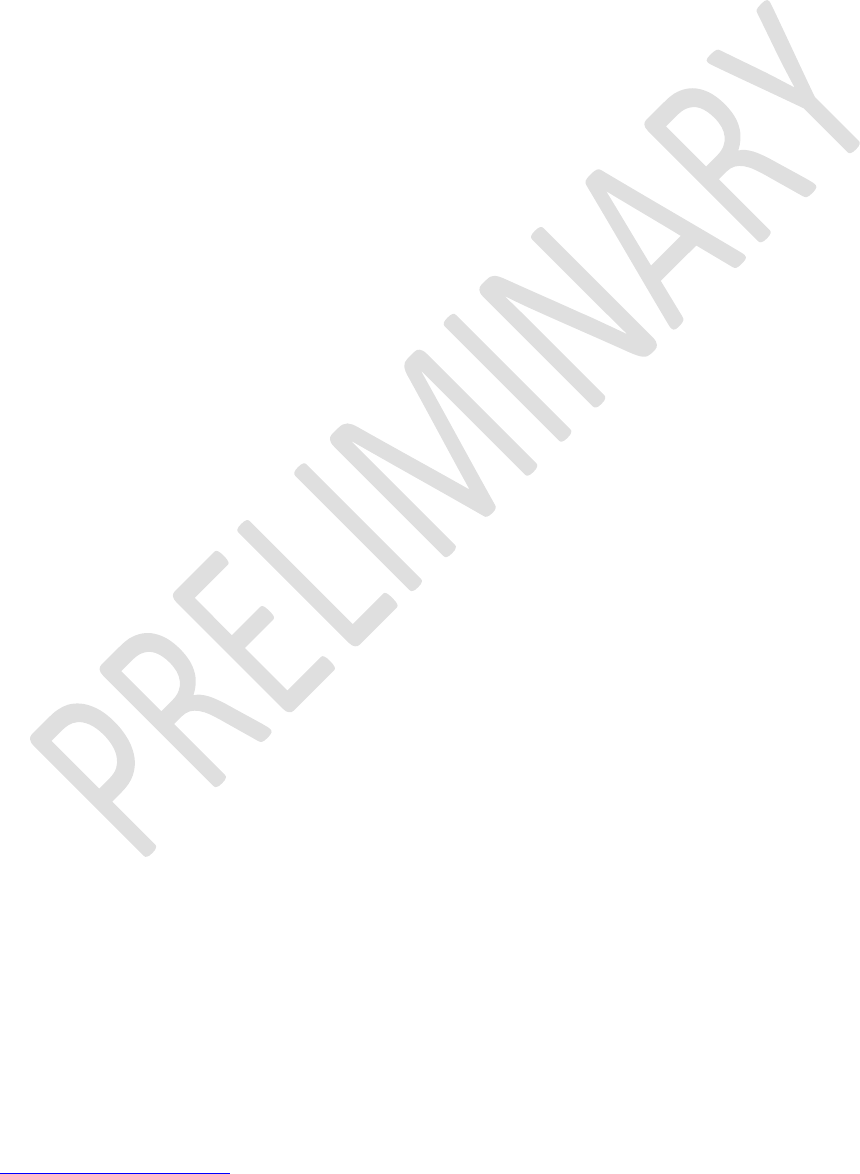
Class 1 Bluetooth v2.0 Module
User’s Guide
Americas: +1-800-492-2320 Option 2
Europe: +44-1628-858-940
Hong Kong: +852-2923-0610
www.lairdtech.com/bluetooth
63
CONN-GUIDE-BT730_v0.9
This has the same meaning as “nnn FTP” and is used when AT+OFT command was used to open an
FTP connection.
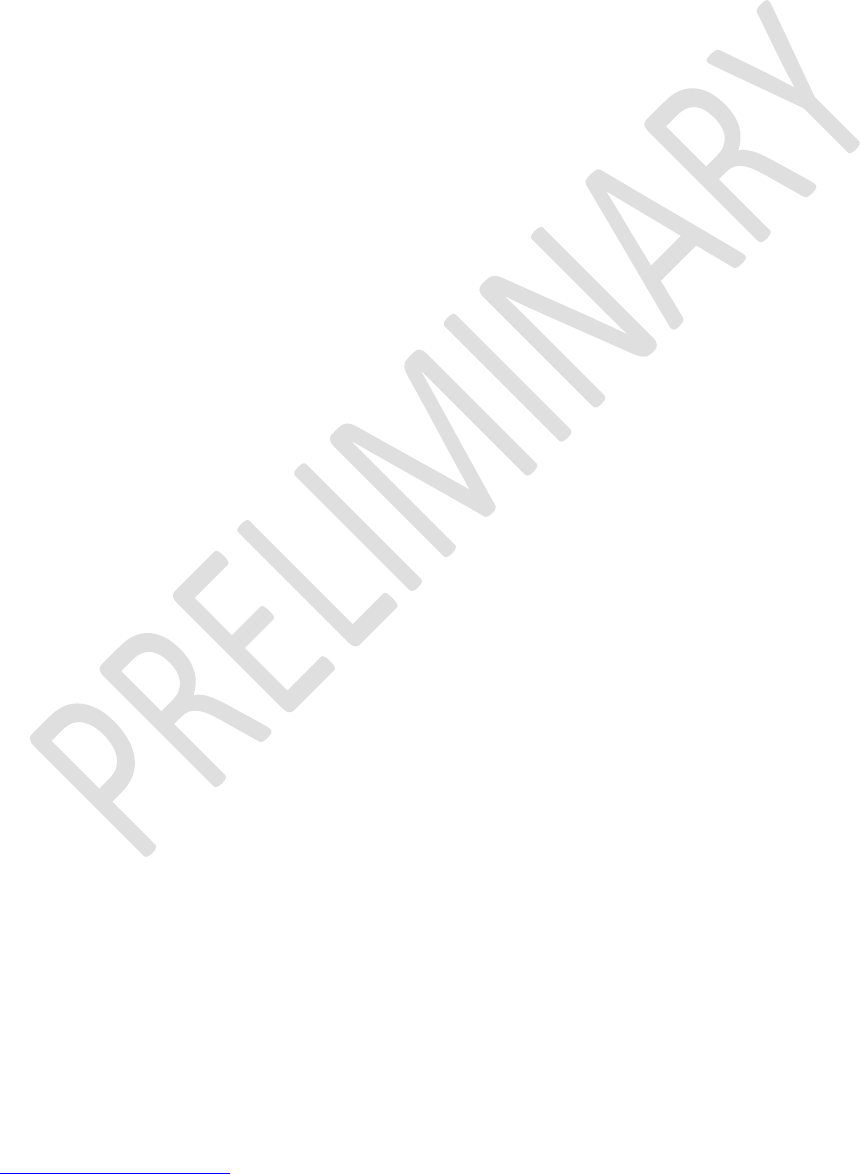
Class 1 Bluetooth v2.0 Module
User’s Guide
Americas: +1-800-492-2320 Option 2
Europe: +44-1628-858-940
Hong Kong: +852-2923-0610
www.lairdtech.com/bluetooth
64
CONN-GUIDE-BT730_v0.9
8.4.3 nnn GET
This FTP response is used during a GET file operation. See appropriate message sequence charts for
more details. See Table 8-1 for ‘nnn’ values.
8.5 FTP line multiplexing commands
When transferring a file, the single serial interface between the host and the module is used to send and
receive data and commands. In other words, a scheme is required to unambiguously determine when a
byte on the line corresponds to a command or data belonging to a file.
The module uses negotiated multiplexing to achieve this and commands are used to toggle the line
between command and data mode.
This scheme is symmetrical and the commands for toggling the state of the line are relevant for both
direction. The only difference being that the terminator is <cr> in the host to module direction and<crlf> in
the reverse direction.
The commands are described in the following sub sections.
8.5.1 #
This command is used to ask the other end how many bytes of a filename or foldername it will send next.
8.5.2 >
This command is used to inform the other end that it is safe to send the number of bytes belonging to a
filename or foldername as indicated in the most recent # command.
8.5.3 !
This command is used to ask the module/host how many bytes of data it will send next. If the module/host
sends a length value that is too large to handle, it can be rejected by sending the ! command again. This
is because accepting a value implies this end should send a ? prompt to trigger the data phase (See
Section 8.5.4).
8.5.4 ?
This command is used to inform the other end that it is safe to send the number of bytes belonging to
‘data’ phase indicated in the most recent ! command.
8.6 Message Sequence Charts
In the following sections, the color scheme uses RED text as commands from a host to the module and
BLUE text as responses and prompts from the module to the host. Command/responses shown in
BLACK are associated with non-FTP related states.
Apart from FTP connection and disconnection scenarios, to avoid repetition, all message sequence
charts assume that the module is in a FTP-connected state. It also assumes that where “nnn FTP” occurs,
it can be read as “nnn OBX” if the command AT+OFT was used to initiate the command.
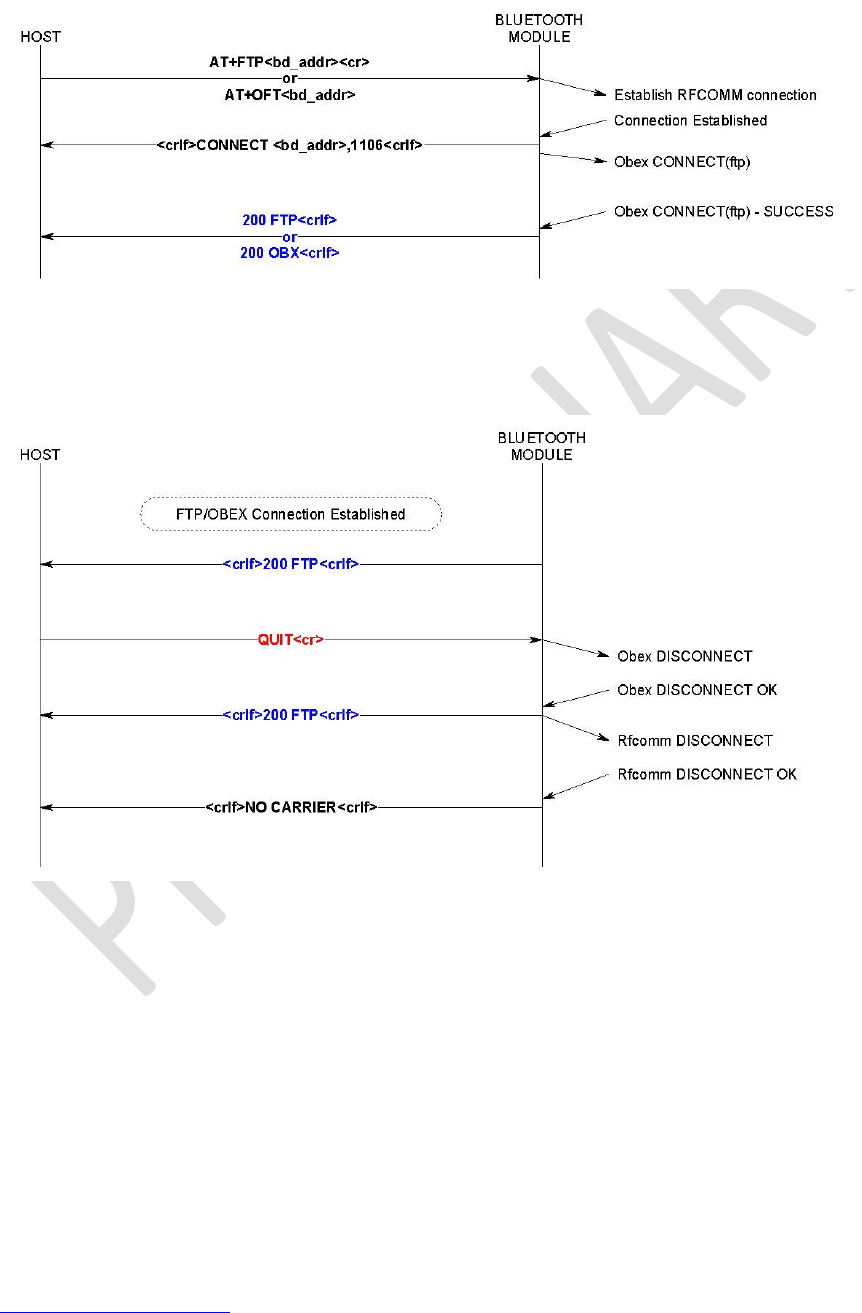
Class 1 Bluetooth v2.0 Module
User’s Guide
Americas: +1-800-492-2320 Option 2
Europe: +44-1628-858-940
Hong Kong: +852-2923-0610
www.lairdtech.com/bluetooth
65
CONN-GUIDE-BT730_v0.9
8.6.1 Usage: Make FTP connection (No Authentication)
Figure 3: Make FTP connection (no authentication)
8.6.2 Usage: FTP Disconnection
Figure 4: FTP disconnection
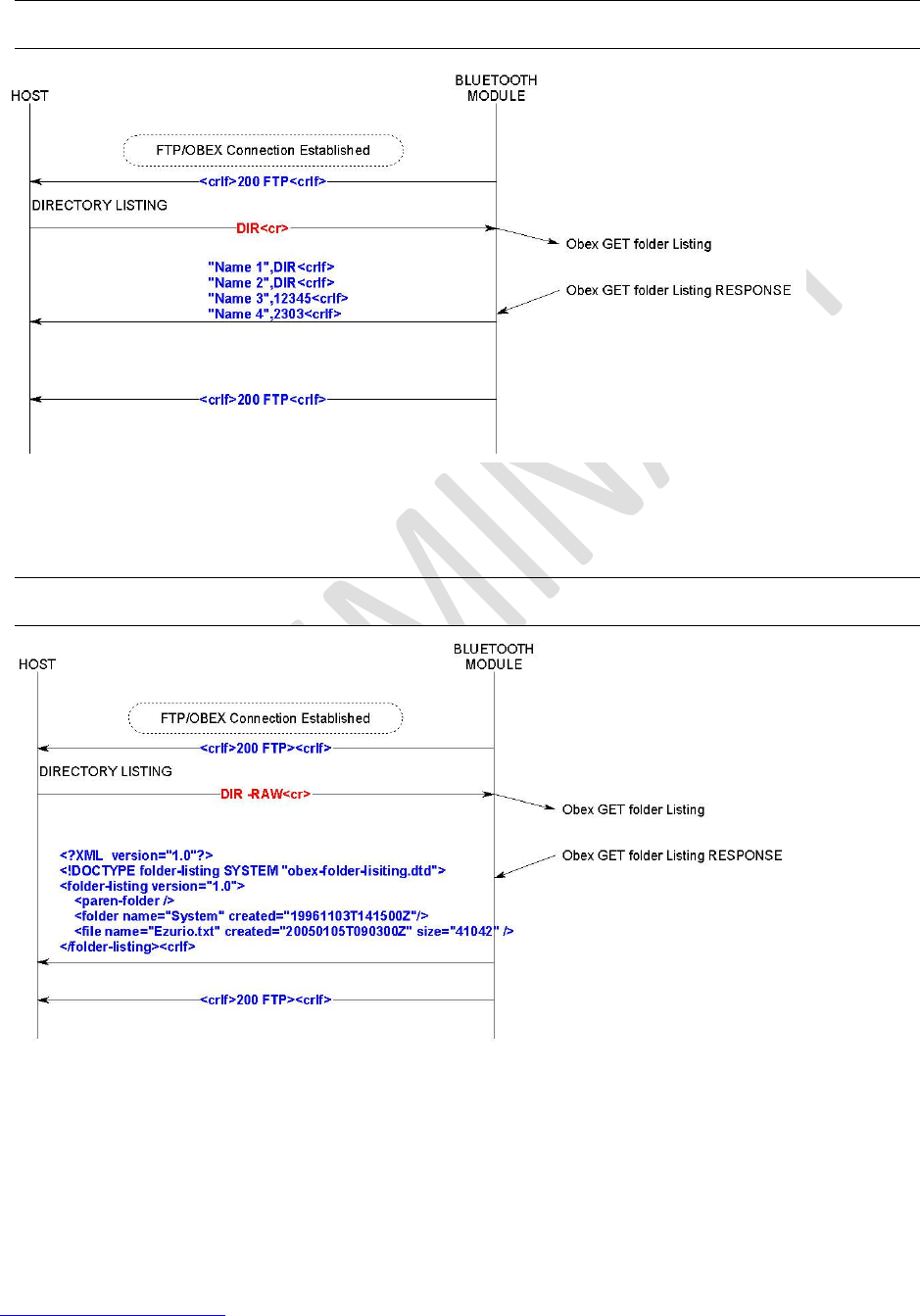
Class 1 Bluetooth v2.0 Module
User’s Guide
Americas: +1-800-492-2320 Option 2
Europe: +44-1628-858-940
Hong Kong: +852-2923-0610
www.lairdtech.com/bluetooth
66
CONN-GUIDE-BT730_v0.9
8.6.3 Usage: Folder Listing
Note: If a number follows a name then that implies a file.
Figure 5: Folder listing
8.6.4 Usage: Folder Listing (Raw Output)
Note: The raw output is ASCII text and is in XML format.
Figure 6: Folder listing (raw output)
8.6.5 Usage: Create Folder (Short Folder name)
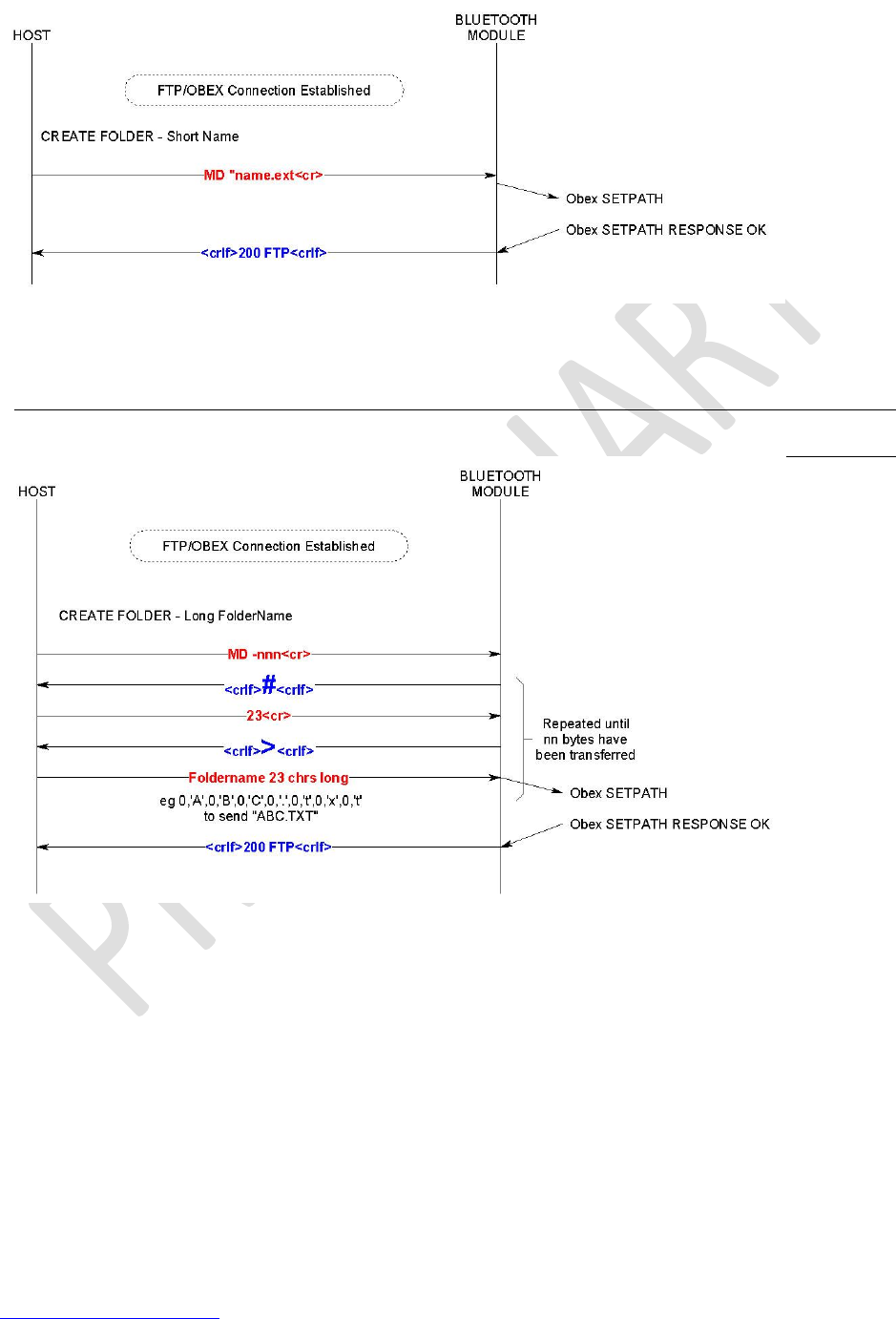
Class 1 Bluetooth v2.0 Module
User’s Guide
Americas: +1-800-492-2320 Option 2
Europe: +44-1628-858-940
Hong Kong: +852-2923-0610
www.lairdtech.com/bluetooth
67
CONN-GUIDE-BT730_v0.9
Figure 7: Create folder (short folder name)
8.6.6 Usage: Create Folder (Long Folder name - UNICODE)
Note: ‘nn’ is the size of folder name in bytes. The folder name is supplied in Unicode.
Figure 8: Create folder (long name - UNICODE)
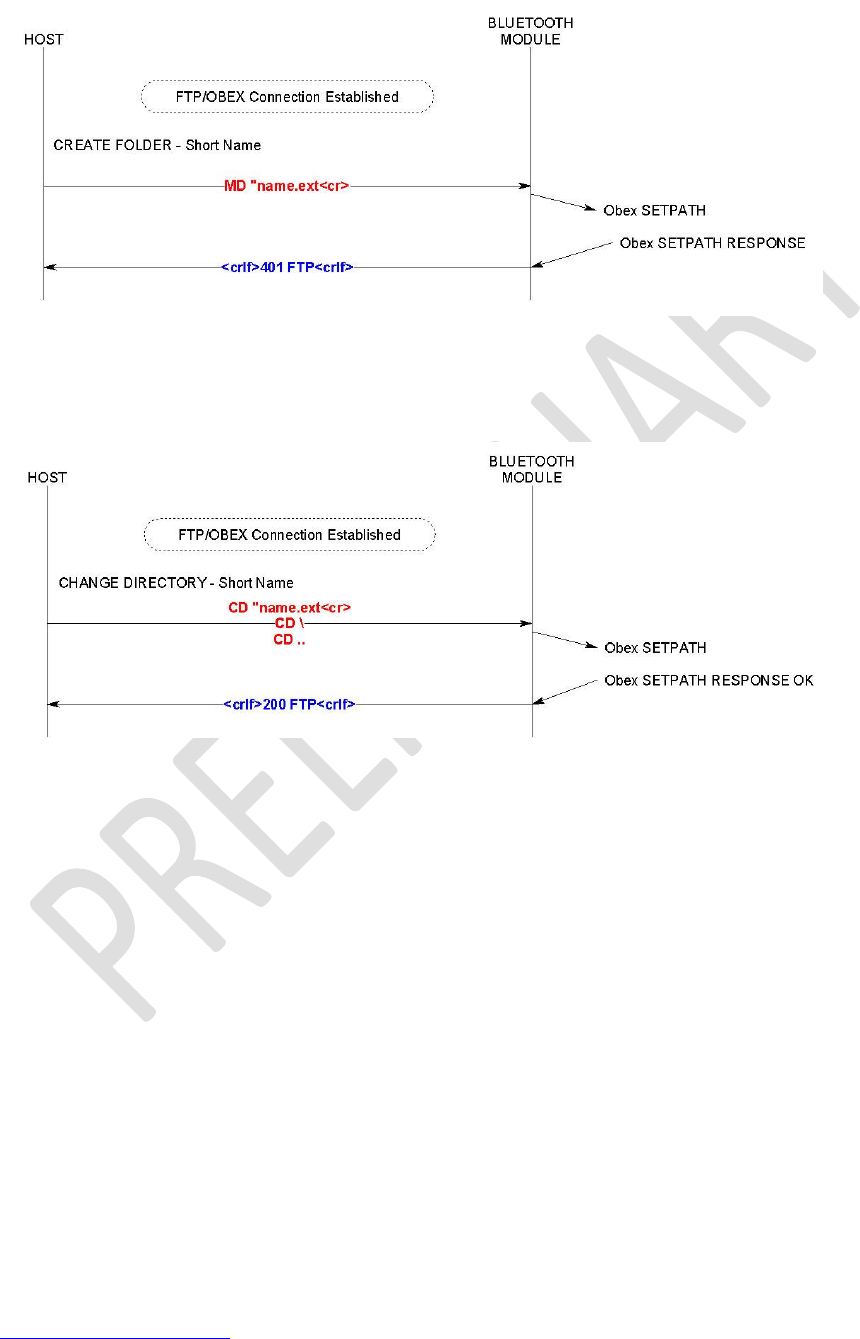
Class 1 Bluetooth v2.0 Module
User’s Guide
Americas: +1-800-492-2320 Option 2
Europe: +44-1628-858-940
Hong Kong: +852-2923-0610
www.lairdtech.com/bluetooth
68
CONN-GUIDE-BT730_v0.9
8.6.7 Usage: Create Folder (Unsuccessful)
Figure 9: Create folder (unsuccessful)
8.6.8 Usage: Change Folder (Short Folder name)
Figure 10: Change folder (short folder name)
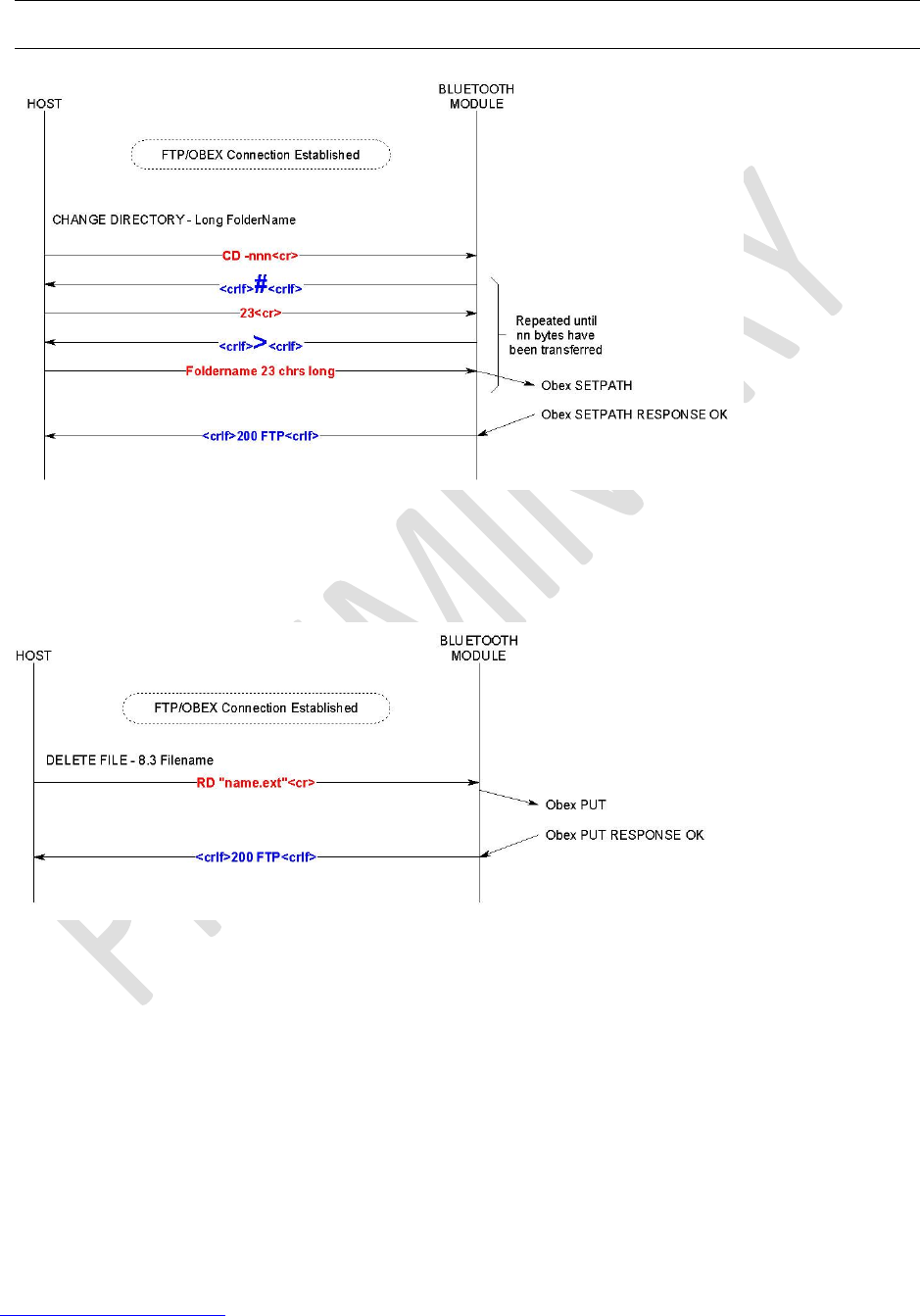
Class 1 Bluetooth v2.0 Module
User’s Guide
Americas: +1-800-492-2320 Option 2
Europe: +44-1628-858-940
Hong Kong: +852-2923-0610
www.lairdtech.com/bluetooth
69
CONN-GUIDE-BT730_v0.9
8.6.9 Usage: Change Folder (Long Folder name - UNICODE)
Note: ‘nn’ is the size of folder name in bytes. The folder name is supplied in Unicode.
Figure 11: Change folder (long folder name - UNICODE)
8.6.10 Usage: Remove Folder (Short Folder name)
Figure 12: Remove folder (short folder name)
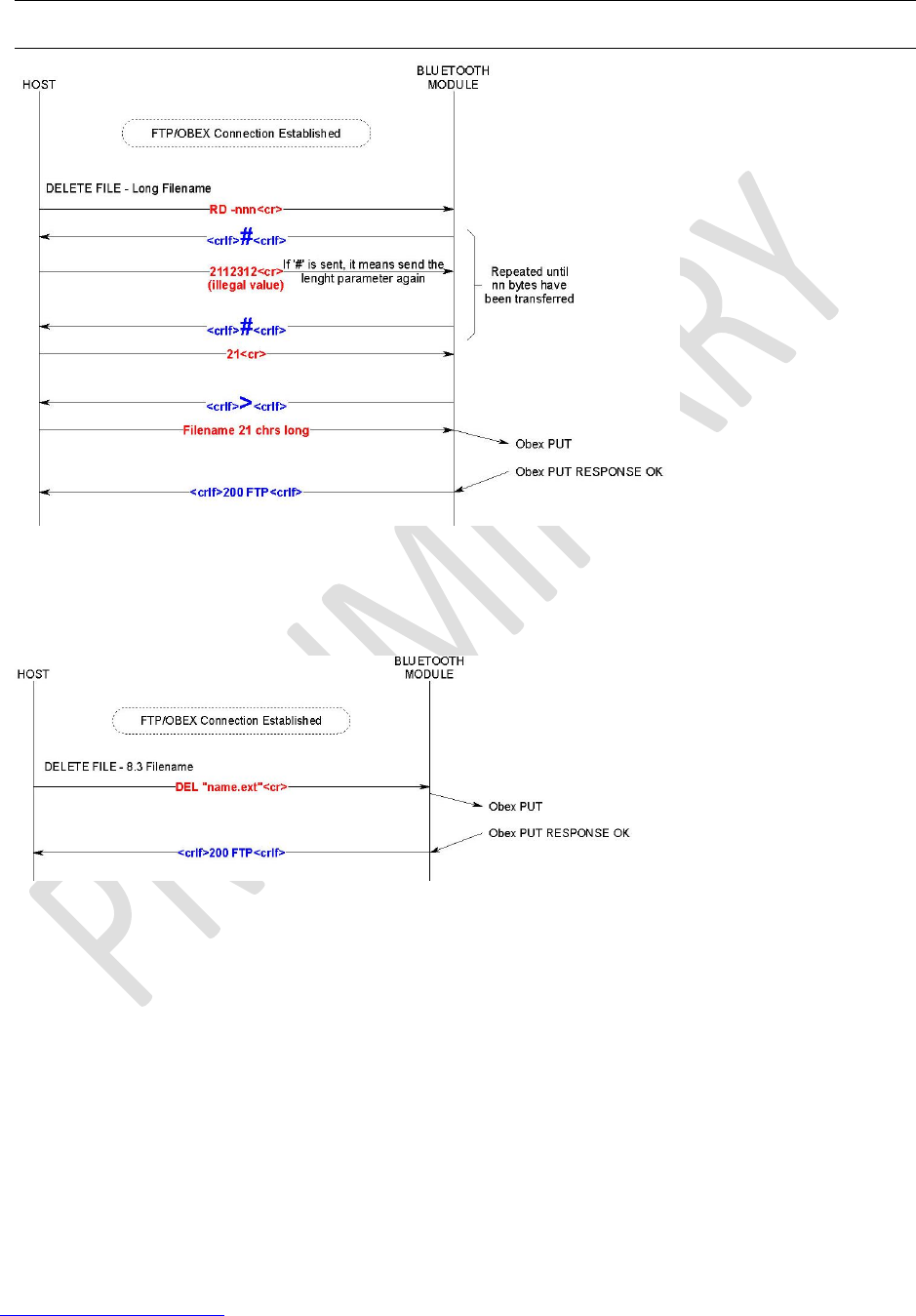
Class 1 Bluetooth v2.0 Module
User’s Guide
Americas: +1-800-492-2320 Option 2
Europe: +44-1628-858-940
Hong Kong: +852-2923-0610
www.lairdtech.com/bluetooth
70
CONN-GUIDE-BT730_v0.9
8.6.11 Usage: Remove Folder (Long Folder name – UNICODE)
Note: ‘nn’ is the size of folder name in bytes. The folder name is supplied in unicode.
Figure 13: Remove folder (long folder name - UNICODE)
8.6.12 Usage: Delete File (Short Filename)
Figure 14: Delete file (short filename)
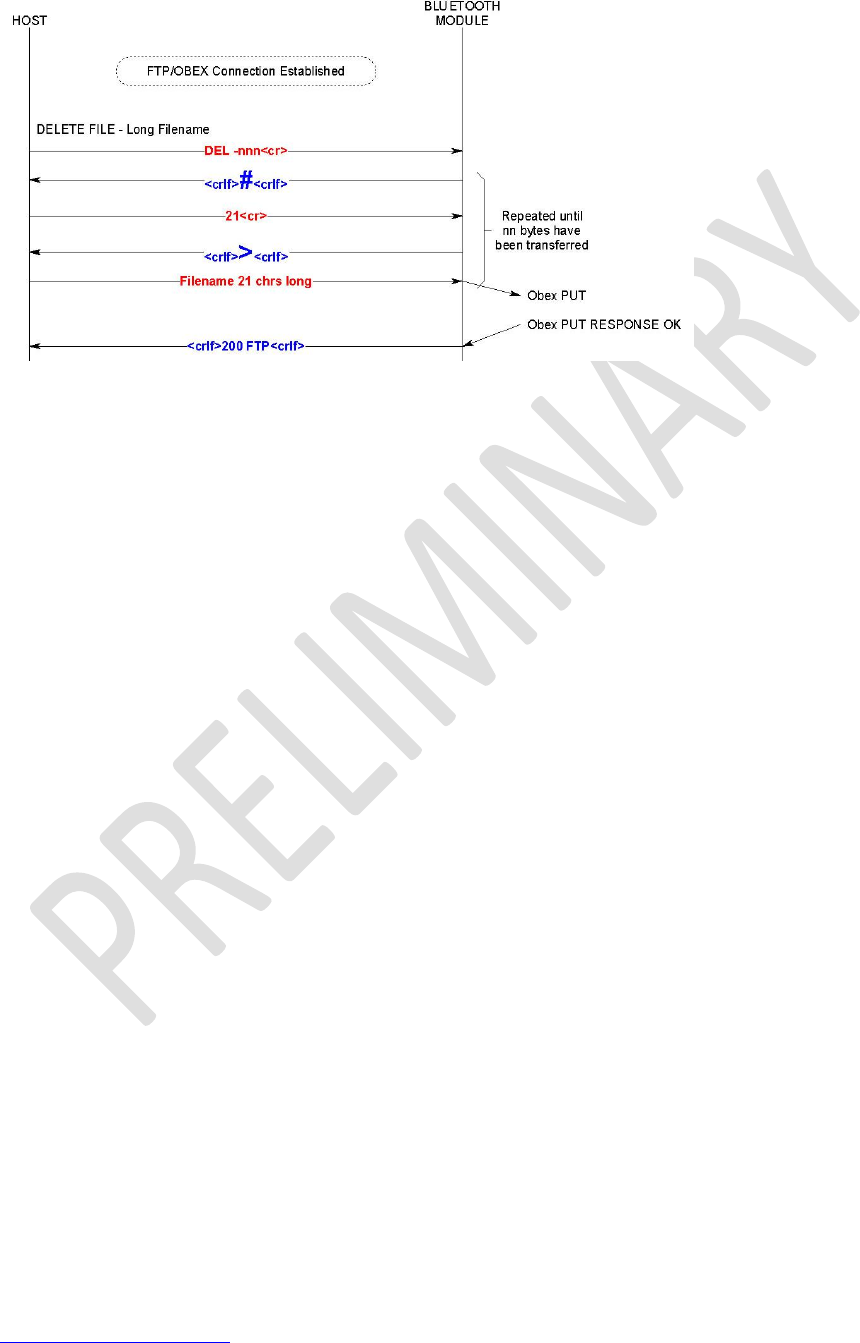
Class 1 Bluetooth v2.0 Module
User’s Guide
Americas: +1-800-492-2320 Option 2
Europe: +44-1628-858-940
Hong Kong: +852-2923-0610
www.lairdtech.com/bluetooth
71
CONN-GUIDE-BT730_v0.9
8.6.13 Usage: Delete File (Long Filename – UNICODE)
Figure 15: Delete file (long filename - UNICODE)
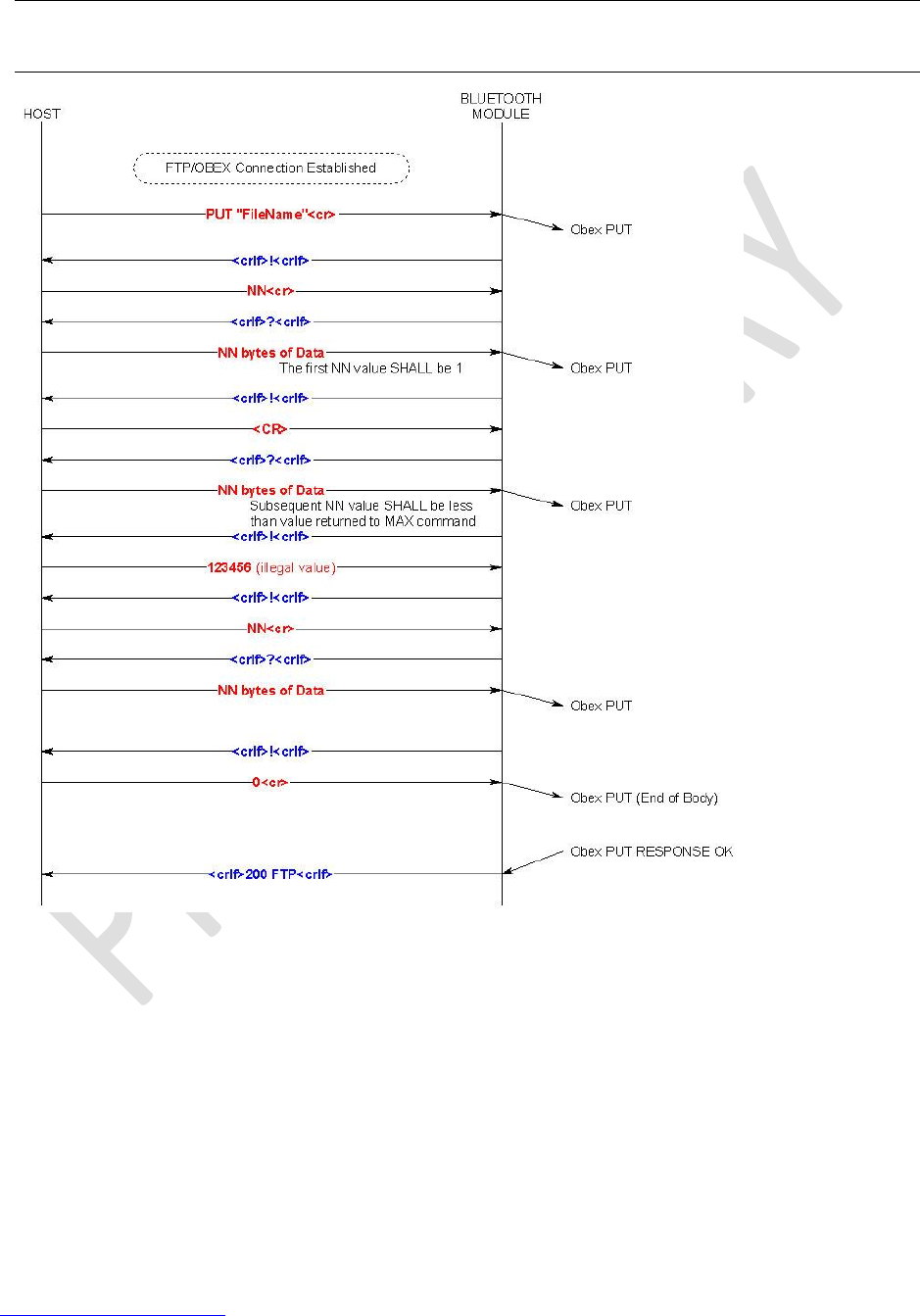
Class 1 Bluetooth v2.0 Module
User’s Guide
Americas: +1-800-492-2320 Option 2
Europe: +44-1628-858-940
Hong Kong: +852-2923-0610
www.lairdtech.com/bluetooth
72
CONN-GUIDE-BT730_v0.9
8.6.14 Usage: Put File (Short Filename)
Note: The first NN from the host shall specify a value of 1.
Subsequent NN values shall be less than the value returned to command MAX
Figure 16: Put file (short filename)
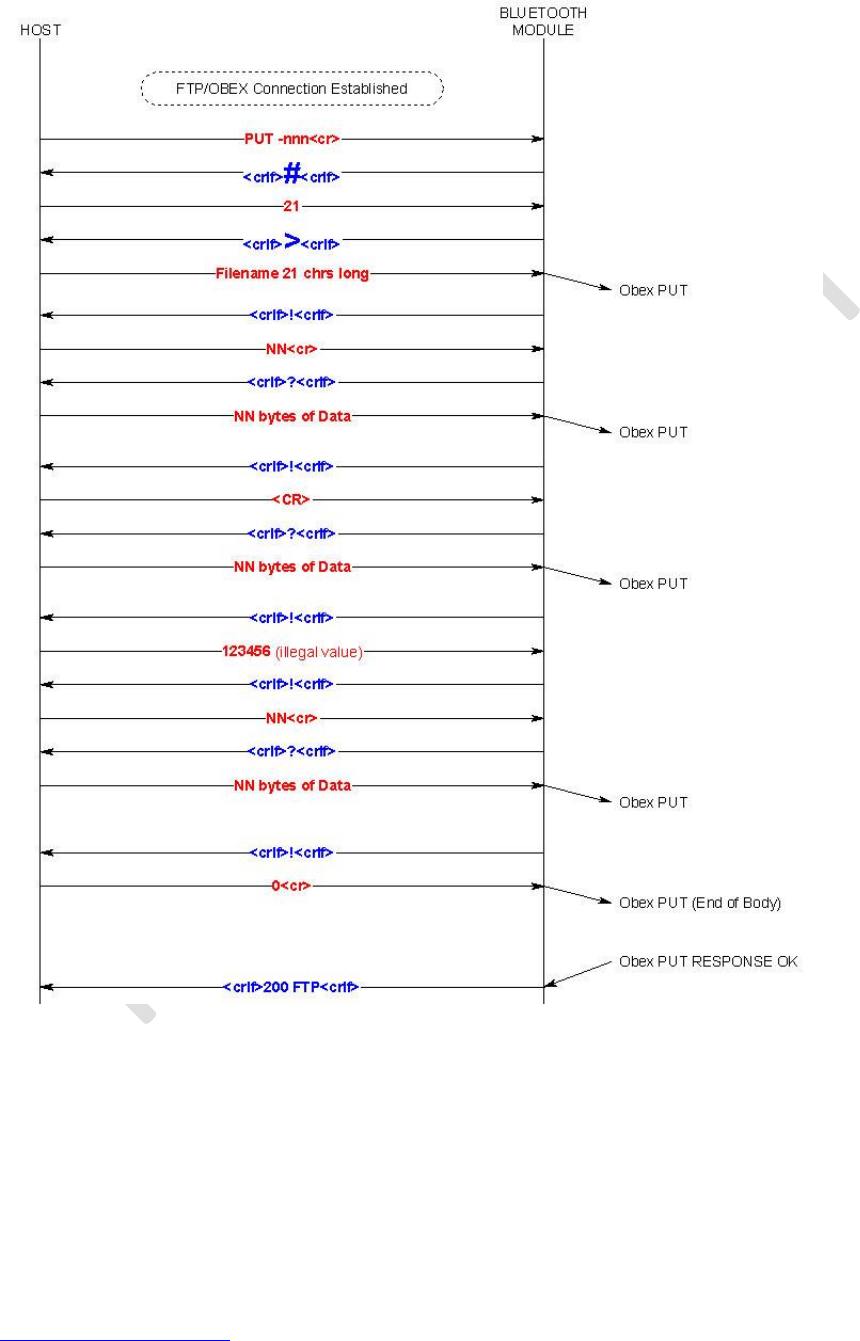
Class 1 Bluetooth v2.0 Module
User’s Guide
Americas: +1-800-492-2320 Option 2
Europe: +44-1628-858-940
Hong Kong: +852-2923-0610
www.lairdtech.com/bluetooth
73
CONN-GUIDE-BT730_v0.9
8.6.15 Usage: Put File (Long Filename - UNICODE)
Figure 17: Put file (long filename - UNICODE)
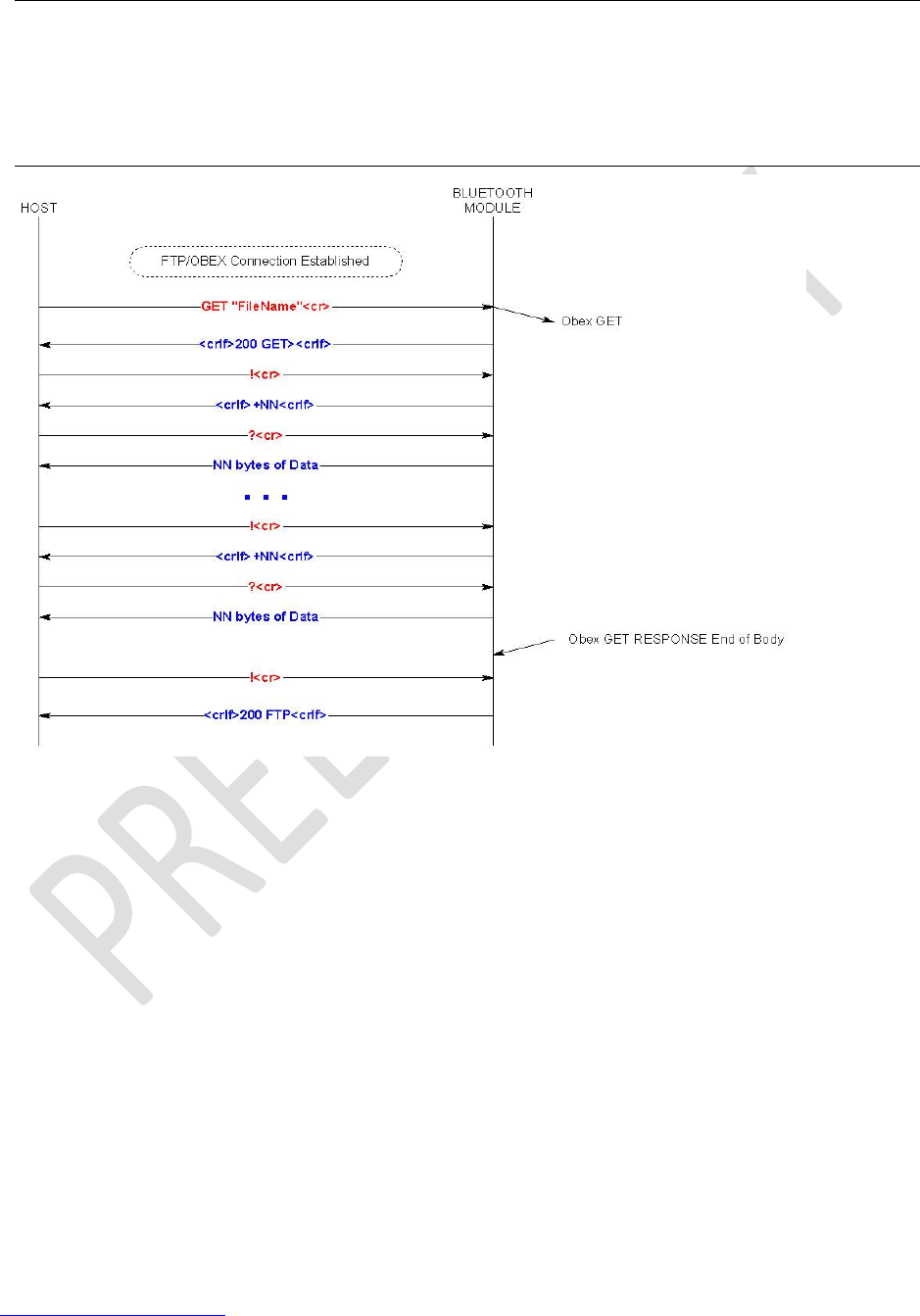
Class 1 Bluetooth v2.0 Module
User’s Guide
Americas: +1-800-492-2320 Option 2
Europe: +44-1628-858-940
Hong Kong: +852-2923-0610
www.lairdtech.com/bluetooth
74
CONN-GUIDE-BT730_v0.9
8.6.16 Usage: Get File (Short Filename)
Note: After each !command, if a +NN response is not received after 2 seconds, the host can
repeat that command.
The response to ! is “+NN” instead of just “NN” to make easier for the host to predict the
command, since on completion the standard response is “200 FTP” which also happens
to start with a number. The ‘+’ shall be early warning to the host that the procedure is not
complete.
Figure 18: Get file (short filename)
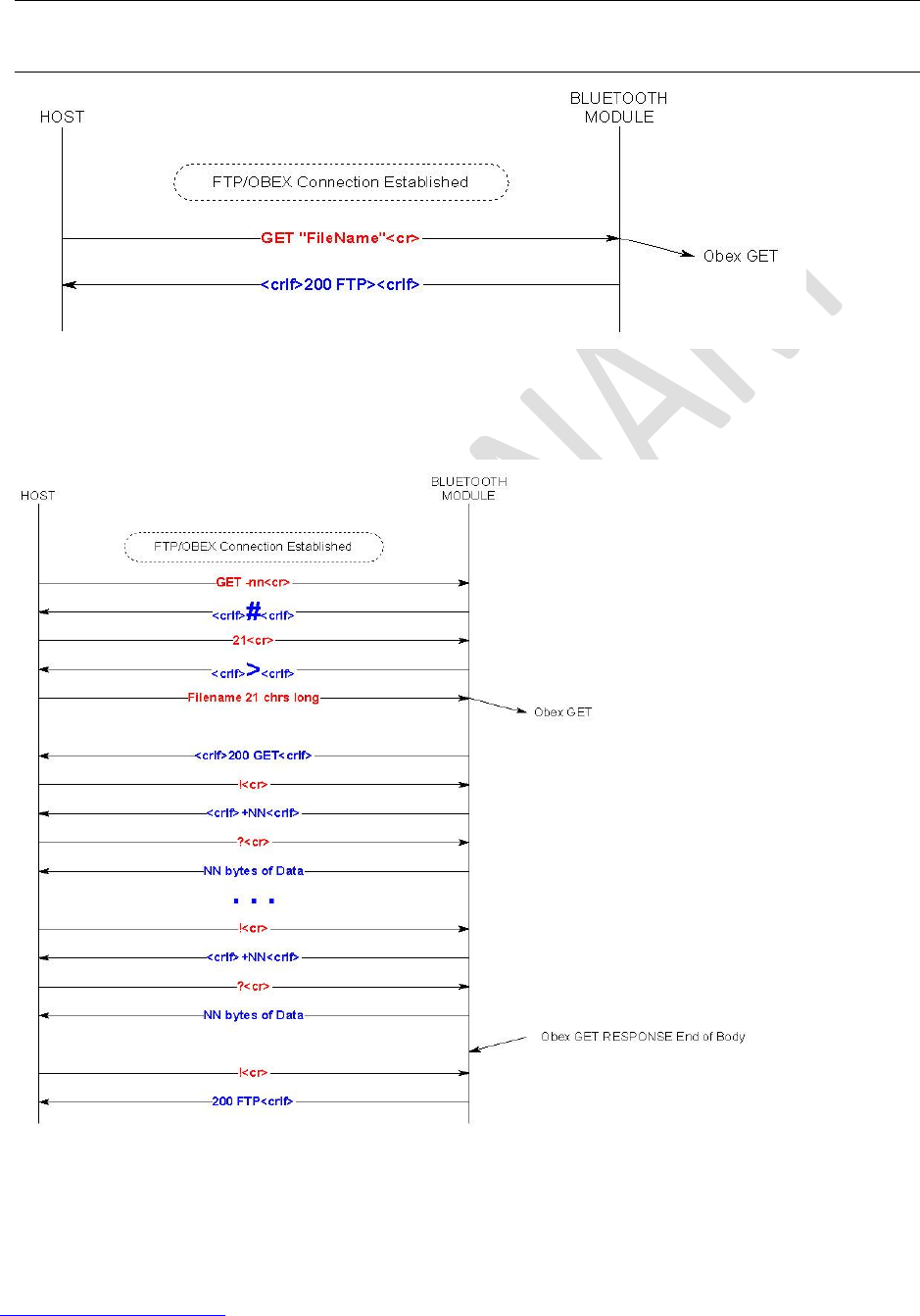
Class 1 Bluetooth v2.0 Module
User’s Guide
Americas: +1-800-492-2320 Option 2
Europe: +44-1628-858-940
Hong Kong: +852-2923-0610
www.lairdtech.com/bluetooth
75
CONN-GUIDE-BT730_v0.9
8.6.17 Usage: Get File (Empty file in server)
Note: If the file size is 0, then the host shall receive “200 FTP” instead of “200 GET”. The latter
is invitation to the host that data needs to be marshalled across.
Figure 19: Get file (empty file in server)
8.6.18 Usage: Get File (Long Filename - UNICODE)
Figure 20: Get file (long filename - UNICODE)
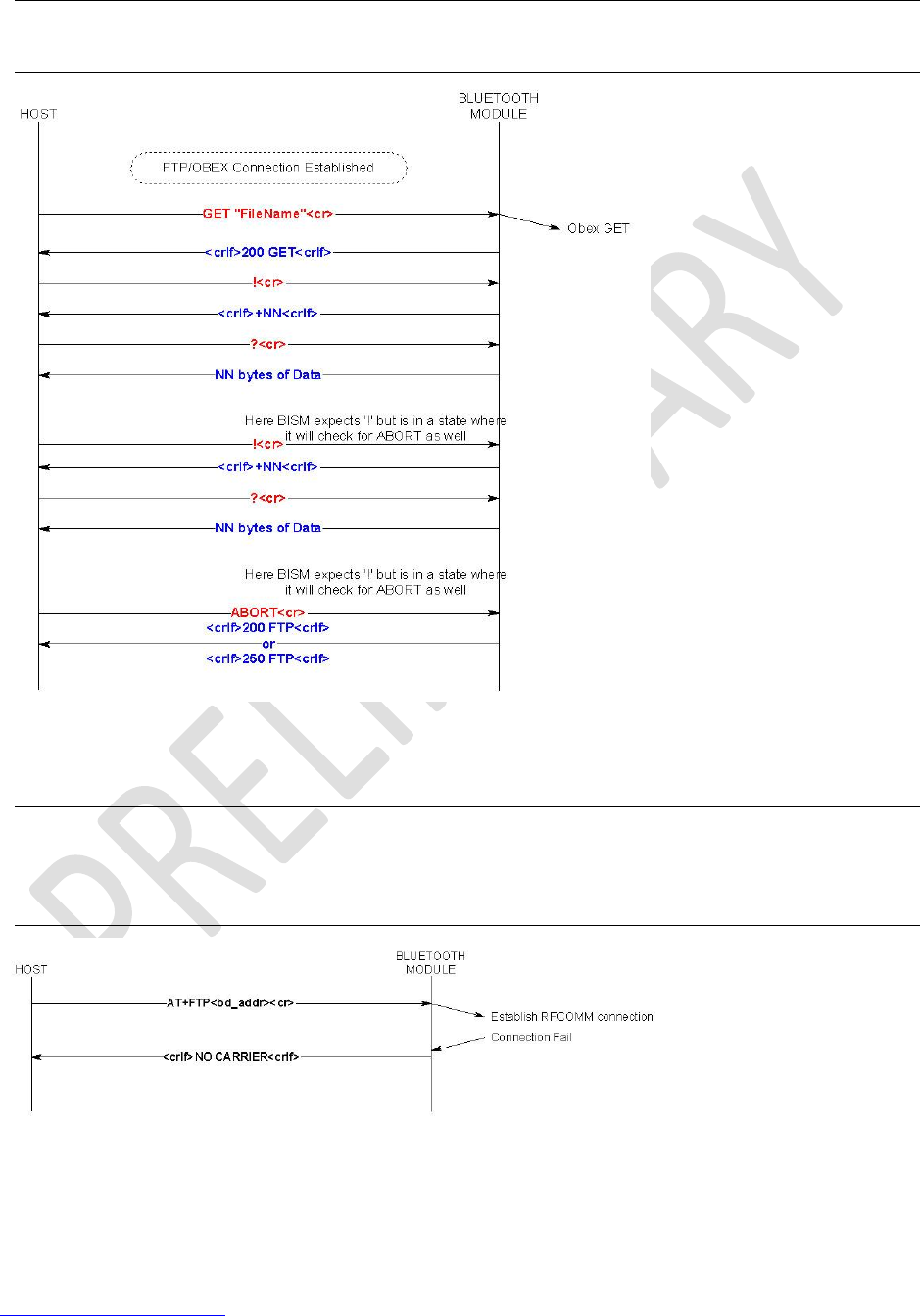
Class 1 Bluetooth v2.0 Module
User’s Guide
Americas: +1-800-492-2320 Option 2
Europe: +44-1628-858-940
Hong Kong: +852-2923-0610
www.lairdtech.com/bluetooth
76
CONN-GUIDE-BT730_v0.9
8.6.19 Usage: Get File – ABORT
Note: If “200 FTP” is received after submitting an ABORT command then it implies that the
entire file was transferred before the abort had been received.
Figure 21: Get file - ABORT
8.6.20 Usage: Unsuccessful FTP connection
Note: Reason for connection failure could be:
Device is not in range
Device is not connectable
Device does not support FTP server profile.
Figure 22: Unsuccessful FTP connection
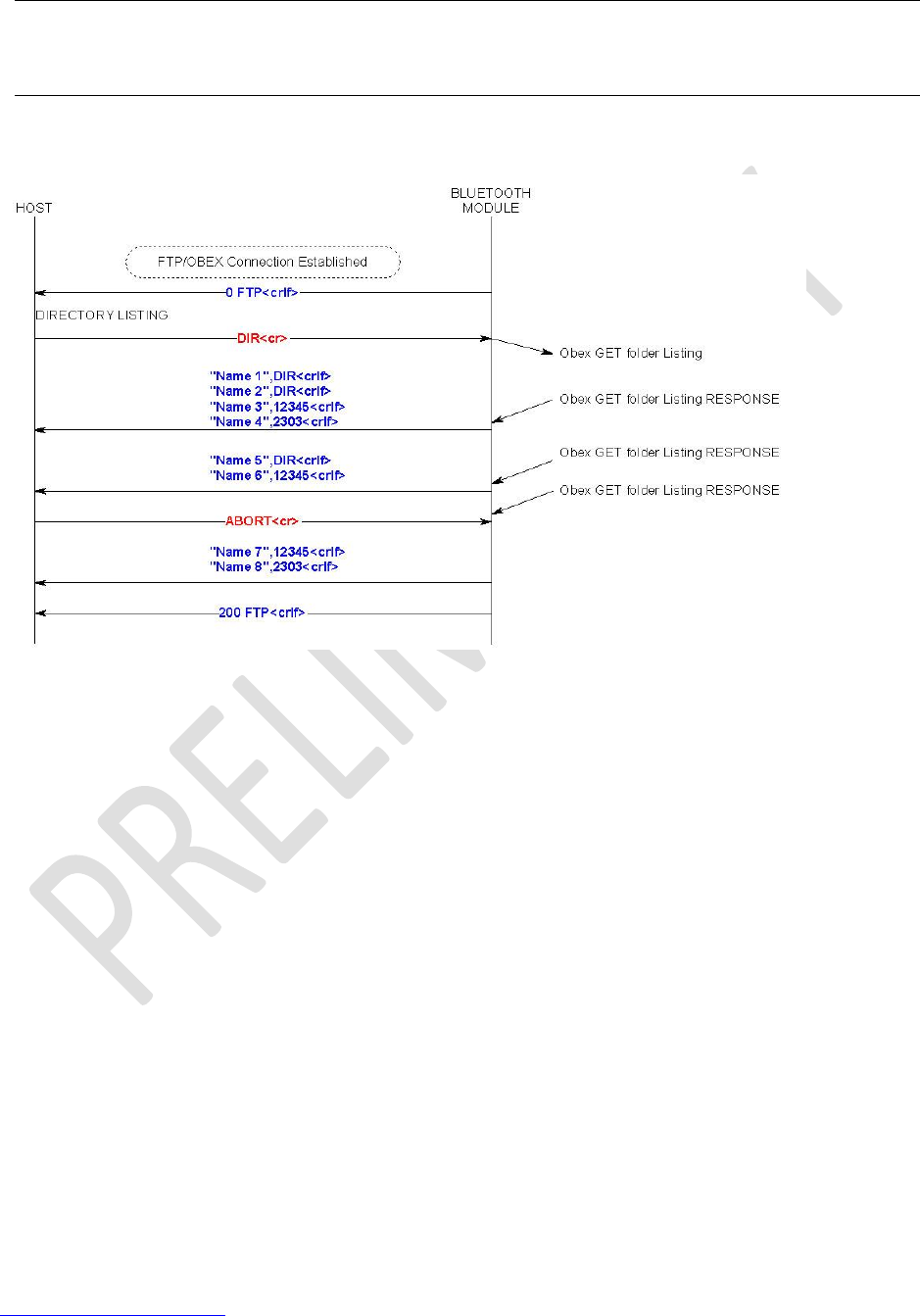
Class 1 Bluetooth v2.0 Module
User’s Guide
Americas: +1-800-492-2320 Option 2
Europe: +44-1628-858-940
Hong Kong: +852-2923-0610
www.lairdtech.com/bluetooth
77
CONN-GUIDE-BT730_v0.9
8.6.21 Usage: ABORT a DIR request
Note: The host may get more file/folder names after submitting an ABORT request because the
device could have received a folder data OBEX packet at the same time but slightly earlier
so it may have started processing it.
Hence the host must look out for a “200 FTP<crlf>” to be sure that the DIR operation has terminated.
Some ftp servers (like widcomm stack) will return a 500 response code.
Figure 23: ABORT a DIR request
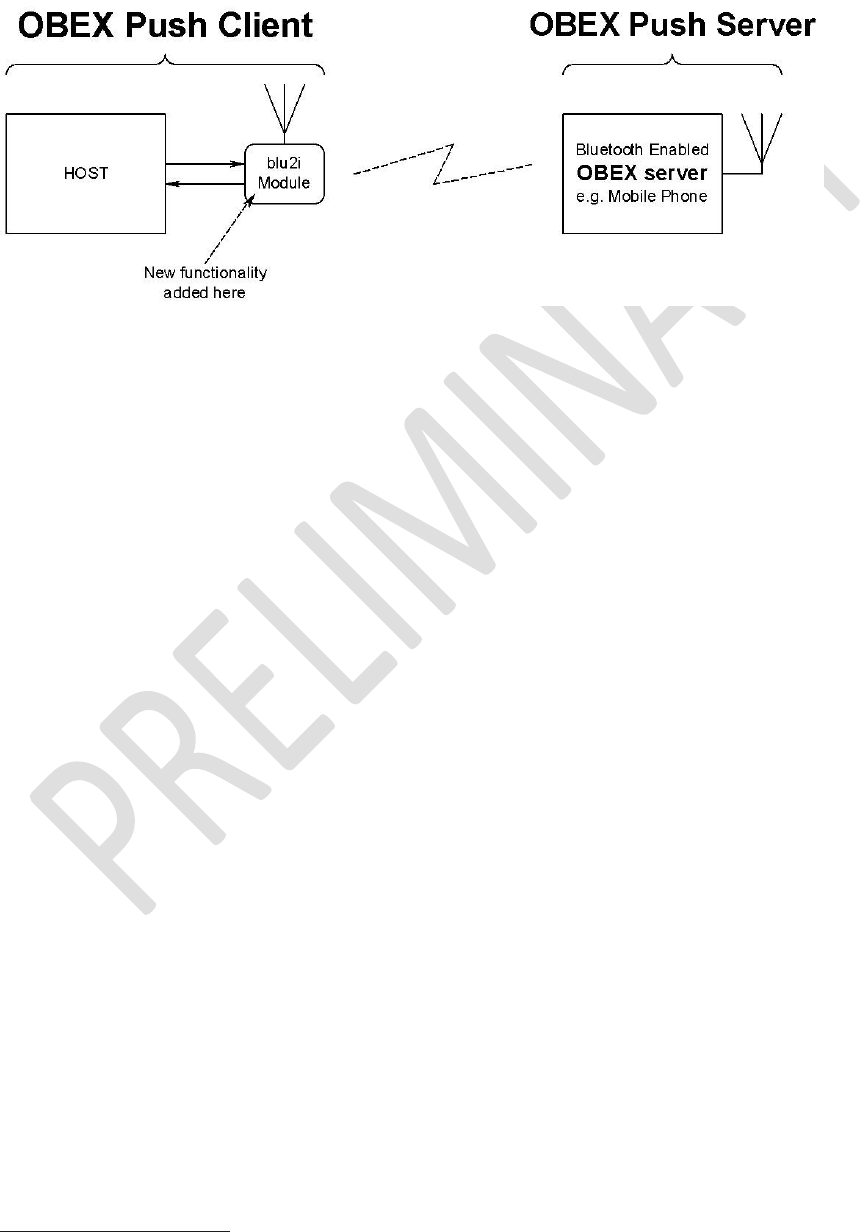
Class 1 Bluetooth v2.0 Module
User’s Guide
Americas: +1-800-492-2320 Option 2
Europe: +44-1628-858-940
Hong Kong: +852-2923-0610
www.lairdtech.com/bluetooth
78
CONN-GUIDE-BT730_v0.9
9. OBEX PROFILE COMMANDS
This section describes the OBEX implementation on BTM430/431 which allows performing the role of
‘Obex Push Client’ as illustrated in the diagram below.
Figure 24: OBEX Push client and server
The Obex Push profile implementation provides the capability to a host to act as an ‘Obex Push client’ to
a peer device providing an ‘obex push server’ profile.
An Obex Push client capability implies the ability to send and optionally receive a default file. The
Bluetooth Obex Push server profile specification describes the profile as one built on Obex Exchange
(OBEX) which is in turn built on SPP.
The Object Push Profile [3] describes the profile as having the three following features:
Object Push – Mandatory
Business Card Pull – Optional
Business Card Exchange – Optional
This implementation only offers the Mandatory Object Push feature.
The implementation on BTM430/431 allows a host attached to the module to send and receive files and
to manipulate files and folders.
The format used in this document for describing this protocol is a series of message sequence charts with
accompanying notes as appropriate, which unambiguously convey how a host and the module shall
interact to perform the task.
9.1 Generic Notes and Guidance
In the message sequence charts the following abbreviations apply:
<crlf> shall mean a two character sequence made up of the ASCII characters 0x0D (carriage return)
and 0x0A (line feed).
<cr> shall mean a one character sequence made up of the ASCII character 0x0D.
<lf> shall mean a one character sequence made up of the ASCII character 0x0A.
<bd_addr> shall mean a 12 digit string consisting of only hexadecimal digits 0-9, A-F, and a-f.
<filename> shall mean a string delimited by the “ character. For example, “hello.txt”.
<foldername> shall mean a string delimited by the “ character.
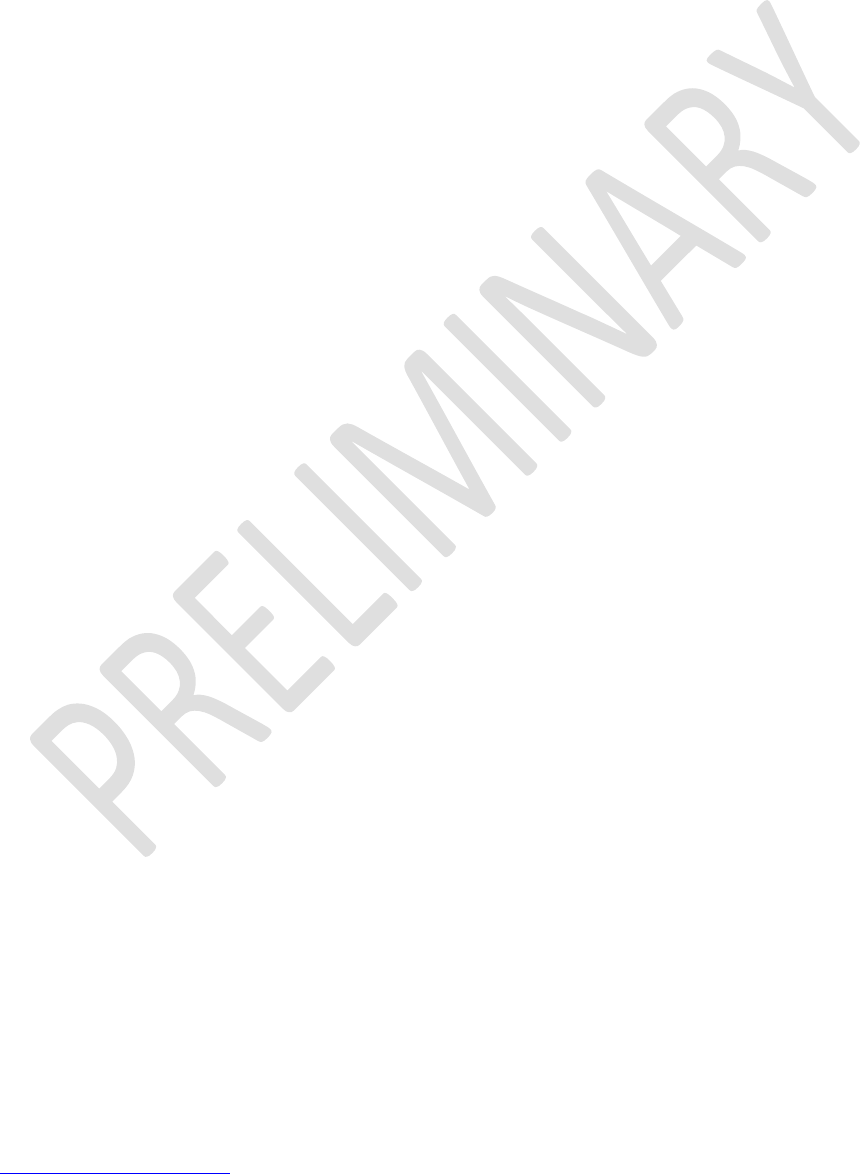
Class 1 Bluetooth v2.0 Module
User’s Guide
Americas: +1-800-492-2320 Option 2
Europe: +44-1628-858-940
Hong Kong: +852-2923-0610
www.lairdtech.com/bluetooth
79
CONN-GUIDE-BT730_v0.9
nnn shall be a decimal number with at least one digit.
The backspace character is not supported.
All OBEX commands are case sensitive.
OBEX Commands shall not exceed 32 characters in total.
While an OBEX session is open, the host shall not deassert the modules UART_CTS line and
conversely the host MUST always be ready to accept data.
When Unicode data is transmitted, it shall be assumed that the most significant byte is transmitted
first.
If an OBEX command is expecting a Unicode string as a parameter and the host has an ASCII
string, the string shall be expanded with a 0 byte in the most significant position.
9.2 OBEX Push related AT Commands
9.2.1 AT+OPS<bd_addr>
This command is used to establish a connection to an Obex Push server profile in a
peer device with Bluetooth address <bd_addr>.
9.2.2 ATSn=m
The following values of n are relevant to OBEX operation: 582. A description of these
values is given on page 18 TBC.
9.3 OBEX Push related Subcommands
This section describes Obex Push-related subcommands that the host can use to control the OBEX Push
session.
9.3.1 PUT <filename> length(Send file)
This OBEX subcommand is used to send a file to the obex server.
The length of <filename> shall not exceed 24 characters.
The length value is inserted into the OBEX length header field.
There is some ambiguity as to how the first obex PUT packet is formed with respect to
the ‘Body’header. The OBEX specification does not prohibit the first ‘Body’ header to be empty, neither
does it say that it must NOT be empty. If the first body is NOT empty when sending a file to a Nokia6820
phone then it seems to confuse it. Hence Laird sends out an empty ‘Body’ header by default as does the
Windows PC based Widcomm Bluetoothstack.
To cater for future devices which NEED the first ‘Body’ header to be non-empty, a new S Register582 has
been added to allow a host to have control over how the first body header is constructed.
The new S register 582 takes values in the range 0 to 1. The default value is 0 which implies that the first
‘Body’ header in the PUT obex packet is empty. A value of 1 forces that ‘Body’ header to have one byte of
data – and in this case when the module prompts the host for a length value it shall respond accordingly.
Hopefully the default value of zero suffices for all occasions but, in case it does not, we provide the
control to modify the packet as required.
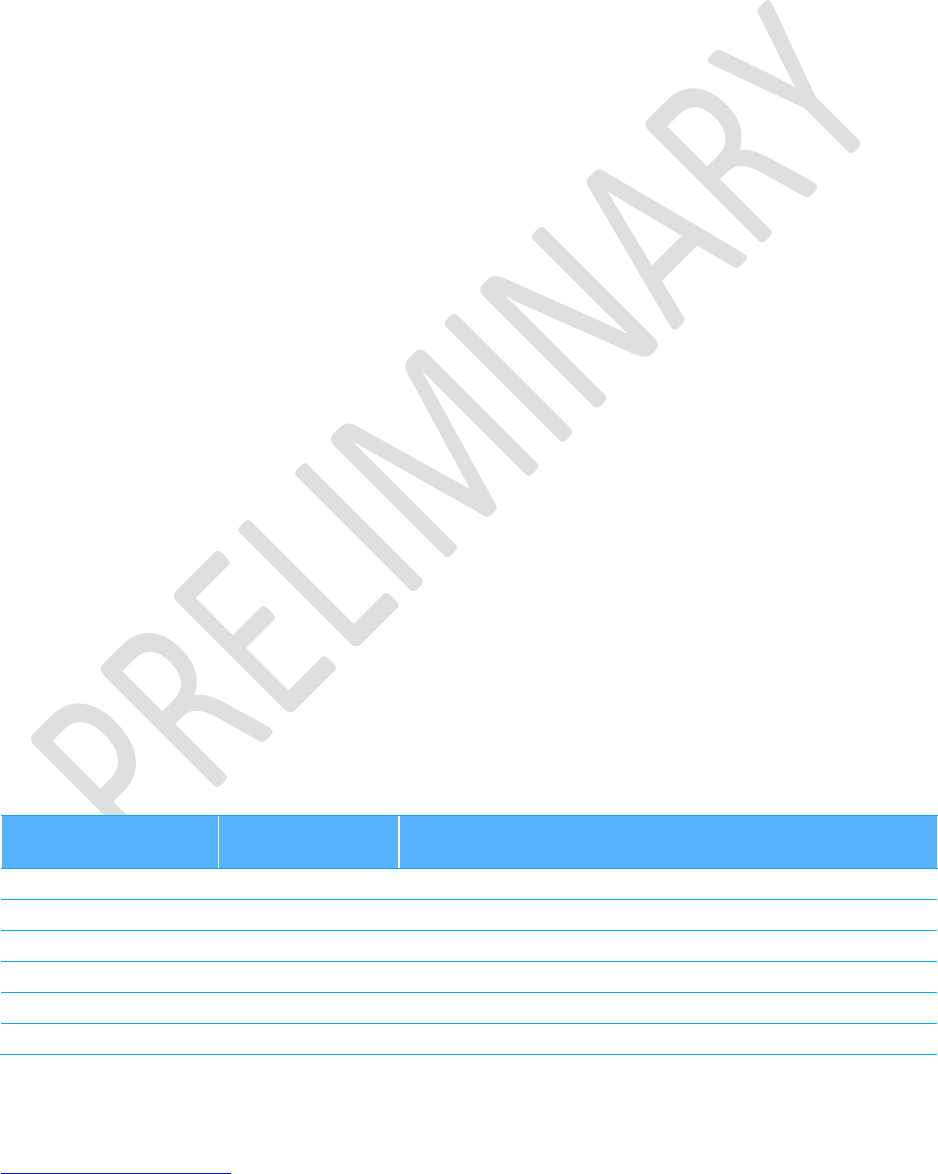
Class 1 Bluetooth v2.0 Module
User’s Guide
Americas: +1-800-492-2320 Option 2
Europe: +44-1628-858-940
Hong Kong: +852-2923-0610
www.lairdtech.com/bluetooth
80
CONN-GUIDE-BT730_v0.9
9.3.2 PUT –nnnlength(Send file)
This OBEX subcommand is used to send a file to the OBEX push server where the filename is in
UNICODE text and the filename is –nnn bytes long.
The length value is inserted into the OBEX length header field.
See comment above with regards to S Reg 582 TBC.
9.3.3 ABORT(Abort current OBEX command)
This OBEX subcommand is used to abort a file transfer where appropriate.
To abort a PUT session, please send 0 when the module prompts for a length value.
9.3.4 QUIT ( Terminate the OBEX Push session)
This OBEX subcommand is used to terminate the OBEX push session and also results in the Bluetooth
connection being terminated.
9.3.5 MAX(Max outgoing OBEX packet size)
This OBEX subcommand is used to get the maximum obex packet size tolerated by server and can be
used by the host to optimize the data throughput.
9.3.6 WHO(Identify current profile)
This OBEX subcommand is used to identify the current profile. 0 means Obex Push and 1 means FTP.
9.4 OBEX Push Related Subresponses
All Obex Push-related sub responses sent from the module to the host are 11 characters long in the
following format:
<cr><lf>nnn AAA<cr><lf>.
The characters nnn shall be decimal digits ‘0’ to ‘9’, then there is a space character and finally a 3
character word followed by <cr><lf>.
The <cr><lf> envelope plus the fixed length hopefully makes the parsing task in the host much simpler.
Values for ‘nnn’ are as specified for HTTP status codes and reproduced from the OBEX specification as
indicated in Table 9-1.
Table 9-1: OBEX response and HTTP status codes
OBEX Response
Code
HTTP Status
Code
Definition
0x00to 0x0F
None
Reserved
0x10(0x90)
100
Continue
0x20(0xA0)
200
OK, Success
0x21(0xA1)
201
Created
0x22(0xA2)
202
Accepted
0x23(0xA3)
203
Non-Authoritative Information
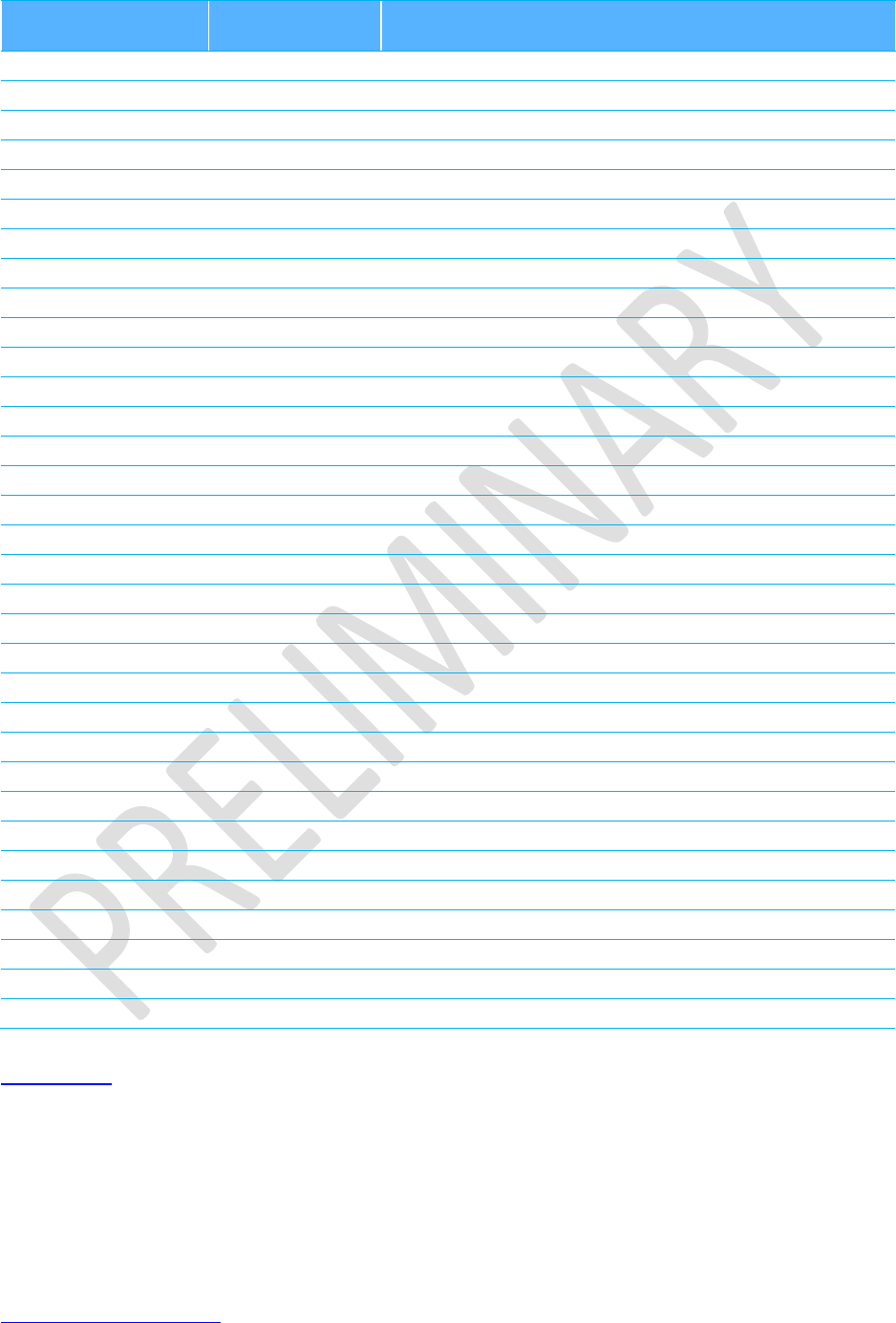
Class 1 Bluetooth v2.0 Module
User’s Guide
Americas: +1-800-492-2320 Option 2
Europe: +44-1628-858-940
Hong Kong: +852-2923-0610
www.lairdtech.com/bluetooth
81
CONN-GUIDE-BT730_v0.9
OBEX Response
Code
HTTP Status
Code
Definition
0x24(0xA4)
204
No Content
0x25(0xA5)
205
Reset Content
0x26(0xA6)
206
Partial Content
0x30(0xB0)
300
Multiple Choices
0x31(0xB1)
301
Moved Permanently
0x32(0xB2)
302
Moved temporarily
0x33(0xB3)
303
See Other
0x34(0xB4)
304
Not modified
0x35(0xB5)
305
Use Proxy
0x40(0xC0)
400
Bad Request - server couldn’t understand request
0x41(0xC1)
401
Unauthorized
0x42(0xC2)
402
Payment required
0x43(0xC3)
403
Forbidden - operation is understood but refused
0x44(0xC4)
404
Not Found
0x45(0xC5)
405
Method not allowed
0x46(0xC6)
406
Not Acceptable
0x47(0xC7)
407
Proxy Authentication required
0x48(0xC8)
408
Request Time Out
0x49(0xC9)
409
Conflict
0x4A(0xCA)
410
Gone
0x4B(0xCB)
411
Length Required
0x4C(0xCC)
412
Precondition failed
0x4D(0xCD)
413
Requested entity too large
0x4E(0xCE)
414
Request URL too large
0x4F(0xCF)
415
Unsupported media type
0x50(0xD0)
500
Internal Server Error
0x51(0xD1)
501
Not Implemented
0x52(0xD2)
502
Bad Gateway
0x53(0xD3)
503
Service Unavailable
0x54(0xD4)
504
Gateway Timeout
0x55(0xD5)
505
HTTP version not supported
0x60 (0xE0)
- - -
Database Full
0x61 (0xE1)
- - -
Database Locked
For more details of these values, Refer to the irDA specification which can be freely downloaded from
www.irda.org.
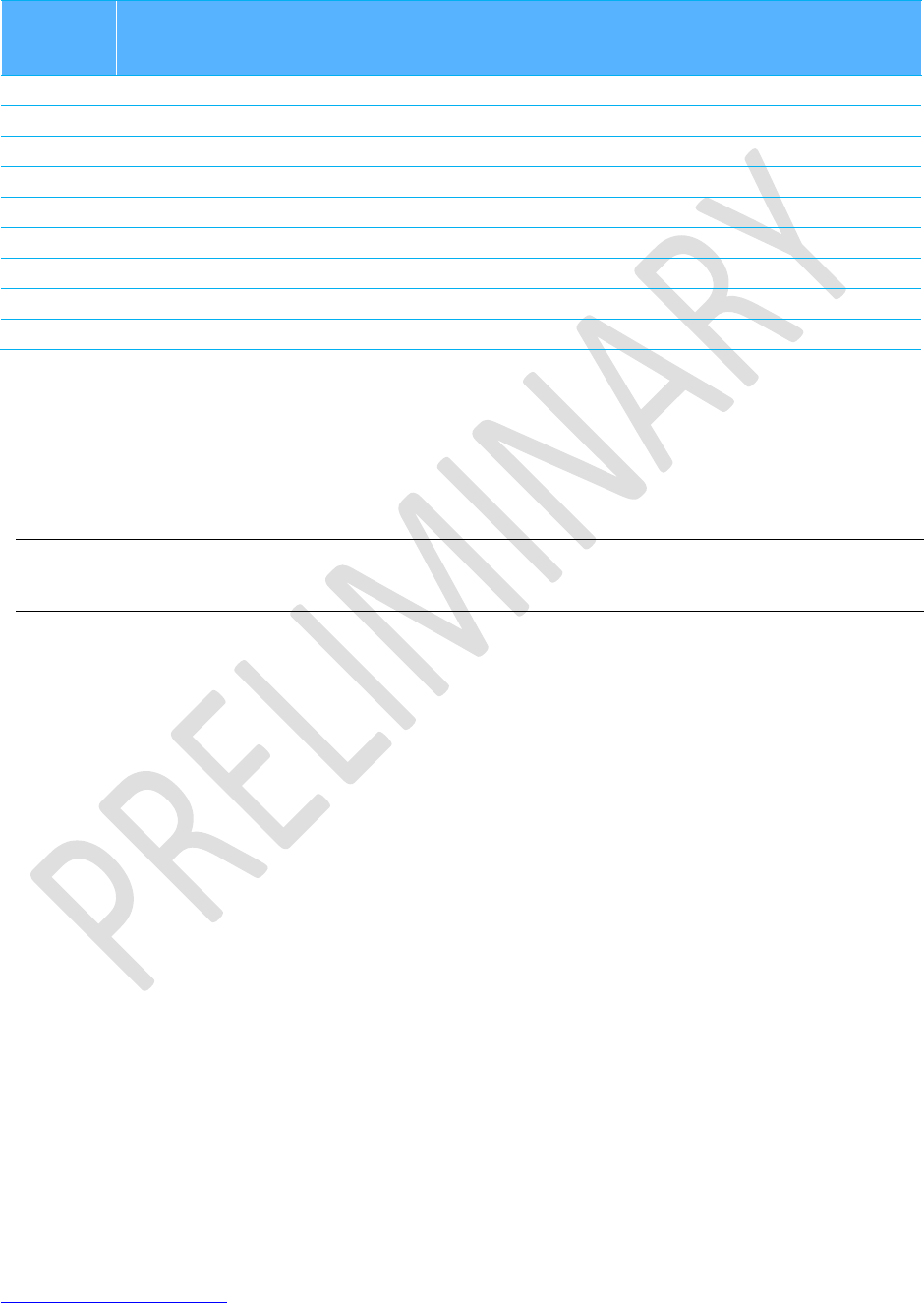
Class 1 Bluetooth v2.0 Module
User’s Guide
Americas: +1-800-492-2320 Option 2
Europe: +44-1628-858-940
Hong Kong: +852-2923-0610
www.lairdtech.com/bluetooth
82
CONN-GUIDE-BT730_v0.9
In addition, values in the range 050 to 099 and 250 to 299 inclusive are specific to this
Laird application and are defined as per the table below.
Response
Code
‘nnn’
(Laird Technologies Specific) Definition
050
Syntax Error / Command Unrecognized
051
Server sent unexpected information in OBEX packet
052
OBEX connection fail, because it is unauthorized
053
Memory allocation failure (Please contact Ezurio with details)
055
Unicode File/Folder name length cannot be an odd value
056
Command not recognized
090
An XML parsing error occurred (while processing response to DIR command)
099
The Bluetooth connection has unexpected been dropped (i.e., remote out of range etc.)
250
GET procedure was aborted
9.4.1 nnn OBX
This OBEX response is used to convey the outcome of a subcommand to the host where ‘nnn’ is a fixed
three digit decimal number as defined in the irDA specification and map to HTTP status codes.
For example, a value of n=200 implies successful operation, any other value usually conveys an error as
described in the irDA specification (except the range 050 to 099 inclusive and 250 to 299 inclusive).
Note: When a Bluetooth OBEX session is established, we will be specifying v1.0 in
the header packets by default.
9.5 OBEX Push Line Multiplexing Commands
When transferring an object, the single serial interface between the host and the module is used to send
and receive data and commands. This means a scheme is required to unambiguously determine when a
byte on the line corresponds to a command or data belonging to a file.
The module uses negotiated multiplexing to achieve this, and commands are used to toggle the line
between command and data mode.
This scheme is symmetrical and the commands for toggling the state of the line are relevant for both
direction. The only difference being that the terminator is <cr> in the host to module direction and <crlf> in
the reverse direction.
The commands are described in the following sub sections.
9.5.1 #
This command is used to ask the other end how many bytes of a filename or object it will send next.
9.5.2 >
This command is used to inform the other end that it is safe to send the number of bytes belonging to a
filename or object as indicated in the most recent # command.
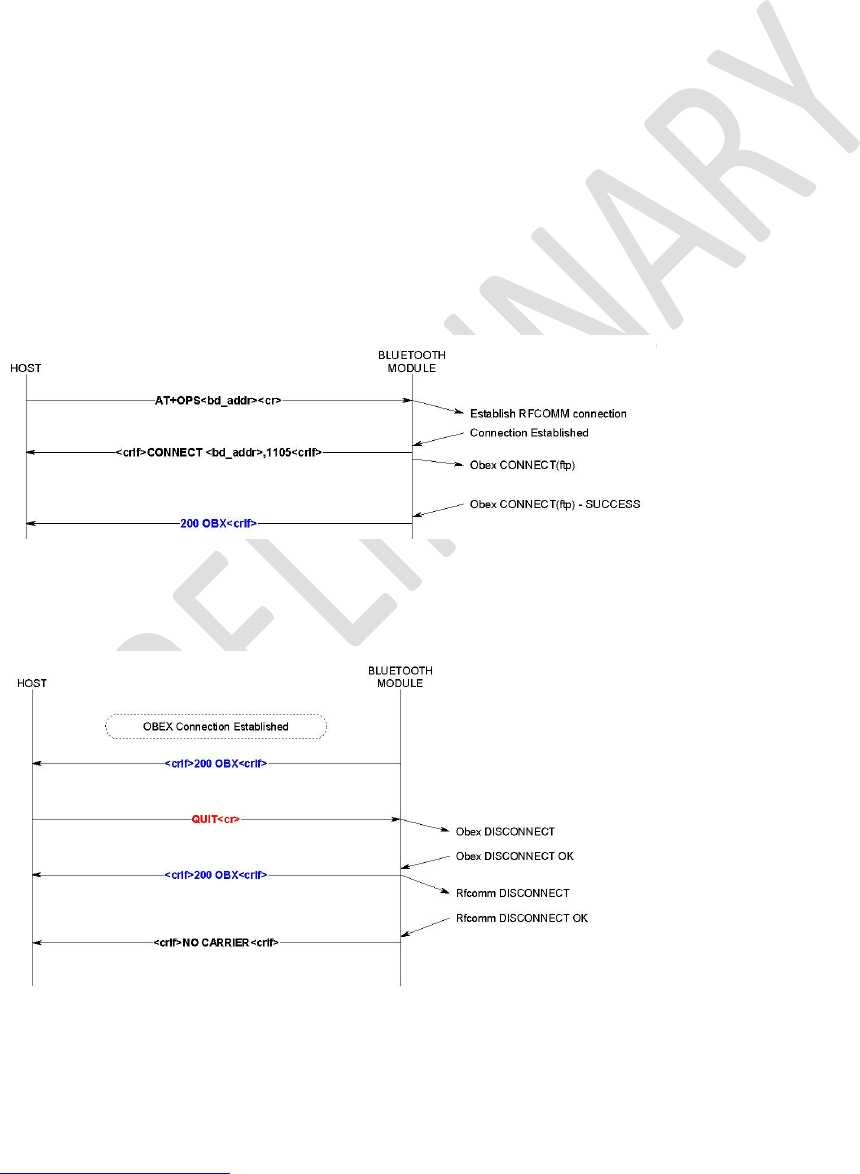
Class 1 Bluetooth v2.0 Module
User’s Guide
Americas: +1-800-492-2320 Option 2
Europe: +44-1628-858-940
Hong Kong: +852-2923-0610
www.lairdtech.com/bluetooth
83
CONN-GUIDE-BT730_v0.9
9.5.3 !
This command is used to ask the module/host how many bytes of data it will send next.
If the module/host sends a length value that is too large to hanlde, then it can be rejected by resending
the !command. This is because accepting a value implies this end should send a ? prompt to trigger the
data phase (see Section 9.5.4).
9.5.4 ?
This command is used to inform the other end that it is safe to send the number of bytes
belonging to ‘data’ phase indicated in the most recent ! command.
9.6 Message Sequence Charts
The color scheme uses RED text as commands from a host to the module and BLUE text as responses
and prompts from the module to the host. Command/responses shown in BLACK are associated with
non-obex related states.
Apart from OBEX connection and disconnection scenarios, to avoid repetition, all message sequence
charts shall assume that the module is in an Obex connected state.
9.6.1 Usage: Make OBEX PUSH connection (No Authentication)
Figure 25: Make OBEX PUSH connection (no authentication)
9.6.2 Usage: OBEX Push Disconnection
Figure 26: OBEX Push disconnection
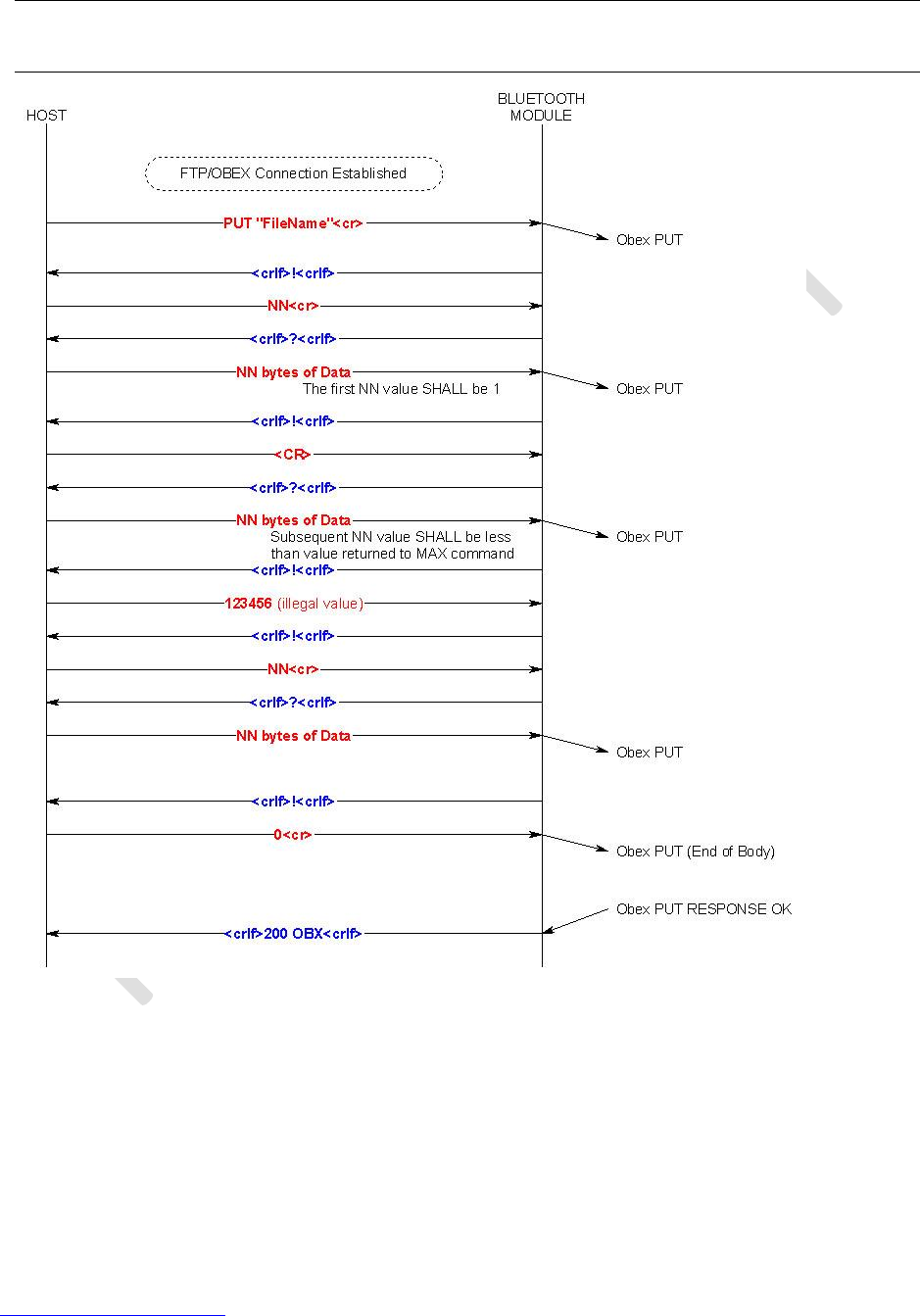
Class 1 Bluetooth v2.0 Module
User’s Guide
Americas: +1-800-492-2320 Option 2
Europe: +44-1628-858-940
Hong Kong: +852-2923-0610
www.lairdtech.com/bluetooth
84
CONN-GUIDE-BT730_v0.9
9.6.3 Usage: Put File (Short Filename)
Note: The first NN from the host shall specify a value of 1.
Subsequent NN values shall be less than the value returned to command MAX
Figure 27: Put file (short filename)
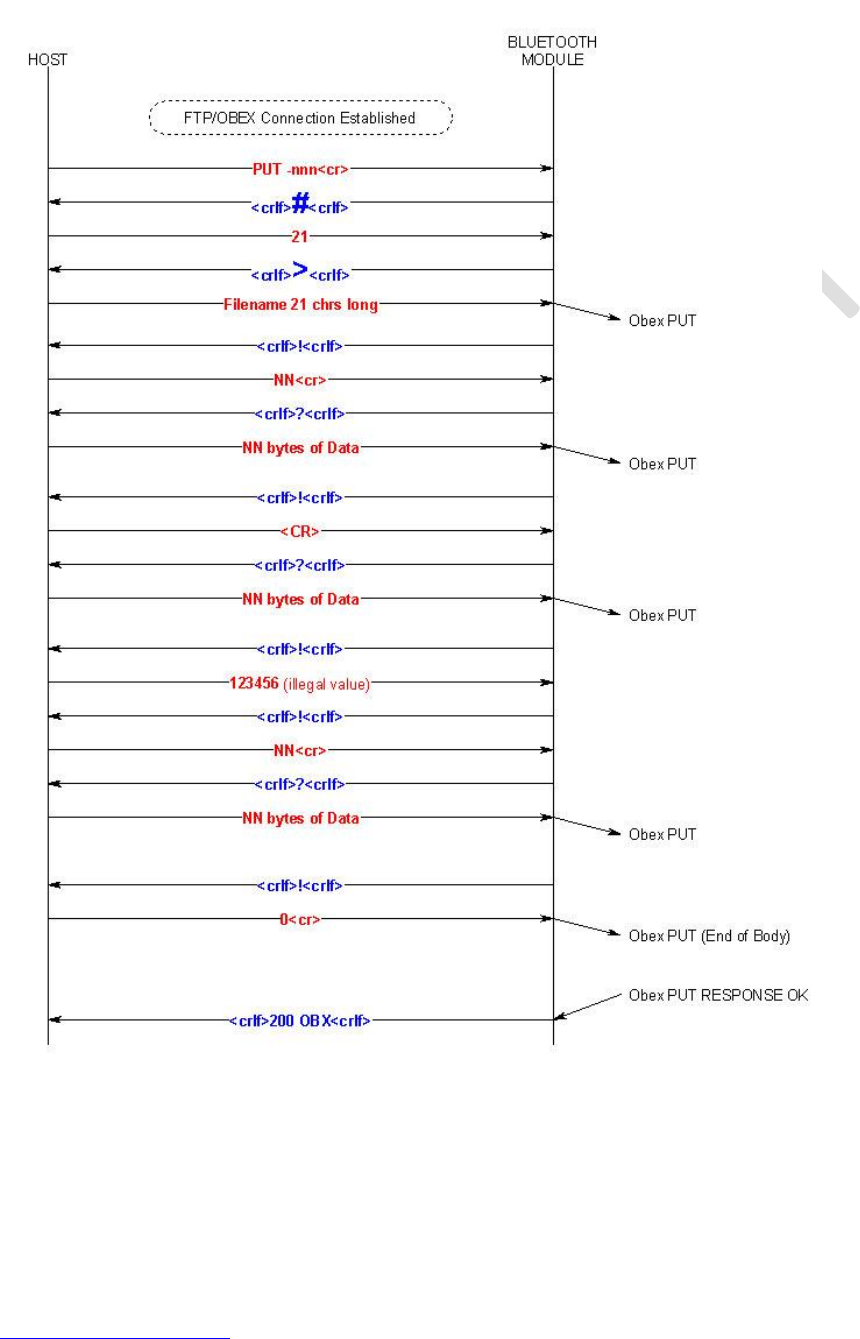
Class 1 Bluetooth v2.0 Module
User’s Guide
Americas: +1-800-492-2320 Option 2
Europe: +44-1628-858-940
Hong Kong: +852-2923-0610
www.lairdtech.com/bluetooth
85
CONN-GUIDE-BT730_v0.9
9.6.4 Usage: Put File (Long Filename - UNICODE)
Figure 28: Put file (long filename - UNICODE)
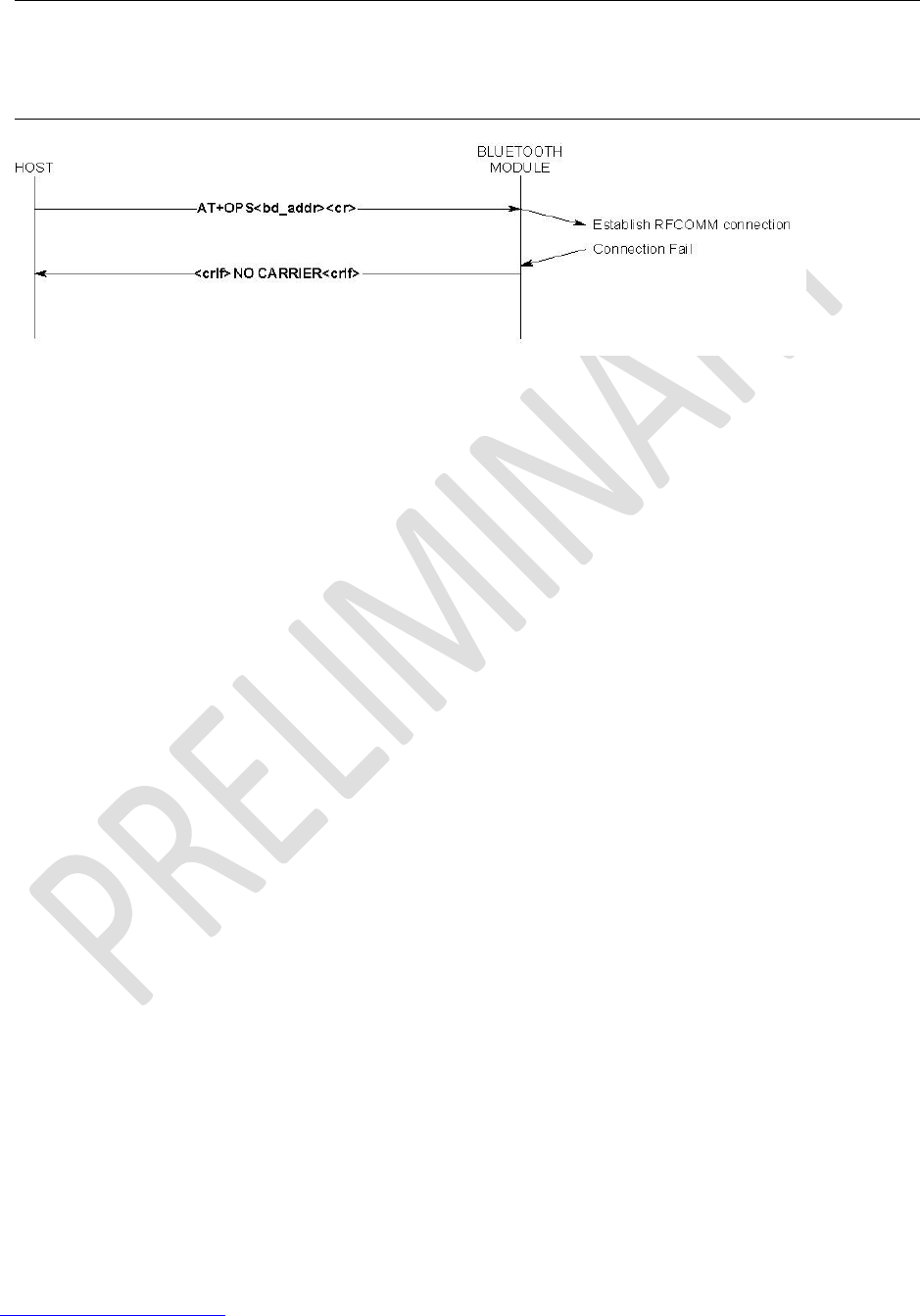
Class 1 Bluetooth v2.0 Module
User’s Guide
Americas: +1-800-492-2320 Option 2
Europe: +44-1628-858-940
Hong Kong: +852-2923-0610
www.lairdtech.com/bluetooth
86
CONN-GUIDE-BT730_v0.9
9.6.5 Usage: Unsuccessful OBEX Push connection
Note: Reason for connection failure could be:
Device is not in range,
Device is not connectable,
Device does not support OBEX Push server profile.
Figure 29: Unsuccessful OBEX Push connection
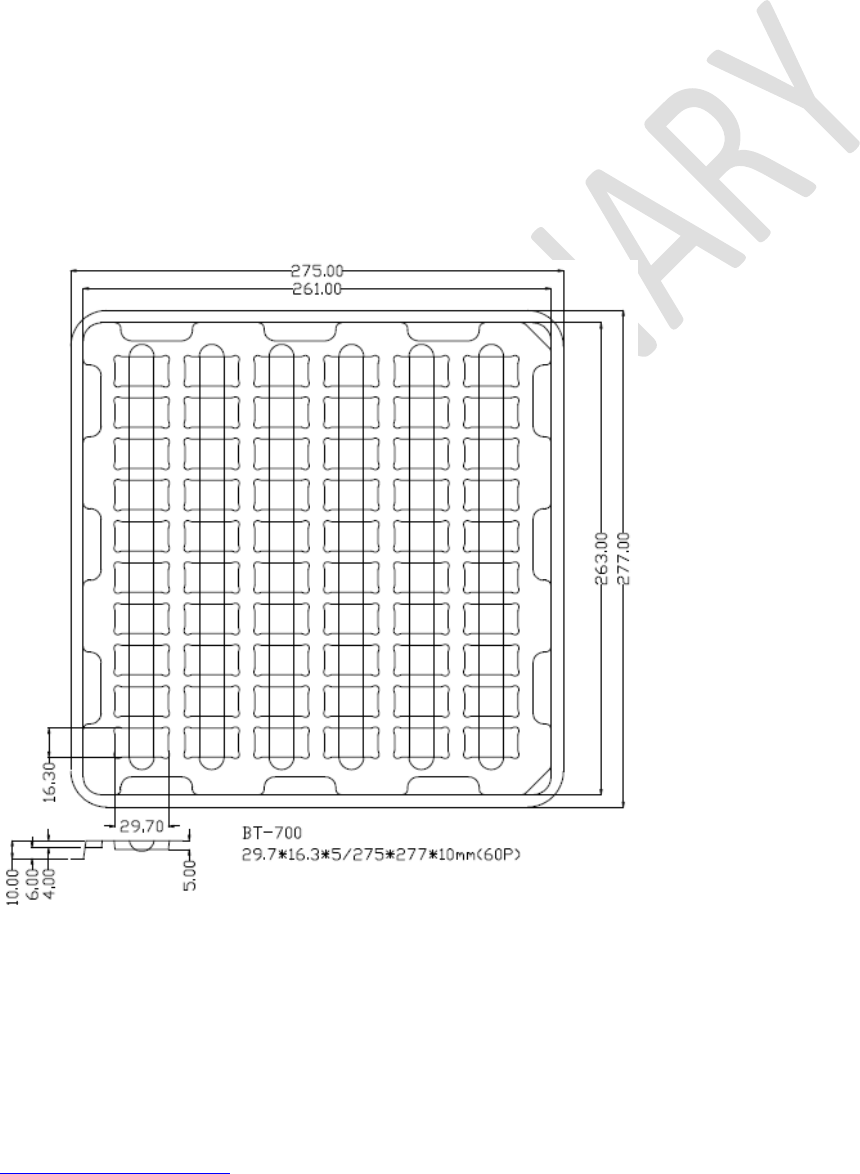
Class 1 Bluetooth v2.0 Module
User’s Guide
Americas: +1-800-492-2320 Option 2
Europe: +44-1628-858-940
Hong Kong: +852-2923-0610
www.lairdtech.com/bluetooth
87
CONN-GUIDE-BT730_v0.9
10. APPLICATION NOTE FOR SURFACE MOUNT MODULES
10.1 Introduction
Laird surface mount modules are designed to conform to all major manufacturing guidelines. This
application note is intended to provide additional guidance beyond the information that is presented in the
User Manual. This Application Note is considered a living document and will be updated as new
information is presented.
The modules are designed to meet the needs of a number of commercial and industrial applications. The
modules are designed to be easily manufactured and conform to current automated manufacturing
processes.
10.2 Shipping
Modules are shipped in ESD (Electrostatic Discharge) safe trays that can be loaded into most
manufacturers pick and place machines. Layouts of the trays are provided in Figure 10-1..
Figure 10-1: BT730 Shipping Tray Details
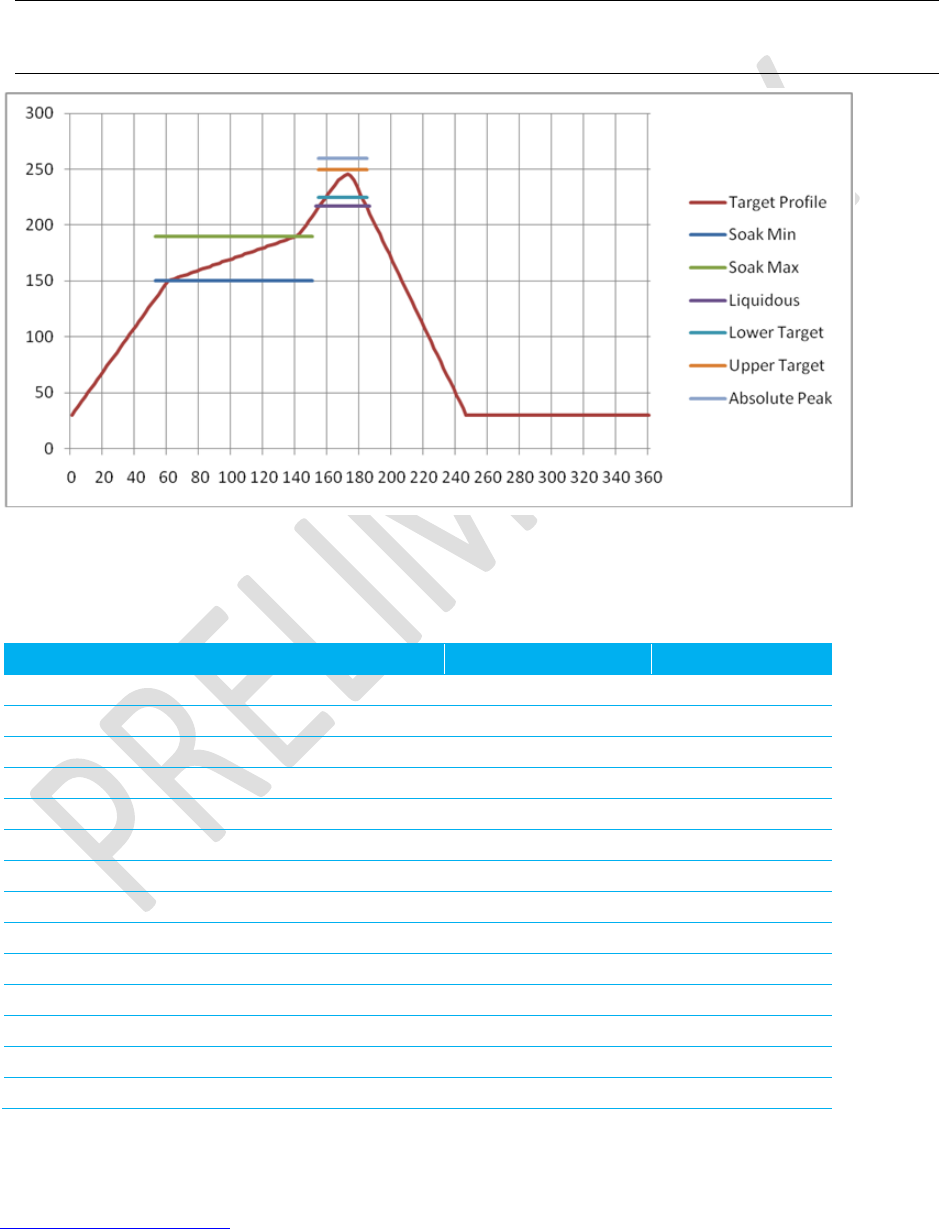
Class 1 Bluetooth v2.0 Module
User’s Guide
Americas: +1-800-492-2320 Option 2
Europe: +44-1628-858-940
Hong Kong: +852-2923-0610
www.lairdtech.com/bluetooth
88
CONN-GUIDE-BT730_v0.9
10.3 Reflow Parameters
Laird surface mount modules are designed to be easily manufactured including reflow soldering to a PCB.
Ultimately it is the responsibility of the customer to choose the appropriate solder paste and to ensure
oven temperatures during reflow meet the requirements of the solder paste. Laird Technologies’ surface
mount modules conform to J-STD-020D1 standards for reflow temperatures.
Important: During reflow, modules should not be above 260° and not for more than 30
seconds.
Figure 10-2: Recommended Reflow Temperature
Temperatures should not exceed the minimums or maximums presented in Table 10-1.
Table 10-1: Recommended Maximum and minimum temperatures
Specification
Value
Unit
Temperature Inc./Dec. Rate (max)
1~3
°C / Sec
Temperature Decrease rate (goal)
2-4
°C / Sec
Soak Temp Increase rate (goal)
.5 - 1
°C / Sec
Flux Soak Period (Min)
70
Sec
Flux Soak Period (Max)
120
Sec
Flux Soak Temp (Min)
150
°C
Flux Soak Temp (max)
190
°C
Time Above Liquidous (max)
70
Sec
Time Above Liquidous (min)
50
Sec
Time In Target Reflow Range (goal)
30
Sec
Time At Absolute Peak (max)
5
Sec
Liquidous Temperature (SAC305)
218
°C
Lower Target Reflow Temperature
240
°C
Upper Target Reflow Temperature
250
°C
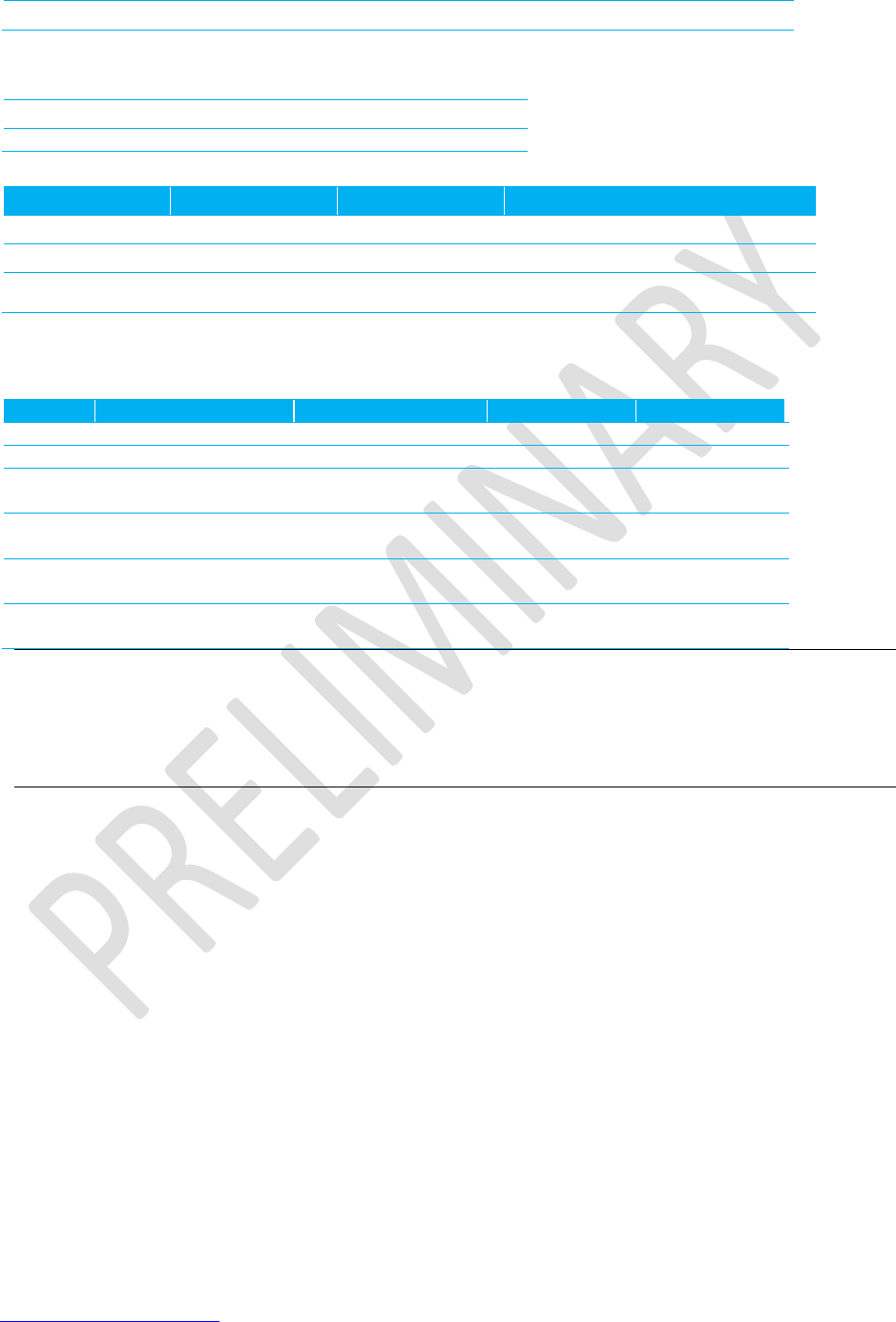
Class 1 Bluetooth v2.0 Module
User’s Guide
Americas: +1-800-492-2320 Option 2
Europe: +44-1628-858-940
Hong Kong: +852-2923-0610
www.lairdtech.com/bluetooth
89
CONN-GUIDE-BT730_v0.9
Absolute Peak Temperature
260
°C
11. FCC REGULATORY STATEMENTS
Family
US/FCC
CANADA/IC
BT7x0
SQGBT700
3147A-BT700
PART #
FORM FACTOR
TX OUTPUT
ANTENNA
BT730-SA-XX
Surface Mount
18dBm
Chip
BT730-SC-XX
Surface Mount
18dBm
U.FL
*Last two slots "XX" in Part # are used for production firmware release changes. Can be values 01-99,
aa-zz
The BT730 family has been designed to operate with the antennas listed below with a maximum gain of
2dBi. The required antenna impedance is 50 ohms.
Item
Part Number
Mfg.
Type
Gain (dBi)
1
AT3216-B2R7HAAT
ACX
Chip
0.5
2
MAF94045
Laird
PCB
2
3
ACC-008
EZURIO
Ceramic
Patch
2
4
WRR2400- IP04-
B(MAF94019)
Laird
Dipole
1.5
5
WTC2450-IP04-
K(MAF94006)
Laird
Dipole
2
6
S181FL-L-RMM-
2450S
Nearson
(Laird)
Dipole
2
Note: The OEM is free to choose another vendor’s antenna of like type and equal or lesser gain
as an antenna appearing in the table and still maintain compliance. Reference FCC Part
15.204(c)(4) for further information on this topic. To reduce potential radio interference to
other users, the antenna type and gain should be chosen so that the equivalent isotropic
radiated power (EIRP) is not more than that permitted for successful communication.
11.1 Power Exposure Information
In general, there are two agency classifications for RF radiation exposure in wireless applications;
portable and mobile.
Mobile – A mobile device is defined as a transmitting device designed to be used in such a way that a
separation distance of at least 20 centimeters is normally maintained between the transmitter's radiating
structures and the body of the user or nearby persons. The BT730 is fully modular approved for mobile
and fixed applications. Reference FCC Part 2.1091 for further details on mobile devices.
This transmitter must not be co-located or operating in conjunction with any other antenna or transmitter.
Portable – Portable is a classification of equipment where the user, in general, will be within 20 cm of the
transmitting antenna. Portable equipment is further broken down into two classes; within 2.5 cm of human
contact and beyond 2.5 cm. The BT730 does not hold a portable approval classification due to its peak
output power and modular approval restrictions. Further RF evaluation is required by customers who want
to use the BT730 in portable applications. Contact a qualified test house or a Laird Technologies
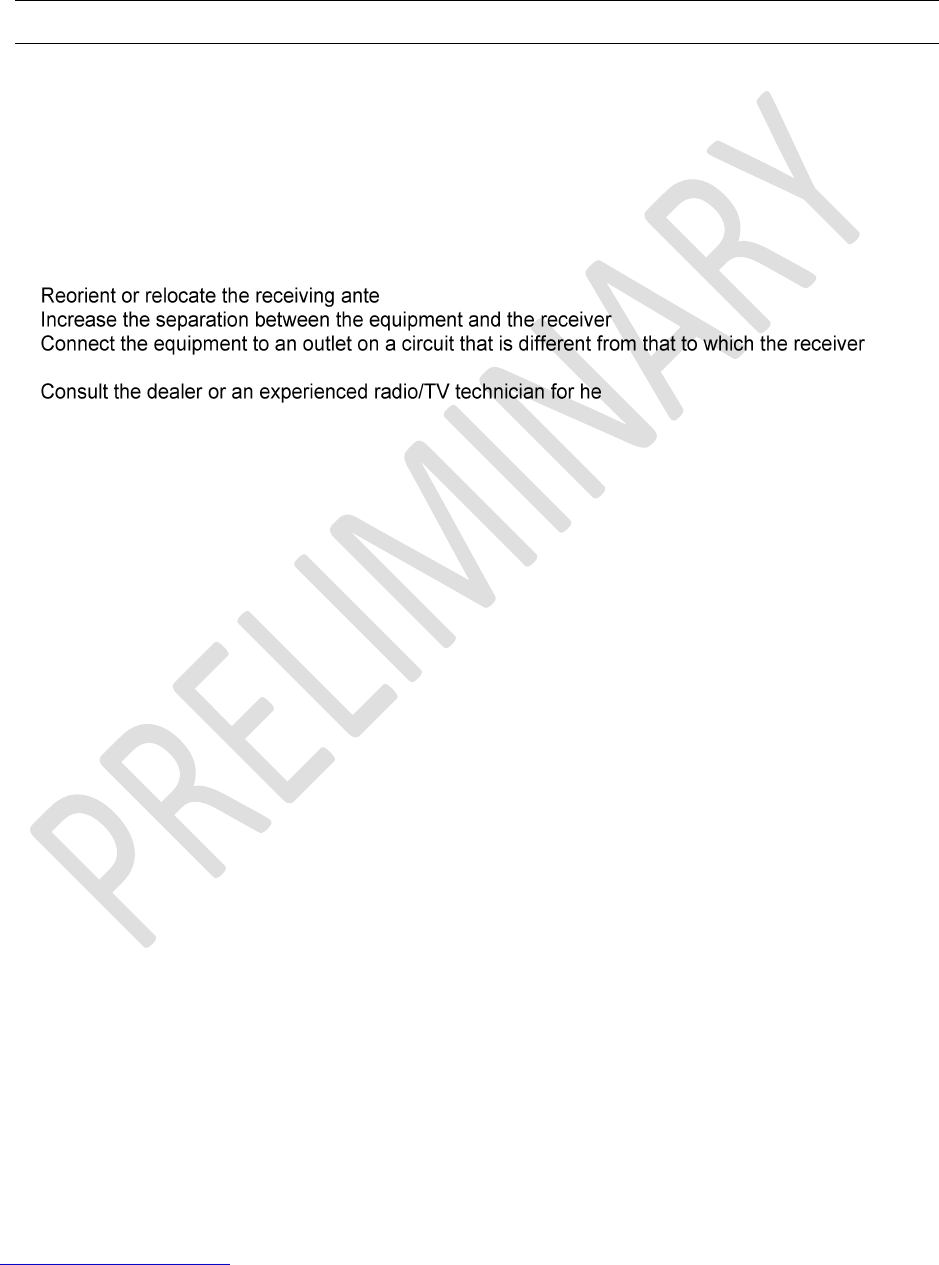
Class 1 Bluetooth v2.0 Module
User’s Guide
Americas: +1-800-492-2320 Option 2
Europe: +44-1628-858-940
Hong Kong: +852-2923-0610
www.lairdtech.com/bluetooth
90
CONN-GUIDE-BT730_v0.9
representative for further information on this topic. Reference FCC Part 2.1093 for further details on
portable devices.
Maximum Permissible Exposure report has been created which shows the minimum distances for Public
and Occupational use of the BT730.
Note: Occupational Limit Minimum Distance = 1.5cm Public Limit Minimum Distance = 3cm
Note: This equipment was tested and found to comply with the limits for a Class B digital device,
pursuant to Part 15 of the FCC Rules. These limits are designed to provide reasonable protection against
harmful interference in a residential installation. This equipment generates, uses, and can radiate radio
frequency energy and, if not installed and used in accordance with the instructions, may cause harmful
interference to radio communications. However, there is no guarantee that interference does not occur in
a particular installation. If this equipment does cause harmful interference to radio or television reception,
which can be determined by turning the equipment off and on, the user is encouraged to correct the
interference by one or more of the following measures:
nna
is connected. lp
CAUTION: THIS DEVICE COMPLIES WITH PART 15 OF THE FCC RULES AND INDUSTRY CANADA
LICENSE-EXEMPT RSS STANDARD(S). OPERATION IS SUBJECT TO THE FOLLOWING TWO
CONDITIONS: (1) THIS DEVICE MAY NOT CAUSE HARMFUL INTERFERENCE, AND (2) THIS
DEVICE MUST ACCEPT ANY INTERFERENCE RECEIVED, INCLUDING INTERFERENCE THAT MAY
CAUSE UNDESIRED OPERATION.
CAUTION: The OEM should have the device incorporating with the BT730 tested by a qualified test
house to verify compliance with FCC Part 15 Subpart B limits for unintentional radiators.
CAUTION: Any changes or modifications not expressly approved by Laird could void the user’s authority
to operate the equipment.
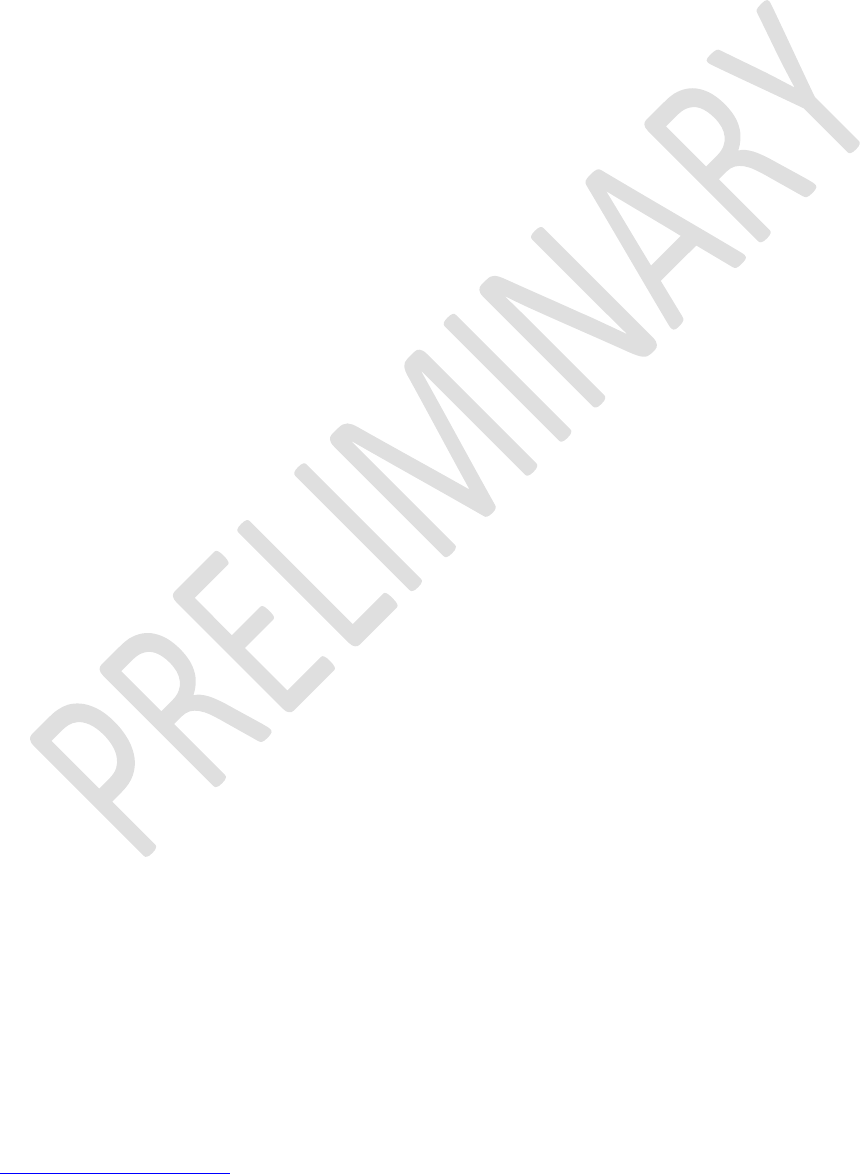
Class 1 Bluetooth v2.0 Module
User’s Guide
Americas: +1-800-492-2320 Option 2
Europe: +44-1628-858-940
Hong Kong: +852-2923-0610
www.lairdtech.com/bluetooth
91
CONN-GUIDE-BT730_v0.9
OEM Responsibilities
This device is intended only for OEM integrators under the following conditions:
1) The antenna must be installed such that 20 cm is maintained between the antenna and users.
2) The transmitter module may not be co-located with any other transmitter or antenna
As long as 2 conditions above are met, further transmitter test will not be required. However, the OEM
integrator is still responsible for testing their end-product for any additional compliance requirements
required with this module installed
IMPORTANT NOTE:
In the event that these conditions can not be met (for example certain laptop configurations or co-location
with another transmitter), then the FCC authorization is no longer considered valid and the FCC ID can
not be used on the final product. In these circumstances, the OEM integrator will be responsible for re-
evaluating the end product (including the transmitter) and obtaining a separate FCC authorization.
End Product Labeling
This transmitter module is authorized only for use in device where the antenna may be installed such that
20 cm may be maintained between the antenna and users. The final end product must be labeled in a
visible area with the following: “Contains FCC ID: SQGBT700”.
Manual Information To the End User
The OEM integrator has to be aware not to provide information to the end user regarding how to install or
remove this RF module in the user’s manual of the end product which integrates this module.
The end user manual shall include all required regulatory information/warning as show in this manual.
Industry Canada (IC) Warning:
Radiation Exposure Statement:
This equipment complies with IC radiation exposure limits set forth for an uncontrolled environment. This
equipment should be installed and operated with minimum distance 20cm between the radiator & your
body.
Déclaration d'exposition aux radiations:
Cet équipement est conforme aux limites d'exposition aux rayonnements IC établies pour un
environnement non contrôlé. Cet équipement doit être installé et utilisé avec un minimum de 20 cm de
distance entre la source de rayonnement et votre corps.
This device is intended only for OEM integrators under the following conditions: (For module
device use)
1) The antenna must be installed such that 20 cm is maintained between the antenna and users.
2) The transmitter module may not be co-located with any other transmitter or antenna.
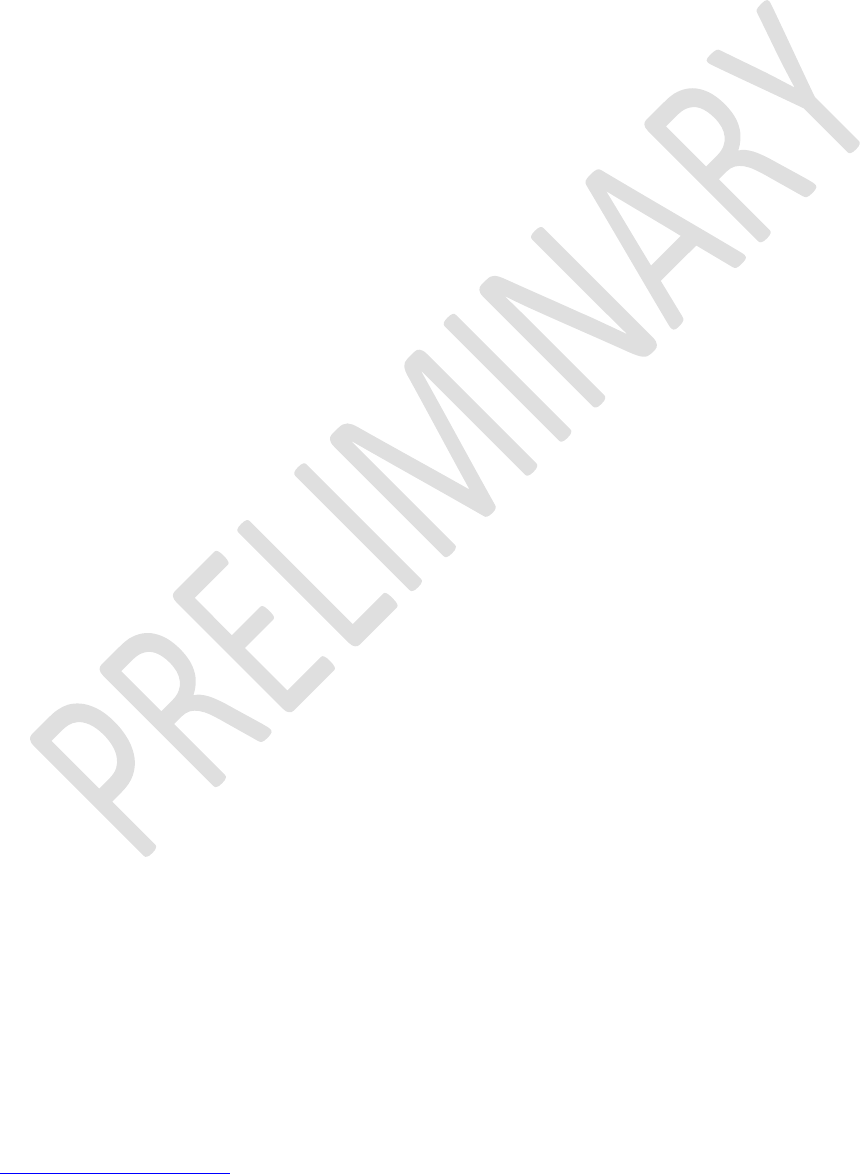
Class 1 Bluetooth v2.0 Module
User’s Guide
Americas: +1-800-492-2320 Option 2
Europe: +44-1628-858-940
Hong Kong: +852-2923-0610
www.lairdtech.com/bluetooth
92
CONN-GUIDE-BT730_v0.9
As long as 2 conditions above are met, further transmitter test will not be required. However, the OEM
integrator is still responsible for testing their end-product for any additional compliance requirements
required with this module installed.
Cet appareil est conçu uniquement pour les intégrateurs OEM dans les conditions suivantes:
(Pour utilisation de dispositif module)
1) L'antenne doit être installée de telle sorte qu'une distance de 20 cm est respectée entre l'antenne et
les utilisateurs.
2) Le module émetteur peut ne pas être coïmplanté avec un autre émetteur ou antenne.
Tant que les 2 conditions ci-dessus sont remplies, des essais supplémentaires sur l'émetteur ne seront
pas nécessaires. Toutefois, l'intégrateur OEM est toujours responsable des essais sur son produit final
pour toutes exigences de conformité supplémentaires requis pour ce module installé.
IMPORTANT NOTE:
In the event that these conditions can not be met (for example certain laptop configurations or co-location
with another transmitter), then the Canada authorization is no longer considered valid and the IC ID can
not be used on the final product. In these circumstances, the OEM integrator will be responsible for re-
evaluating the end product (including the transmitter) and obtaining a separate Canada authorization.
NOTE IMPORTANTE:
Dans le cas où ces conditions ne peuvent être satisfaites (par exemple pour certaines configurations
d'ordinateur portable ou de certaines co-localisation avec un autre émetteur), l'autorisation du Canada
n'est plus considéré comme valide et l'ID IC ne peut pas être utilisé sur le produit final. Dans ces
circonstances, l'intégrateur OEM sera chargé de réévaluer le produit final (y compris l'émetteur) et
l'obtention d'une autorisation distincte au Canada.
End Product Labeling
This transmitter module is authorized only for use in device where the antenna may be installed such that
20 cm may be maintained between the antenna and users. The final end product must be labeled in a
visible area with the following: “Contains IC: ”.
Plaque signalétique du produit final
Ce module émetteur est autorisé uniquement pour une utilisation dans un dispositif où l'antenne peut être
installée de telle sorte qu'une distance de 20cm peut être maintenue entre l'antenne et les utilisateurs. Le
produit final doit être étiqueté dans un endroit visible avec l'inscription suivante: "Contient des IC: ".
Manual Information To the End User
The OEM integrator has to be aware not to provide information to the end user regarding how to install or
remove this RF module in the user’s manual of the end product which integrates this module.
The end user manual shall include all required regulatory information/warning as show in this manual.
Manuel d'information à l'utilisateur final
L'intégrateur OEM doit être conscient de ne pas fournir des informations à l'utilisateur final quant à la façon
d'installer ou de supprimer ce module RF dans le manuel de l'utilisateur du produit final qui intègre ce
module.
Le manuel de l'utilisateur final doit inclure toutes les informations réglementaires requises et
avertissements comme indiqué dans ce manuel.
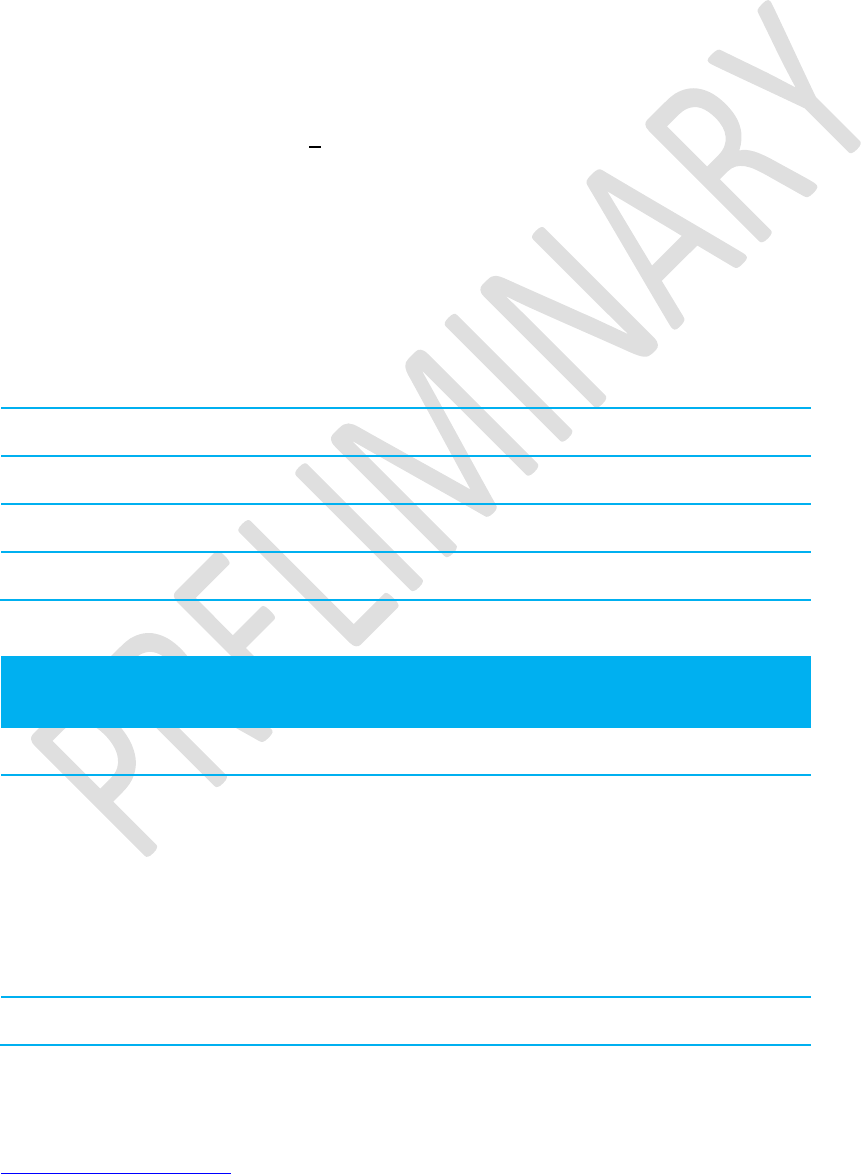
Class 1 Bluetooth v2.0 Module
User’s Guide
Americas: +1-800-492-2320 Option 2
Europe: +44-1628-858-940
Hong Kong: +852-2923-0610
www.lairdtech.com/bluetooth
93
CONN-GUIDE-BT730_v0.9
12. CE REGULATORY
The BT730 has been tested for compliance with relevant standards for the EU market. The OEM should
consult with a qualified test house before entering their device into an EU member country to make sure
all regulatory requirements have been met for their complete device.
The BT730 was tested with a 2dBi dipole antenna. The OEM is free to use any manufacturer’s antenna
and type of antenna but it must be <2dBi to remain in compliance with the Laird reports.
Reference the Declaration of Conformities listed below for a full list of the standards that the modules
were tested to. Test reports are available upon request.
13. EU DECLARATIONS OF CONFORMITY
13.1 BT730-SA
Manufacturer:
Laird Technologies
Product:
BT730-SA
EU Directive:
RTTE 1995/5/EC
Conformity Assessment:
Annex IV
Reference standards used for presumption of conformity:
Article
Number:
Requirement
Reference standard(s):
3.1a
Health and Safety
EN 60950-1:2006
3.1b
Protection requirements with
respect to electromagnetic
compatibility
EN 301 489-1 V1.8.1
EN 301 489-17 V2.1.1
Emissions:
EN55022:2006/A1:2000/A2:2006(Cla
ssB)
Immunity:
EN61000-4-2:1995/A1:1998/A2:2001
EN61000-4-3:2002/A1:2002
3.2
Means of the efficient use of
EN 300 328 V1.7.1 (2006-10)
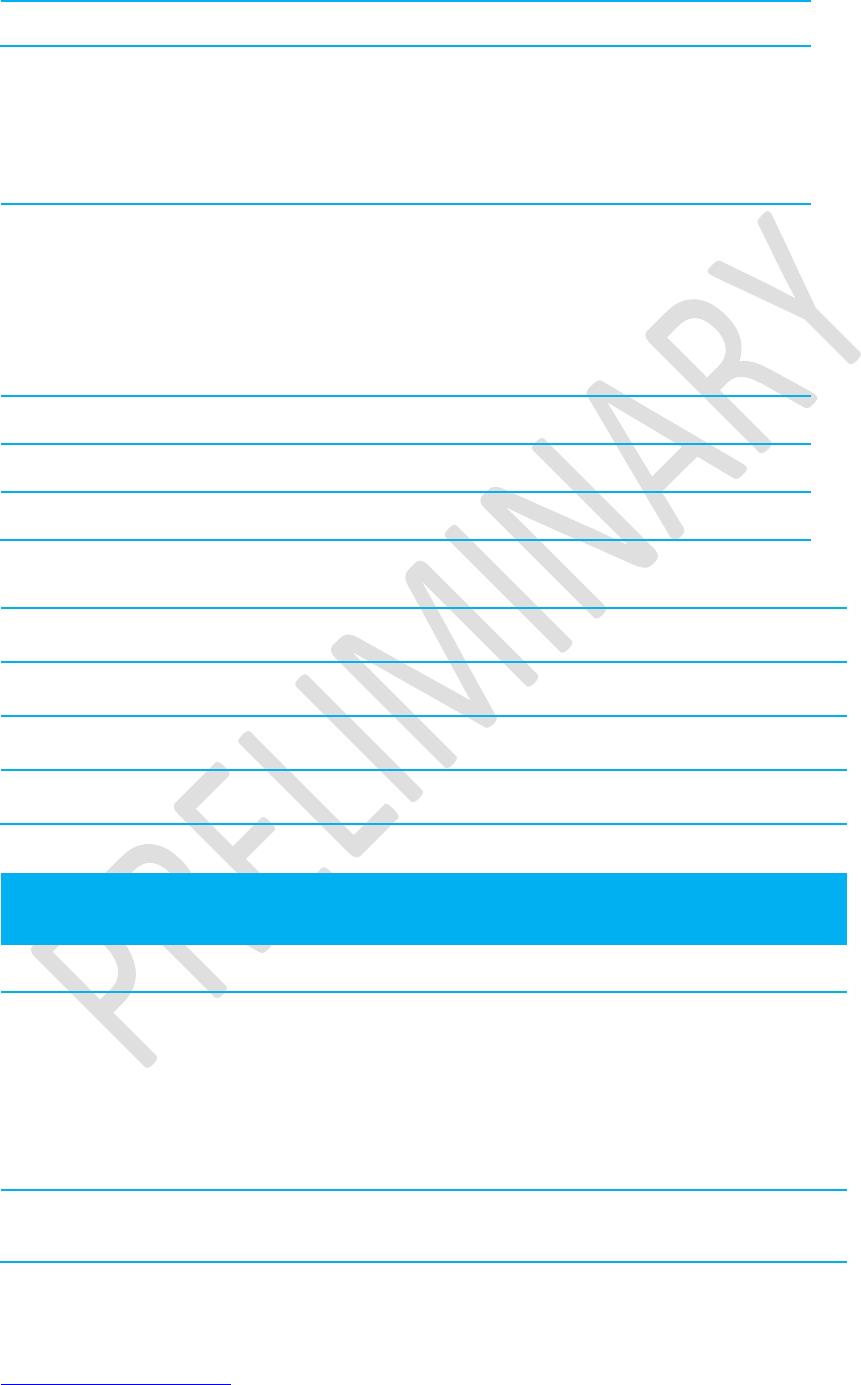
Class 1 Bluetooth v2.0 Module
User’s Guide
Americas: +1-800-492-2320 Option 2
Europe: +44-1628-858-940
Hong Kong: +852-2923-0610
www.lairdtech.com/bluetooth
94
CONN-GUIDE-BT730_v0.9
the radio frequency spectrum
Declaration:
We, Laird Technologies, declare under our sole responsibility that the essential radio test suites have
been carried out and that the above product to which this declaration relates is in conformity with all the
applicable essential requirements of Article 3 of the EU Directive 1995/5/EC, when used for its intended
purpose.
Place of Issue:
Laird Technologies
Saturn House, Mercury Park
Wooburn Green
HP100HH,
United Kingdom
tel:+44 (0)1628 858 940
fax: +44 (0)1628 528 382
Date of Issue:
June 2013
Name of Authorized Person:
Andrew Dobbing, Engineering Manager
Signature:
13.2 BT730-SC
Manufacturer:
Laird Technologies
Product:
BT730-SC
EU Directive:
RTTE 1995/5/EC
Conformity Assessment:
Annex IV
Reference standards used for presumption of conformity:
Article
Number:
Requirement
Reference standard(s):
3.1a
Health and Safety
EN 60950-1:2006
3.1b
Protection requirements with
respect to electromagnetic
compatibility
EN 301 489-1 V1.8.1
EN 301 489-17 V2.1.1
Emissions:
EN55022:2006/A1:2000/A2:2006(ClassB)
Immunity:
EN61000-4-2:1995/A1:1998/A2:2001
EN61000-4-3:2002/A1:2002
3.2
Means of the efficient use of
the radio frequency spectrum
EN 300 328 V1.7.1 (2006-10)
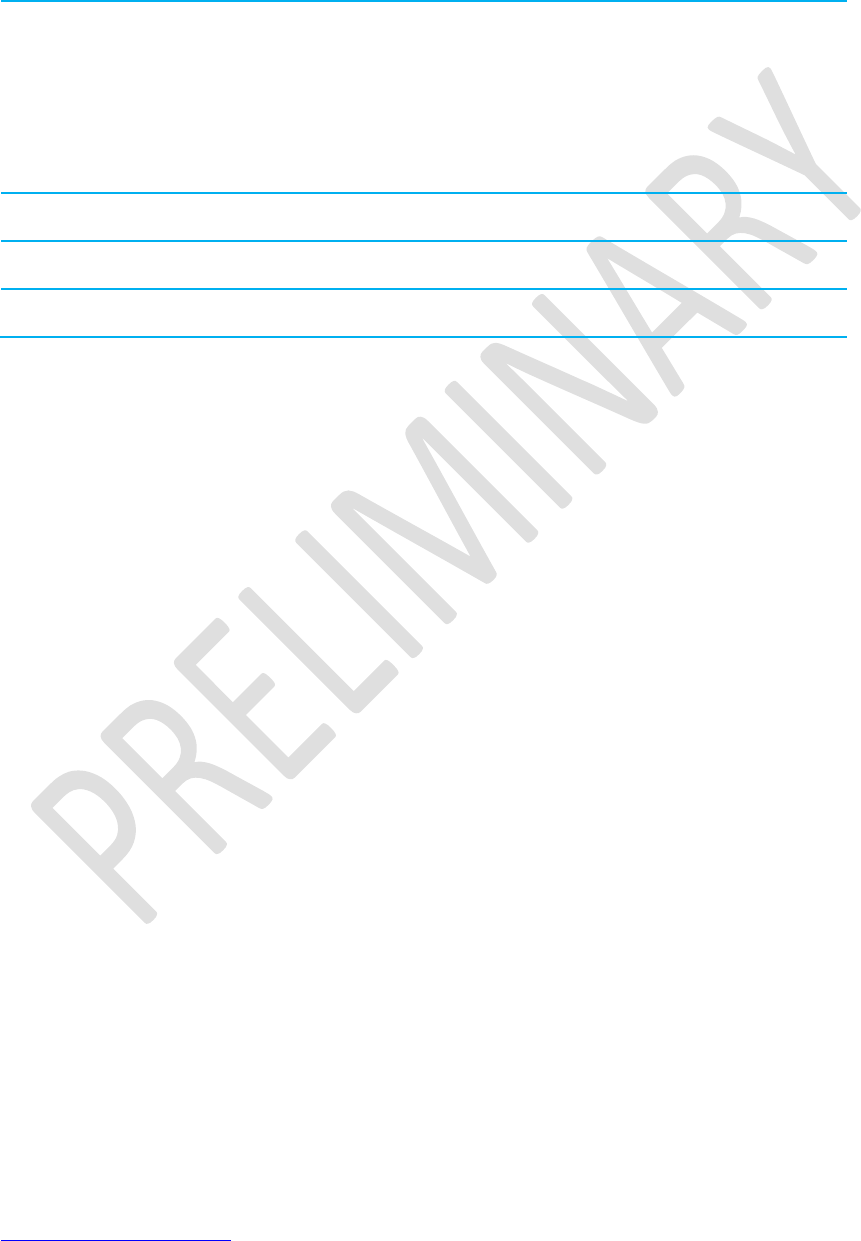
Class 1 Bluetooth v2.0 Module
User’s Guide
Americas: +1-800-492-2320 Option 2
Europe: +44-1628-858-940
Hong Kong: +852-2923-0610
www.lairdtech.com/bluetooth
95
CONN-GUIDE-BT730_v0.9
Declaration:
We, Laird Technologies, declare under our sole responsibility that the essential radio test suites have
been carried out and that the above product to which this declaration relates is in conformity with all the
applicable essential requirements of Article 3 of the EU Directive 1995/5/EC, when used for its intended
purpose.
Place of Issue:
Laird Technologies
Saturn House, Mercury Park
Wooburn Green
HP100HH,
United Kingdom
tel:+44 (0)1628 858 940
fax: +44 (0)1628 528 382
Date of Issue:
June 2013
Name of Authorized Person:
Andrew Dobbing, Engineering Manager
Signature:
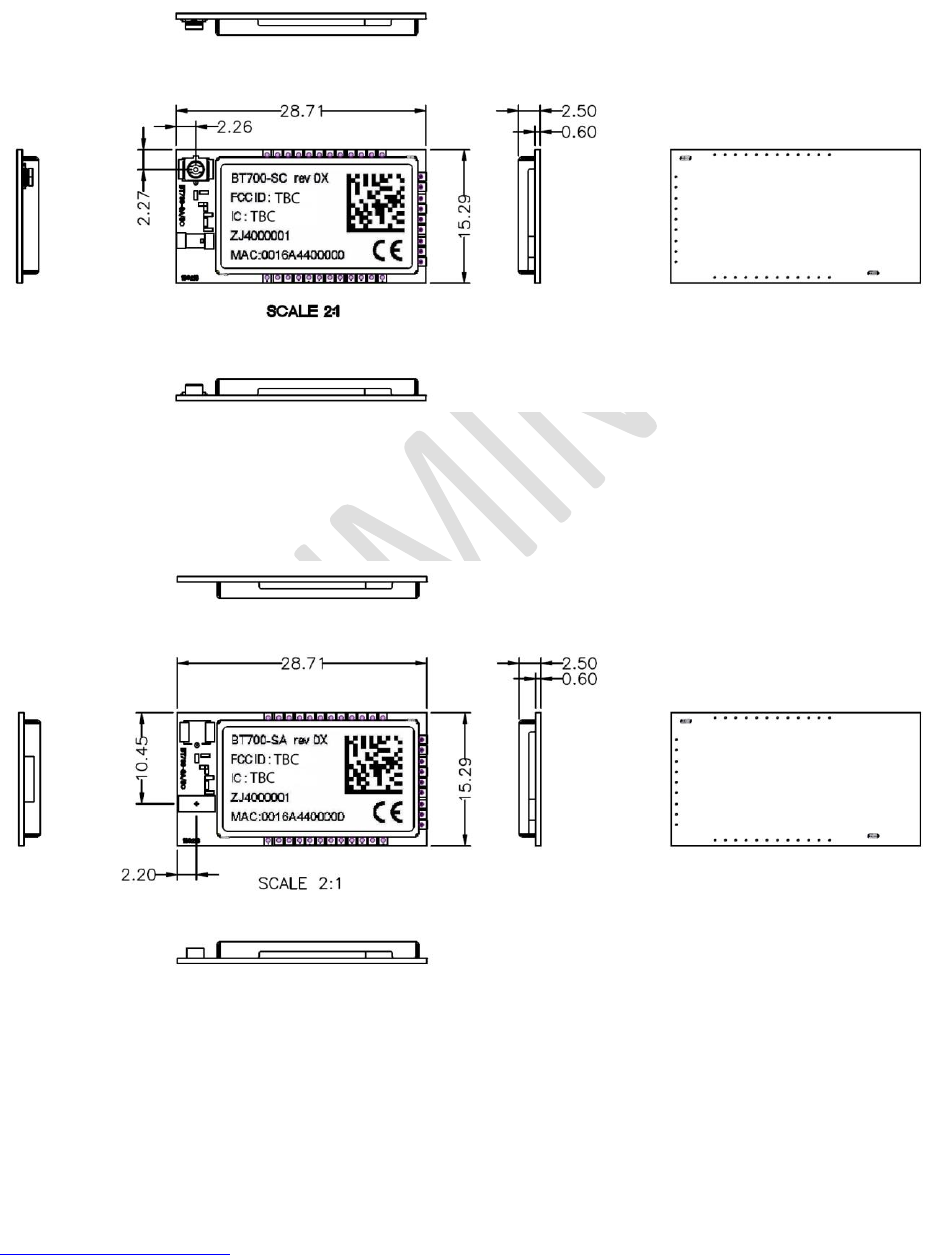
Class 1 Bluetooth v2.0 Module
User’s Guide
Americas: +1-800-492-2320 Option 2
Europe: +44-1628-858-940
Hong Kong: +852-2923-0610
www.lairdtech.com/bluetooth
96
CONN-GUIDE-BT730_v0.9
14. MECHANICAL DETAILS
BT730-SC Mechanical Details
Module Keep-Out Area: An area of 1.5mm around the module should be reserved as a keep-out
area .No other components should be placed in this area.
BT730-SA Mechanical Details
Module Keep-Out Area: An area of 1.5mm around the module should be reserved as a keep-out area.
No other components should be placed in this area.
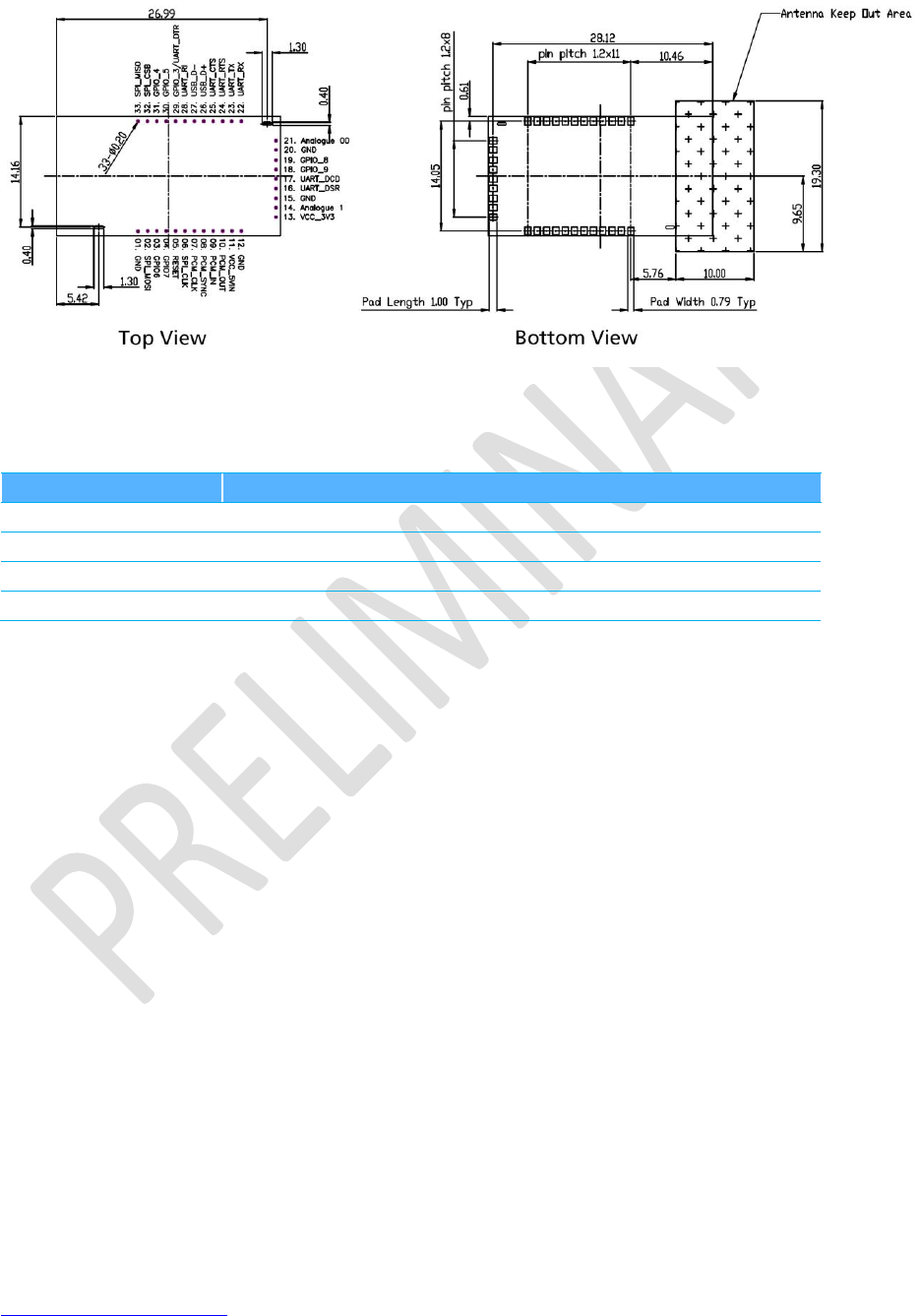
Class 1 Bluetooth v2.0 Module
User’s Guide
Americas: +1-800-492-2320 Option 2
Europe: +44-1628-858-940
Hong Kong: +852-2923-0610
www.lairdtech.com/bluetooth
97
CONN-GUIDE-BT730_v0.9
BT730 Pad Definitions – Mechanical Drawing
15. ORDERING INFORMATION
Part Number
Description
BT730-SA
Class 1 Bluetooth V2.0Module (internal antenna)
BT730-SC
Class 1 Bluetooth v2.0 Module (uFL for external antenna)
DVK – BT730-SA
Development board with BT730-SA module soldered in place
DVK – BT730-SC
Development board with BT730-SC module soldered in place
15.1 General Comments
This is a preliminary datasheet. Please check with Laird Technologies for the latest information before
commencing a design. If in doubt, ask.
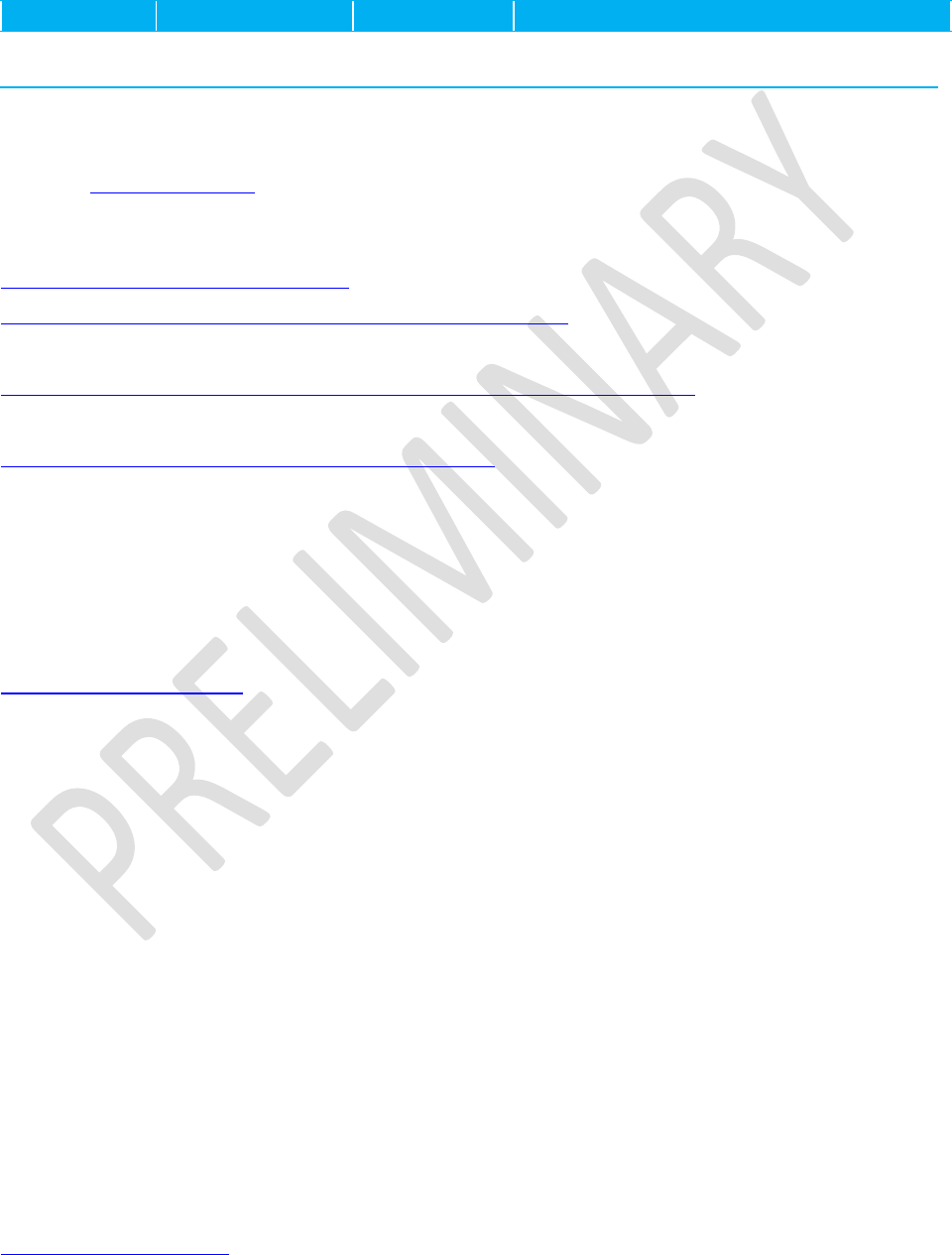
Class 1 Bluetooth v2.0 Module
User’s Guide
Americas: +1-800-492-2320 Option 2
Europe: +44-1628-858-940
Hong Kong: +852-2923-0610
www.lairdtech.com/bluetooth
98
CONN-GUIDE-BT730_v0.9
16. BLUETOOTH SIG APPROVALS
The BT730-SA and BT730-SC modules are fully Bluetooth SIG qualified as END products.
DesignName
Owner
QDID number
Link to listing on the SIG website
BT730-SA
BT730-SC
EZURiO (a unit of
Laird Technologies)
TBC
It is a mandatory requirement of the Bluetooth Special Interest Group (SIG) that every product
implementing Bluetooth technology is listed on the Bluetooth SIG End Product Listing (EPL). The EPL
process is simple and free of charge but does require registration of your company at the Bluetooth SIG
website – www.bluetooth.org
The following link provides an overview of the EPL system – the user will be required to register / login
first:
https://www.bluetooth.org/login/register/
https://www.bluetooth.org/technical/qualification/eploverview.htm
For a detailed procedure of how to make an EPL entry, please refer to the following SIG document;
https://www.bluetooth.org/docman/handlers/DownloadDoc.ashx?doc_id=71880
Additionally there is on EPL online training guide at the following link:-
https://www.bluetooth.org/events/training/epltraining.htm
In the case of Laird’sBT730-SA / BT730-SC, please search for QDID TBC in step 4 and then ‘Create New
EPL’ as per step 5.
16.1 Additional Assistance
Please contact your local sales representative for further assistance:
Laird Technologies
wirelessinfo@lairdtech.com
Americas : +1-800-492-2320 Option 2
Europe: +44-1628-858-940
Hong Kong: +852-2923-0610
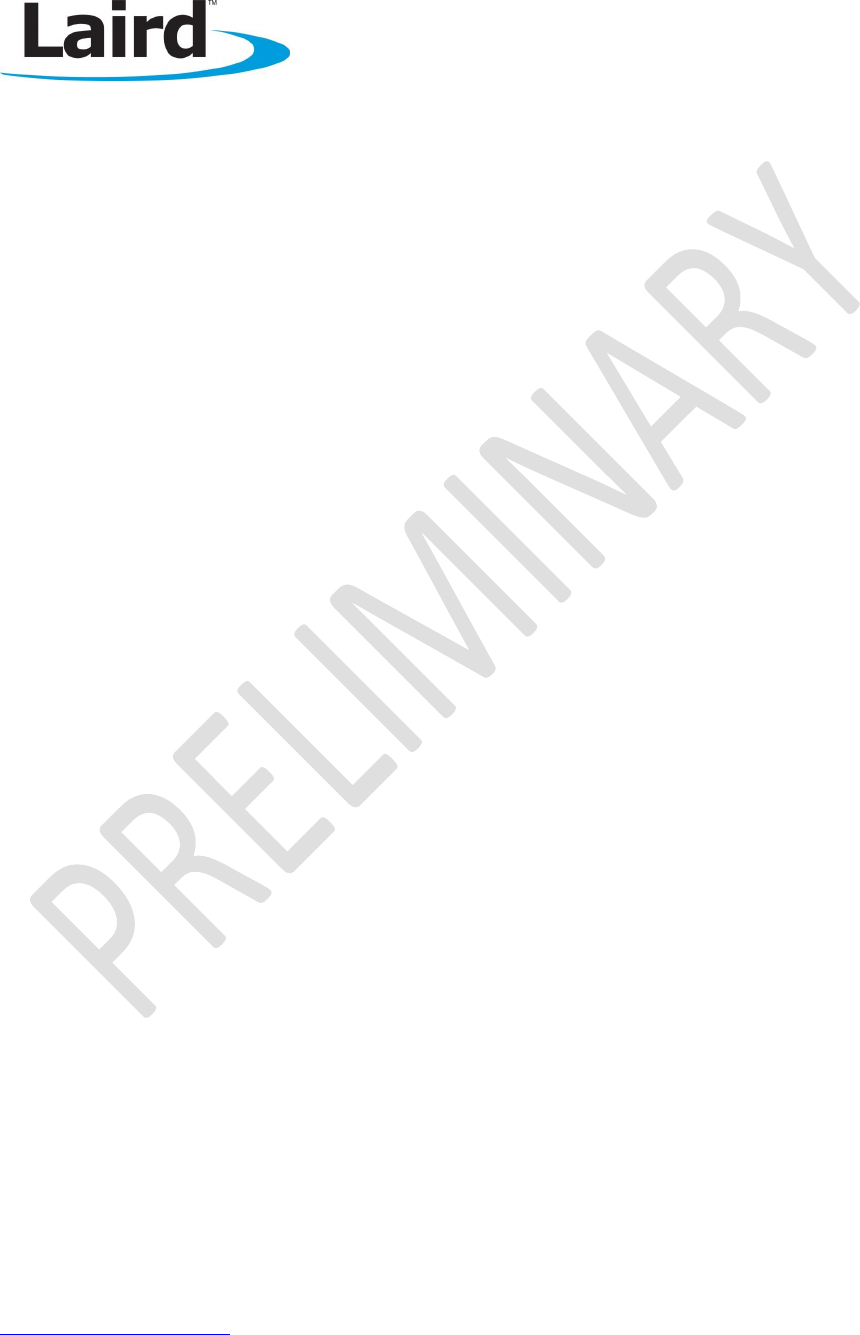
Class 1 Bluetooth v2.0 Module
User’s Guide
Americas: +1-800-492-2320 Option 2
Europe: +44-1628-858-940
Hong Kong: +852-2923-0610
www.lairdtech.com/bluetooth
99
CONN-GUIDE-BT730_v0.9
Smart Technology. Delivered.
Laird Technologies is the world leader in the design and manufacture of customized,
performance-critical products for wireless and other advanced electronics applications.
Laird Technologies partners with its customers to find solutions for applications in various
industries such as:
Network Equipment
Telecommunications
Data Communications
Automotive Electronics
Computers
Aerospace
Military
Medical Equipment
Consumer Electronics
Laird Technologies offers its customers unique product solutions, dedication
to research and development, as well as a seamless network of
manufacturing and customer support facilities across the globe.
CONN-UM-BT730_v0.9
Copyright © 2013 Laird Technologies, Inc. All rights reserved.
The information contained in this manual and the accompanying software programs are copyrighted and all rights are
reserved by Laird Technologies, Inc. Laird Technologies, Inc. reserves the right to make periodic modifications of this product
without obligation to notify any person or entity of such revision. Copying, duplicating, selling, or otherwise distributing any
part of this product or accompanying documentation/software without the prior consent of an authorized representative of
Laird Technologies, Inc. is strictly prohibited.
All brands and product names in this publication are registered trademarks or trademarks of their respective holders.
This material is preliminary
Information furnished by Laird Technologies in this specification is believed to be accurate. Devices sold by Laird Technologies
are covered by the warranty and patent indemnification provisions appearing in its Terms of Sale only. Laird Technologies
makes no warranty, express, statutory, and implied or by description, regarding the information set forth herein. Laird
Technologies reserves the right to change specifications at any time and without notice. Laird Technologies’ products are
intended for use in normal commercial and industrial applications. Applications requiring unusual environmental
requirements such as military, medical life-support or life-sustaining equipment are specifically not recommended without
additional testing for such application.
Limited Warranty, Disclaimer, Limitation of Liability
globalsolutions: local support™
USA: +1.800.492.2320
Europe: +44.1628.858.940
Asia: +852.2923-0610
wirelessinfo@lairdtech.com
www.lairdtech.com/wireless
